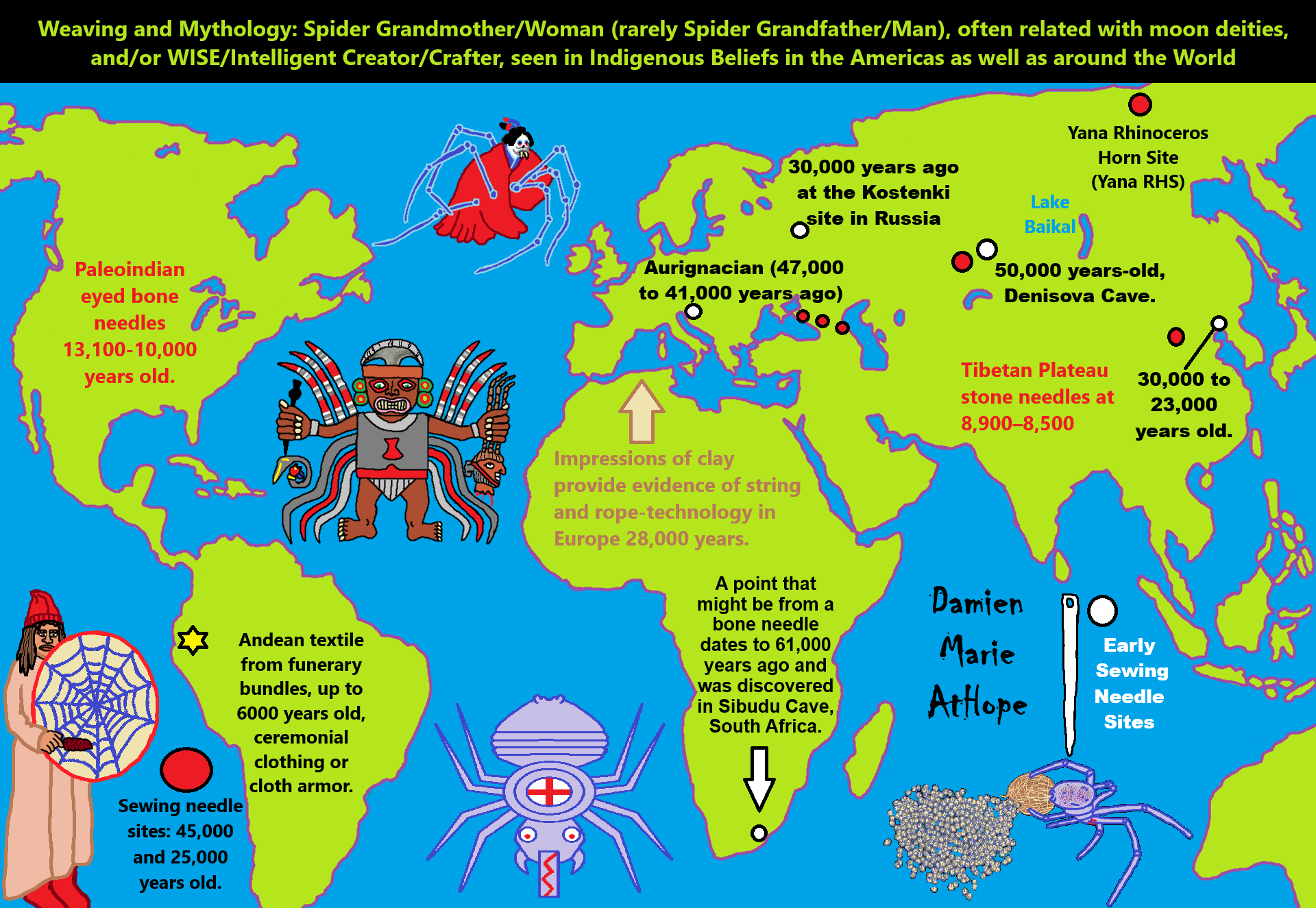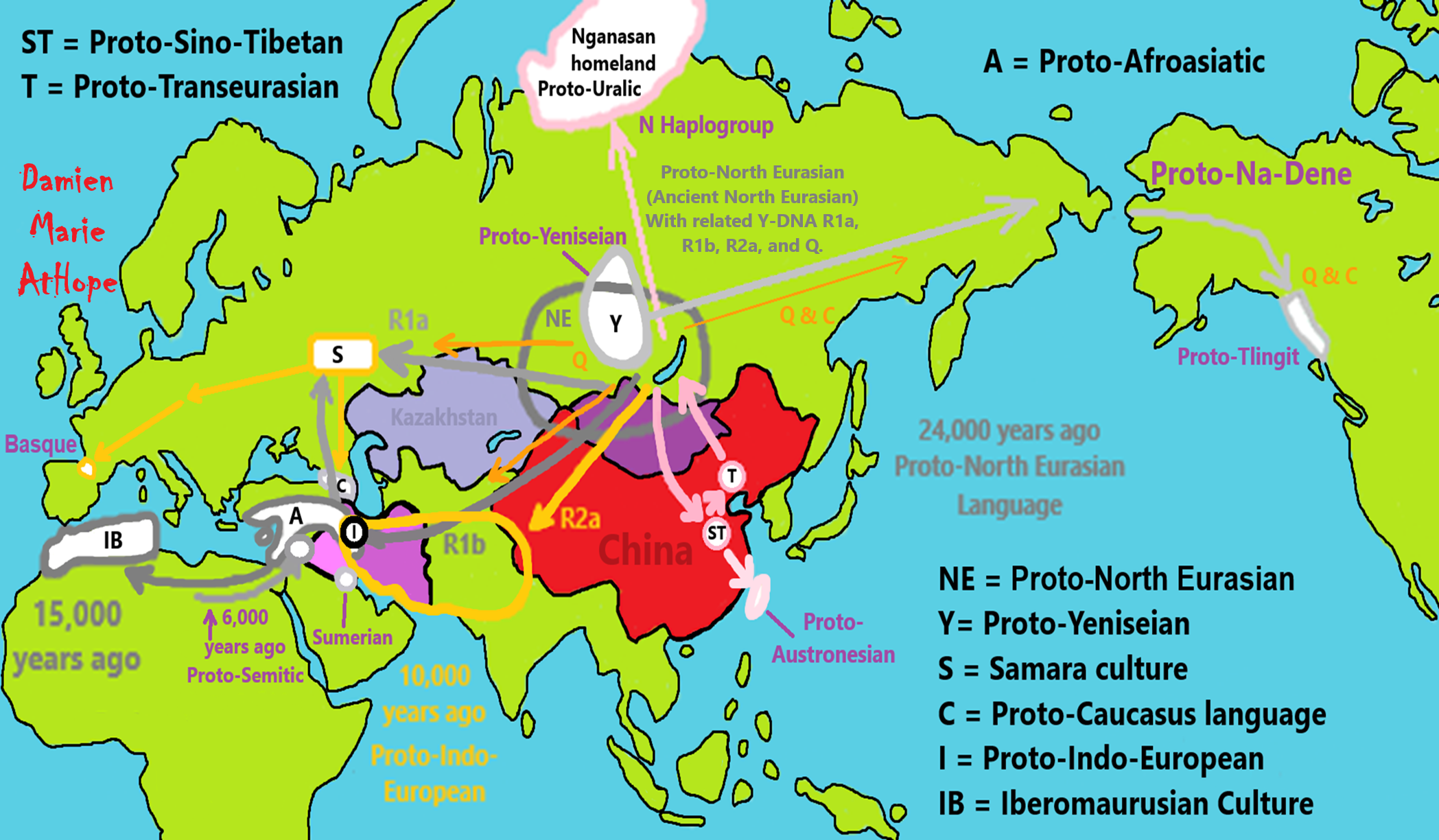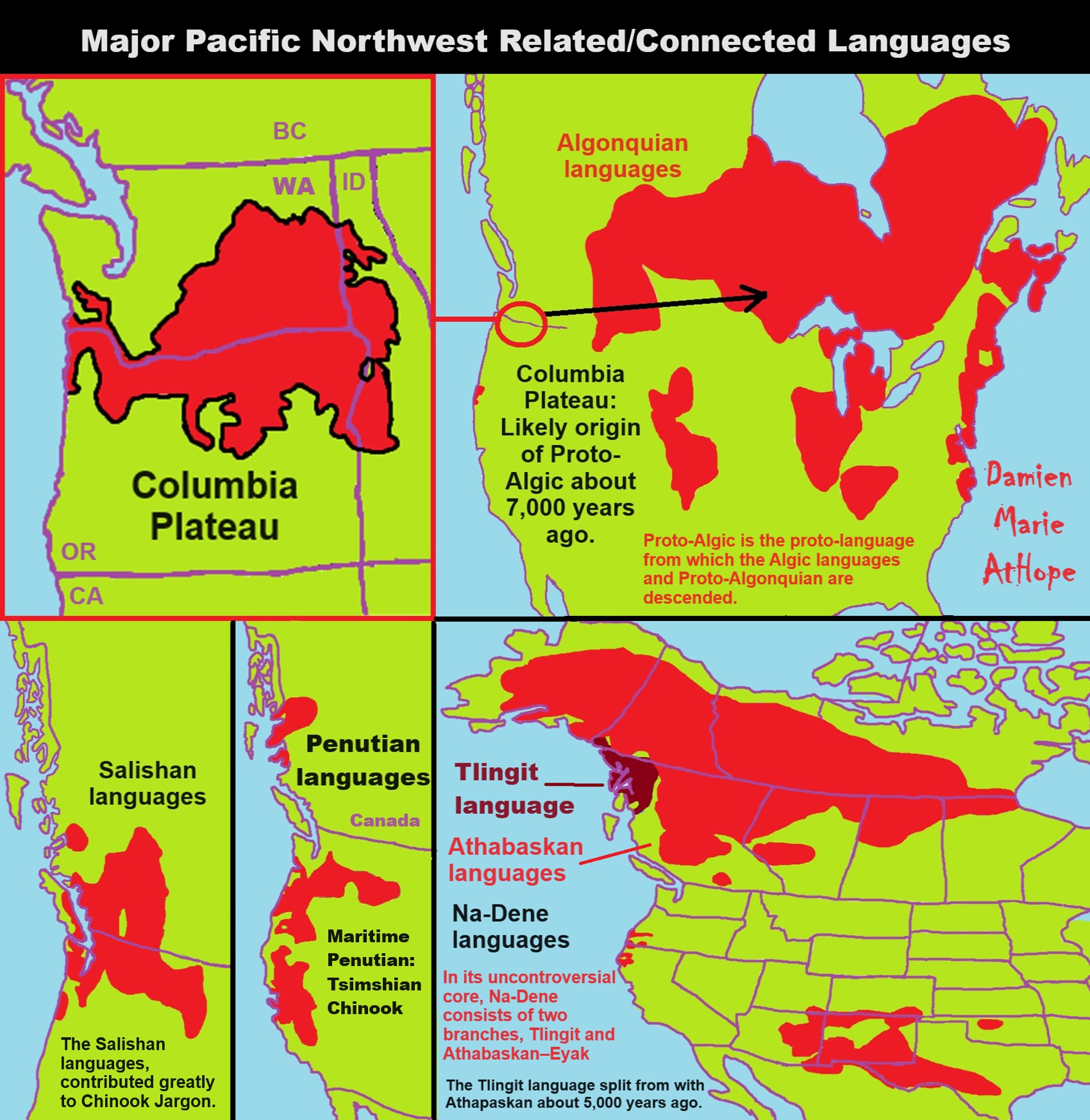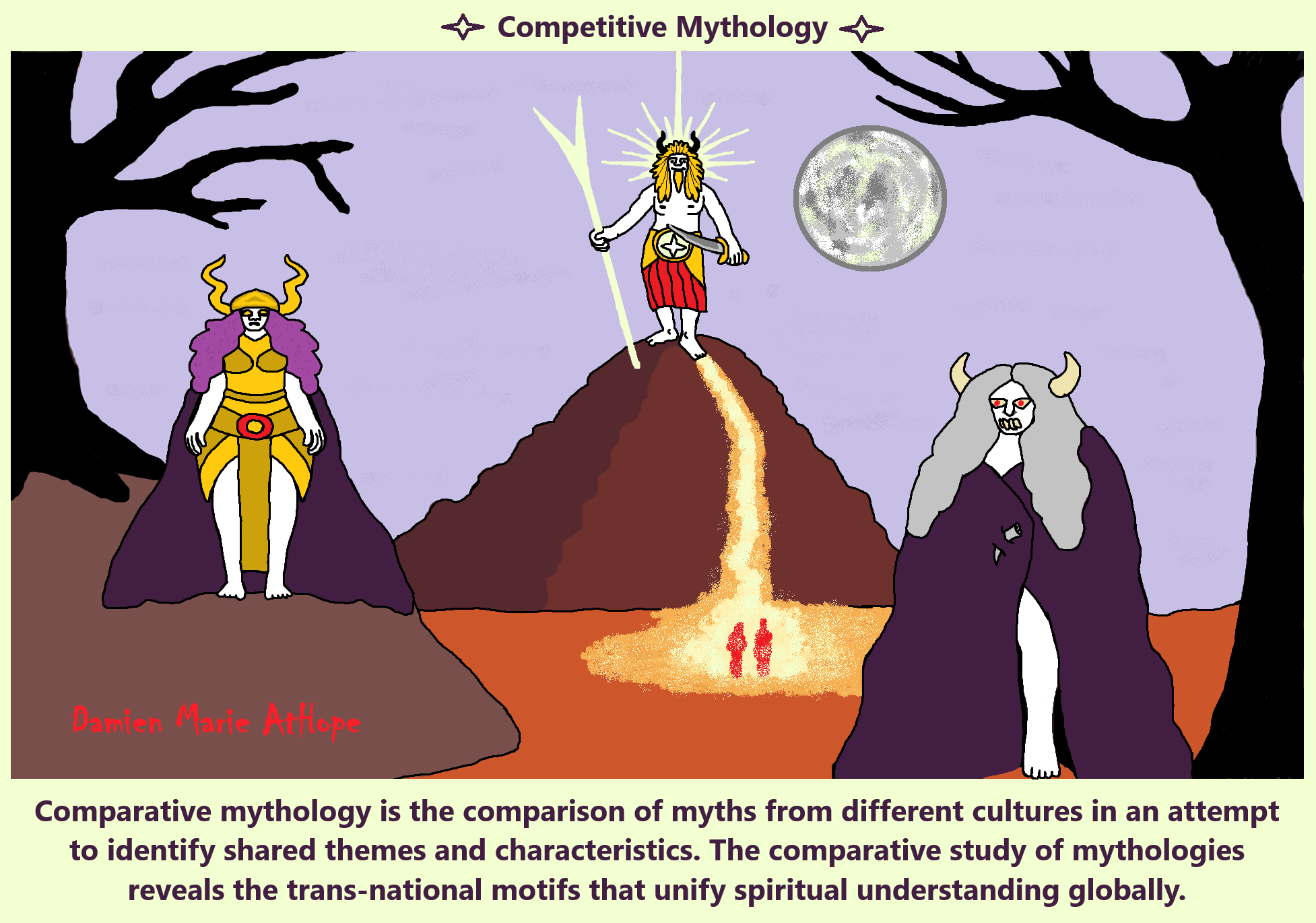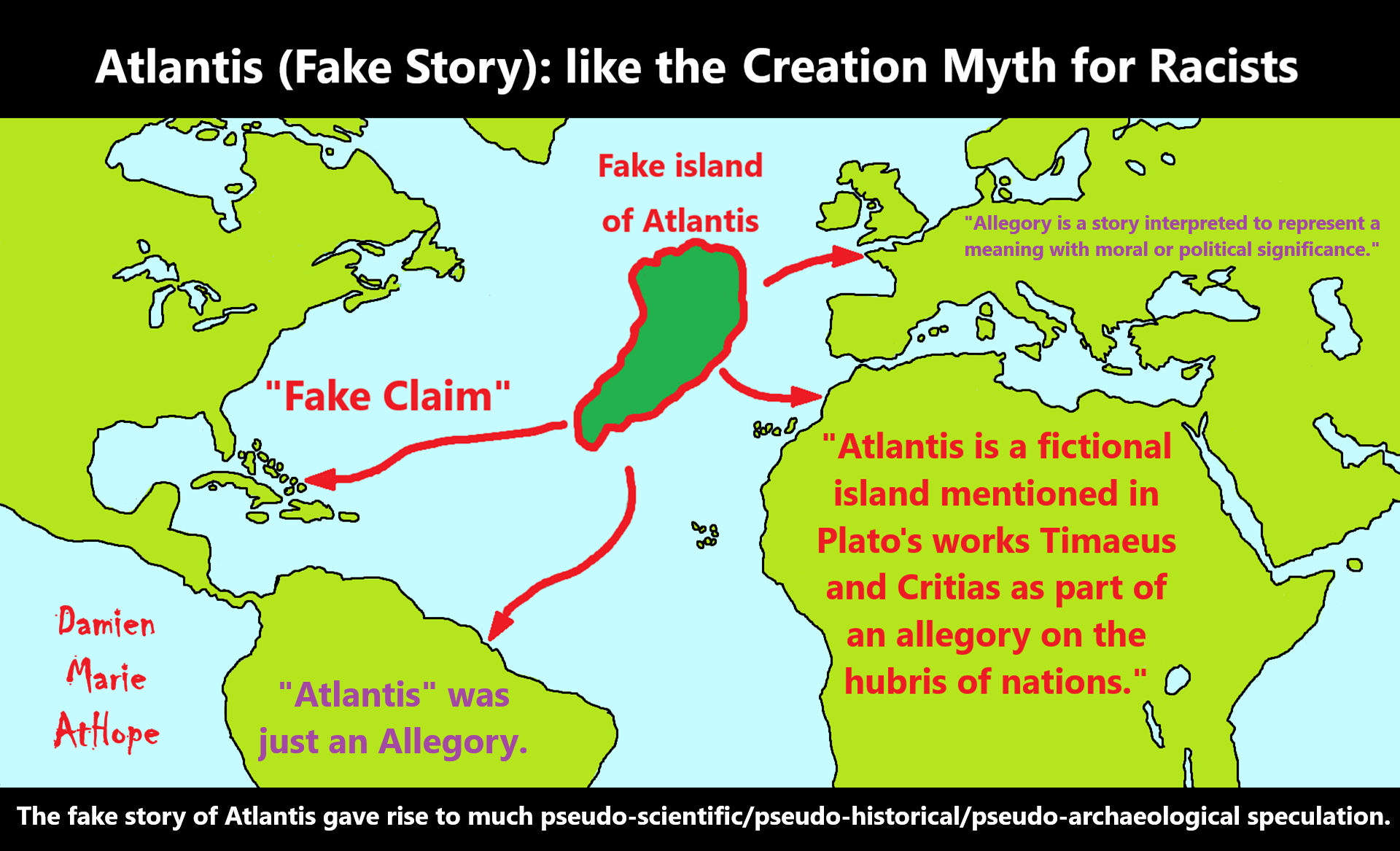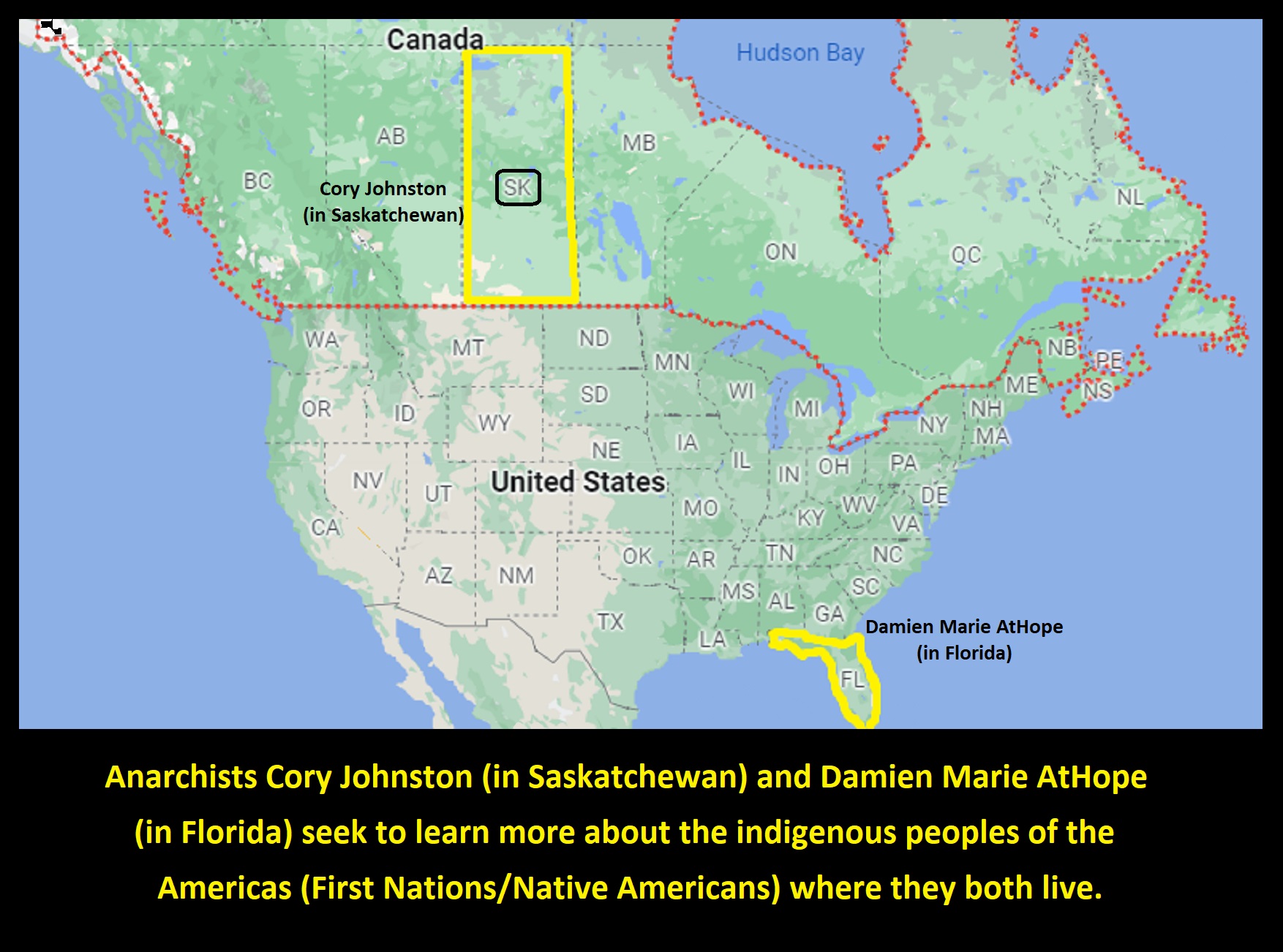
I am still researching the “god‘s origins” all over the world. So you know, it is very complicated but I am smart and willing to look, DEEP, if necessary, which going very deep does seem to be needed here, when trying to actually understand the evolution of gods and goddesses. I am sure of a few things and less sure of others, but even in stuff I am not fully grasping I still am slowly figuring it out, to explain it to others. But as I research more I am understanding things a little better, though I am still working on understanding it all or something close and thus always figuring out more.
Sky Father/Sky deities? Earth Mother/Earth deities?
“Egyptian: (Nut) Sky Mother and (Geb) Earth Father” (Egypt is different but similar)
Turkic/Mongolic: (Tengri/Tenger Etseg) Sky Father and (Eje/Gazar Eej) Earth Mother *Transeurasian*
Hawaiian: (Wākea) Sky Father and (Papahānaumoku) Earth Mother *Austronesian*
New Zealand/ Māori: (Ranginui) Sky Father and (Papatūānuku) Earth Mother *Austronesian*
Proto-Indo-European: (Dyḗus/Dyḗus ph₂tḗr) Sky Father and (Dʰéǵʰōm/Pleth₂wih₁) Earth Mother
Indo-Aryan: (Dyaus Pita) Sky Father and (Prithvi Mata) Earth Mother *Indo-European*
Italic: (Jupiter) Sky Father and (Juno) Sky Mother *Indo-European*
Etruscan: (Tinia) Sky Father and (Uni) Sky Mother *Tyrsenian/Italy Pre–Indo-European*
Hellenic/Greek: (Zeus) Sky Father and (Hera) Sky Mother who started as an “Earth Goddess” *Indo-European*
Nordic: (Dagr) Sky Father and (Nótt) Sky Mother *Indo-European*
Slavic: (Perun) Sky Father and (Mokosh) Earth Mother *Indo-European*
Illyrian: (Deipaturos) Sky Father and (Messapic Damatura’s “earth-mother” maybe) Earth Mother *Indo-European*
Albanian: (Zojz) Sky Father and (?) *Indo-European*
Baltic: (Perkūnas) Sky Father and (Saulė) Sky Mother *Indo-European*
Germanic: (Týr) Sky Father and (?) *Indo-European*
Colombian-Muisca: (Bochica) Sky Father and (Huythaca) Sky Mother *Chibchan*
Aztec: (Quetzalcoatl) Sky Father and (Xochiquetzal) Sky Mother *Uto-Aztecan*
Incan: (Viracocha) Sky Father and (Mama Runtucaya) Sky Mother *Quechuan*
China: (Tian/Shangdi) Sky Father and (Dì) Earth Mother *Sino-Tibetan*
Sumerian, Assyrian and Babylonian: (An/Anu) Sky Father and (Ki) Earth Mother
Finnish: (Ukko) Sky Father and (Akka) Earth Mother *Finno-Ugric*
Sami: (Horagalles) Sky Father and (Ravdna) Earth Mother *Finno-Ugric*
Puebloan-Zuni: (Ápoyan Ta’chu) Sky Father and (Áwitelin Tsíta) Earth Mother
Puebloan-Hopi: (Tawa) Sky Father and (Kokyangwuti/Spider Woman/Grandmother) Earth Mother *Uto-Aztecan*
Puebloan-Navajo: (Tsohanoai) Sky Father and (Estsanatlehi) Earth Mother *Na-Dene*
ref, ref, ref, ref, ref, ref, ref, ref, ref, ref, ref, ref, ref, ref, ref, ref, ref, ref, ref, ref, ref, ref, ref, ref, ref, ref, ref
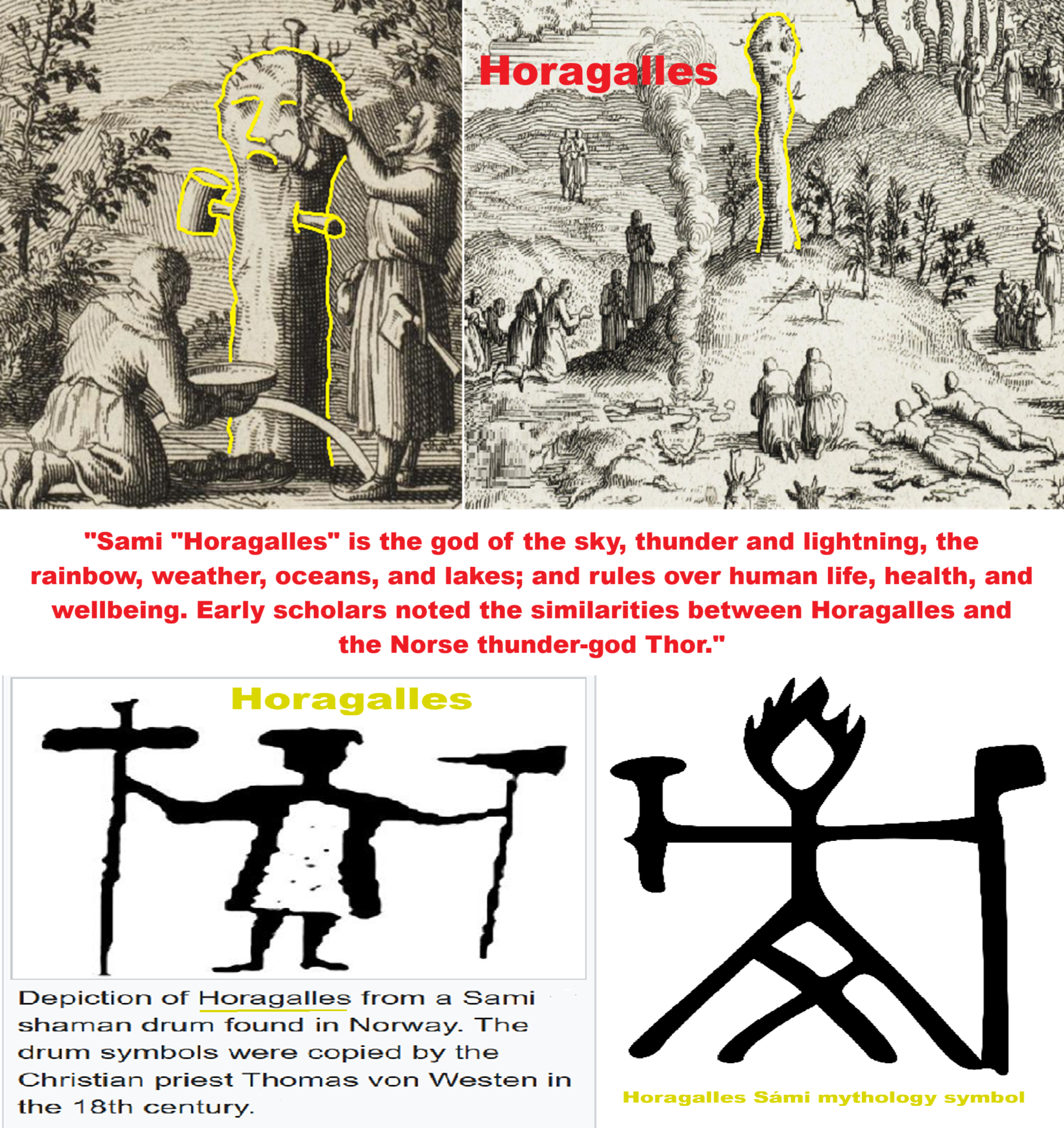
Sky Father and Earth Mother
“In comparative mythology, sky father is a term for a recurring concept in polytheistic religions of a sky god who is addressed as a “father”, often the father of a pantheon and is often either a reigning or former King of the Gods. The concept of “sky father” may also be taken to include Sun gods with similar characteristics, such as Ra. The concept is complementary to an “earth mother“. “Sky Father” is a direct translation of the Vedic Dyaus Pita, etymologically descended from the same Proto-Indo-European deity name as the Greek Zeûs Pater and Roman Jupiter, all of which are reflexes of the same Proto-Indo-European deity’s name, *Dyēus Ph₂tḗr. While there are numerous parallels adduced from outside of Indo-European mythology, there are exceptions (e.g. In Egyptian mythology, Nut is the sky mother and Geb is the earth father).” ref
“Earth deities. An Earth god or Earth goddess is a deification of the Earth associated with a figure with chthonic or terrestrial attributes. There are many different Earth gods and goddesses in many different cultures and mythology. However, Earth is usually portrayed as a goddess. Earth goddesses are often associated with the chthonic deities of the underworld. In Greek mythology, the Earth is personified as Gaia, corresponding to Roman Terra, Indic Prithvi, etc. traced to an “Earth Mother” complementary to the “Sky Father” in Proto-Indo-European religion. Egyptian mythology have the sky goddesses, Nut and Hathor, with the earth gods, Osiris and Geb. Ki and Ninhursag are Mesopotamian earth goddesses.” ref
Mother Goddess
“A mother goddess is a major goddess characterized as a mother or progenitor, either as an embodiment of motherhood and fertility or fulfilling the cosmological role of a creator- and/or destroyer-figure, typically associated the Earth, sky, and/or the life-giving bounties thereof in a maternal relation with humanity or other gods. When equated in this lattermost function with the earth or the natural world, such goddesses are sometimes referred to as the Mother Earth or Earth Mother, deity in various animistic or pantheistic religions. The earth goddess is archetypally the wife or feminine counterpart of the Sky Father or Father Heaven, particularly in theologies derived from the Proto-Indo-European sphere (i.e. from Dheghom and Dyeus). In some polytheistic cultures, such as the Ancient Egyptian religion which narrates the cosmic egg myth, the sky is instead seen as the Heavenly Mother or Sky Mother as in Nut and Hathor, and the earth god is regarded as the male, paternal, and terrestrial partner, as in Osiris or Geb who hatched out of the maternal cosmic egg.” ref
Proto-Indo-European mythology
“The Proto-Indo-European pantheon includes a number of securely reconstructed deities, since they are both cognates—linguistic siblings from a common origin—and associated with similar attributes and body of myths: such as *Dyḗws Ph₂tḗr, the daylight-sky god; his consort *Dʰéǵʰōm, the earth mother; his daughter *H₂éwsōs, the dawn goddess; his sons the Divine Twins; and *Seh₂ul and *Meh₁not, a solar deity and moon deity, respectively. Some deities, like the weather god *Perkʷunos or the herding-god *Péh₂usōn, are only attested in a limited number of traditions—Western (i.e. European) and Graeco-Aryan, respectively—and could therefore represent late additions that did not spread throughout the various Indo-European dialects.” ref
“Some myths are also securely dated to Proto-Indo-European times, since they feature both linguistic and thematic evidence of an inherited motif: a story portraying a mythical figure associated with thunder and slaying a multi-headed serpent to release torrents of water that had previously been pent up; a creation myth involving two brothers, one of whom sacrifices the other in order to create the world; and probably the belief that the Otherworld was guarded by a watchdog and could only be reached by crossing a river. Various schools of thought exist regarding possible interpretations of the reconstructed Proto-Indo-European mythology. The main mythologies used in comparative reconstruction are Indo-Iranian, Baltic, Roman, Norse, Celtic, Greek, Slavic, Hittite, Armenian, and Albanian.” ref
“The Meteorological or Naturist School holds that Proto-Indo-European myths initially emerged as explanations for natural phenomena, such as the Sky, the Sun, the Moon, and the Dawn. Rituals were therefore centered around the worship of those elemental deities. This interpretation was popular among early scholars, such as Friedrich Max Müller, who saw all myths as fundamentally solar allegories. Although recently revived by some scholars like Jean Haudry and Martin L. West, this school lost most of its scholarly support in the late nineteenth and early twentieth centuries.” ref
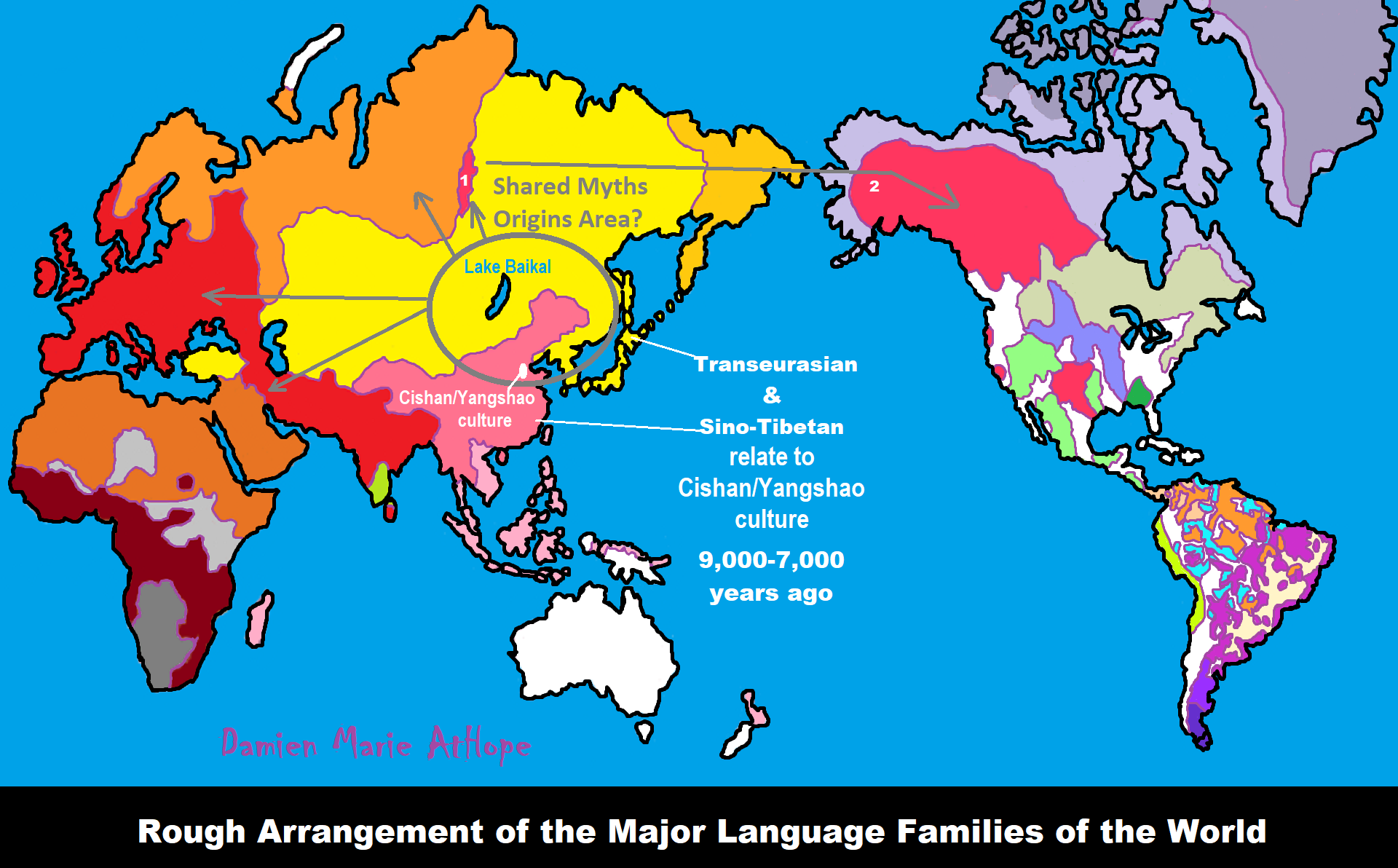
“1 central Eurasian Neolithic individual from Tajikistan (around 8,000 years ago) and approximately 8,200 years ago Yuzhniy Oleniy Ostrov group from Karelia in western Russia formed by 19 genomes affinity to Villabruna ancestry than all the other Eastern Hunter-Gatherer groups” https://www.nature.com/articles/s41586-023-05726-0

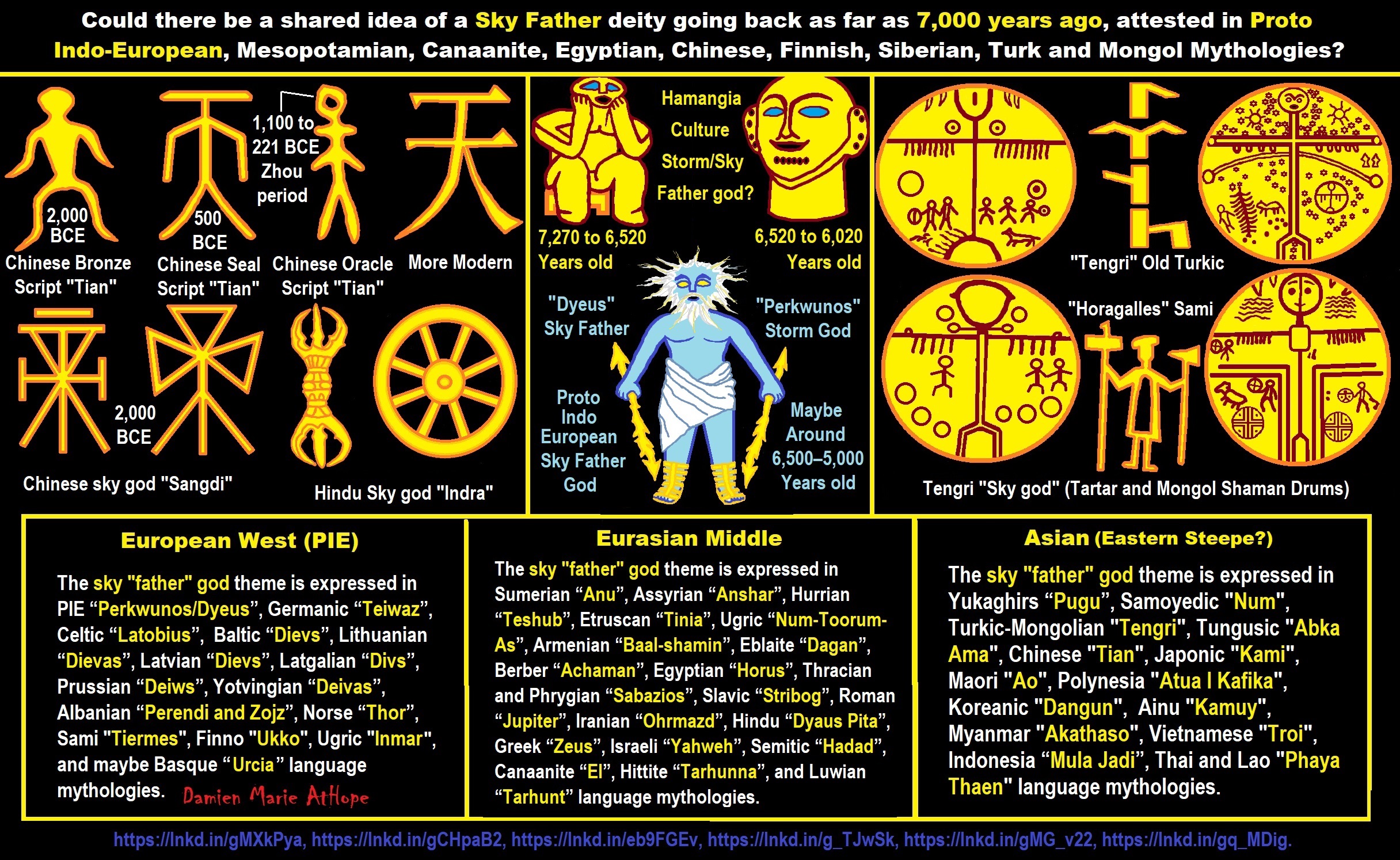
Confucianism’s Tiān (Shangdi god 4,000 years old): Supernaturalism, Pantheism or Theism?

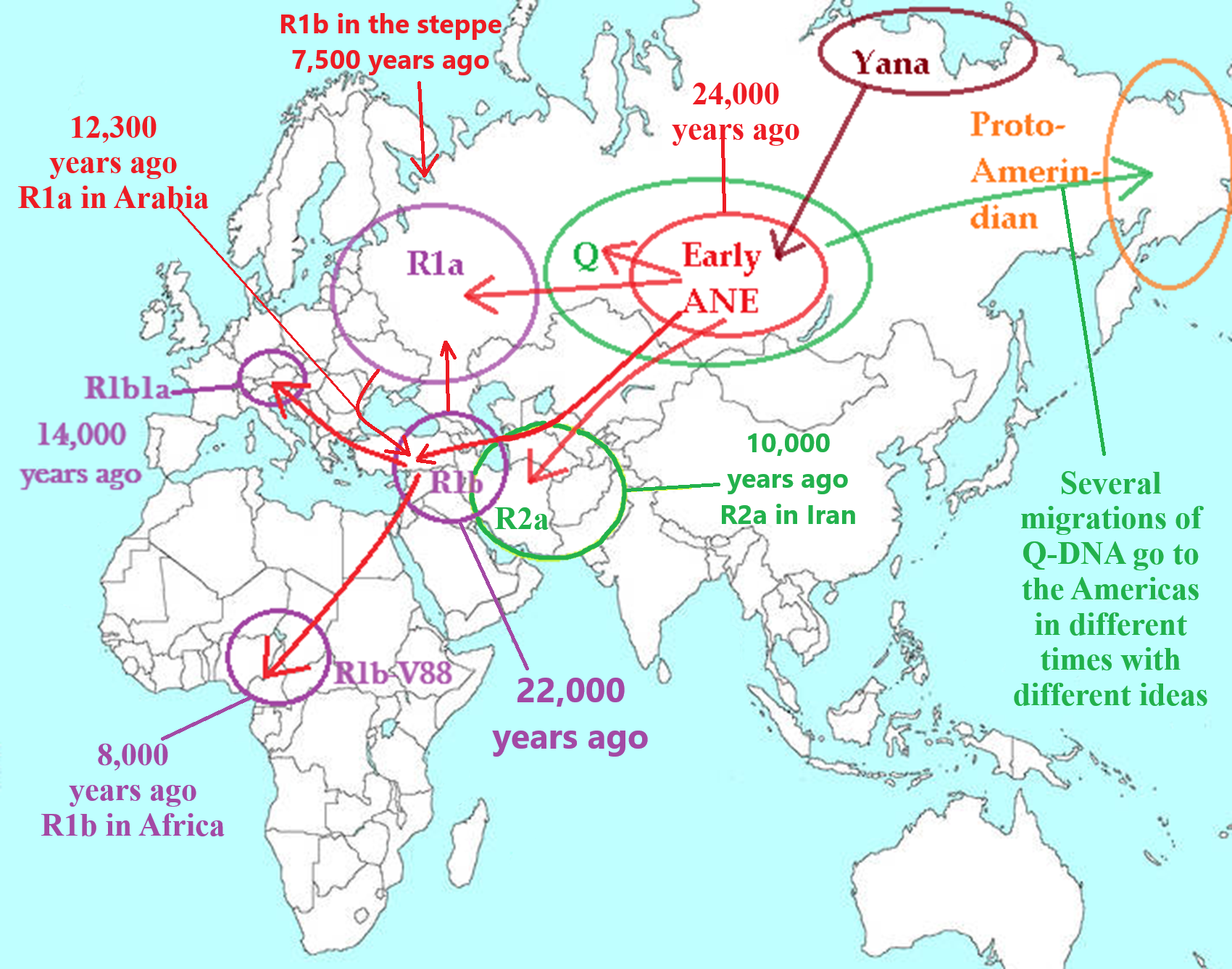
Haplogroup migrations related to the Ancient North Eurasians: I added stuff to this map to help explain.
“The human fossil remains of Afontova Gora 2, an Ancient North Eurasian genetic-related male burial with Y-DNA haplogroup Q1a1-F746, dated to 17,000 years ago, showed close genetic affinities to Mal’ta 1 (Mal’ta boy). Afontova Gora 2 also showed a greater genetic affinity for the Karitiana people (an indigenous people of Brazil) than for the Han Chinese.” ref
People reached Lake Baikal Siberia around 25,000 years ago. They (to Damien) were likely Animistic Shamanists who were also heavily totemistic as well. Being animistic thinkers they likely viewed amazing things in nature as a part of or related to something supernatural/spiritual (not just natural as explained by science): spirit-filled, a sprit-being relates to or with it, it is a sprit-being, it is a supernatural/spiritual creature, or it is a great spirit/tutelary deity/goddess-god. From there comes mythology and faith in things not seen but are believed to somehow relate or interact with this “real world” we know exists.
Both areas of Lake Baikal, one on the west side with Ancient North Eurasian culture and one on the east side with Ancient Northern East Asian culture (later to become: Ancient Northeast Asian culture) areas are the connected areas that (to Damien) are the origin ancestry religion area for many mythologies and religious ideas of the world by means of a few main migrations and many smaller ones leading to a distribution of religious ideas that even though are vast in distance are commonly related to and centering on Lake Baikal and its surrounding areas like the Amur region and Altai Mountains region.
To an Animistic Thinker: “Things are not just as they seem, they may have a spirit, or spirit energy relates to them”
To a Totemistic Thinker: “Things are not just as they seem, they may have a spirit, or spirit energy relates to them; they may have religio-cultural importance.”
“Ancient North Eurasian population had Haplogroups R, P, U, and Q DNA types: defined by maternal West-Eurasian ancestry components (such as mtDNA haplogroup U) and paternal East-Eurasian ancestry components (such as yDNA haplogroup P1 (R*/Q*).” ref


My art and when as well as who may have brought in the new elitism and compulsory authority to the Americas.
“For the Tlingit (branch of the Na-Dené language family), hereditary slavery was practiced extensively until it was outlawed by the United States. Wealth and economic power are important indicators of rank. Scientists suggest that the main ancestor of the Ainu and of the Tlingit can be traced back to Paleolithic groups in Southern Siberia.” ref
C-M217 Na-Dene and Yeniseian Languages and Religion relatedness from Asia connecting to the Americas
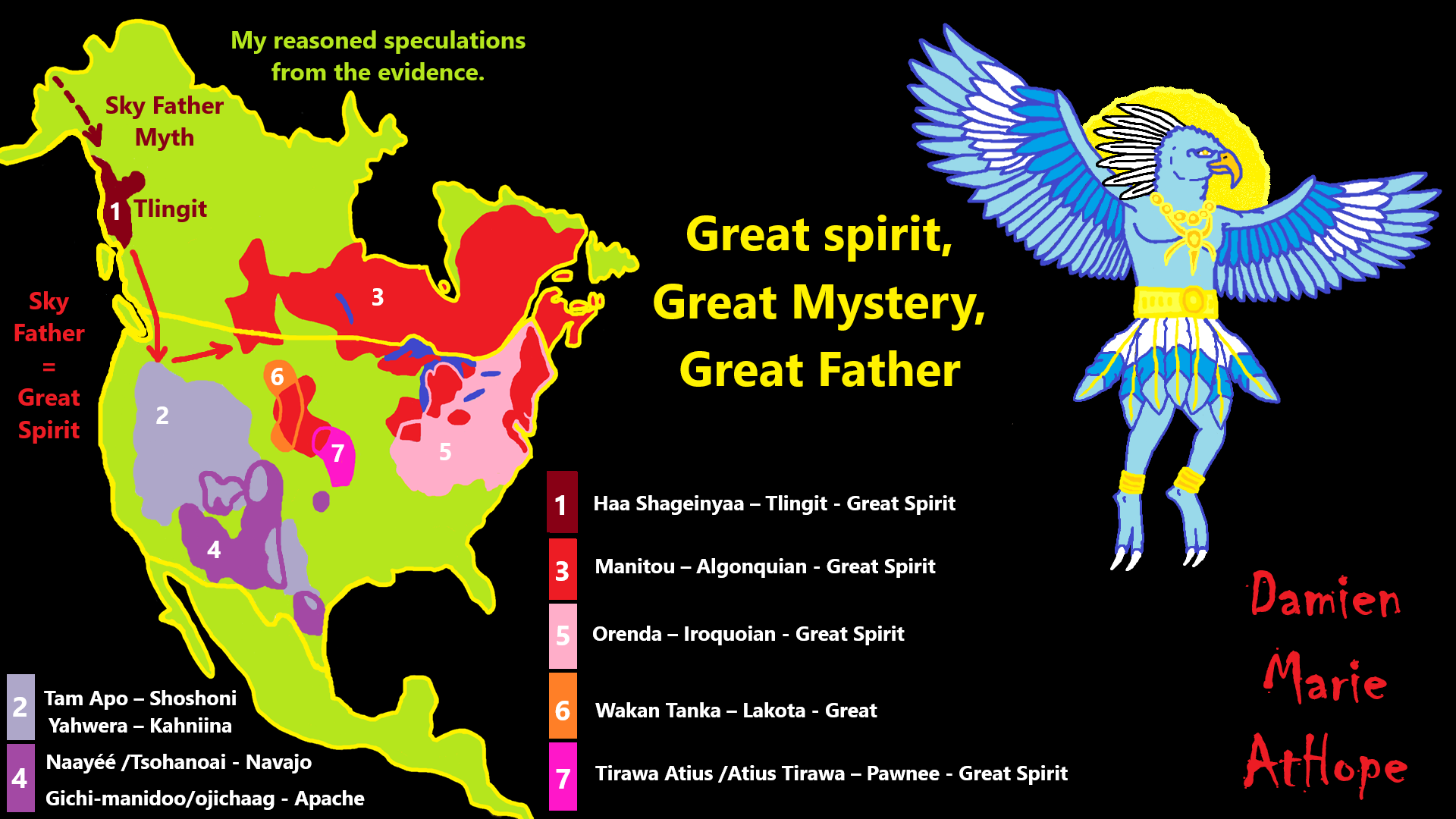
“The Great Spirt and the Evil one Native American (Navajo): the Fathers of All Fathers. The Supreme Being. The Father of the Holy People. The Great Spirit. (watches us by light like sun light or moon light) = Sky Father creator and maker to all things, corn pollen prayer are offered, sacred stone offering to, protect us by the light of the sun. The Great Spirit is a common reference among many Native American Tribes.” ref, ref
There are three types of the Great Spirit thinking (to me):
- Great Spirit (animistic type): “Great Mystery” likely no referred gender.
- Great Spirit (totemistic/shamanistic type): “Great Spirit” is likely not fully seen as a god/goddess-type spirit, it could be an animal but may have male or female gender.
- Great Spirit (paganistic type): “Great/High God” likely a male gender commonly related to the sun or blue/clear sky.
Sky Father/Sky Chief Mythology: Great spirit, Great Mystery, and Great Father
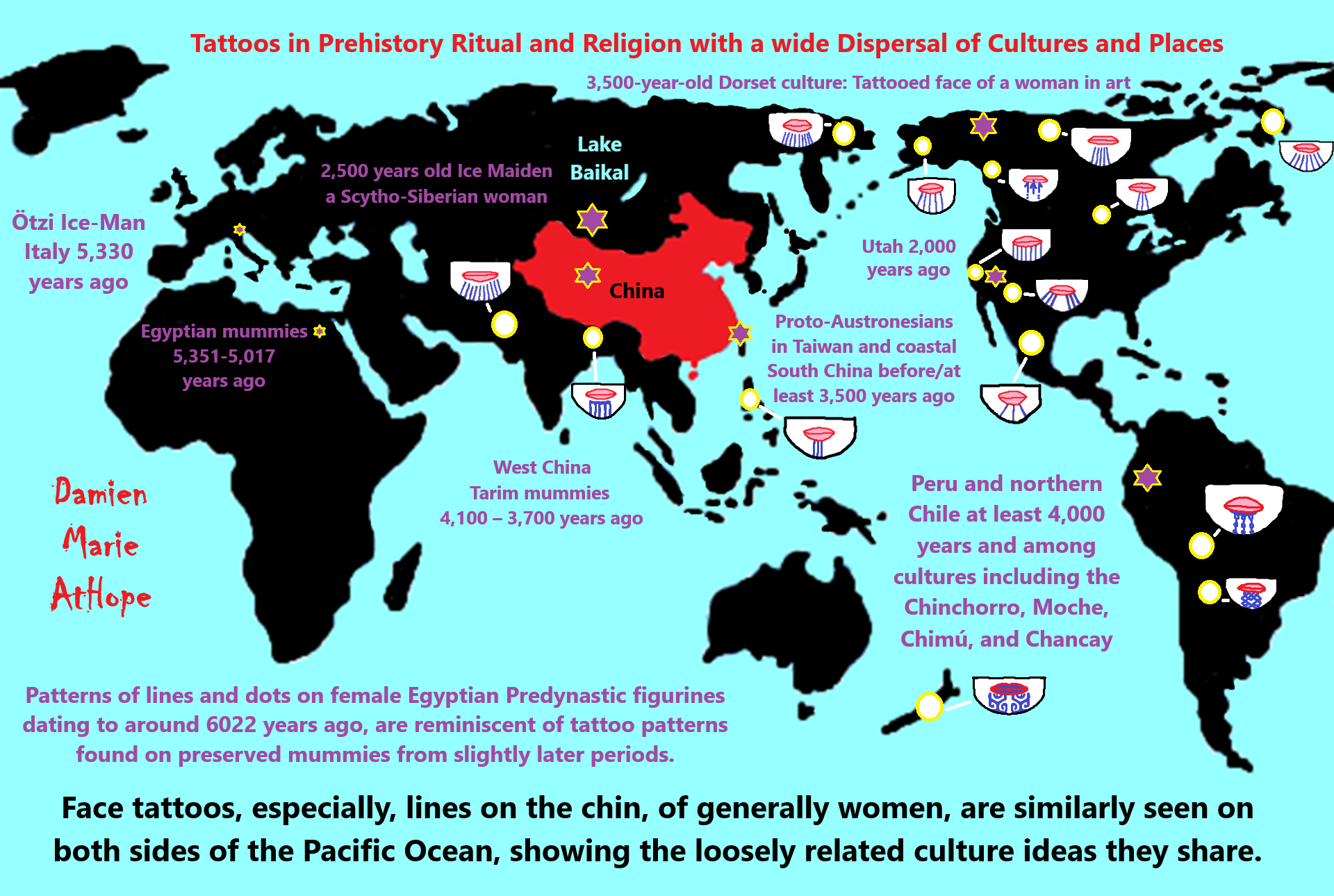
Face tattoos, especially, lines on the chin, of generally women, are similarly seen on both sides of the Pacific Ocean, showing the loosely related culture ideas they share.
Tattoos in Prehistory Ritual and Religion with a wide Dispersal of Cultures and Places

Ket people/Yeniseian languages
Tlingit people/Tlingit language/Na-Dené languages
S = Samara culture
M = Maykop culture
Nordic Bronze Age/Norse mythology
Early Dynastic Period (Egypt 3150 BCE, or around 5,150 years ago)/Ancient Egyptian religion
“Damien, spirituality is different from religion…”
My response: They are kind of different. Spirituality is a form of animism to me, and all religions have some form of animism thinking; thus, they are still similar.
“Flood myths are common across a wide range of cultures, extending back into Bronze Age and Neolithic prehistory. These accounts depict a flood, sometimes global in scale, usually sent by a deity or deities to destroy civilization as an act of divine retribution.” ref
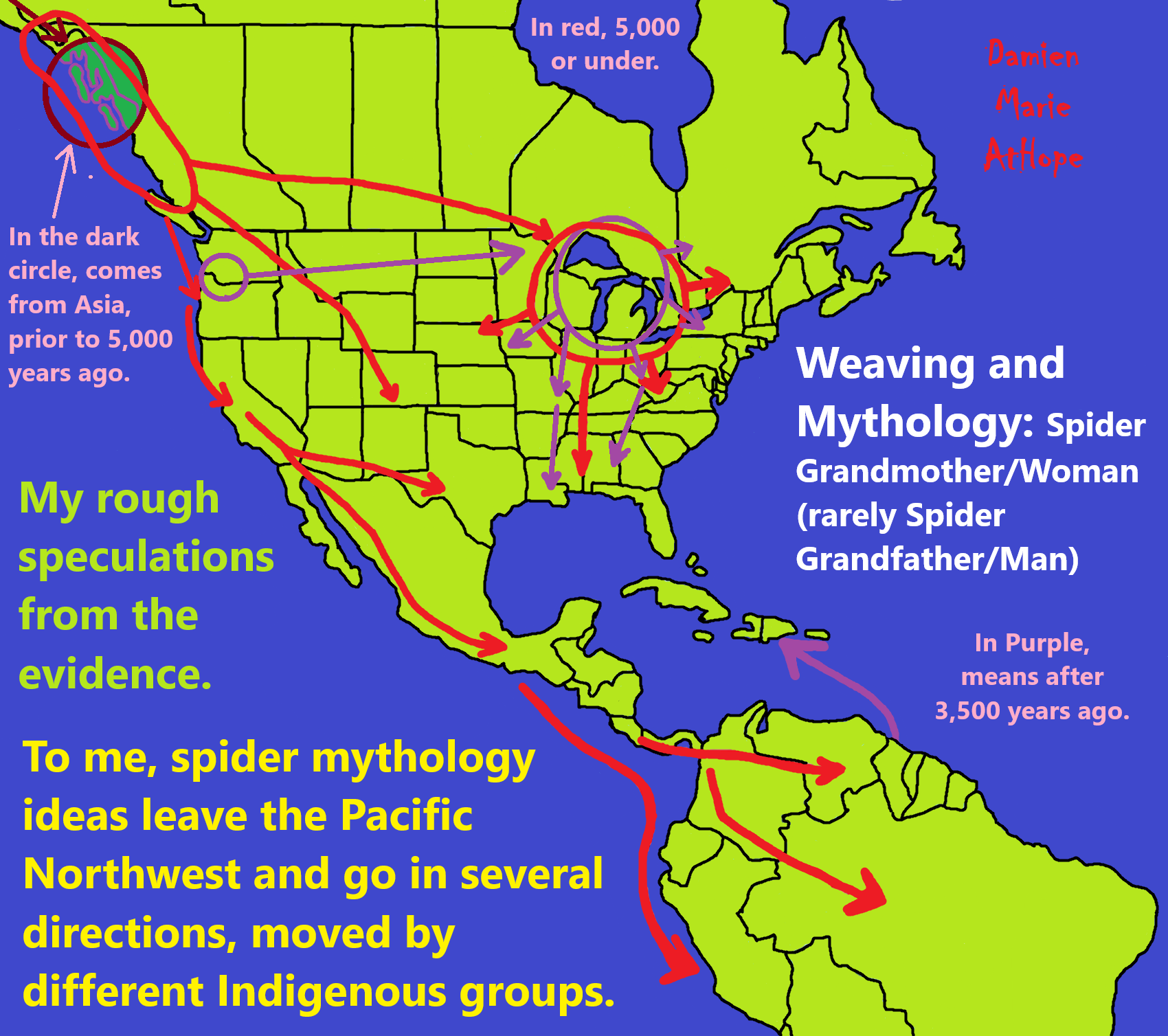
My rough speculations from the evidence:
In the dark circle, comes from Asia, prior to 5,000 years ago.
In red, around 5,000 years ago or under.
In purple, means after 3,500 years ago.
To me, spider mythology ideas leave the Pacific Northwest and go in several directions, moved by different Indigenous groups. Grandmother-Spider/Spider-Woman and Grandfather-Spider/Spider-Man.
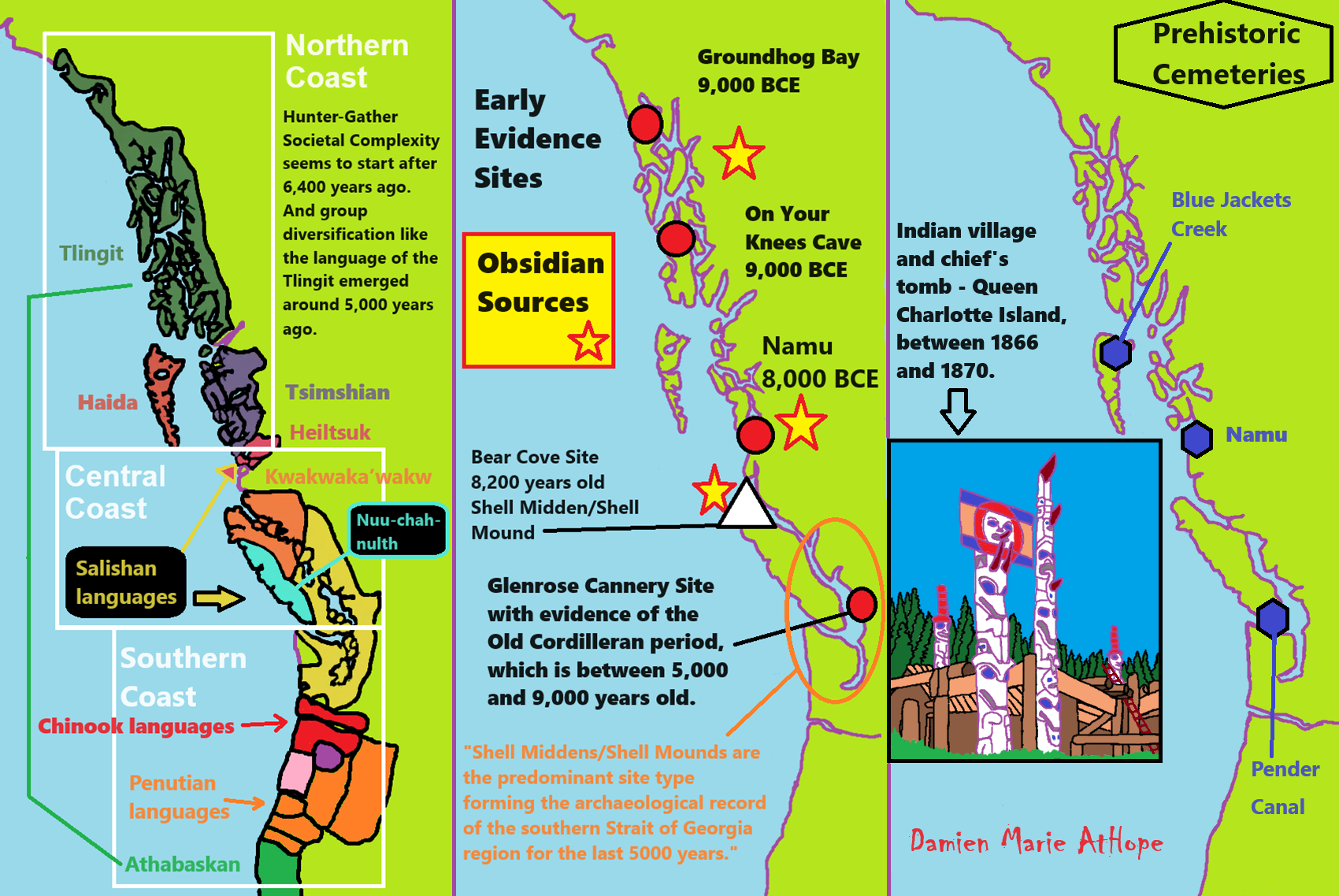
Blue Jackets Creek archaeological site
Pander Canal archaeological site

My art and when as well as who may have brought in the new elitism and compulsory authority to the Americas.
“For the Tlingit (branch of the Na-Dené language family), hereditary slavery was practiced extensively until it was outlawed by the United States. Wealth and economic power are important indicators of rank. Scientists suggest that the main ancestor of the Ainu and of the Tlingit can be traced back to Paleolithic groups in Southern Siberia.” ref
C-M217 Na-Dene and Yeniseian Languages and Religion relatedness from Asia connecting to the Americas
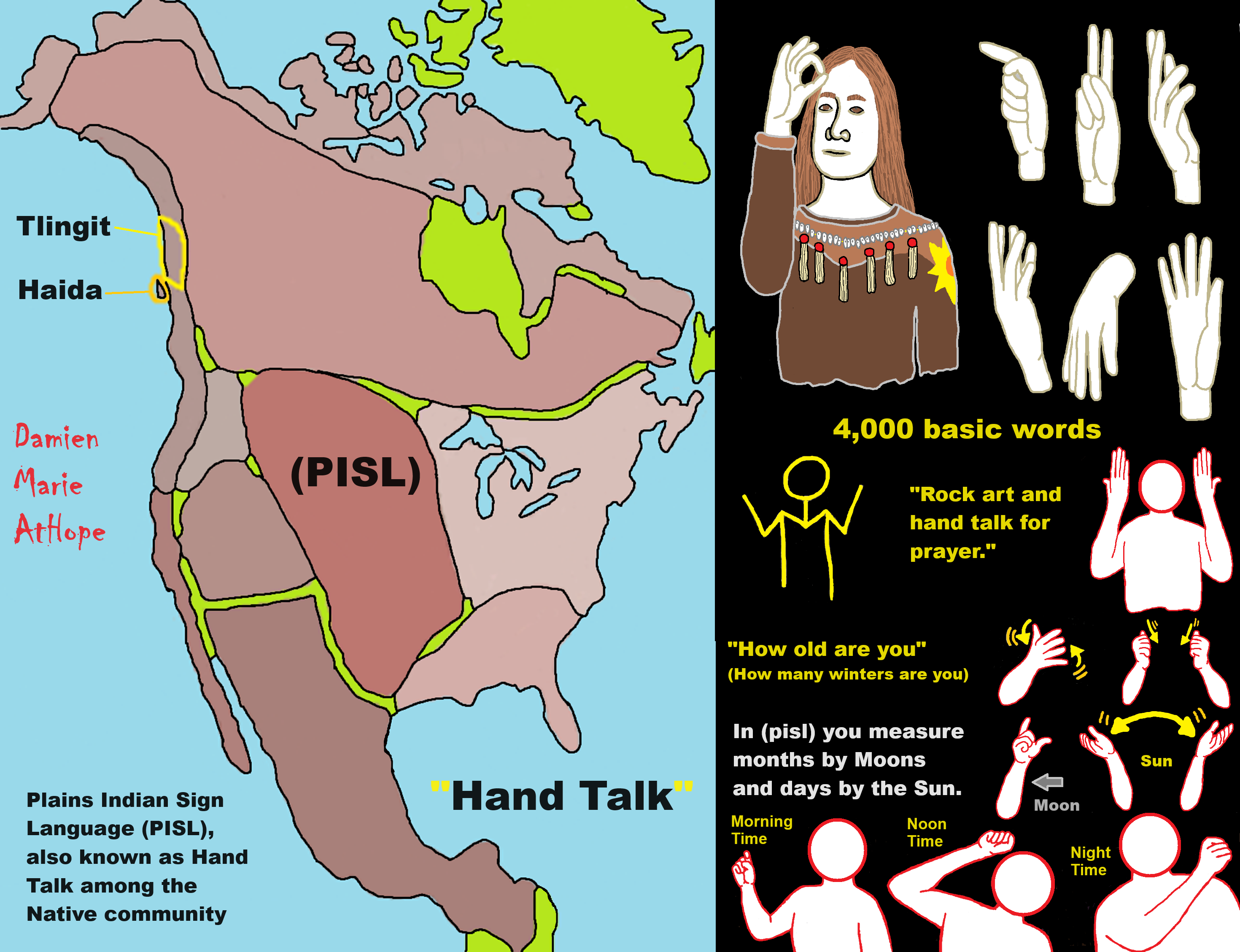
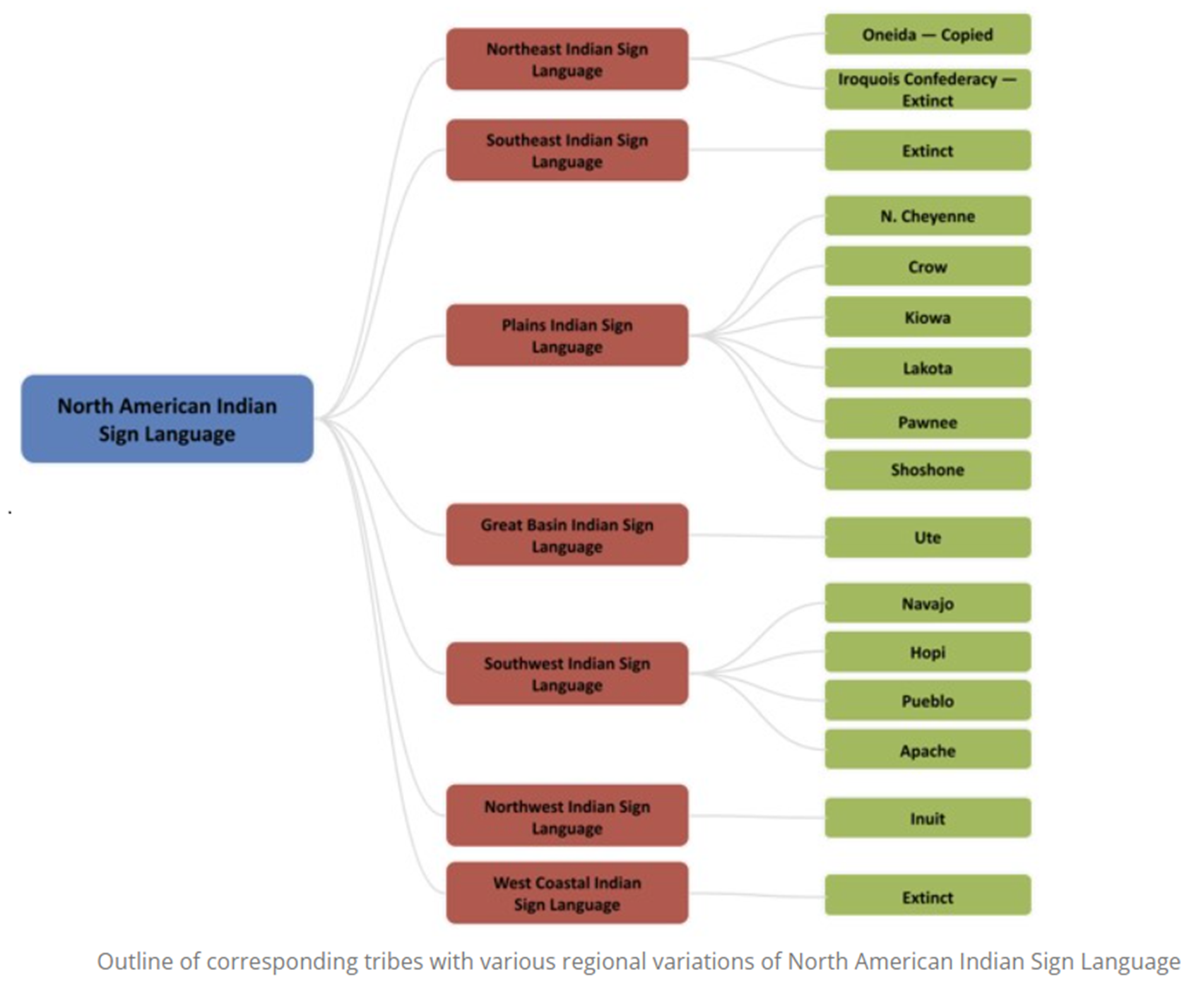
The hidden history of “Hand Talk” A North American lingua franca.
“Centuries before we had American Sign Language, Native sign languages, broadly known as “Hand Talk,” were thriving across North America. Hand Talk would be influential in the formation of American Sign Language, but it has largely been written out of history. One of these Hand Talk variations, Plains Indian Sign Language, was used so widely across the Great Plains that it became a lingua franca — a universal language used by both d/Deaf and hearing people to communicate among tribes that didn’t share a common spoken language.” ref
“At one point, tens of thousands of Indigenous people used Plains Indian Sign Language, or PISL, for everything from trade to hunting, conflict, storytelling, and rituals. But by the late 1800s, the federal government began to implement a policy that would change the course of Indigenous history forever: a boarding school program designed to forcibly assimilate Indigenous children into white American culture — a dark history that we’re still learning more about to this day.” ref
“Because of a forced “English-only” policy, the boarding school era is one of the main reasons the country lost so many Native signers — along with the eventual dominance of ASL in schools for the d/Deaf. Today, there are just a handful of fluent PISL signers left in the US. In the piece above, we hear from two of these signers, Melanie McKay-Cody and Lanny Real Bird, who have dedicated their lives to studying and revitalizing the language. They show us PISL in action and help us explore how this ancient language holds centuries of Indigenous history. This video is part of our award-winning series, Missing Chapter, now in its third season. You can watch more Missing Chapter episodes in this playlist.” ref
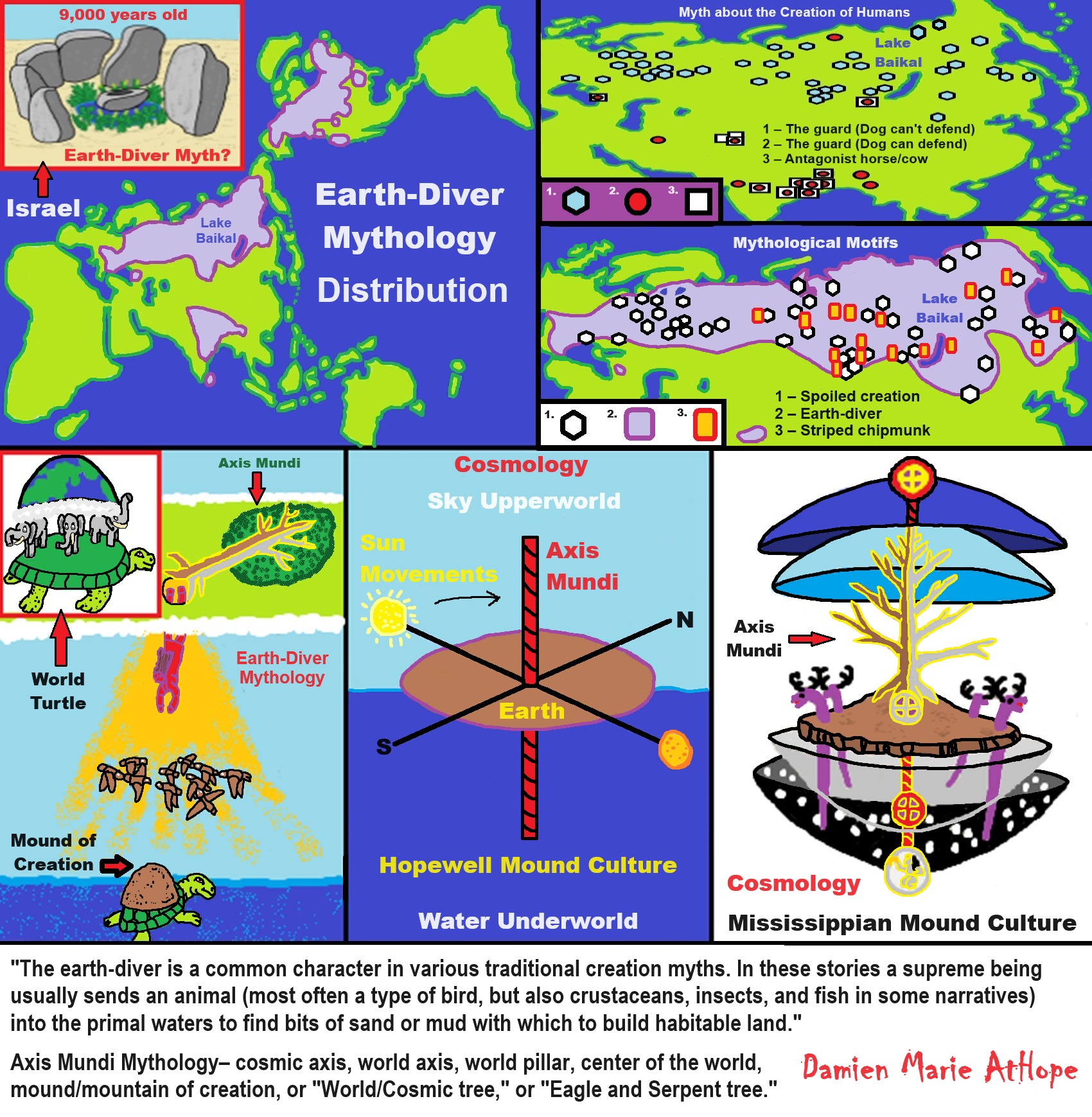
ref, ref, ref, ref, ref, ref, ref, ref, ref, ref, ref
“The earth-diver is a common character in various traditional creation myths. In these stories, a supreme being usually sends an animal (most often a type of bird, but also crustaceans, insects, and fish in some narratives) into the primal waters to find bits of sand or mud with which to build habitable land.” ref
Axis Mundi Mythology– cosmic axis, world axis, world pillar, center of the world, mound/mountain of creation, or “World/Cosmic tree,” or “Eagle and Serpent tree.” ref, ref
“The World Turtle, also called the Cosmic Turtle or the World-bearing Turtle, is a mytheme of a giant turtle (or tortoise) supporting or containing the world. It occurs in Hindu mythology, Chinese mythology, and the mythologies of some of the indigenous peoples of the Americas.” ref
“Chucalissa, Mississippian culture Mounds in Memphis, art shows all the elements involved in the Path of Souls death journey, a widely held belief system among the mound builders of America.” ref
“Interpretation of southeastern Native cosmology, showing the tripartite division of the world. The axis mundi is depicted as a tree or post connecting the fire symbol of this world, the sun symbol of the upper world, and the ‘swastika’ symbol of the lower world.” ref
“It should be remembered that the Mississippian culture that built Cahokia may have considered a cedar tree or a striped cedar pole to be a symbol of the Axis Mundi (also called the cosmic axis, world axis, world pillar, the center of the world, or world tree – has been greatly extended to refer to any mythological concept representing “the connection between Heaven and Earth” or the “higher and lower realms), the pillar connecting the above, middle, & below worlds, & around which the cosmos turns An American Yggdrasil (Norse tree of life). Some work has gone into reconstructing the woodhenge, and it is one of the sites around Cahokia that you can visit today. (The Solar Calendar of Woodhenge in Cahokia | Native America: Cities of the Sky).” – Vulpine Outlaw @Rad_Sherwoodism
“Items adduced as examples of the axis mundi by comparative mythologists include plants (notably a tree but also other types of plants such as a vine or stalk), a mountain, a column of smoke or fire, or a product of human manufacture (such as a staff, a tower, a ladder, a staircase, a maypole, a cross, a steeple, a rope, a totem pole, a pillar, a spire). Its proximity to heaven may carry implications that are chiefly religious (pagoda, temple mount, minaret, church) or secular (obelisk, lighthouse, rocket, skyscraper). The image appears in religious and secular contexts. The axis mundi symbol may be found in cultures utilizing shamanic practices or animist belief systems, in major world religions, and in technologically advanced “urban centers.” ref
Do we know what the symbols represent?
“Yes. It’s a bit more than I’d want to post on TwiX right now. It’s showing the 3-part universe, an upper, lower, and middle world, & the Milky Way is shown as well as Orion the Hand Constellation, Scorpius the ruler of the underworld, and Cygnus, the Judge. Also the main powers of the upper & lower worlds.” – Gregory L Little, Ed.D. @DrGregLittle2
Gregory L Little, Ed.D. BA/MS Psychology, Ed.D. Counseling/Ed. Psych Author since ’84 (70+ books/workbooks). Mound Builder Society: Be Kind; Respect Everything; Honor the Ancient Ones.

“Turtle Island is a name for Earth or North America, used by some American Indigenous peoples, as well as by some Indigenous rights activists. The name is based on a creation myth common to several indigenous peoples of the Northeastern Woodlands of North America.” ref
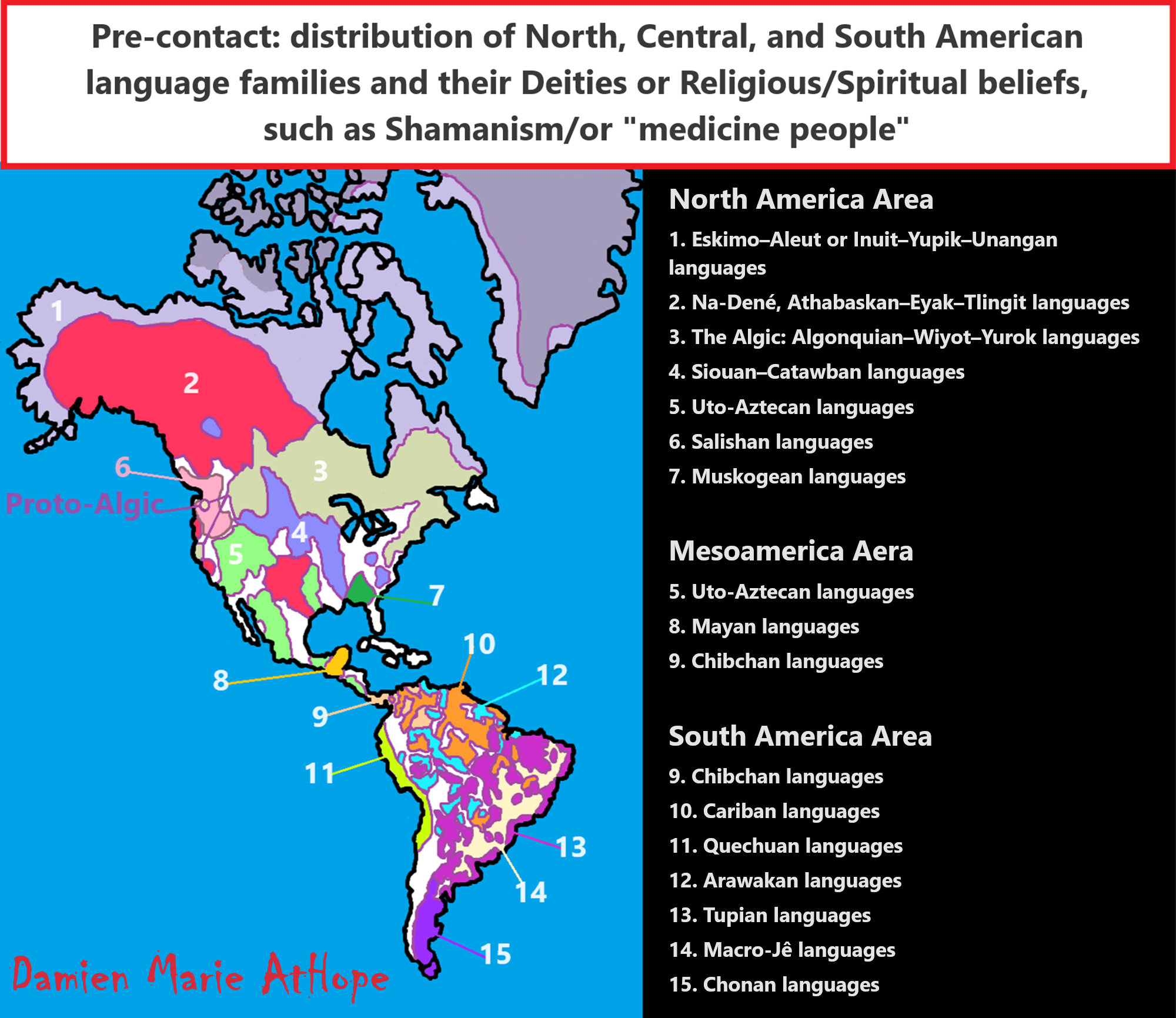
North America Area (with Deities/paganism and Shamanism/or “medicine people”)
- Eskimo–Aleut or Inuit–Yupik–Unangan languages
- Na-Dené, Athabaskan–Eyak–Tlingit languages
- The Algic: Algonquian–Wiyot–Yurok languages
- Siouan–Catawban languages
- Uto-Aztecan languages
- Salishan languages
- Muskogean languages
Mesoamerica Aera (with Deities/paganism and Shamanism/or “medicine people”)
South America Area (with Deities/paganism and Shamanism/or “medicine people”)
- Chibchan languages
- Cariban languages
- Quechuan languages
- Arawakan languages
- Tupian languages
- Macro-Jê languages
- Chonan languages
Shamanism (simplified to me as a belief that some special person can commune with these perceived spirits on the behalf of others by way of rituals) possibly by at least 30,000 years ago Shamanism is an otherworld connection belief thought to heal the sick, communicate with spirits/deities, and escort souls of the dead.
I think shaman beliefs came into the Americas from North Asia from 24,000 to 1,000 years ago. I think these peoples brought into the Americas a kind/several kinds of Shamanism-totemism with heavy animism. You can find some form of Shamanism, among Uralic, Transeurasian, Dené–Yeniseian, Chukotko-Kamchatkan, and Eskaleut languages.
Dené–Yeniseian languages? (I think similar to the Sami or Ainu peoples, Dené–Yeniseian peoples who migrated related to beliefs that were likely “paganistic” Shamanism, with heavy totemism and Animism themes). Human Migration from Asia into Alaska (North America) (11,000 to 6,000 years ago) “likely relates to the Na-Dene languages described as C-M217/C2/C3/C-M130 DNA lineage”
I think god beliefs (great spirit/shy father god) came into the Americas from North Asia from 7,000 to 5,000 years ago. I think it likely relates to the Na-Dene languages migrations as all of the Na-Dene languages have “great spirit” beliefs and some have shy father god/creator beliefs as well.
I think Na-Dene speakers brought into the Americas a kind/several kinds of Shamanism-Paganism with Totemism and Animism. Especially a daytime blue sky-god/sun-god but also an earth/moon goddess and bird mythology beliefs. Similar to the Hemudu culture (5500 – 3300 BCE or around 7,500 to 5,300 years ago) from China.
“Hemudu’s inhabitants worshiped a sun spirit as well as a fertility spirit. They also enacted shamanistic rituals to the sun and believed in bird totems. A belief in an afterlife and ghosts is thought to have been widespread as well. People were buried with their heads facing east or northeast and most had no burial objects. Infants were buried in urn-casket style burials, while children and adults received earth level burials. They did not have a definite communal burial ground, for the most part, but a clan communal burial ground has been found from the later period. Two groups in separate parts of this burial ground are thought to be two intermarrying clans. There were noticeably more burial goods in this communal burial ground.” ref
“The Great Spirit has at times been conceptualized as an “anthropomorphic celestial deity,” a god of creation, history, and eternity, who also takes a personal interest in world affairs and might regularly intervene in the lives of human beings. Numerous individuals are held to have been “speakers” for the Great Spirit; persons believed to serve as an earthly mediator responsible for facilitating communication between humans and the supernatural more generally. Such a speaker is generally considered to have an obligation to preserve the spiritual traditions of their respective lineage. The Great Spirit is looked to by spiritual leaders for guidance by individuals as well as communities at large.” ref
“While belief in an entity or entities known as the Great Spirit exists across numerous indigenous American peoples, individual tribes often demonstrate varying degrees of cultural divergence. As such, a variety of stories, parables, fables, and messages exhibiting different, sometimes contradictory themes and plot elements have been attributed to the same figure by otherwise disparate cultures. Wakan Tanka (Wakȟáŋ Tȟáŋka) can be interpreted as the power or the sacredness that resides in everything, resembling some animistic and pantheistic beliefs. This term describes every creature and object as wakan (“holy”) or having aspects that are wakan; tanka corresponds to “great” or “large.” ref
“The Lakota used Wakan Tanka to refer to an organization or group of sacred entities whose ways were considered mysterious and beyond human understanding. It was the elaboration on these beliefs that prompted scholarly debate suggesting that the term “Great Mystery” could be a more accurate translation of such a concept than “Great Spirit”. Activist Russell Means also promoted the translation “Great Mystery” and the view that Lakota spirituality is not originally monotheistic.” ref
(Native American mythology)
“HAYICANAKO is a Tlingit (Na-dene Language) Earth Goddess. An elderly Goddess who has the world on a stick. ’The Old Woman Beneath Us’. She holds the pole supporting the Earth and gives it a shake now and then if she is not happy about something. In case of earthquakes it is best to placate her by pouring some melting fat on the fire — it will drip down until it reaches her.” ref
“HAYICANAKO is the Tlingit Goddess of natural order. She is a giantess who lives in a mountain, where she holds up a column that supports the earth. When she gets hungry, she loses her concentration and the column starts to quiver, causing earthquakes. Her hunger can be fed by her worshippers throwing fat into their fires. Another version says that earthquakes happen when Raven jostles her arm and tries to make her lose her grip. Hayicanako’s name, which means “Old Woman Underneath Us,” is also seen as HAYICANAK.” ref
Raven made a woman under the earth to have charge of the rise and fall of the tides.
“Raven made a woman under the earth to have charge of the rise and fall of the tides. One time he wanted to learn about everything under the ocean and had this woman raise the water so that he could go there. He had it rise very slowly so that the people had time to load their canoes and get into them. When the tide had lifted them up between the mountains they could see bears and other wild animals walking around on the still unsubmerged tops. Many of the bears swam out to them, and at that time those who had their dogs had good protection. Some people walled the tops of the mountains about and tied their canoes inside. They could not take much wood up with them. Sometimes hunters see the rocks they piled up there, and at such times it begins to grow foggy. That was a very dangerous time. The people who survived could see trees swept up roots and all by the rush of waters and large devilfish and other creatures were carried up by it.” ref
Click for more on the myth of Raven and the Tides: Tlingit myth about the origin of the tides.
Tlingit Raven Mythology
“In the lore of Tlingit, Haida and other northern Native Americans a raven was both a trickster spirit and the creator of the world. The most interesting story about the raven in Tlingit folklore is the one concerning his responsibility for placement of the Sun in the sky.” ref
“There are countless Raven stories in the Tlingit community, and there are many versions of how Raven came to bring the light to the world. The stories are not necessarily contradictory, but they do emphasize different points and have different details, depending on whom the caretaker of that story was and how he or she was taught to tell the story. Smarch described how angry Raven’s grandfather was when Raven released all of his treasures into the sky. In her telling, he gathered the pitch from all around the house, placed it into a bentwood box and threw it in the fire. Raven could not find the smoke hole and flew around in the black smoke, becoming the black bird we know today. Raven sacrificed his supernatural state of being in order to bring light to the world.” ref
“In many versions of “Raven and the Box of Daylight” — including both ethnographic accounts and popular English versions of the story — at the beginning of his journey, Raven is white, one marker of his supernatural status. Tlingit scholar and professor Maria Williams wrote in her children’s book “How Raven Stole the Sun (Tales of the People)” that Raven was “pure white from the tips of his claws to the ends of his wings.” Hammond described Raven as a white or translucent being early on in his telling of the story. Depending on whom is telling the story, the details of how Raven became black differ, but the results are always the same. The story of “Raven and the Box of Daylight” contains messages and symbolism of hope, forgiveness, tolerance, love and sacrifice — messages and symbolism that encourage humans to be kinder toward each other.” ref
“Early records suggest that the Tlingit believed in a creator, Kah-shu-goon-yah, whose name was sacred and never mentioned above a whisper. This primordial grandfather, or “divisible-rich-man,” controlled the sun, moon, stars, and daylight in addition to creating all living things. Little more is known of him. The sacred past centers upon Raven (cultural hero, benefactor, trickster, and rascal) who was credited with organizing the world in its present form and in initiating many Tlingit customs. Raven was never represented, symbolized, or made equal with the supreme being who transcended Tlingit legends. The Tlingit inhabited a world filled with spirits, or jek. These spirits could manifest their power through individuals, animals, or things.”
“Since every material object or physical force could be inhabited by a spirit, Tlingit were taught to respect everything in the universe. The penalty for disrespect was the loss of ability to obtain food. Properly purified persons could acquire spirit power for curing illnesses, for protection in warfare, for success in obtaining wealth, and for ceremonial prerogatives. Each Tlingit had a mortal and an immortal spirit. Spirits of the dead traveled to the appropriate level of heaven commensurate with their moral conduct in this life. Morally respectable people went to the highest heaven, Kiwa-a, a realm of happiness; moral delinquents went to a second level, or Dog Heaven, Ketl-kiwa, a place of torment. Individuals remained in the afterworld for a period of time and then returned to this world as a reincarnation of some deceased maternal relative.” ref
“Tlingit legends have one great word in our culture: haa shageinyaa. This was a Great Spirit above us, and today we have translated that reverence to God.” ref
“Wisakedjak (Wìsakedjàk in Algonquin, Wīsahkēcāhk(w) in Cree and Wiisagejaak in Oji-cree) is the Crane Manitou found in northern Algonquian and Dene storytelling, similar to the trickster Nanabozho in Ojibwa aadizookaanan (sacred stories), Inktonme in Assiniboine lore, and Coyote or Raven from many different tribes. His name is found in a number of different forms in the related languages and cultures he appears in, including Weesack-kachack, Wisagatcak, Wis-kay-tchach, Wissaketchak, Woesack-ootchacht, Vasaagihdzak, and Weesageechak. As with most mythological characters, Wisakedjak is used to explain the creation of animals or geographical locations. He is generally portrayed as being responsible for a great flood which destroyed the world. In other stories he is also one of the beings who created the current world, either on his own, or with magic given to him by the Creator for that specific purpose.” ref
Blackfoot (Algonquian language) Native American Legends: Komorkis (Ko’komiki’somm)
“Komorkis is the Moon Goddesses, second eldest of the sacred Sky People. Komorkis is the wife of the sun god Natos and mother of the stars, of which the most important is Morning-Star. Komorkis is said to be the grandmother of several heroes of Blackfoot legend, such as Star-Boy.” ref
Manchu Shamanism Sky Deities?
“The ethnic religion practiced by most of the Manchu people, the major Tungusic group in China. this religion is an animistic and polytheistic religion, believing in several gods and spirits, led by a universal sky god called Abka Enduri (“Sky God” or “God of Heaven”), also referred to as Abka Han (“Sky Khan” or “Khan of Heaven”) and Abka Ama (“Sky Father”), originally Abka Hehe (“Sky Woman”, by extension “Sky Mother”) who is the source of all life and creation. Deities (enduri) enliven every aspect of nature, and the worship of these gods is believed to bring favor, health, and prosperity. Many of the deities were originally Manchu ancestors, and people with the same surname are generated by the same god.” ref
(Taevaisa: Taevas = sky, isa = father) – On Etymology of Finnic Term for ‘Sky’
“The Finnic term for ‘sky’ (Estonian taevas; Finnish taivas; Livonian tōvaz; Veps taivaz; Votic taivas) has no cognate in other Uralic languages. The present study finds that this Finnic word has cognates in Sinitic languages supported by a deep rhyme correspondence consisting of five etymologies; therefore, this word root must be aboriginal in Sino-Uralic languages. Using etymological methods, the present study has identified five Sinitic and Uralic shared etymologies. These five etymologies form a rhyme correspondence. This regular sound change validates the etymological connection between Sinitic and Uralic. The Finnic term for ‘sky’ is among these five etymologies. It is demonstrated that this word root should be aboriginal in Sino-Uralic languages.” ref, ref
Sino-Uralic or Sino-Finnic is a proposed language family consisting of the Sinitic languages (Chinese) and the Uralic languages.
“Gao suggested the proto-population could have been lived in Neolithic China and carried the Haplogroup N, claiming that a common proto-language could have been spoken around 5.000-10.000 years ago. Gao argued that Chinese has three major layers, he saw the root of Chinese as coming from a common Sino-Uralic source, the second layer coming from Indo-European during the Chalcolithic age or later and the third layer coming from Yeniseian during the Bronze Age.” ref
“Buga” Siberian Evenki Supreme God of Everything?
“One significant feature of the Evenki is that the supreme deities can be both male gods and female goddesses. According to traditional Evenk ideas, the Universe consists of three worlds: the upper (Ugu Buga), the middle (Doolin Buga), the lower (Hergu Buga). The upper world was located at sunrise, the lower at sunset. The upper and lower worlds are inaccessible to ordinary people and are inhabited by spirit gods. One of the main deities is Seveki spirit, whose function is the creator of all living things. The spirit of Enekan Buga monitors the life of people and animals, periodically visiting the earth. His assistant, Enekan Togo, is a spirit of fire living in a home. Through fire, the Evenki address spirits.” ref, ref
Nanabozho great spirit-being?
“Nanabozo is a supernatural being of various Indigenous oral traditions. He is the embodiment of life, with the power to create life in others. In some Anishinaabe and Cree stories, Nanabozo is a main player in the creation of Turtle Island. Nanabozho is a shapeshifter who is both zoomorphic as well as anthropomorphic, meaning that Nanabozho can take the shape of animals or humans in storytelling. Thus Nanabush takes many different forms in storytelling, often changing depending on the tribe. The majority of storytelling depicts Nanabozho through a zoomorphic lens. In the Arctic and sub-Arctic, the trickster is usually called Raven. Coyote is present in the area of California, Oregon, the inland plateau, the Great Basin, and the Southst and Southern Plains. Rabbit or Hare is the trickster figure in the Southeast, and Spider is in the northern plains. Meanwhile, Wolverine and Jay are the trickster in parts of Canada. Often, Nanabozho takes the shape of these animals because of their frequent presence among tribes. The animals listed above have similar behavioral patterns. The gender identity of Nanabozho changes depending on the storytelling. Because Nanabozho is a shapeshifter, they are androgynous. While the majority of stories told about the trickster figure are written with he/him pronouns, the gender identity changes depending on the story and many are written with feminine pronouns.” ref, ref
Puebloan Sky Father and Earth Mother?
Puebloan–Zuni: (Ápoyan Ta’chu) Sky Father and (Áwitelin Tsíta) Earth Mother
“The mist clouds formed into the Great Waters, where Earth Mother, Áwitelin Tsíta, and Sky Father, Ápoyan Ta’chu, formed, the two of whom conceived all men and creatures in the four-fold womb of the world. The Sun Father and Earth Mother then brought forth the Twin Children of the Sun, the twin brothers Ko’wituma and Wats’usi. These twins were endowed with sacred knowledge, caps, bows, arrows, and shields to have dominion over all men and creatures as Twin War Gods.” ref
Puebloan-Hopi: (Tawa) Sky Father and (Kokyangwuti) Earth Mother
“Tawa (the sun god) and Kokyangwuti/Spider Woman (Spider Grandmother) who is identified with the Earth Goddess. They separate themselves to create other lesser gods, then create the earth and its creatures.(close to the Zuni creation myth)” ref
Puebloan-Navajo: (TSOHANOAI) Sky Father and (Estsanatlehi) Earth Mother
“Estsanatlehi a Fertility goddess probably regarded as the most powerful deity in the Navaho pantheon is the consort of the Sun god TSOHANOAI and the mother of the war god NAYENEZGANI.” ref, ref
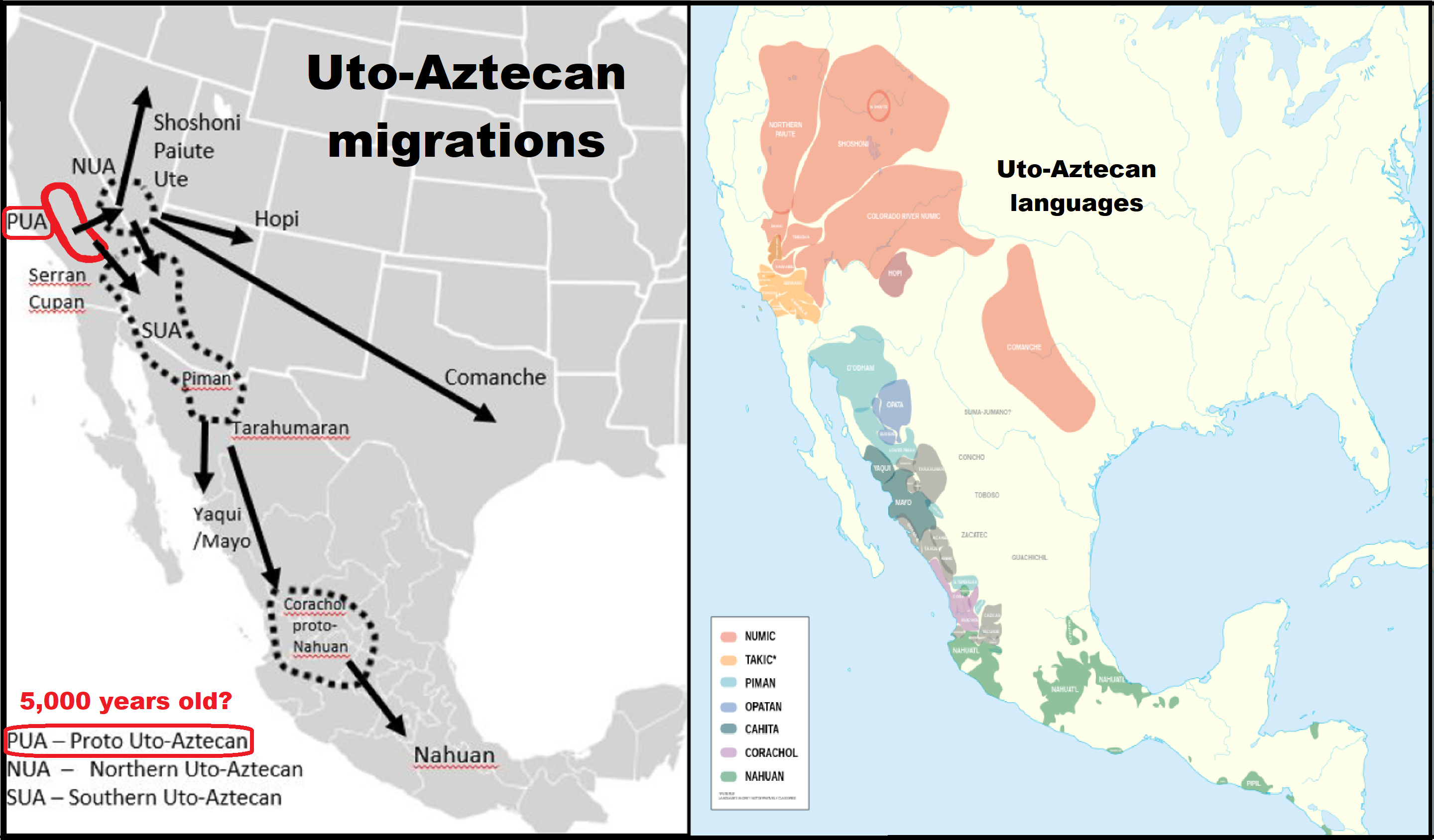
To me, religion involves conspiracy theories of reality.
“A global sample of hunter-gatherers and seven traits describing hunter-gatherer religiosity: animism 100%, belief in an afterlife 79%, shamanism 79%, ancestor worship 45%, high gods 39%, and worship of ancestors 24% or high gods 15% who are active in human affairs.” ref
To me, there seems to be three basic categories of the “Great Spirit” deity term:
- “A life force” (no human gender, more animistic related)
- “A Supreme Being” (differing or mixed gender, like both male and female, more shamanistic related)
- “A defined god” (mostly male gender, like Father, Grandfather, or Old Man, more totemistic paganism related) ref
“The Great Spirit is the concept of a life force, a Supreme Being or god known more specifically as Wakan Tanka in Lakota, Gitche Manitou in Algonquian, and by other, specific names in a number of Native American and First Nations cultures. While the concept is common to a number of indigenous cultures in the United States and Canada, it is not shared by all cultures, or necessarily interpreted in the same way. According to Lakota activist Russell Means, a more semantically accurate translation of Wakan Tanka is the Great Mystery.” ref
“The Great Spirit has at times been conceptualized as an “anthropomorphic celestial deity,” a god of creation, history and eternity, who also takes a personal interest in world affairs and might regularly intervene in the lives of human beings. Numerous individuals are held to have been “speakers” for the Great Spirit; persons believed to serve as an earthly mediator responsible for facilitating communication between humans and the supernatural more generally. Such a speaker is generally considered to have an obligation to preserve the spiritual traditions of their respective lineage. The Great Spirit is looked to by spiritual leaders for guidance by individuals as well as communities at large.” ref
Is the “Staff God” the oldest provable god in the Americas?
“The oldest known depiction of the Staff God was found on some broken gourd fragments in a burial site in the Pativilca River Valley (Norte Chico region) and carbon dated to 2250 BCE or 4,273 years ago. This makes it the oldest image of a god to be found in the Americas.” ref
Who is God Viracocha?
“Viracocha is the great creator deity in the pre-Inca and Inca mythology in the Andes region of South America. Full name and some spelling alternatives are Wiracocha, Apu Qun Tiqsi Wiraqutra, and Con-Tici (also spelled Kon-Tiki, the source of the name of Thor Heyerdahl’s raft). Viracocha was one of the most important deities in the Inca pantheon and seen as the creator of all things, or the substance from which all things are created, and intimately associated with the sea. Viracocha created the universe, sun, moon, and stars, time (by commanding the sun to move over the sky) and civilization itself. Viracocha was worshipped as god of the sun and of storms. He was represented as wearing the sun for a crown, with thunderbolts in his hands, and tears descending from his eyes as rain. In accord with the Inca cosmogony, Viracocha may be assimilated to Saturn, the “old god”, the maker of time or “deus faber” (god maker), corresponding to the visible planet with the longest revolution around the sun.” ref
“A ceremonial pole is a stake or post utilized or venerated as part of a ceremony or religious ritual. Ceremonial poles may symbolize a variety of concepts in different ceremonies and rituals practiced by a variety of cultures around the world. In many cultures, ceremonial poles represent memorials and grave markers. In The Evolution of the Idea of God, Grant Allen notes that Samoyeds of Siberia, and Damara of South Africa plant stakes at the graves of ancestors. Ceremonial poles may also be raised during celebrations and festivals, as with Gudi Padwa in South Asia and the maypole dance in Europe. In some cultures, they may represent sacred trees or tools wielded by deities. They may also symbolize the axis mundi or world tree. In religious ceremonies, they may be venerated as idols or representations of tutelary deities.” ref
Levant: Asherah (goddess) pole
Mesopotamia: pole/tree symbol of (god) Anu
Central Asia: serge (ritual pole)
China: Huashan festival (flower poles)
Korea: Jangseung (village guardian) and sotdae (pole/pillar with a carved bird on top)
India: ritual poles are features of temples
Myanmar: Kay Htoe Boe poles (sacred Eugenia tree)
Europe: Maypole is a tall wooden pole, Germanic Thor’s Oak and the Irminsul, Norse world tree, known as Yggdrasil
New Zealand Māori: Staff God or atua rakau combine gods with humans, Rongo food god, especially kūmara (sweet potato), represented by a god stick called whakapakoko atua ref
The Broad Land Is Our Mother, the High Sky Is Our Father
“The traditional religious beliefs of the indigenous population of Lake Baikal of Siberia, the Buryats (Mongolic-Transeurasian language) and the Evenks (Tungusic-Transeurasian language), are characterized by the idea of the inseparable unity of two worlds – the world of people and the world of nature. The most probative fact of the deep ecological consciousness of these people was and still is the cult of worshipping both their territory – the habitat of their people – and the Earth in general. The concept of “Earth” in the Buryat and Tungus languages – “delegey, delekhei daida” – means “vast, plentiful”. This main epithet of the Earth tells about its immensity, boundlessness. An important role in the life of the autochthonous population of Baikal is played by the Earth as a territory of their residence. However, the image of the Earth is inextricably linked with their perception of the world view with the obligatory deification of the Eternal Blue Sky and Earth – the forces giving energy to people.” ref
BURYATS RESPECTFULLY CALLED THE EARTH “MOTHER”, AND THE SKY, IN TURN, “FATHER”.
“There is a very old legend about the epoch when the main deities were only goddesses embodying the Mother. The progenitrix of all the gods was considered Ekhe-Burkhan living in the darkness and primeval chaos. Once she wanted to separate the sky from the earth, and for that purpose, she created a wild duck that dove into the water. Having reached the surface, the duck brought dirt in its beak, and Ekhe-Burkhan used this mud to build Mother Earth – Ulgen (literally meaning “broad”), and then “settled” plants and animals on it. Some Buryat families called the deity of the earth Etugen, others – Ulgen. Etugen, as a rule, had an appearance of an old woman who lived “inside the earth”. The specifics of her purpose were largely connected with the translation of the name – “to give a birth”.” ref
“Accordingly, she is the embodiment of a fertile source, fertility, the powerful goddess of nature. Therefore, the goddess Etugen patronized not only humans, but gave “a snow-white foal to a white mare, a noisy fledgling crow to a black crow, a sweet bird cherry berry to a green bird cherry tree.” The body of the Mother Earth is the Earth’s surface. All the things that grow and are located on it are the children of Earth. Hence such a careful, even reverent attitude to the integrity of the soil – it was forbidden to dig the ground with sharp objects, pick grass, break branches without any real need… Such a behavior model has been cultivated in Buryat families since childhood. Children were initially told that it was prohibited to upset the Earth, to hurt it. A conspicuous fact is also known: the toes of the Buryat boots were bent upwards – this protected the land from accidental injuries.” ref
“In traditional Siberian Ket (Dené–Yeniseian language) cosmology, natural phenomena and even objects were animate. The sky god Es resided in the uppermost heaven, benign but remote from all but shamans. The sky itself was the abode of Es, the all-powerful male creator deity, who tended to keep aloof from humans on earth. It was assumed that the sky contained rivers and lakes and mountains mirroring those of the earth. The stars and planets were regarded as the roots of heavenly trees. Ket sky burials, on raised wooden platforms, came to be reserved for shamans, while most people were simply buried in the ground.” ref, ref
“The Ket believed that the polar star was anchored to the earth in the precise vicinity of where they camped and roamed by a sort of cosmic umbilical cord. Humans too were believed to have developed their navels from a similar connection with the earth. This endless process of reincarnation continued humanity, linking underworld with earth in a temporal-geographic union symbolized by the person’s navel. The navel and umbilical cord were symbolic of the connection between mortal humans or animals and Mother Earth.” ref, ref
“In the Aztec and other Nahua creation myths, from the void that was the rest of the universe, the first god, Ometeotl, created itself. The nature of Ometeotl, the “God of duality” was both male and female, shared by Ometecuhtli, “Lord of duality,” and Omecihuatl, “Lady of duality”. Ometeotl gave birth to four children, the four Tezcatlipocas, who each preside over one of the four cardinal directions. Over the West presides the White Tezcatlipoca, Quetzalcoatl, the god of light, mercy, and wind. Over the South presides the Blue Tezcatlipoca, Huitzilopochtli, the god of war. Over the East presides the Red Tezcatlipoca, Xipe Totec, the god of gold, farming, and spring time. And over the North presides the Black Tezcatlipoca, also called simply Tezcatlipoca, the god of judgment, night, deceit, sorcery, and the Earth.” ref

High God?
“High God, also called Sky God, in anthropology and the history of religion, a type of supreme deity found among many nonliterate peoples of North and South America, Africa, northern Asia, and Australia. The adjective high is primarily a locative term: a High God is conceived as being utterly transcendent, removed from the world that he created. A High God is high in the sense that he lives in or is identified with the sky—hence, the alternative name. Among North American Indians and Central and South Africans, thunder is thought to be the voice of the High God. In Siberia, the sun and moon are considered the High God’s eyes. He is connected with food and heaven among American Indians.” ref
“The sky often has important religious significance. Many religions, both polytheistic and monotheistic, have deities associated with the sky. The daytime sky deities are typically distinct from the nighttime ones. Such as separating the category of “Sky-god” from that of “Star-god.” Daytime gods and nighttime gods are frequently deities of an “upper world” or “celestial world” opposed to the earth and a “netherworld” (gods of the underworld are sometimes called “chthonic” deities). Any masculine sky god is often also king of the gods, taking the position of patriarch within a pantheon. Such king gods are collectively categorized as “sky father” deities, with a polarity between sky and earth often being expressed by pairing a “sky father” god with an “earth mother” goddess (pairings of a sky mother with an earth father are less frequent).” ref
“A solar deity is a god or goddess who represents the Sun, or an aspect of it, usually by its perceived power and strength. Solar deities and Sun worship can be found throughout most of recorded history in various forms. Many areas/regions had solar deities: from African, the Americans, Asian, European, and Oceania.” ref
“Heaven is conceived as the symbol and name of the Supreme Being. This is the case among the Chinese (Tien), Mongols (“by the power of the eternal Heaven,” “Heaven has commanded me”), the Sumerians (An), and especially, among the inhabitants of the Afro-Asiatic steppes and the herding peoples. The Indo-European languages employ the terms Devah, Dyaus, Die, Tivar, Zeus, Deus, Diespiter, and Jupiter to designate the creator and lord of all things. Side by side with the active worship of the Supreme God of Heaven there is a tendency to make him a Deus otiosus (as in Africa) and to concentrate on the active worship of other religious phenomena that seem to be closer and to play a more central role in daily life.” ref
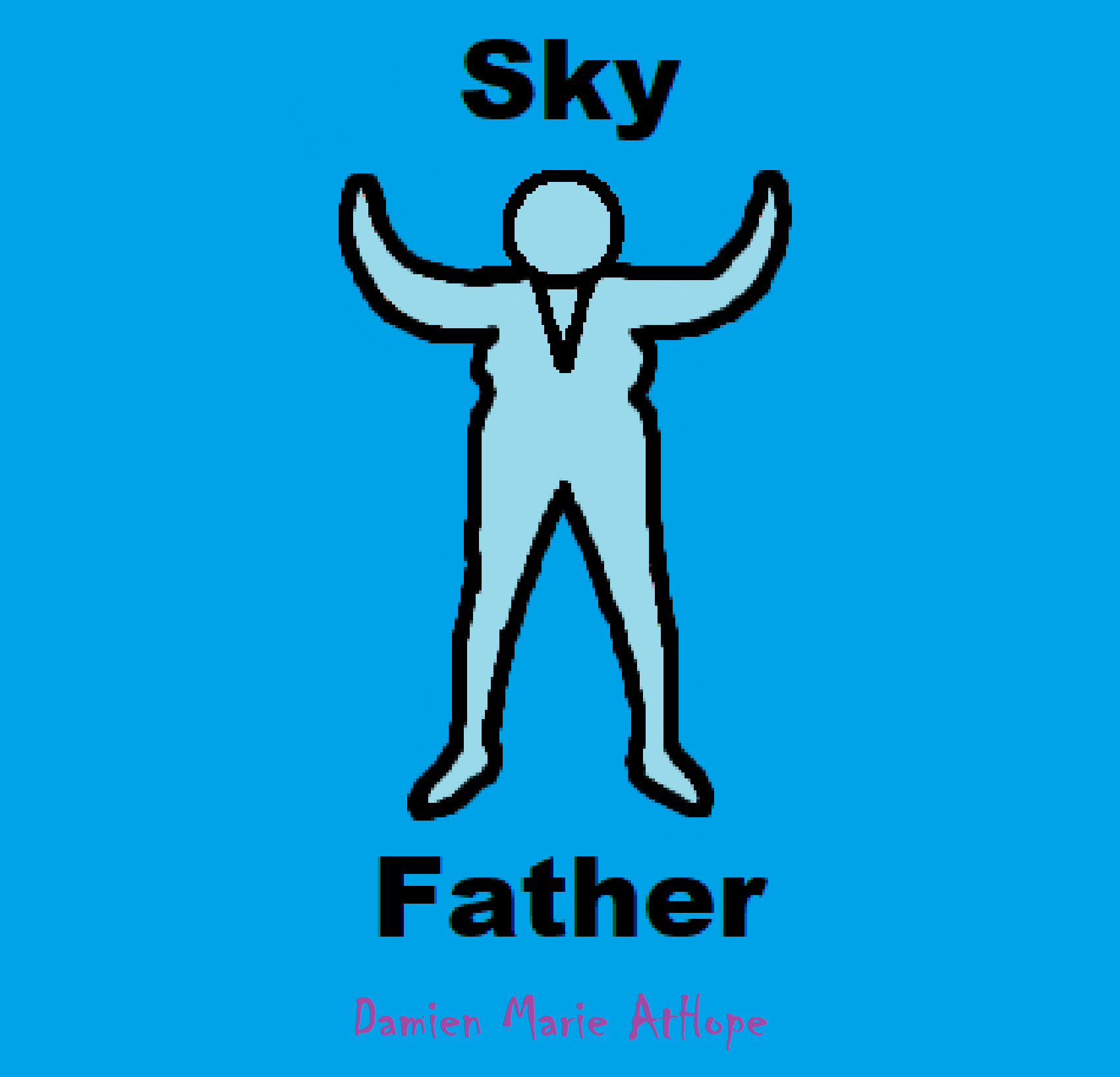
“In comparative mythology, sky father is a term for a recurring concept in polytheistic religions of a sky god who is addressed as a “father”, often the father of a pantheon, and is often either a reigning or former King of the Gods. The concept of “sky father” may also be taken to include Sun gods with similar characteristics, such as Ra. The concept is complementary to an “earth mother.” ref
“Sky Father” is a direct translation of the Vedic Dyaus Pita, etymologically descended from the same Proto-Indo-European deity name as the Greek Zeûs Pater and Roman Jupiter and Germanic Týr, Tir or Tiwaz, all of which are reflexes of the same Proto-Indo-European deity’s name, *Dyēus Ph₂tḗr. While there are numerous parallels adduced from outside of Indo-European mythology, there are exceptions (e.g. In Egyptian mythology, Nut is the sky mother and Geb is the earth father).” ref
Sky Father (gods): Horus-Egyptian, Tengri-Turkic/Mongolic, Wākea-Hawaiian/Austronesian, Ranginui– Māori/Austronesian, Dyaus Pita-Indo-Aryan/Indo-European, Dyḗws ph₂tḗr-Proto-Indo-European, Jupiter-Italic/Indo-European, Zeus-Hellenic/Indo-European, Dagr-Nordic/Indo-European, Perun– Slavic/Indo-European, Diepatura-Illyrian/Indo-European, Zojz-Albanian/Indo-European, Perkūnas-Baltic/Indo-European, Týr-Germanic/Indo-European, Bochica-Muisca/Colombia- Native American, Shangdi-China/Sino-Tibetan, Tian-China/Sino-Tibetan, An or Anu-Sumerian/Assyrian/Babylonian, Ukko-Finnish/Uralic, Taevaisa-Uralic, Urcia-Basque/Vasconic, etc.” ref
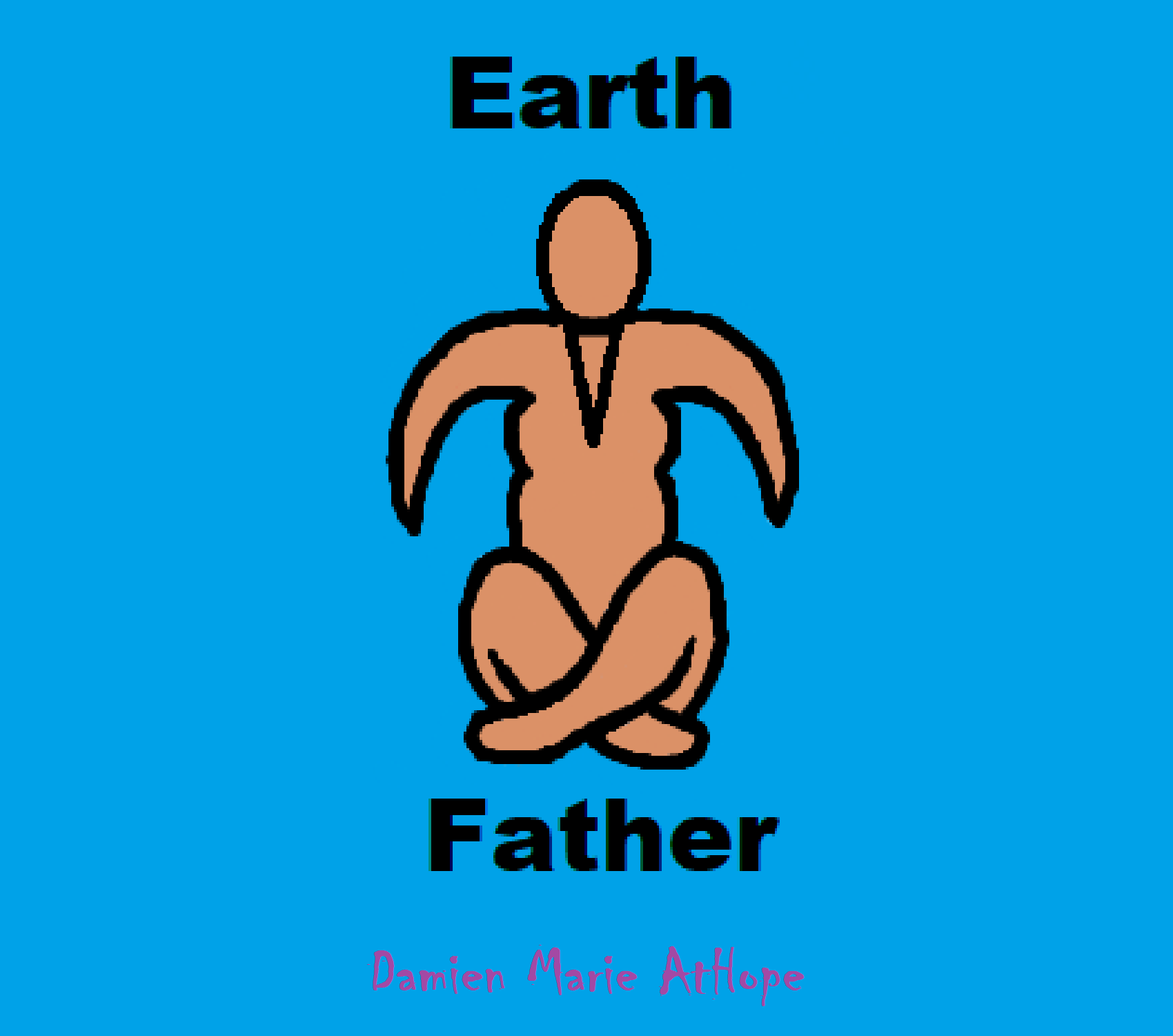
“An Earth god is a deification of the Earth associated with a figure with chthonic or terrestrial attributes.” ref
Egyptian earth gods, Osiris and Geb, have the sky goddesses, Nut and Hathor
Greek: Poseidon
Slavic: Volos & Troglav
Sumerian: Šumugan, Nuska, Enten, Enlil, Enki, Emesh
Levant: Amurru
Hindu: Dharā
Chinese: dìguān dàdì, Tu Di Gong, Na Tuk Kong, Kṣitigarbha
Tai/Burmese: Phra Bhum Chaiya mongkol
Vietnamese: Thổ Công, Ông Tà
Americas: Tezcatlipoca (Aztec), Trengtrengfilu (Mapuche), Alignak (Inuit), Aganju (Cuba)
Māori: Rūaumoko
Africa: Medr/Meder (Ethiopian), Ratovantany (Madagascar) ref
List of earth deities:
African mythology
Akan mythology
- Asase Yaa, the goddess of the harsh earth, Truth and Mother of the Dead
- Asase Afua, the Goddess of the lush earth, fertility, love, procreation and farming
Egyptian mythology
- Geb, god of the earth, vegetation, earthquakes, and snakes
Igbo mythology
Yoruba mythology
- Babalú-Ayé, orishaof the earth, healing, smallpox, respect for the elderly ref
European mythology
Baltic mythology
- Žemyna, goddess of the earth
Celtic mythology
- Danu, ancient goddess of the earth
Etruscan mythology
- Cel, goddess of the earth
Finnish mythology
- Akka, goddess of the earth
Georgian mythology
- Mindort-batoni, god of the mountains
Germanic mythology
- Nerthus, earth goddess
Greek mythology
Norse mythology
Roman mythology
Slavic mythology
- Mat Zemlya, ancient goddess of the earth
- Mokosh, goddess of fertility, moisture, women, the earth, and death
- Veles, horned god of the underworld, water, the earth, wealth, and cattle ref
Asian mythology
Ainu mythology
- Cikap-kamuy, god of owls and the earth
Anatolian mythology
- Cybele, mother goddess of the earth
Chinese mythology
Gondi mythology
- Bhivsen or Bhimal, god of the earth
- Bhum, goddess of the earth and mother of humanity
Hittite mythology
Hindu mythology
Meitei mythology
- Leimarel Sidabi, goddess of the earth, creation, nature, and the household
Sumerian mythology
Thai mythology
- Phra Mae Thorani, goddess of the earth who stopped the demons from attacking the Buddha
Turkic and Mongolian mythology
- Etugen Eke, goddess of the earth ref
American mythology
Aztec mythology
- Tlaltecuhtli, the earth deity whose body created the world
Haudenosaunee mythology
- Hah-nu-nah, the turtle that bears the world.
Lakota mythology
- Maka-akaŋ, the earth goddess
Inca mythology
- Apu, a deity of the mountains
- Mama Pacha, the goddess of the earth ref
Oceanian mythology
Hawaiian mythology
- Papahānaumoku, goddess of the earth
Maori mythology
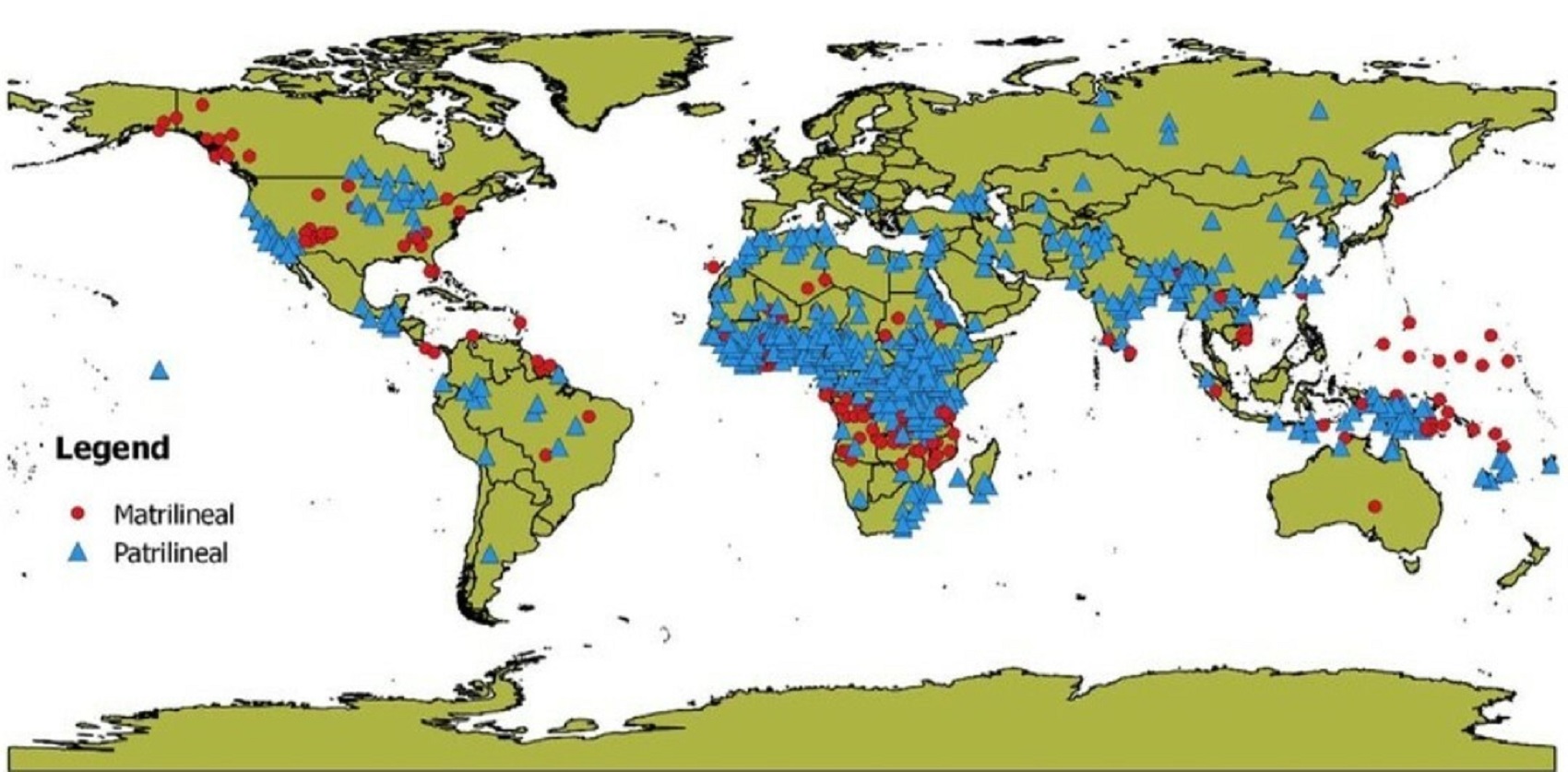
“Matrilineal (in red) and patrilineal (in blue) societies across the world, Ethnographic Atlas sample.” ref
“A man’s world? Not according to biology or history. For proof, we can look to the many matrilineal societies dotted all over the world. In some regions, these traditions may date back thousands of years.” ref
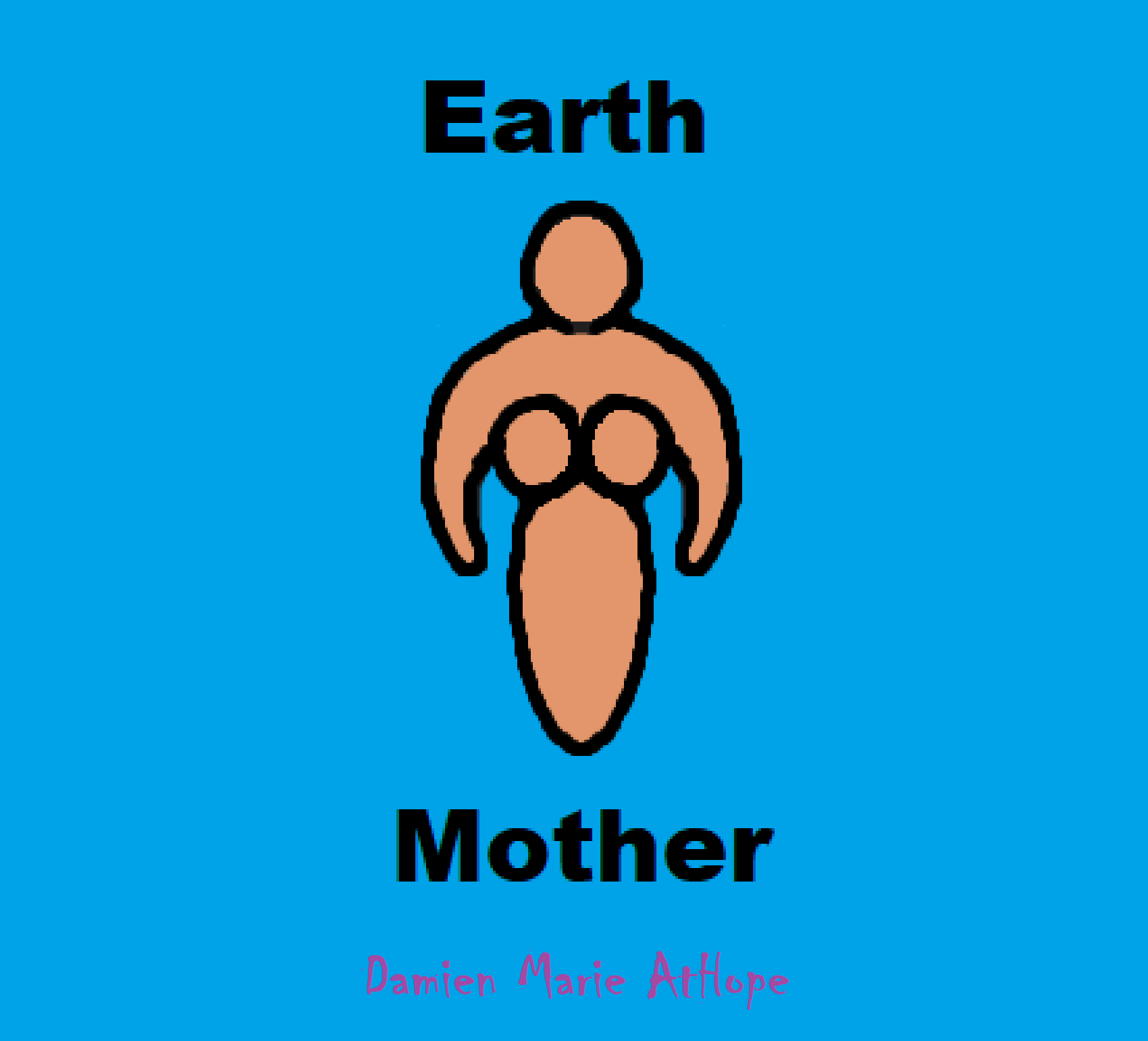
“An Earth goddess is a deification of the Earth. Earth goddesses are often associated with the “chthonic” deities of the underworld. An Earth goddess is a deification of the Earth. Earth goddesses are often associated with the “chthonic” deities of the underworld. Ki and Ninhursag are Mesopotamian earth goddesses. In Greek mythology, the Earth is personified as Gaia, corresponding to Roman Terra, Indic Prithvi/Bhūmi, etc. traced to an “Earth Mother” complementary to the “Sky Father” in Proto-Indo-European religion. Egyptian mythology exceptionally has a sky goddess and an Earth god.” ref
Other Earth goddesses include:
- Chinese folk religion– Houtu (Di Mu)
- Meitei mythologyand religion – Leimarel Sidabi, Panthoibi, Phouoibi
- Ancient Greek religion– Gaia, Cybele, Demeter, Persephone, Rhea
- Ancient Roman religion– Terra, Ceres, Ops, Proserpina
- Slavic – Mat Zemlya
- Andean (Inca, Aymara) – Pachamama
- Hinduism– Bhumi
- Native American – Spider Grandmother
- Romanian – Muma Padurii, Mama Gaia
- Mongolian and Turkic – Umay (Eje)
- Old Norse religion– Sif and Jörð
- Lithuanian mythology– Žemyna
- Māori – Papatūānuku
- Latvian mythology– Zemes māte and Māra
- Vietnamese folk religion– Mẫu Địa, Diêu Trì Địa Mẫu, Bà Thổ and Hậu Thổ
- Tai folk religion– Phra Mae Thorani and Phra Nang Bhum Chaiya (พระนางภูมิไชยา – Bhummaso), “Tutelary goddess of Earth and Land” in Thailand, Cambodia , Laos and myanmar
- Mahayanaand Vajrayana – Vasudhara
- Historical Vedic religion– Prithvi ref
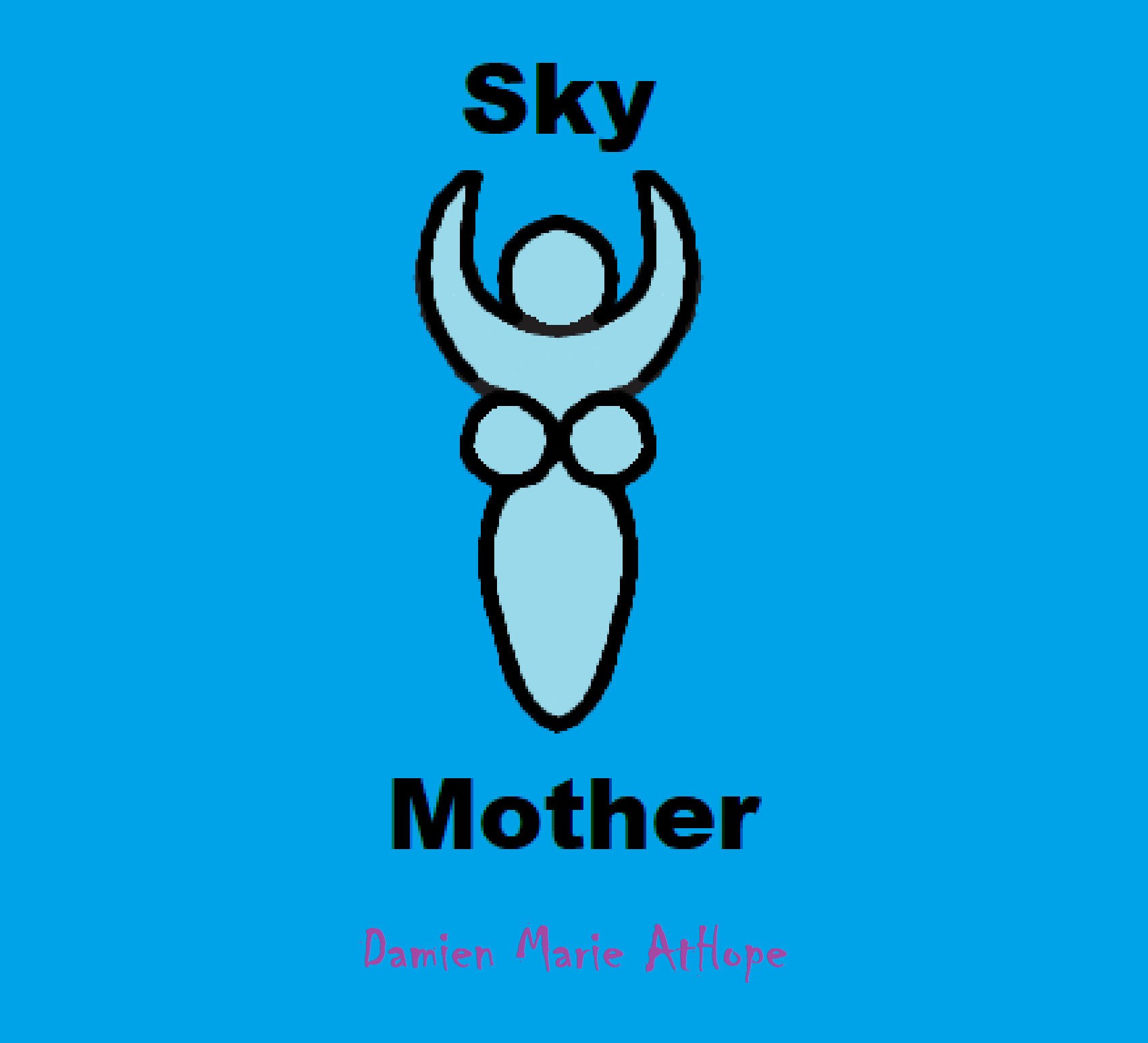
Native American Legends: Sky Woman
“Tribal affiliation: Iroquois League, Wyandot” ref
“Native names: Ataensic, Ata-en-sic, Ataentsic, Atahensic, Ataensiq, Aataentsic, Athensic, Ataensie, Eataentsic, Eyatahentsik, Iaataientsik, Yatahentshi; Iotsitsisonh, Iotsitsisen, Iottsitison, Iottsitíson, Atsi’tsiaka:ion, Atsi’tsiakaion, Ajinjagaayonh; Iagen’tci, Iagentci, Eagentci, Yekëhtsi, Yagentci; Awenhai, Awenha’i, Awenha:ih; Wa’tewatsitsiané:kare; Aientsik, Aentsik” ref
“Also known as: Grandmother Moon, the Woman who Fell from the Sky
Type: Mother goddess, sky spirit, first woman
Related figures in other tribes: Nokomis (Anishinabe), Our Grandmother (Shawnee)” ref
“Sky Woman is the Iroquois mother goddess, who descended to earth by falling through a hole in the sky. She was a celestial being who was cast out of the heavens either for violating a taboo or through her jealous husband’s treachery; waterbirds carried her down to the sea and set her on the back of a turtle, which became her home (Turtle Island.) Sky Woman is either the grandmother or the mother (depending on the version) of the twin culture heroes Sky-Holder and Flint, sometimes known as Good Spirit and Bad Spirit.” ref
“Myths about Sky Woman vary enormously from community to community. In some Iroquois myths Sky Woman is a minor character who dies in childbirth immediately upon reaching the earth, while in others, she is the central character of the entire creation saga. In some myths Sky Woman is the mother of the twins, but more commonly she is the mother of a daughter, Tekawerahkwa or Breath of the Wind, who in turn gives birth to the twins. In some Iroquois traditions the twins represent good and evil, while in others, neither twin is evil, but Flint represents destruction, death, night, and winter to Sky-Holder’s creation, life, day, and summer. In many versions of the myth Sky Woman favored Flint, usually because Flint has deceived her into thinking Sky-Holder killed Tekawerahkwa, but sometimes because Sky Woman herself disapproved of Sky-Holder’s human creations and their ways. In other versions Sky Woman supported both of her grandchildren equally, declaring that there must be both life and death in the world. Sky Woman is associated with the moon by many Iroquois people. In some traditions, Sky Woman turned into the moon; in others, Sky-Holder turned her body into the sun, moon, and stars after her death; and in still others, it was Sky Woman herself who created the sun, moon, and stars.” ref
“Sky Woman goes by many different names in Iroquois mythology. The name “Sky Woman” itself is a title, not her name– she is a Sky Woman because she is one of the Sky People, Karionake. Her own name is variously given as Ataensic (a Huron name probably meaning “ancient body,”) Iagentci (a Seneca name meaning “ancient woman,”) Iotsitsisonh or Atsi’tsiaka:ion (Mohawk names meaning “fertile flower” and “mature flower,”) Awenhai (a Cayuga and Seneca name also meaning “mature flower,”) and Aentsik (probably an Iroquois borrowing from Huron.) She is sometimes also referred to as Grandmother or Grandmother Moon.” ref
Egyptian: Nut/Nuit, goddess of “Infinite (night) Space and Stars”
Norse: Nótt, goddess of night with a marriage to god Dellingr “shining one” is a day god
“Sol “Sun” is female and Mani “Moon” is male. Norse, Sol, and Mani form a sister and brother pair that ride through the sky on horse-drawn chariots, pursued through the sky by the wolves Skoll (“Mockery”) and Hati (“Hate”).” ref, ref, ref
Sky Goddess
Americas: (Lakota) Wohpe, the spirit of meteors or falling stars (often confused with Fallen Star), also the spirit of beauty, love, wishes, dreams, and prophecy; (Inuit) Ataksak, goddess of the sky; (Iroquoian) Atahensic, Iroquois sky goddess who fell to Earth at the time of creation; (Uto-Aztecan) Citlalincue, goddess of the Milky Way, Oxomoco, goddess of nighttime; Coyolxauhqui, goddess of the moon; Meztli, goddess of the moon; Tianquiztli, star goddesses (Pleiades), Citlalmina, goddess of female stars; Citlaxonecuilli, goddess of Ursa Major
Australian: Bila (sun), cannibalistic sun goddess
Chinese: Chang’e, moon goddess who lives with the moon rabbit; Xihe (deity), sun goddess; Zhinü, weaver of the clouds and possible dawn goddess
Celtic: Sulis, goddess of the hot springs at Bath; probably originally the pan-Celtic sun goddess
Egyptian: Hathor, originally a sky goddess; Mehet-Weret, goddess of the sky; Nut/Nuit, goddess of “Infinite (night) Space and Infinite Stars” in Thelema
Finnic: Ilmatar, virgin spirit and goddess of the air
Germanic: Eostre, spring and fertility goddess; originally the Germanic dawn goddess; Sól “Sun” personified, goddess from potential Nordic Bronze Age and Proto-Indo-European roots
Greek: Eos, dawn goddess, Hemera, primordial goddess of day; Hera, goddess of the air, marriage, women, women’s fertility, childbirth, heirs, kings, and empires; Iris, goddess of the rainbow and messenger of Hera; Nyx, primordial goddess of night; Selene, personification of the moon
Hindu: Aditi, celestial mother of the gods; Ratri, goddess of night; Saranyu, goddess of clouds; Ushas, goddess of dawn
Hurrian: Hepit, goddess of the sky
Iranian: Uša, goddess of dawn
India- Meitei/Sanamahism: Konthoujam Tampha Lairembi, queen of heaven; Nongthang Leima, thunder and lightning goddess
Japanese: Amaterasu, goddess of the sun and the universe, ancestor of the emperors of Japan, and the most important deity in Shintoism; Izanami, creator goddess of Japan with her husband; starts off as a sky goddess, but after she dies becomes a death/underworld/chthonic goddess; Marici, Buddhist goddess of the heavens
New Zealand- Māori: Whaitiri Female Personification of Thunder
Norse: Nótt, goddess of night with a marriage to god Dellingr “shining one” a day god.
Pacific Islands: Abeguwo, Melanesian sky goddess; Ira, Polynesian sky goddess
Proto-Indo-European: Seul, sun goddess
Uralic Mari: Piambar, daughter of the sky
Uralic Mordvin: Kovava, Mokshan goddess of the moon
Roman: Aurora, dawn goddess; Luna, moon goddess; Nox, Roman version of Nyx, night goddess and mother of Discordia
Slavic: Zorya, goddess of dawn
Semitic: Asherah, sky goddess and consort of El; after the rise of Yahweh, she may have become Yahweh’s consort before being demonized and the Israelite religion going monotheistic
Vietnamese: Mẫu Cửu Trùng Thiên, she is the daughter of Ông Trời, the sister of the Mẫu Thượng Thiên, Mặt Trời, Mặt Trăng and also a goddess who rules the sky; Mẫu Thượng Thiên, she is the daughter of Ông Trời and also one of the rulers of the sky; Pháp Vân, cloud goddess; Thần Mặt Trời, goddess of the sun, daughter of Ông Trời; Thần Mặt Trăng, goddess of the moon, daughter of Ông Trời; Hằng Nga, the goddess who lives on the moon with uncle Cuội and Moon Rabbit ref
Queen of Heaven?
“Queen of Heaven was a title given to a number of ancient sky goddesses worshipped throughout the ancient Mediterranean and the ancient Near East. Goddesses known to have been referred to by the title include Inanna, Anat, Isis, Nuit/Nut, Astarte, and possibly Astarte/Asherah (by the prophet Jeremiah). In Greco-Roman times, Hera and Juno bore this title. The forms and content of worship varied. In China: Doumu, as the queen of heaven and mother of all the stars in Chinese religion and Taoism. Mazu, also commonly known as the “Empress of Heaven”. Queen Mother of the West, as the queen of heaven and mistress of all the goddess in Chinese religion and mythology.” ref
Solar deity, Solar myths, Solar vessels, and Sun chariots
“Solar deities are often thought of as male (and lunar deities as being female) but the opposite has also been the case. A solar deity or sun deity is a deity who represents the Sun, or an aspect of it. Such deities are usually associated with power and strength. Solar deities and Sun worship can be found throughout most of recorded history in various forms. Predynasty Egyptian beliefs attribute Atum as the Sun god and Horus as god of the sky and Sun. As the Old Kingdom theocracy gained influence, early beliefs were incorporated into the expanding popularity of Ra and the Osiris–Horus mythology. Atum became Ra-Atum, the rays of the setting Sun. Osiris became the divine heir to Atum’s power on Earth and passed his divine authority to his son, Horus.” ref
“Other early Egyptian myths imply that the Sun is incorporated with the lioness Sekhmet at night and is reflected in her eyes; or that the Sun is found within the cow Hathor during the night and reborn each morning as her son (bull). Mesopotamian Shamash played an important role during the Bronze Age, and “my Sun” was eventually used to address royalty. Similarly, South American cultures have a tradition of Sun worship as with the Incan Inti. In Germanic mythology, the solar deity is Sol; in Vedic, Surya; and in Greek, Helios (occasionally referred to as Titan) and (sometimes) as Apollo. In Proto-Indo-European mythology the sun appears to be a multilayered figure manifested as a goddess but also perceived as the eye of the sky father Dyeus.” ref
Solar myths
“Solar myth (Latin: solaris «solar») — mythologization of the Sun and its impact on earthly life; usually closely associated with lunar myths.” ref
“Contrary to the assumptions of ethnographers of the 19th and early 20th centuries, in the “primitive”, archaic religious and mythological systems, a particularly revered “cult of the Sun” is not observed. In them, the Sun is perceived as a minor character or even an inanimate object. Among the archaic solar myths are myths about the emergence of the Sun and the destruction of superfluous suns, about the disappearance and return of the Sun, common among African, Siberian, and Australian peoples. As Vyacheslav Ivanov suggests, twin myths about the Sun and the Moon and the motif of the “heavenly wedding” also seem archaic. In the most ancient versions (in particular, among the Siberian peoples), the Sun in this pair represents a woman, and the Moon represents a man.” ref
“According to the ethnographer Arthur Hocart, the cult of the Sun comes to the fore in cultures where the role of the “sacred king” is increasing. In Sumerian-Akkadian mythology, the sun god Shamash is still inferior in importance to the moon god, but is already becoming one of the most revered deities. Solar cults play an important role in ancient Egyptian religion. Among the Egyptian solar deities are Ra, Horus, Amun, Khepri – the scarab god, rolling the Sun across the sky. In the 14th century BCE or around 3,400 years ago Pharaoh Akhenaten attempts a radical religious reform and introduces a single cult of the Aten in Egypt (originally the personification of the solar disk).” ref
“Solar cults occupy an important place in Indo-European mythology, where they are associated with the cult of the horse and the image of the divine twins (Ashwins, Dioscuri). According to Indo-European ideas, the Sun “travels” (or “carries”) across the sky on a horse-drawn cart, passing through the sky in a day. Examples of Indo-European solar deities are the ancient Indian Surya, the Greek Apollo, and Helios, the Roman Sol. Solar origin has one of the main deities of late Zoroastrianism – Mitra.” ref
“Various researchers associate the Slavic gods Dazhbog, Khors with the cult of the Sun; the lack of information on Slavic pre-Christian mythology does not allow us to unambiguously confirm or refute these constructions.” ref
“Developed solar cults existed in South and Mesoamerica (Huitzilopochtli, Inti).” ref
“The supreme deity in the Japanese pantheon of Shinto is the sun goddess Amaterasu.” ref
“Azerbaijani historian Aydin Mammadov writes that in the pre-Islamic spiritual culture of the Azerbaijani people, beliefs and rituals associated with the cult of the Sun occupy a special place. The cult of the Sun arose in ancient times as a result of the natural human need for sunlight and warmth and is firmly rooted in the minds of people, in their mythologized thinking. In Azerbaijan, the cult of the daylight experienced its heyday in the Bronze Age. According to many researchers, dolmens, and cromlechs known in Azerbaijan are also associated with the cult of the Sun.” ref
“Ethnographers of the mythological school of the 18-19th centuries gave exaggerated significance to solar myths, declaring various cult heroes and mythological characters as personifications of the Sun, who in fact have no real connections with it.” ref
To me, sky-father religious beliefs seem to relate to Sky God beliefs across the world and I think the Bible god is a kind of sky-father related belief.
“Sky Father” of the Vedic Dyaus Pita, is the Proto-Indo-European deity *Dyēus Ph₂tḗr, same as Greek Zeûs, Roman Jupiter, and Germanic Týr, Tir or Tiwaz. Other Sky Fathers: Egyptian Horus, Turkic, Mongolic Tengri, Nordic Dagr, Native American Bochica, Sino-Tibetan shangdi, etc. Rome, the sky father, was Jupiter (Zeus in Ancient Greece), often depicted by birds* “In comparative mythology, sky father is a term for a recurring concept in polytheistic religions of a sky god who is addressed as a “father.” ref
Ranginui – the sky father
“New Zealand’s Māori mythology personified the heavens as a sky father, naming him variously Rangi (heavens), Ranginui (great heavens), Rangiroa (expansive heavens), or Te Ranginui-e-tū-nei (the great-standing heavens).” ref
“The Māori understanding of the development of the universe was expressed in genealogical form. These genealogies appear in many versions, in which several symbolic themes constantly recur. The cosmogonic genealogies are usually brought to a close by the two names Rangi and Papa (sky father and earth mother). The marriage of this celestial pair produced the gods and, in due course, all the living things of the earth. The main corpus of Māori mythology are represented as unfolding in three story complexes or cycles, which include the world’s origin, the stories of the demigod Māui, and the Tāwhaki myths.” ref
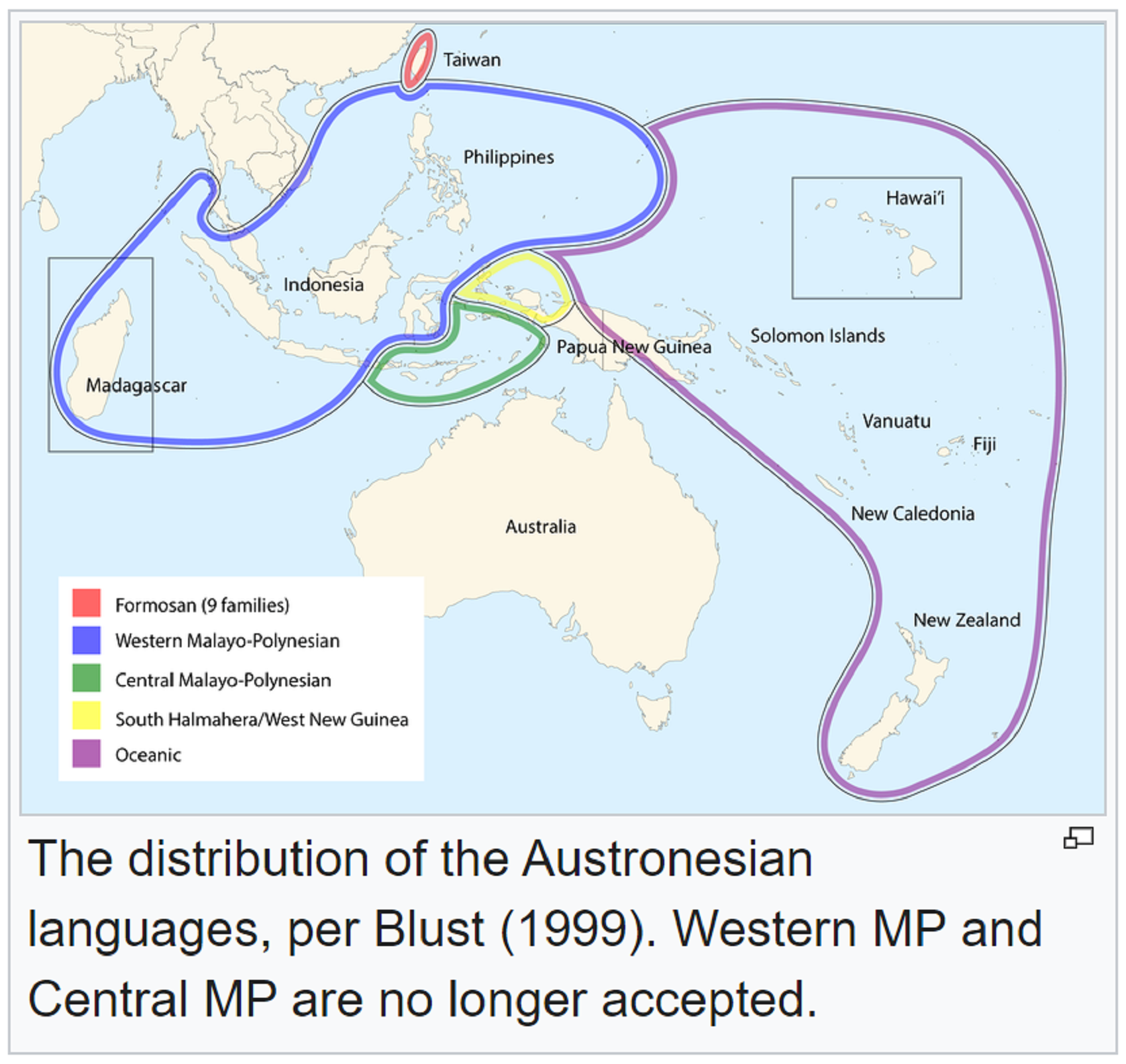
“Oceanic mythology makes a little more sense when divided into Melanesian Mythology, Micronesian Mythology, and Polynesian Mythology which includes the famous Maori Mythology.” ref
The Sky Father Dyeus (Indo European Religion Lectures #3): https://www.youtube.com/watch?v=EFzaJDb92dM
The Many Faces Of The Indo-European Sky Father: https://www.youtube.com/shorts/4zsX1wujPu8
The Indo-European Sky Father https://www.youtube.com/watch?v=RIfB1LI79OQ
Dyeus: The Indo-European Sky Father https://www.youtube.com/watch?v=BUIQAGqhSj0&t=1s
“The “sky” and “god of the sky” are found to be so close in the terminology of certain of the Finno-Ugric peoples (for example, Cheremis Jumo, Finnish Jumala, Udmurt Inmar, Komi Jen, Nenets Num) that the association cannot be a recent phenomenon.” ref
“Worship of Father Heaven and Mother Earth is almost universal in Siberia, and is found in North America as well.” ref
Mother Earth-Father Sky
“In a time before history, in a harsh and beautiful land near the top of the world, womanhood comes cruelly and suddenly to beautiful, young Chagak. Surviving the brutal massacre of her tribe, she sets out across the icy waters off America’s northwest coast on an astonishing odyssey that will reveal to Chagak powerful secrets of the earth and sky… and the mysteries of love and loss.” https://www.amazon.com/Mother-Earth-Father-Sky-Harrison/dp/B000SIE7KI
“Mother Earth Father Sky is the first novel in the trilogy. In this novel, Chagak’s tribe is attacked by a warlike tribe, including Man-Who-Kills, who rapes her and is subsequently killed, but becomes the father of her child, Samiq, who becomes an important character in the subsequent novels. It was chosen among the Best Books for Young Adults by the American Library Association in 1991 and was a Main Selection of the Literary Guild Book Club.” ref
Father Sky Among Indigenous Peoples
“In the Aranda-speaking areas of Australia it was believed that the earth and the sky had always existed and had always been the home of Supernatural Beings. The western Aranda believe that the sky is inhabited by an Emu-footed Great Father who is also the Eternal Youth. He has dog-footed wives and many sons and daughters and they live on fruits and vegetables in a land that is eternally green and unaffected by droughts.” ref
Click here for a Father Sky and Mother Earth, a Navajo Creation Story
“Zuni religion centered on the three most powerful of their deities: Earth Mother, Sun Father, and Moonlight-Giving Mother. The religion is katsina-based, and ceremonies occur during winter solstice, summer, harvest, and again in winter.” ref
“Haplogroup B sequences appear to be indigenous to the Southwest and one of two of the six sequences reported from Mesoamerica, as well as the Zuni, Cora, Mixe, and Nahua.” ref
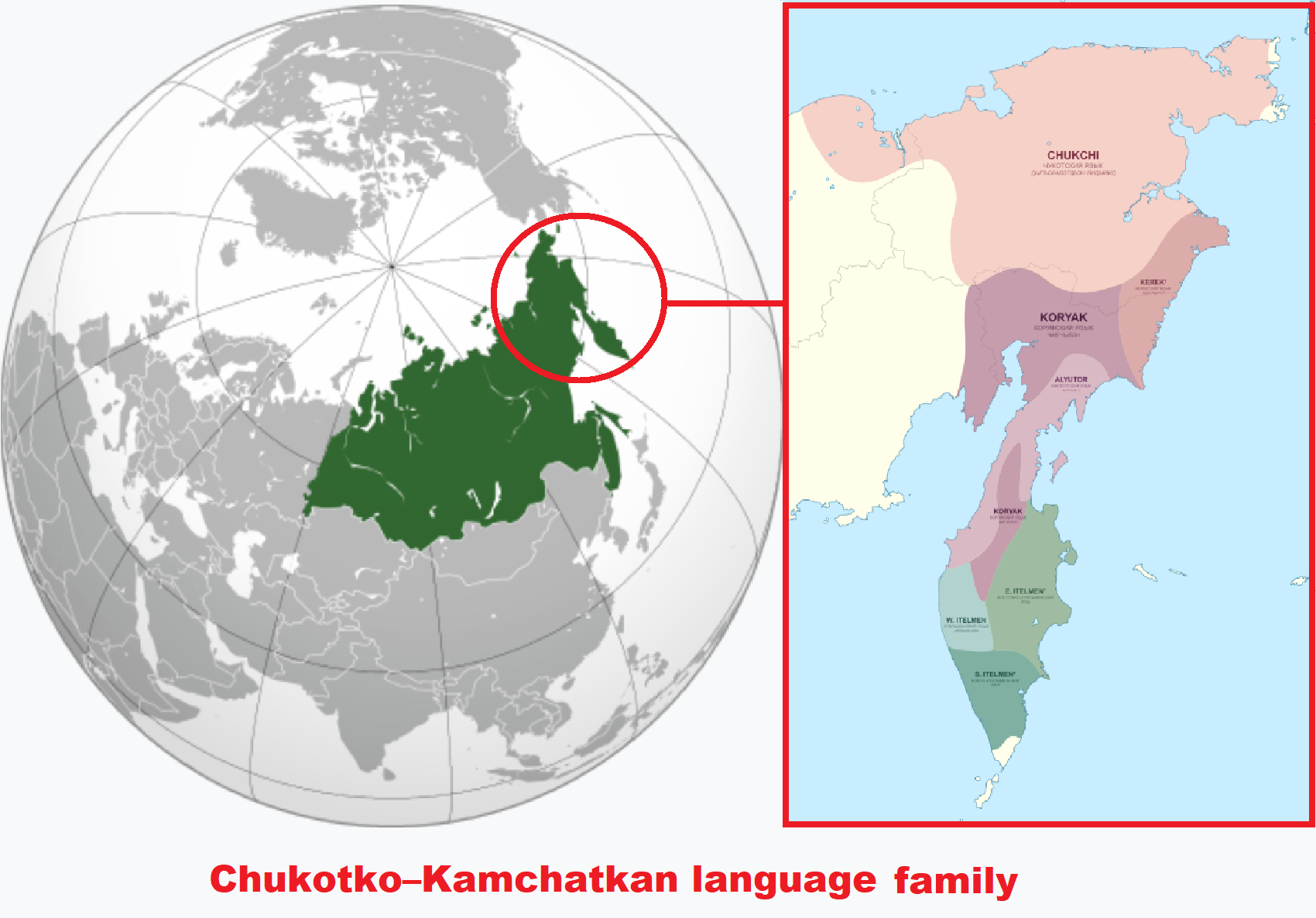
Chukotko-Kamchatkan language family
The Sun, the Moon and Firmament in Chukchi Mythology
“According to Chukchi religion, the most important celestial character is the Sun. In numerous cultures around the world the Sun, besides being the embodiment of light and warmth, is seen as masculine. According to Vladimir Bogoraz-Tan the Chukchis describe the Sun as an individual being (vaúrgún). The Sun is depicted as a man in shining clothes (in copper or gold) who travels around the sky by a dogsled or reindeer team. The reindeer have golden or copper horns. He extended one of his rays to the Earth, married an earthborn girl, and pulled her up to the sky with the ray. Every evening the Sun returns to his wife. The wife is called Kavra-ŋŋa ‘Woman Who Goes Round’. It can be gathered from the name that in Chukchi mythology the Sun and his wife live as nomadic people – in a portable house.” ref
“Tradition dictates that there must always be the female and male portion of the chum (tent). Num – the spirit of the sky and Ya-Nebya – the Mother of the Earth.” ref
“In the Nentsy/Nenets religion of Siberian shamanism, the earth and all living things were created by the god Num (Sky Father). There is a benevolent spirit, Ya-nebya (Mother Earth).” ref
The Old Man of the Earth
“Among the Nenets people of Siberia, the male Num was the sky god, the good creator of earth, and the high god of the Nenets. Among the Nenets people of Siberia, Nga was the god of death, as well as one of two demiurges, or supreme gods. According to one story, the world threatened to collapse on itself. To try to halt this cataclysm a shaman sought the advice of the other demiurge, Num. The shaman was advised to travel below the earth, to Nga’s domain, and call upon him. The shaman did as told and was wed with Nga’s daughter. After that point he began to support the world in his hand and became known as “The Old Man of the Earth.” In another myth, Num and Nga create the world, collaborating and also competing with each other — the myth is an example of dualistic cosmology.” ref, ref

“The ANE lineage is defined by association with the MA-1, or “Mal’ta boy“, the remains of an individual who lived during the Last Glacial Maximum, 24,000 years ago in central Siberia. Populations genetically similar to MA-1 were an important genetic contributor to Native Americans, Europeans, Ancient Central Asians, South Asians, and some East Asian groups (such as the Ainu people), in order of significance.” ref
“Groups partially derived from the Ancient North Eurasians: Eastern Hunter-Gatherer (R1a-M417, around 8,400 years ago), Scandinavian Hunter-Gatherer (around 8,000 years ago), Ancient Beringian/Ancestral Native American (around 11,500 years ago), West Siberian Hunter-Gatherer, Western Steppe Herders (closely related to the Yamnaya culture), Late Upper Paeolithic Lake Baikal (14,050-13,770 years ago), Lake Baikal Holocene (around 11,650 years ago to the present), Jōmon people, pre-Neolithic population of Japan (and present-day Ainu people).” ref
“Since the term ‘Ancient North Eurasian’ refers to a genetic bridge of connected mating networks, scholars of comparative mythology have argued that they probably shared myths and beliefs that could be reconstructed via the comparison of stories attested within cultures that were not in contact for millennia and stretched from the Pontic–Caspian steppe to the American continent.” ref
“For instance, the mytheme of the dog guarding the Otherworld possibly stems from an older Ancient North Eurasian belief, as suggested by similar motifs found in Indo-European, Native American, and Siberian mythology. In Siouan, Algonquian, Iroquoian, and in Central and South American beliefs, a fierce guard dog was located in the Milky Way, perceived as the path of souls in the afterlife, and getting past it was a test. The Siberian Chukchi and Tungus believed in a guardian-of-the-afterlife dog and a spirit dog that would absorb the dead man’s soul and act as a guide in the afterlife. In Indo-European myths, the figure of the dog is embodied by Cerberus, Sarvarā, and Garmr. Anthony and Brown note that it might be one of the oldest mythemes recoverable through comparative mythology.” ref
“A second canid-related series of beliefs, myths, and rituals connected dogs with healing rather than death. For instance, Ancient Near Eastern and Turkic–Kipchaq myths are prone to associate dogs with healing and generally categorized dogs as impure. A similar myth-pattern is assumed for the Eneolithic site of Botai in Kazakhstan, dated to 3500 BC, which might represent the dog as absorber of illness and guardian of the household against disease and evil. In Mesopotamia, the goddess Nintinugga, associated with healing, was accompanied or symbolized by dogs. Similar absorbent-puppy healing and sacrifice rituals were practiced in Greece and Italy, among the Hittites, again possibly influenced by Near Eastern traditions.” ref
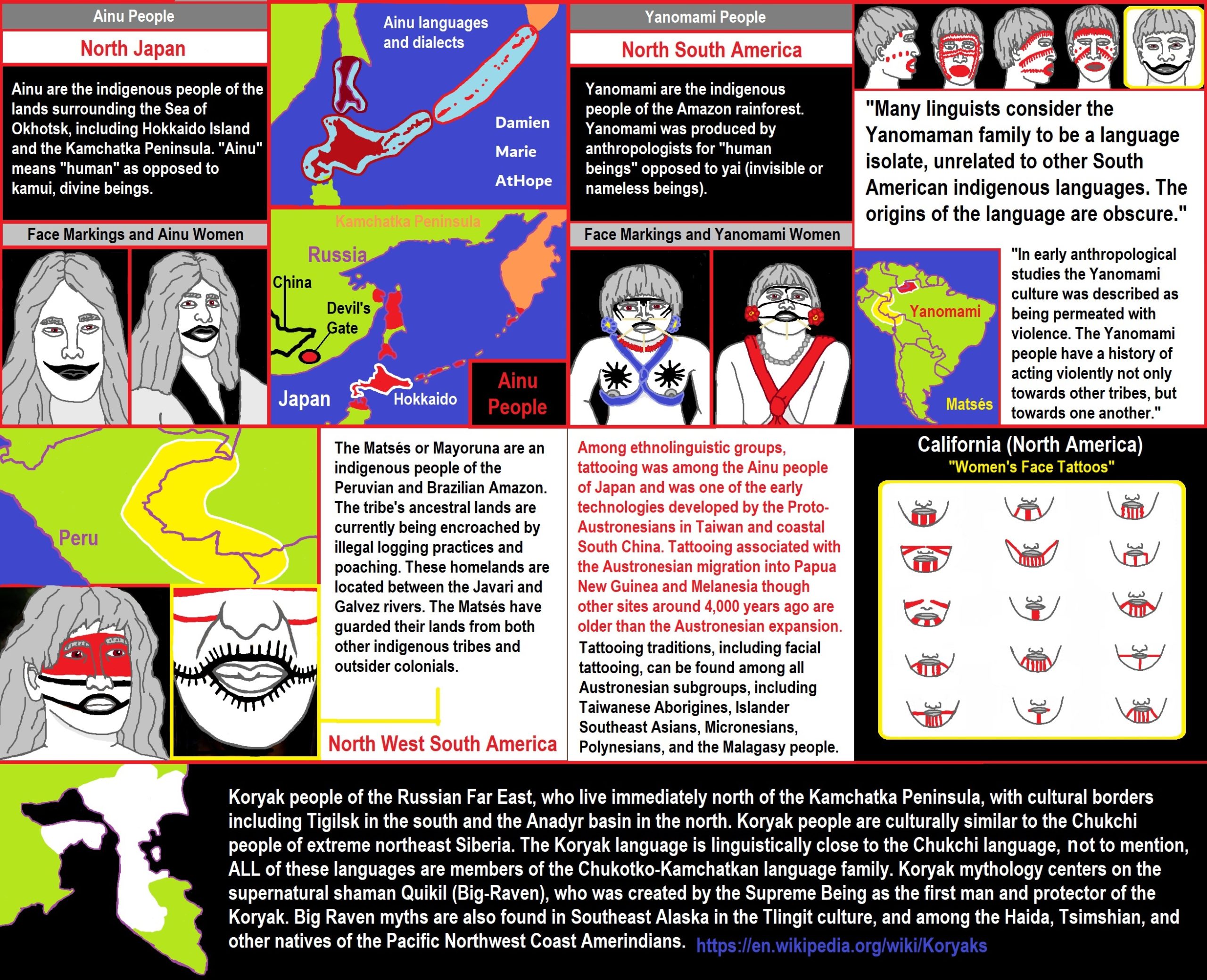
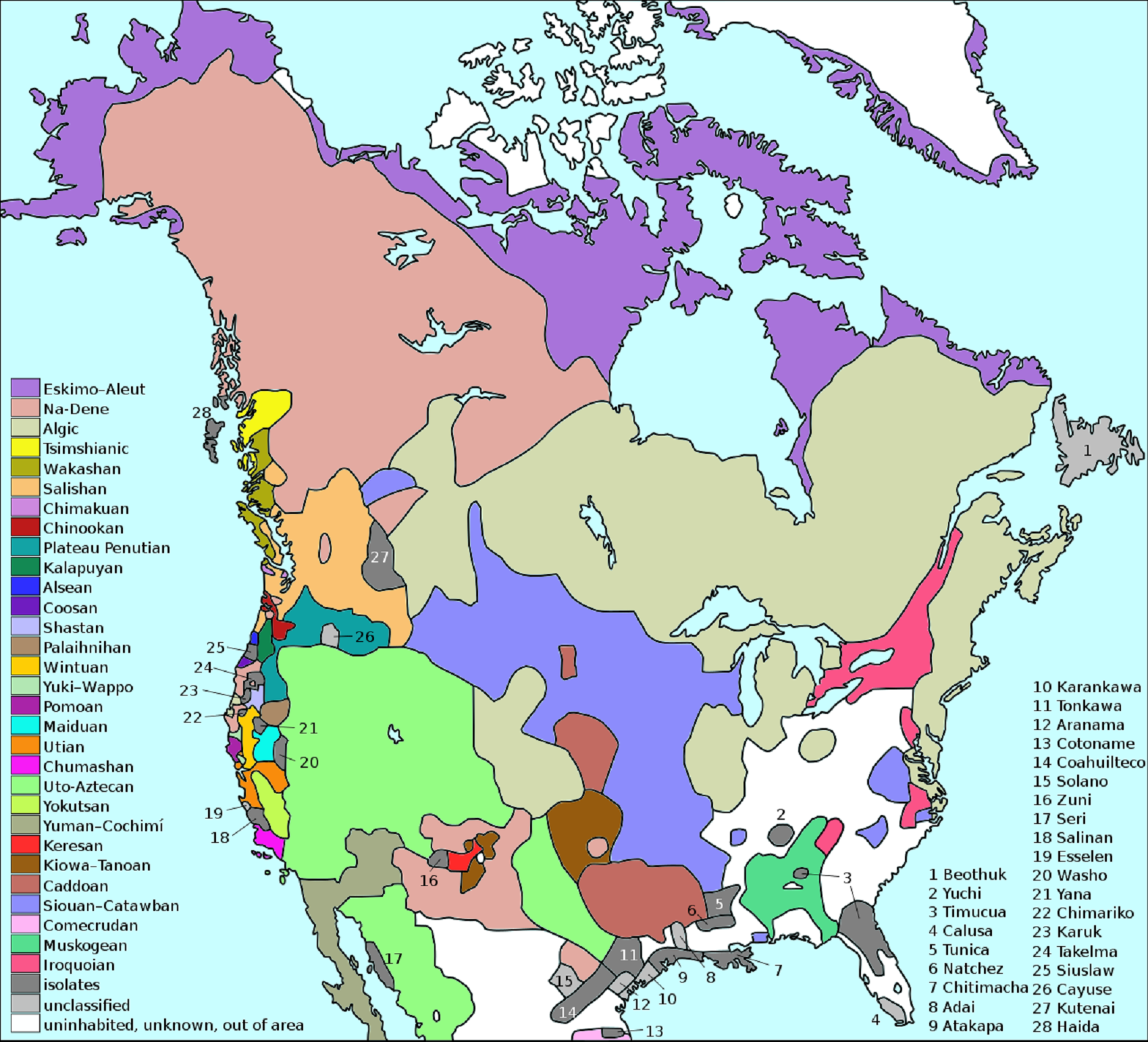
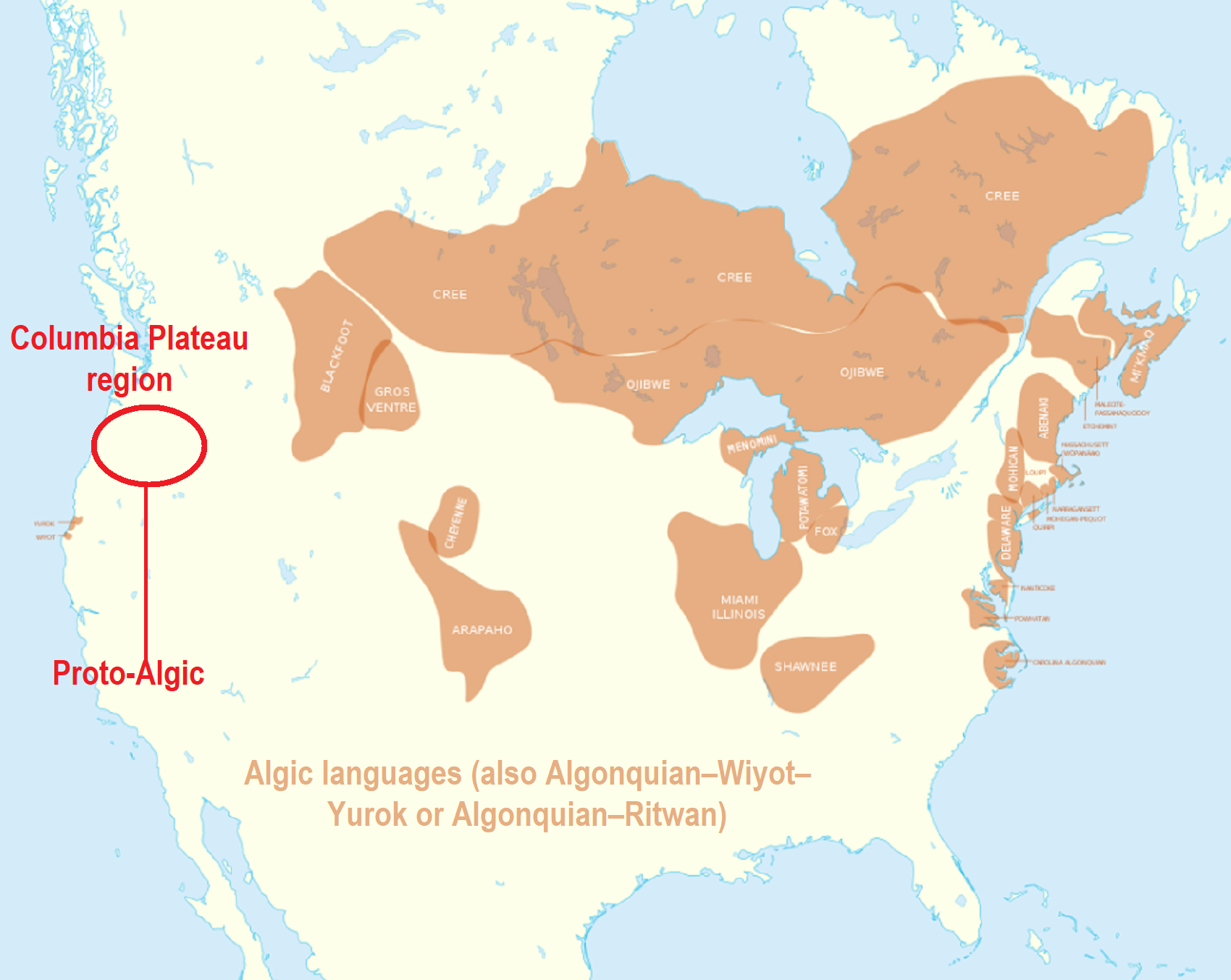
“Proto-Algonquian (commonly abbreviated PA) is the proto-language from which the various Algonquian languages are descended. It is generally estimated to have been spoken around 2,500 to 3,000 years ago, but there is less agreement on where it was spoken. The Algonquian family, which is a branch of the larger Algic language family, is usually divided into three subgroups: Eastern Algonquian, which is a genetic subgroup, and Central Algonquian and Plains Algonquian, both of which are areal groupings. In the historical linguistics of North America, Proto-Algonquian is one of the best studied, most thoroughly reconstructed proto-languages. It is descended from Proto-Algic.” ref
“Most Algic languages belong to the Algonquian subfamily, dispersed over a broad area from the Rocky Mountains to Atlantic Canada. The other Algic languages are the Yurok and Wiyot of northwestern California, which, despite their geographic proximity, are not closely related. All these languages descend from Proto-Algic, a second-order proto-language estimated to have been spoken about 7,000 years ago and reconstructed using the reconstructed Proto-Algonquian language and the Wiyot and Yurok languages.” ref
“Proto-Algic (sometimes abbreviated PAc) is the proto-language from which the Algic languages (Wiyot language, Yurok language, and Proto-Algonquian) are descended. It is estimated to have been spoken about 7,000 years ago somewhere in the American Northwest, possibly around the Columbia Plateau.” ref
“Gitche Manitou: This name and its many linguistic variants mean “Great Spirit,” and is used to refer to the Creator (God) in the Algonquian tribes, with no human attributes (including gender) and is rarely personified in Algonquian folklore. myths and legends from the Chippewa, Algonquin, Ottawa, Potawatomi, Menominee, Cree, Abenaki, Penobscot, Maliseet, Passamaquoddy, and Mi’kmaq tribes, eleven Algonquian tribes of the eastern woodlands who speak similar languages and share many cultural similarities, including much of their folklore.” ref
Native American Grandmother Spirits:
Grandmother Fox (Anishinabe/Cree)
Grandmother Woodchuck (Wabanaki)
Granny Squannit (Wampanoag)
Mouse Woman (Haida)
Nokomis (Anishinabe)
Nukumi (Mi’kmaq)
*Our Grandmother (Shawnee)
Spider Grandmother (Hopi) ref
“Yurok myths ascribed creation to Wohpekumew, “widower across the ocean.” Their world was thought to float on water, and, as Kroeber related, “at the head of the river in the sky, where the Deerskin dance is danced nightly, are a gigantic white coyote and his yellow mate.” Yurok dances expressed their beliefs.” ref
“Wiyots, the traditional stories of related tribes like the Yurok and Hoopa tribes are very similar. Gudatrigakwitl: This means “The Ancient One Above” in the Wiyot language, and is the Wiyot name for the Creator (God.) Gudatrigakwitl is a divine spirit with no human form or attributes and is never personified in Wiyot myths.” ref
“Researchers infer the age of Proto-Uto-Aztecan to be around 4,100 years (3,258–5,025 years) and identify the most likely homeland to be near what is now Southern California.” ref
Pre-Columbian civilizations – Cosmology
“The Maya believed that 13 heavens were arranged in layers above the earth, which itself rested on the back of a huge crocodile or reptilian monster floating on the ocean. Under the earth were nine underworlds, also arranged in layers. Thirteen gods, the Oxlahuntiku, presided over the heavens; nine gods, the Bolontiku, ruled the subterranean worlds.” ref
“Aztec, has similarities with Maya religious beliefs, such as the nine deities sculptured on the walls of a 7th-century crypt at Palenque, shows that they were part of the Classic Maya cosmology.” ref
“In accordance with other meso-American traditions, the Aztecs experienced “nature” in all its complexity not as a mere mundane entity out there, but rather as deeply connected with superhuman powers and beings, manifesting themselves in countless aspects of the surrounding world and a sacred landscape. Earth itself, for example, could be viewed as a grand living being, and in pictorial manuscripts it is often depicted as a monstrous caiman with devouring mouth(s); hills are conceived as vessels containing subterranean waters, with caves as sacred entrance. But from the beginning of creation and the origination of life, man’s activity and destiny is intertwined with an unstable interplay of living cosmic forces, according to the Aztec cosmovision, and human coping had to take place through a variety of ritual forms, since nothing would grow, nothing would endure, if “our Mother, our Father, Lord of Earth and Sun” would not be nourished continuously by ritual and sacrifice.” ref
“Sacred topography: from mythic origins to a new Center of the World. Narrative accounts from the Precolumbian Aztec tradition trace the history of the “Mexica” back into mythic beginnings. As in other mythic records, especially of culturally and linguistically related peoples of the Uto-Aztecan language-family, the creation(s) of man – or life, generally – took place in subterranean bowels of earth: The Mexica are said to have finally “surfaced” at, or through, “seven caves” (Chicomoztoc). Other sources speak about a primordial dwelling on an island called “Aztlan” (“White Place”, “Place of Dawn/Origin”), and from this mythic location, probably somewhere in Northwestern Mexico, they started a long migration (ca. 200 years) southward in the eleventh/twelfth century.” ref
“Mexica had a huge pantheon of numina, divine powers or gods (teotl) forces and powers of nature. Huitzilopochtli and the important rain-god Tlaloc, worshipped together on Tenochtitlan’s huge double-pyramid “Templo Mayor.” ref
“Southern Paiute people believe that supernatural power resides in all living things and in many nonanimate objects found in nature as well as in the sun, moon, stars, wind, and so on. Persons are free to establish a relationship with objects of power, but only doctors or shamans possess enough of it to aid in healing.” ref
Cupeño a Native American tribe of Southern California.
“The tribe is divided into two moieties, the Coyote and Wildcat, which are divided into several patrilineal clans. Clans are led by hereditary male clan leaders and assistant leaders.” ref
Cupeno Legends (Folklore, Myths, and Traditional Indian Stories)
“Mukat: The creator god of Cupeno mythology. Unlike Native cultures in the rest of North America, the Cupeno and other Sonoran tribes of southeast California and southwestern Arizona did not consider their Creator to be a benevolent spirit or a friend to humankind– he was capricious and deceitful, made the life of the ancients miserable, and was eventually slain by his own creations after he introduced death to the world.” ref
Hopi religion
“Tawa (the sun god) and Spider Woman (Spider Grandmother) who is identified with the Earth Goddess separate themselves to create other lesser gods, then create the earth and its creatures. Spider Woman and Tawa realized the creatures they made were not alive so they gave them souls. After this, they created woman and man from their own likeness and sang them to life. Spider Grandmother (Hopi Kokyangwuti, Navajo Na’ashjé’ii Asdzáá) is an important figure in the mythology, oral traditions, and folklore of many Native American cultures, especially in the Southwestern United States. It is also noted that anthropologist Fred Eggan found this version to be close to the Zuni creation myth.” ref
“In Navajo mythology, Spider Woman (Na’ashjé’íí Asdzáá) is the constant helper and protector of humans. Spider Woman is also said to cast her web like a net to capture and eat misbehaving children. She spent time on a rock aptly named spider rock which is said to have been turned white from the bones resting in the sun. The Diné Bahaneʼ creation narrative of the Navajo (recorded 1928) includes a mention of “Spider Woman and Spider Man”, who introduced the spindle and the loom. In another myth, “Spider Woman” aided the twins (born of the Sun and the Changing Woman) in killing the monsters that were endangering “The Earth surface People” by giving them “feather hoops” that protected them from attacks. In another myth, two women come to “Spider Woman” hoping for a solution to help the Navajo people bear the winter. She taught the women how to make yarn from sheep wool, and to dye it and weave it. From this, the women taught the other villagers how to do these things, and the village was able to make rugs to use and sell to help survive the winter.” ref
“In The Zuni Emergence Myth, Water Spider appears and uses his body and long legs to find the center of the earth so that the Zuni people could live there in order for their views to not be swayed in one way. Also, according to the Zuni, string games were given to them by Grandmother Spider. In Pueblo tradition, Spider Old Woman appears as the equivalent of “Thought Woman” (Keresan Tse-che-nako, Sussistanako): while the name of “Thought Woman” was reserved for sacred ceremonies, Spider Woman would be used in the context of everyday discussion or teaching. Karl Taube in 1983 tentatively connected the South Western “Spider Woman” mytheme with the pre-Columbian Teotihuacan “Great Goddess” known from pictorial representations.” ref
Spider Grandmother
“The Ojibwe people (Chippewa) of southern Canada and northern US speak of Spider Woman, known as Asibikaashi, as a helper of the people, and inspiring mothers (or other close female relatives) to weave protective spider web charms. In Lakota tradition, the (male) trickster spirit Iktomi appears in the form of a spider. In the Northwest, the Coos people of Oregon have their version of a Spider Grandmother traditional tale. The Choctaw people of Tennessee and Mississippi tell the story of Grandmother Spider stealing fire, then after animals refused it, bringing fire to humans. Susan Hazen-Hammond (1997, 1999) compiled numerous tales collected from various tribes. In the Pacific there is a connection between Spider Grandmother and the Moon Goddess.” ref
Blackfeet Creator Sun and his wife Earth Woman
“Blackfeet migrated between what are now the United States and Canada, currently live in Montana and Alberta. Natosi, the Blackfoot sun god (Natos, Notos). In Blackfeet Indian mythology, the supernatural world is dominated by the Sun. The Sun (Nah-too-si; Super powered or Holiness) is equated with the Creator (Apistotoke) by some anthropologists. The Creator is said to have created the earth and everything in the universe. Nah-too-si is sometimes personified by the mystical Napi, or Old Man. Napi was said to have been sent by the Nah-too-si to teach people how to live a sinless life, like He and his wife, Ksah-koom-aukie, Earth Woman. A-pi-su’-ahts(early riser) was the only surviving child of Sun and Moon, after the rest were attacked and killed by pelicans.” ref
“Ceremonies include the Sun Dance, called Medicine Lodge by the Blackfoot in English, in which sacrifices would be made to Sun. According to the legend the ceremony, the Sun Dance, was started when a human woman, named Feather-woman fell in love with Morning Star, the child of Sun and Moon. After plucking the sacred turnip she and her half-divine son were banished from the Sky-Country, and eventually she died leaving her son, Poïa (Scar-Face), orphaned. Eventually he makes his way back to Sky-Country and because his grandparents, Sun and Moon, took mercy on him he honored them by doing the Sun Dance once a year. These sacrifices ranged from offering sweat, through the use of sweat lodges to actual offerings of flesh, for example men from the tribe would rip off ropes tied to their skin as sacrifices to Sun.” ref
Nakuset, the Mi’kmaq sun god (Niskam, Nishkam) Also known as: Grandfather Sun
“In Mi’kmaq mythology, Nákúset, the Sun, was the first being created by the Creator god Kisu’lkw. After this initial creation, Nakuset was the spirit who carried out most divine plans. He is often personified as an old man in Micmac myth, and his alternate name, Niskam, literally means “grandfather.” ref
“Kisu’lk (gee-soolg) is the one who made everything. Sometimes Kisu’lk is referred to as Kji Niskam (Jee nis-gam), or the Great Spirit. Neither word implies gender, because it is not important whether the Great Spirit is a he or a she.” ref
Ababinili, the Creator God of the Chickasaw
High god, Creator, sun god and related figures in other tribes: Unetlanvhi (Cherokee), Gitchy Manitou (Ojibway), Ahone (Powhatan)
“Ababinili means “one who sits above” or “dwells above,” and he is associated with the Sun and considered to be a divine spirit with no human form or attributes and is not normally personified in Chickasaw myths.” ref
Native American Creation Gods from Various Tribes
- Ababinili(Chickasaw Indian Creator)
Above Old Man(Wiyot Creator)
Agu’gux (Aleut Creator)
Ahone (Powhatan Indian Creator)
Akba Atatdia (Crow Creator)
Ayanat Caddi (Caddo Creator)
Breath-Maker (Seminole Creator)
Coyote (West Coast Indian Creator)
Earth-Maker (Hochunk Creator)
First Creator (Mandan Creator)
Gitchi Manitou (Anishinabe Creator)
Great Spirit (Many tribes)
Isha (Shoshone Indian Creator)
Ixtcibenihehat (Gros Ventre Creator)
Jamul (Achumawi Indian Creator)
Keri and Kame (Bakairi Creator Gods)
Kickerom (Lenape Indian Creator)
Kisulkw (Mi’kmaq Indian Creator)
Kujuli (Wayana Creator God)
Kururumany (Arawak Creator God)
Maheo (Cheyenne Creator God)
Makonaima (Cariban Indian Creator)
Mopo (Apalai Creator God)
Mukot (Cahuilla Creator God)
Nesaru (Arikara Creator God)
Nitosi (Dene Creator)
Old Man (Blackfoot Creator God)
Q’uq’umatz (Mayan Creator God)
Raweno (Iroquois Creator God)
Saya (Beaver Indian Creator)
Sibo (Bribri Indian Creator)
Silver-Fox (Northern California Creator)
Sipakmat (Cocopa Creator God)
Spider Above (Arapaho Creator God)
Spider Grandmother (Hopi Creator Goddess)
Tabaldak (Abenaki Creator God)
Tamuchi (Carib Indian Creator)
Tirawa (Pawnee Creator)
Unetlanvhi (Cherokee Creator)
Wakanda (Omaha Creator)
Wakan Tanka (Sioux Creator)
Yuttore (Carrier Creator God) ref
The names of the Goddesses below originate from the following countries: the Artic Circle, Canada, Greenland, and the United States.
Aag:hu Gu:gu – Beautiful Woman
Aataentsic – Woman Who Fell from the Sky
Ackwin – Grandmother
Ahe’a – Oh My!
Ahmetolela Okya – Rainbow Dancer Girl
Ahola Mana – Germ God Maiden
Ahsonnutli – Turquoise Woman
Aittsamka – Abalone-Shell Woman
Akna – Moon, The Mother
Akycha – Sun
Amayicoyondi – Red Mountain
Ana Maria – Sea Hamut
Ang-chin Mana – White Corn Maiden
Angak’chin’ Mana – Long-haired Kachina Girl
Angwushahai-i – Crow Bride
Angwusnasomtaka – Crow Mother
‘Anltani – Cornbeetle
Anog Ite – Two-Faced Woman
Anoolikwotsaix – Guardian of Secrets
Anya Kachin’ Mana – Maid Who Grinds Corn
Apache Woman – Earth Woman
Apish – Corn Silk
Arnapkapfaluk – Big, Bad Woman
Arnaknagsak – Old Mother, Majestic Woman
Asdzaa Dootlifii – Turquoise Woman
Ashi esdza – Salt WomanOjibway Pow-wow Dancers
Atavish – Empty
Atbilxaniatliiax – The One with Abalone on Her Hat
Atitxmana – The Clang of Copper
Atse ataed – First Girl
Atsentma – Meat Mother
Aukjuk – Disemboweller
Awatovi Soyok Wuhti – Ogre Woman
Awitelin Tsita – Four-Fold Vessel
Bikeh Hozho – Happiness Girl
Bikeh Xozo – Happiness
Chakwaina Asho-adta – Chakwaina’s Grandmother
Chakwaina Okya – Warrior Woman, Giant, Owner/Keeper of the Game
Chilili Okya – Bear Old Woman, Bear Foot Woman
Chimon mana – Jimson Weed Maiden
Chulavete – Morning Star
Chup – Mother of the Indians
Cisiud – Female Siud (Guardian)
Cu-piritta-ka – Female White Star
Dah-ko-beed – Tacoma
Dji Sisnaxitl – Slaveowner
Duh-hwahk – Clear Sky
Ee-eh-ch-choo-ri-ch’ahm-nin – Yellow Corn Maidens
Eithinoha – Earth Goddess, Our Mother
Esceheman – Our Grandmother
Estsanathlehi – Self-renewing One
Gaende’sonk – Gusts of Wind
Gahondjidahonk – She Who is Burned in Many Places
Gawaudnduk – The Guardianess
Gendenwitha – She Who Brings the Day
Genetaska – Mother of Nations, Maiden Peace Queen
Geyaguga – Sun That Dwells in the Night
Gogyeng So Wuhti – Spider Grandmother
Gyhldeptis – Lady Hanging Hair
Hahai-i Wuhti – Pour Water Woman, Kachina Mother
Haialilaqs – Healing Woman
Haka Lasi – Loon Woman
Han – Black of Darkness
Hano Mana – Tewa Girl
Hatcher – First Woman
H’ativa – Mother-breathing Life
Hawichyepam maapuch – All-powerful
Hayicanako – Old Woman Underneath
He’-e’-e – Warrior Maid
Hemis Kachin’ Mana – Hemis Kachina Girl
Hetethlokya – Clay Woman
He’wuhti – Warrior Maiden
Hihankara – Owl Maker
Hilili Okya – Snake Dance Girl
Hokoha Okya – Harvest Dance Girl
Hongak – Canadian Wild Goose
Hopi Shalako Mana – Hopi (Peaceful People) Shalako Girl
Horo Mana – Comb Hair Upwards Girl
Hukyangkwu – Wind Woman
Halluk Miyumko – Morning Star and the Pleiades
Huru’ Ingwuhti – Hard Beings Woman
Hutsipamamamau?u – Ocean Woman
Iemaparu – Corn Mother
Igaehinvdo – Sun
Ikas – Mother Earth
Irdlirvirisissong – Disemboweller
Ixuixiwi – Our Mother the Earth
Iyatiku – Corn Mother
Kachina – Spirit Respect
Ka-mu-iu-dr-ma-giu-iu-e-ba – Mother of the Waters
Kachin’ Mana – Yellow Corn Girl
Kadhutetash – Old Woman Who Never Dies
Kahaila Kachin’ Mana – Turtle Maiden
Kamaits – Old Woman
Kanaeski Anaiyehi – Water Spider
Kanene Ski Amai Yehi – Grandmother Spider
Kanuslaliam – Pretty Copper
Kashatskihakatidise – Bright-shining Woman
Kashinako – White Woman of the East
Keninqas – Crow
Ketq Skwayne – Grandmother Toad
Kocha Kachin’ Mana – White Kachina Girl
Kocha Mana – White Girl
Kochinako – Yellow Woman
Kohak Oka – White Shell Woman
Kokopell’ Mana – Assassin Fly Girl
Kokumthena – Our Grandmother
Kokwelashokti Oken’ona – Kachina Grinding Girl
Kokwele – Kachina Girl, God Girl
Kokyan Wuhti – Spider Grandmother
Koyemshi – Old Dance Woman
Ksem-wa’tsq – Land-otter Woman
Ku Gu – Mother Kachina
Kumanshi Okya – Comanche Girl
Kurkanninako – Red Woman of the South
Kuwanlelenta – To Make Beautiful Surroundings
Kyhapalitsa – Mountain Lion Girl
Kwamumu Okya – Navajo Girl
La’idamlulum Ku’le – Morning Star Woman
La’pilewe Okya – Feather String Girl, Buffalo Dance Girl
Luk – Grizzly Bear
Mahakh – Bitch Mother
Maka – Earth
Malahshishinish – Scorpion Woman
Malokatsiki – Salt Woman
Man-el – Moon Maiden
Masahkare – Grandmother Moon
Masakamekokiu – Grandmother of Everything That Breathes
Masan wuhti – Motioning Woman
Masau’u Kachin’ Mana – Death Kachina Girl
Maskikhwsu – Toad Woman
Maya Owichapaha – She Who Pushes Them Over the Bank
Mem Loimis – Water Woman
Merrinako – Blue Woman of the West
Me-suk-kum-me-go-kwa – Divine Mother
Mesuk Kummik Okwi – Our Grandmother
Mi-ka-k’e Hondon – Night Star Grandmother
Mi-ka-k’eu-ki-thac’in – Grandmother Double-Star
Mina Koya – Salt Woman
Miritatsiec – Moon Woma
Moing’ iima – Earth
Mong’ wuhti – Great Horned Owl Woman
Mo’n-sho’n – Sacred Mother Earth
Mu Bachu Okya – Navajo Girl
Mu’satewichi Okya – Hopi Butterfly Dance Girl
Mucaias Mana – Buffalo Maid
Mukikwe Okya – Hopi Harvest Dance Girl
Munainako – Dark Woman of the Nadir
Ne’le – Deer Dance Girl
Na?ackjeii Esdzaa – Spider Woman
Naasun – Earth Virgin
Naestsan – Woman Horizontal
Nahalish’ Okya – Corn Dance Girl
Nahokhos baadi – Who-Carries-Fire-In-Her-Basket
Nahosdzaan Esdza – Earth Woman
Nahotsoi asdza’a’ – Evening Twilight Woman
Nan chu kweejo – Clay Mother
Nanaqasikakwe – Treated-Like-a-Chief
Nangkwijo – Earth
Nayaanxatisel – Whirlwind Woman, Caterpillar
Nenalaatseqa – Day-Receptacle-Woman
Neoga – Fawn
Nerrivik – Food Dish, Place of Food
Nivikkaa – Woman Thrown Backward Over the Edge
Nitsabaad – Female Rain
Nokomis – Grandmother, Grandmother Moon
Noogumee – Whale Mother
No’oma Cawaneyung – Grandmother at the South
Norwan – Dancing Porcupine Woman
Nuliajuk – Dear Wife
Nunuoska – Mother Nature
Nuptadi – Young Grandmother
Nuvak’chin’ Mana – Cold-Bringing-Woman, Snow Maiden
Nuxmelnimana – Stick-breaker
Ohoyo Osh Chishba – Unknown Woman
Oky’enawe – Grinding Girl
Omau-u Wuhti – Thunder Kachina
Onatha – Spirit of Wheat
Onchi – Grandmother Moon
Ondoutaehte – War
Onenha – Corn
Ong Wuhti – Salt Woman
Pachavuin Mana – Harvest Girl
Pahpobi Kwiyo – Fire Flower Woman
Paiowa – Evening Star
Pakhik’ Mana – Water Drinking Girl
Pakimna – Mistress of the Caribou
Pakitsumanga – Mother of the Caribou
Pakok’ Okya – Navajo Kachina Girl
Pakwaekasiasit – Arrow-head Finger
Pana – Woman-up-there
Pasikiapa Dese Akenona Okya – Wide Sleeves Pottery Drum Girl
Pasom Mana – Spiderwort Maiden
Pasowee – Buffalo Woman
Pinga – The One Up There
Pitkamikokiu – Mother of the Winds
Plash-plash – White Spots
Pokinsquss – Jug Woman
Poli Kachina Mana – Butterfly Girl
Ptehincalaska – White Buffalo Calf Maiden
Qamaits – Sorrowmaker
Qopimpmana – Rising Dust
Quisserrinkao – Slightly Yellow Woman of the Zenith
Ragno – Old Mother Goddess
Sakwa Mana – Blue Corn Maiden
Sakwats Mana – Runner Maiden
Sanvna – One-down-on-the-sea-bottom
Sattuma Eeva – Spirit of the Sea Depths
Sehu – Corn, Maize
Shiwanokia – Priest Woman
Sila – Ruler of the Elements
Sio Mana – Zuni Kachina Maid
Sio Shalako Mana – Zuni Shalako Maid
Si-tcom’pa Ma-so-its – Grandmother of the Sea
Skil-djaadai – Property Woman
Skule – Meadowlark
Skwanat.ama.a – The Mourner
Snutkanals – Box
So Wuhti – Grandmother
Soat-saki – Feather Woman
Soyoko – Monster Woman
Superguksoak – Old Woman
Sussistinnako – Thought Woman
Sutalidihi – Six Killer
Sximana – Light-bearer
Ta tha-bthin – Three Deer
Takanaluk arnaluk – Woman Down There
Takursh Mana – Yellow Girl
Talatumsi – Dawn Woman
Tamambia – Our Mother
Tasap Kachin’ Mana – Navajo Kachina Girl
Tate – Wind
Tcalyel – Darkness
Tcikee Cac Nadleehe – Changing Bear Maiden
Tcuperekata – Evening Star
Thlewekwe Okya – Sword Swallower Girl
Tih-kuyi-wuhti – Child-Water Woman, Mother of the Game Animals
Tikuoi Wuhti – The Outcast Woman
Tipiskawipisim – Moon
Tlaqwagi’ layugwa – Copper-maker-woman
Tikelikera – Mole
Tootega – Old Woman
Tootooch – Thunderbird
T’otowaxsemalaga – Swell Woman
Tsecls – Grandmother White Mouse
Tsek’any’agojo – Evening Star
Tsiyayoji – Meadowlark Woman
Tsore Jowa – Eagle
Tugtut Igfianut – Mother of Caribou
Tukwinong Mana – Cumulous Cloud Kachina Girl
Tuwapongtumsi – Earth Altar Young Woman
Uiniyumayuituq – The One Who Did Not Want a Husband
Uivarahugiyaq – Wolf Mother
Ullughmiut – Inhabitants of the Daytime
Unelanuhi – The Apportioner
Unhcegila – Females of the Unktehi
Unk – Contention
Utctsityi – Mother of the Pueblo Indians
Uti Hiata – Mother Corn
Wah-kah-nee – Drifting Maiden
Wajashk – Muskrat Woman
Wakwiyo – Wind Woman
Waoyakila – Tide-Woman
Whaht-kay – Fair Maiden
Winonah – Nourisher
Wohpe – The Meteor
Ya/onakka Citta – Moonlight-giving Mother
Yatahe’ntshi – Ancient Body
Yo’o – Elder Flower Woman
Yohozro Wuhti – Cold-bringing Woman
Yolkai Estsan – White Shell Woman ref
“Many of the indigenous peoples of the Pacific Northwest Coast, such as the Haida and Tlingit, were traditionally known as fierce warriors and slave-traders, raiding as far as California. Slavery was hereditary, the slaves being prisoners of war. Their targets often included members of the Coast Salish groups. Among some tribes about a quarter of the population were slaves. In Mesoamerica, the most common forms of slavery were those of prisoners of war and debtors. People unable to pay back debts could be sentenced to work as slaves to the persons owed until the debts were worked off. The Mayan and Aztec civilizations both practiced slavery.” ref
“Early records suggest that the Tlingit believed in a creator, Kah-shu-goon-yah, whose name was sacred and never mentioned above a whisper. This primordial grandfather, or “divisible-rich-man,” controlled the sun, moon, stars, and daylight in addition to creating all living things. Little more is known of him.” ref
“Amala is a mythological giant who supports the world in the mythology of the Tsimshian, Nass, Skidegate, Kaigani, Massett, and Tlingit Native Americans. He supports the Earth which he balances on a spinning pole. The name Amala refers to his being very dirty and literally means “smoke hole.” ref
Algic languages (also Algonquian–Wiyot–Yurok or Algonquian–Ritwan)
“Most Algic languages belong to the Algonquian subfamily, dispersed over a broad area from the Rocky Mountains to Atlantic Canada. The other Algic languages are the Yurok and Wiyot of northwestern California. All these languages descend from Proto-Algic, a second-order proto-language estimated to have been spoken about 7,000 years ago and reconstructed using the reconstructed Proto-Algonquian language and the Wiyot and Yurok languages.” ref
“Yurok are an Indigenous people in Coastal Northern California “Yurok language” is one of two Algic languages spoken in California, the other being Wiyot. They did not practice the potlatch, masked dances, totem pole carving, and other features typical of their Northwest Coast neighbors. But Yuroks legends relate to tribes like the Wiyot and Hupa are very similar. Wohpekumeu is the benevolent culture hero of the Yurok tribe (sometimes referred to as a “transformer” by folklorists.) He shares some similarities with other Algonquian heroes such as the Wabanaki Koluscap, Anishinabe Nanabush, and Cree Wesakaychak, and some of the same stories are told in eastern Algonquian tribes with only the identity of the protagonist differing.” ref, ref, ref
“The mythology of evil, Yurok mythology reveals that it is conceptualized asian “imbalance” between individuals (or groups) and parts of themselves, other community members, nature, and/or the Great Spirit. Yurok teaching stories, as well as shamanic practices, provide examples of how these imbalances are brought into equilibrium through worship, ceremonial procedures, and personal behavior.” ref
“Wiyot people in North Coast of California is one of two Algic languages (language of the Great Plains) spoken in California, the other being Yurok. Gudatrigakwitl: This means “The Ancient One Above” in the Wiyot language, and is the Wiyot name for the Creator (God.) Gudatrigakwitl is a divine spirit with no human form or attributes and is never personified in Wiyot myths. Gatswokwire (also known as Rakshuatlaketl.) Gatswokwire is the benevolent culture hero of Wiyot mythology (sometimes referred to as a “transformer” by folklorists.) He shares some similarities with other Algonquian heroes such as the Wabanaki Gluskap, Anishinabe Waynaboozhoo, and Cree Whiskeyjack, and some of the same stories are told in eastern Algonquian tribes with only the identity of the protagonist differing.” ref, ref
“Gudatrigakwitl: Creator (Wiyot God) “The Ancient One Above” a divine spirit with no human form. In other places, there were different people, but they were all made by Gudatrigakwitl at one time, all over the world. Gudatrigakwitl has a good place to live in, where it is shining and light. There is no darkness there. It is white there, but never black. He does not like the dark. There are flowers there. He is alone.” ref, ref
Algonquian Religion
“The Algonquian believed there was “only one chief and great god, which has been from all eternity.” However, this one god created many lesser gods “to be used in the creation and government to follow.” These lesser gods created the sun, moon, and stars first, followed by water. Woman was created next, followed by man. All Algonquian gods were represented by “images in the form of men, which they call Kewasowok…Then they place in houses appropriate or temples, which they call Machicomuck, where they worship, pray, sing, and make many times offering unto them.” ref
The Algonquins were practitioners of Midewiwin, the secretive religion of the aboriginal groups of the Maritimes, New England, and Great Lakes regions in North America. Its practitioners are called Midew and the practices of Midewiwin referred to as Mide. Occasionally, male Midew are called Midewinini, which sometimes is translated into English as either “shaman” or “medicine man.” Midewiwin is based on the world view (religious beliefs) of the Ojibwa people. The Algonquin believed they were surrounded by many manitòk or spirits. The “Great Spirit” was the creator of the world, a supernatural power inherent in all things, both living and non-living. There were also many lesser spirits, both good and evil.” ref
Ojibwe (Chippewa) religion
“The Ojibwe language is Anishinaabemowin, a branch of the Algonquian language family. The six established doodem (clans) for people in the east, symbolized by animals. The Ojibwe bury their dead in burial mounds. Many erect a jiibegamig or a “spirit-house” over each mound. An historical burial mound would typically have a wooden marker, inscribed with the deceased’s doodem (clan sign). The stories from the Anishinaabe tribes (which include the Algonquin, Ottawa, Potawatomi, and Chippewa Indians), since the traditional stories of those tribes are very similar. Gichi Manidoo: “Great Spirit” in the Ojibwe language, and is the Ojibwe name for the Creator (God) a divine spirit with no human form or attributes (including gender) and is never personified in Ojibwe legends. The name is pronounced similar to gih-chee muh-nih-doh or gih-chee muh-nih-doo, depending on dialect. Animikii or Binesi (also spelled Animiki, Nimkii, Bnesi, Bineshi, and other ways): Thunderbird, a giant mythological bird common to the northern and western tribes. Thunder is caused by the beating of their immense wings. Although thunderbirds are very powerful beings, they rarely bother humans, and were treated with reverence by Ojibwe people. Animikii, which means “thunderer,” is pronounced uh-nih-mih-kee, and Binesi, which means “great bird,” is pronounced bih-nay-sih.” ref, ref
Genomic perspectives on human dispersals during the Holocene began 11,650 years ago.
“A critical question is how farming and languages spread: was it by migrations of farmers who brought their way of life and languages with them (i.e., demic diffusion), or was it via local hunter-gatherer groups adopting farming and language from neighboring farmers (i.e., cultural diffusion)? And if the answer is demic diffusion, what was the fate of the local hunter-gatherer groups: were they completely replaced, or were they at least partially assimilated into the expanding farmer groups?” ref
Potawatomi religion
A Central Algonquian language. It was historically spoken by the Pottawatomi people. Kche Mnedo: This means “Great Spirit” in the Potawatomi language, and is the Potawatomi name for the Creator (God.) Kche Mnedo is a divine spirit with no human form or attributes (including gender) and is never personified in traditional Potawatomi stories. Cigwe’ (also spelled Chequah and other ways): Thunderbird, a giant mythological bird common to the northern and western tribes. Thunder is caused by the beating of their immense wings.” ref, ref
“Cree tribe legends relate to tribes like the Innu and Ojibwe which are very similar. Cree is a dialect of the Algonquian languages. Kisemanito (also spelled Kihci Manito and other ways.) This means “Great Spirit” in the Cree language, and is the Cree name for the Creator (God.) Kisemanito is a divine spirit with no human form or attributes (including gender) and is never personified in Cree folklore. Piyesiw (also spelled Pinesiw, Pithisiw, and other ways): Thunderbird, a giant mythological bird common to the northern and western tribes. Thunder is caused by the beating of their immense wings.” ref, ref
Muisca religion, Central highlands of the Colombian Andes
“Muisca a Chibcha-speaking people, formed a confederation of holy rulers and had a variety of deities, temples, and rituals incorporated in their culture. Supreme being of the Muisca was Chiminigagua who created light and the Earth. He was not directly honored, yet that was done through Chía, goddess of the Moon, and her husband Sué, god of the Sun. The representation of the two main celestial bodies as husband and wife showed the complementary character of man and woman and the sacred status of marriage.” ref
CHIBCHA RELIGION
“Chibcha, a religion with state and individual concern in Colombia, some kind of hierarchy was recognized, and the priests were a professional hereditary class clearly distinguished from shamans. Shamans served the individual more than the state. The Chibchas had an elaborate pantheon of gods headed by Chiminigagua, the supreme god and creator. In addition to the state temples and idols, many natural habitats were considered to be holy places. Ceremonial practices included offerings, public rites, pilgrimages, and human sacrifice. Human sacrifice was said to be fairly common and was made primarily to the sun.” ref
“Ngäbere is part of the Chibchan language family, an area from eastern Honduras to northern Colombia. Ngäbere is one of two languages called Guaymí the other is Buglere. Noncomala was the main and creative deity of the Ngäbe of the Ngöbe-Buglé Comarca in Panama. He formed the earth and the waters, but they were in darkness and clouds. Wading into the river, he met the water-sprite Rutbe, who bore him twins, the sun and moon.” ref, ref
Chonan languages in Tierra del Fuego and Patagonia, The Selk’nam spoke a Chon language.
Selk’nam religion was a complex system of beliefs. It described spirit beings as a part of the past, in creation myth. Temáukel was the name of the great supernatural entity who they believed kept the world order. The creator deity of the world was called Kénos or Quénos. Many of their tales recounted shaman-like characters. Such a /xon/ has supernatural capabilities, e.g. he can control weather.” ref, ref
“The religion of the Selk’nam people tends to be described as polytheistic, mainly because of the existence of various characters which are usually considered deities. However, it is necessary to clarify that according to the beliefs of the Selk’nam people, only Temáukel is recognized as a god, while other characters are identified rather as mythological ancestors than gods. On the other hand, it also necessary to indicate that the characteristics attributed to these mythological ancestors are typical of those beings whom we might call gods. Because of this, it is possible to consider that the religion of the Selk’nam people was, rather, henotheistic.” ref
“Thus, we have a superior being, similar to the God of the Abrahamic religions, which corresponds to Temáukel; mythological gods or ancestors called howenh, of which the first to inhabit the Earth was Kenos, a creator and terraforming god, sent by Temáukel; and, finally, Xalpen and her subordinates, soorts, who were inhabitants of the underworld, which were represented by men in the Hain ceremony. Temáukel is the supreme god of the Selk’nam and Haush pantheon and, in theory, of all Selk’nam deities, is the only one that is considered a god itself, since the other deities are identified, rather as mythological ancestors. He is a primordial god, therefore, has always existed. He dwells in the celestial dome, in the eastern sky or Wintek and is the creator of it and the primitive Earth.” ref
“Atacama people (extinct language isolate Kunza) from the Atacama Desert and altiplano region in the north of Chile and Argentina and southern Bolivia. Smoking hallucinogenic substances ceremonies were believed to bring humans closer to the gods, allowing the smoker to take on the power of birds, cats, or snakes. Atacama people also adopted the Inca sun cult and constructed altars in high places, especially on Licancabur volcano, which was considered sacred and the home of their many gods.” ref, ref
“Puquina itself is often associated with the culture that built Tiwanaku “Gate of the Sun” monumental structure, and megalithic blocks. Inti is the ancient Incan sun god. He is revered as the national patron of the Inca state. Although most consider Inti the sun god, he is more appropriately viewed as a cluster of solar aspects, since the Inca divided his identity according to the stages of the sun. Worshiped as a patron deity of the Inca Empire, is often linked to the origin and expansion of the Inca Sun Cult. The most common belief was that Inti was born of Viracocha, who had many titles, chief among them being the God of Creation. The word inti is not of Quechua origin but a loanword from Puquina. Borrowing from Puquina explains why historically unrelated languages such as Quechua, Aymara and Mapuche have similar words for the Sun. Similitudes are not only linguistic but also symbolically as in Mapuche and Central Andean cosmology the Sun (Inti/Antu) and the Moon (Quilla/Cuyen) are spouses.” ref, ref
Choctaw may have primarily worshiped a solar deity, placing them above other gods.
“Nanishta is considered to be one of the creator spirits of Native American mythology, thus making him a Great Spirit. In some variations of Choctaw creation myths, Nanishta created the first people – and other deities – out of the Nanih Waiya Mound.” ref
“Later interpretations conflate Nanishta with a solar deity, Hashtali. Hashtali is a sun god that flies across the sky on a massive buzzard. He has an innate relationship with fire, being the sun and all. Hashtali is the father of all the stars in the sky. Hvashi was the wife of Hashtali and the mother of Unknown Woman. She is a moon goddess that flew on the back of a giant owl.” ref
Watch “Tlingit-ani: Land of the Tlingits” on YouTube https://youtu.be/lmKuN5SsEGE
Good info on Shamanism as religion: Watch “Tlingit Spirituality and Shamanism in the 21st Century” on YouTube https://youtu.be/iAuzZUR61Dk
“Raven Tales are the traditional human and animal creation stories of the indigenous peoples of the Pacific Northwest Coast. They are also found among Athabaskan-speaking peoples and others. Raven stories exist in nearly all of the First Nations throughout the region but are most prominent in the tales of the Haida, Tsimshian, Tlingit and Tahltan people. Raven and eagle are known by many different names by many different peoples and is an important figure among written and verbal stories. His tales are passed down through the generations of story tellers of the people and are of cultural and historical significance. It’s important to note that, from some storytellers’ perspective, indigenous myths such as the Raven Tales, as opposed to tall tales and little stories for children, are not entertainment and can be the cultural property of the clan or individual that the story originates from. It is customary that others should not tell stories that are owned by another clan without their permission, and efforts should be taken to learn whether or not a particular story is owned before sharing it.” ref
“While each culture’s stories of the Raven are different, there are even those that share the same title; certain attributes of Raven remain the same. The Raven is always a magical creature able to take the form of human, animal, even inanimate objects. He is a keeper of secrets, and a trickster often focused on satisfying his own gluttony for whatever he desires. His stories tell of how worldly things came to be or offer suggestion to children on how to behave. Raven’s creative nature shows itself through circumstance rather than intent, through the desire to satisfy his own needs, rather than any altruistic principles. Raven is both the protagonist among the stories of some groups, and the antagonist of others; he is a hero and an amusement.” ref
“Tales that feature the Raven as the hero are specific to areas in the north of the continent such as northern British Columbia and Alaska and their peoples, such as the Tsimshian and the Haida. Similar tales about Kutkh appear in Chukchi cultures in the north-east of Asia and it is probable that they are influenced by Native American stories. The Haida people credits Raven with finding the first humans hiding in a clam shell; he brought them berries and salmon. The Sioux tell of how a white raven used to warn buffalo of approaching hunters. Eventually an angry hunter caught the bird and threw it into a fire, turning it black.” ref
“Gyhldeptis and the Twisting Tree In the northwest of North America, Gyhldeptis is the goddess of the Tlingit and Haida people.” ref
Siberian Ket – Religion
“The sky god Es resided in the uppermost heaven, benign but remote from all but shamans.” ref
“There are two categories for the Ket healer: the shaman, known as the sening, and the sorcerer known as the bangos, or earth person. Shamans were closer to the skies, and sorcerers were known as grounded to the earth.” ref
“Ajyyhyt (Aysyt, Ajsyt or Ajyhyt; Yakut: Айыыһыт) is a fertility deity of the Yakut people from the Lena River region of Siberia. The name means “birthgiver” and may also be called the “Mother of Cradles”, brings the soul from heaven at the birth of a baby. She is said to have lived on a mountain top in a house with seven stories, from which she controlled the fate of the world. When referring to the fertility deity for the births of male animals, such as stallions or bulls, the word ajysyt is understood to be male. However, when relating to the birth of a mare or cow, the word is feminine.” ref
“Among some Siberians, an earth-diver creation (See Earth-Diver Creation) prevails (See Central Asian Creation, Altaic Mythology). For most, the egg-like universe is made up of three earths: upper, middle, and lower. An axis tree with an earth goddess at its roots in the lower earth rises up through the navel of the middle earth to the pole star. The Sun and the Moon sit at the top of the tree and the souls of the unborn live in its branches. The Sun is worshipped as a sustainer of life, the Moon brings the unborn to human mothers. The Turko-Mongols (See Turko-Mongol Mythology) and Finno-Ugrians, in particular, see creation as a work of a spirit (for example, Num or Ulgan) and a competing devil-like figure (for example, Nga or Erlik).” ref
Ki and Ninhursag are Mesopotamian earth goddesses.
“Ki was the earth goddess in Sumerian religion, chief consort of the sky god An. In some legends Ki and An were brother and sister, being the offspring of Anshar (“Sky Pivot”) and Kishar (“Earth Pivot”), earlier personifications of heaven and earth. Samuel Noah Kramer identifies Ki with the Sumerian mother goddess Ninhursag and claims that they were originally the same figure. She later developed into the Babylonian and Akkadian goddess Antu, consort of the god Anu (from Sumerian An).” ref
“Civilizations like the Olmec, Maya, Aztec and Inca all built pyramids to house their deities, as well as to bury their kings. At one point, historians concluded that (in contrast with Egyptian pyramids), pre-Columbian pyramids were not intended as burial chambers but as homes for deities. However, more recent excavations have unearthed evidence that some pyramids did include tombs, and there is also evidence that city-states used the pyramids for military defense.” ref
“It seems that the earliest temples of Egypt, particularly in the north, sometimes incorporated a mound of earth as a symbol of the original site of all life. The earliest such mounds may have been a small hill of earth or sand, but the icon eventually took the form of a small pyramid carved from a single block of stone, known as a bnbn (benben). This name comes from the root, bn, which means to “sell up” or “swell forth”. The benben also, because of the sun’s part in creation, came to be an icon of both the primeval mound as well as the sun which rose from it. In fact, the Egyptian word for the rising sun is wbn, which comes from the same root as benben. It was almost certainly this annual experience that the Egyptians linked to their concept of creation.” ref
“One of their earliest creation myths envisioned the first place in the world as a mound of earth emerging from the waters of a universal ocean. Here the first life form was seen as a lily, growing on the peak of the primeval mound. To the Egyptians, the lily was connected with a god named Nefertum, whose name means “perfect and complete”. Nefertum was honored as a harbinger of the sun, which rose from the lily’s petals to bring life to the newly created world. Even the mound itself was deified as a god named Tatjenen, meaning “the emerging land”. Thus, from the outset, the pyramid shape represented the idea of new life, emerging from a mound of earth to be bathed in the light and warmth of the sun. However, to the ancient Egyptians, the benben was more than just an image. Like the primeval mound itself, the Egyptians thought that it somehow incorporated the very power of life itself and even the force that made it possible for new life to emerge after a period of dormancy. Hence, it is not at all surprising that the Egyptians sought the power of the benben in their funerary monuments. Thus, the benben was incorporated within the structure of the tomb and provided the power for the spiritual rebirth to take place.” ref
“The tombs of early rulers, and later on, officials, were usually surmounted by a rectangular structure of mud brick known as a mastaba, but mounds of earth have also been found within these buildings above the burial chamber. However, the mastaba itself may have been seen as symbolizing the primeval mound. The first known pyramid, that of the 3rd Dynasty King, Djoser, began as a mastaba but was made into a pyramid of six steps by the construction of five successively smaller mastabas on top of one another. This seems to have been a progression in the visualization of the primeval mound. In fact, this step structure can actually be found within earlier mastabas at Saqqara. The true pyramids that began to be built in the 4th Dynasty wee derived from the original step shape by filling in the steps to create four smooth faces, thus being large scale representations of the more common pyramidal benben. In fact, some recently discovered tombs of officials from the same period to the south of the three Great Pyramids of Giza were surmounted by conical mounds that almost certainly served the same purpose of the monumental royal pyramids.” ref
Egypt: Tatenen, “Father of Gods” and the God of the Rising Earth
“The Egyptian god Tatenen, sometimes written as Tatjenen, symbolizes the emergence of silt from the fertile Nile after the waters of the inundation recede. The meaning of his name is uncertain but may possibly mean “the rising earth” or “exalted earth.” ref
“He is usually depicted as entirely human (though with the beard of a god) in appearance, though he may be shown wearing a twisted ram’s horn with two tall plumes (ostrich feathers), sometimes surmounted with sun disks, on his head. However, his face and limbs are often painted green in order to represent his connection as a god of vegetation. Furthermore, he could also be a she. One papyrus in the Berlin Museum calls Tatenen a “fashioner and mother who gave birth to all the gods.” ref
While we are not entirely certain of his origin, he may likely have been an originally independent deity at Memphis. He also seems to have had some close associations in Middle Egypt near modern Asyut. However, at Memphis he seems to have been a deity of the depths of the earth, presiding over its mineral and vegetable resources, though even as early as the Old Kingdom he had become entwined with Ptah as “Ptah of the primeval mound”, viewed as a manifestation of that well-known deity of Egypt’s capital. Hence, we find him in an important role associated with the creation of the world as formulated on the 25th Dynasty (Nubian) Shabaka Stone of Memphite theology.” ref
“How he became associated with the Egyptian concept of creation is unsure, but several theories have been put forward. One theory holds that he was the counterpart at Memphis of the idea of the “high sand” or primeval mound (benben) of the Heliopolis theology. Other theories hold that:
- a) Tatenen was the arable land that was reclaimed at Memphis from papyrus swamps through irrigation projects.
- b) He was a very specific piece of land at Memphis, submerged by the annual flood that, after it receded, reappeared.
- c) Tatenen was a personification of Egypt and an aspect of Geb, the earth god.” ref
“Regardless, as a creator god (Ptah Tatenen) he held the title, “father of the gods” and was thus both the source and ruler of all gods. Ptah as Tatenen is the one who begat the gods and from whom all things proceeded. Thus, we find in the “Hymn to Ptah”:
“Hail to thee, thou who art great and old, Ta-tenen, father of the gods, the great god from the first primordial time who fashioned mankind and made the gods, who began evolution in primordial times, first one after whom everything that appeared developed, he who made the sky as something that his heart has created, who raised it by the fact that Shu supported it, who founded the earth through that which he himself had made, who surrounded it with Nun [and] the sea, who made the nether world [and] gratified the dead, who causes Re to travel [thither] in order to resuscitate them as lord of eternity (nhh) and lord of boundlessness (td), lord of life, he who lets the throat breathe and gives air to every nose, who with his food keeps all Mankind alive, to whom lifetime, [to be more precise] limitation of time and evolution are subordinate, through whose utterance one lives, he who creates the offerings for all the gods in his guise the great Nun (Nile, in this case), lord of eternity, to whom boundlessness is subordinate, breath of life for everyone who conducts the king to his great seat in his name, ‘king of the Two Lands’.” ref
“Of course, it must be noted that this hymn is specifically directed to Ptah as Tatenen. But in this guise he seems to have created everyone. Even Imhotep, after his deification, was also associated with Tatenen through Ptah. In a small temple dedicated to this great thinker of ancient Egypt, we find Imhotep described as “threat one, son of Ptah, the creative god, made by Tatenen, begotten by him and beloved by him…” Though Tatenen is most closely associated with Ptha, we do find assimilation with other gods, including Osiris, Sokar in their function as earth deities, and later with Khnum. Also, in the Books of the Netherworld he is closely associated with Re.” ref
“During the New Kingdom he became particularly important, taking on a protective role towards the royal dead, guarding the kings and their family in their path through the Underworld. For example, in the tomb of Amunhirkhopshef in the Valley of the Queens, on the West Bank of Thebes (modern Luxor), Ramesses III, the father of Amunhirkhopshef is depicted in a scene where he asks Tatenen to look after his young son. In fact, in the Book of Gates, Tatenen personifies the entire area of the netherworld, protecting the deceased in the Beyond. He is able to rejuvenate the sun on its nocturnal journey. In the Litany of Re, however, another Underworld book, he is listed as the personification of the phallus of the dead king.” ref
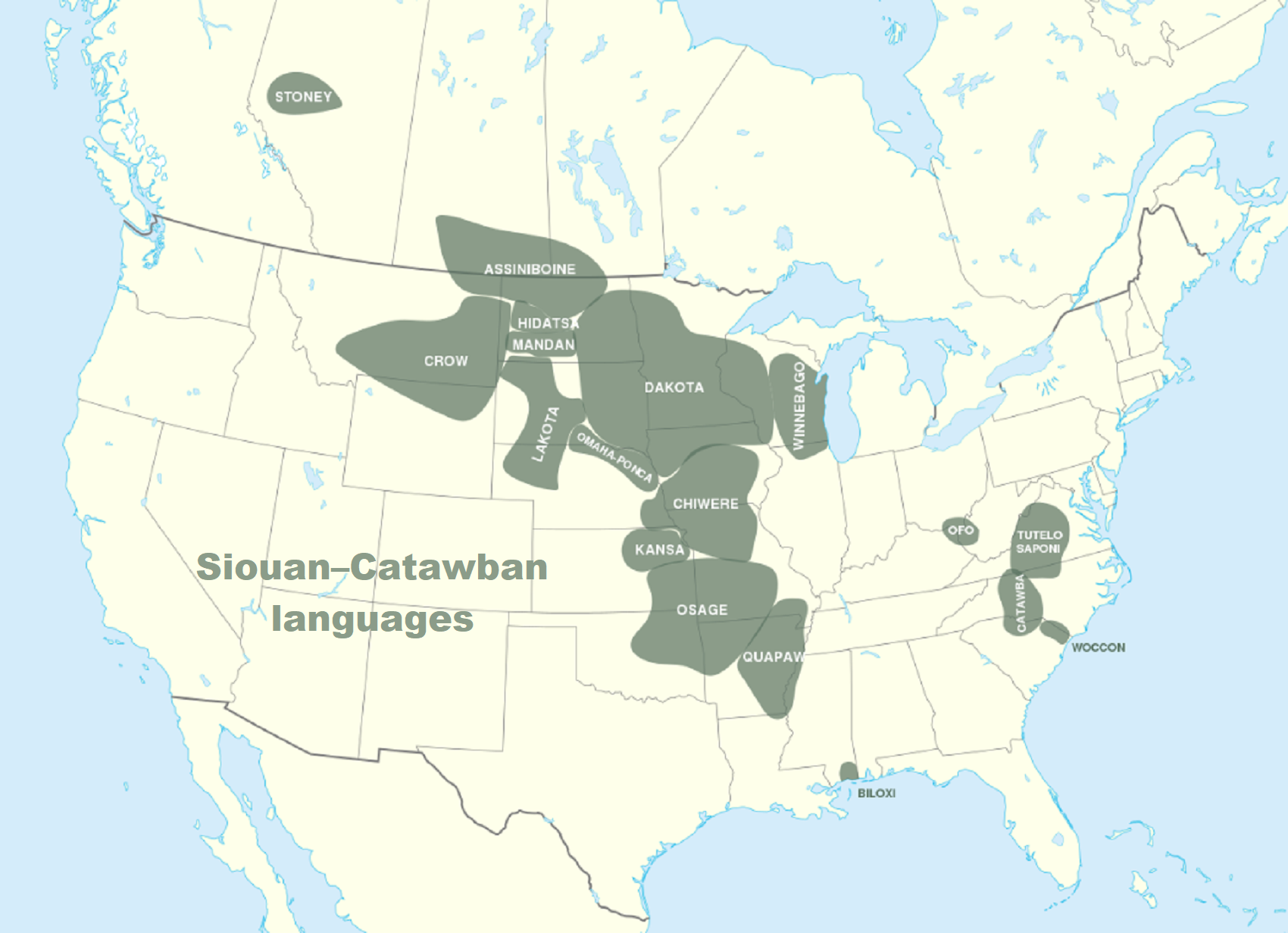
Siouan/Sioux Mythology
“The Sioux were a deeply spiritual people, believing in one all-pervasive god, Wakan Tanka, or the “Great Spirit/Great Mystery”. Siouan–Catawban languages, primarily in the Great Plains, Ohio and Mississippi valleys, and southeastern North America. language divisions: the Dakota and Lakota. “We should understand well that all things are the works of the Great Spirit. We should know that He is within all things: the trees, the grasses, the rivers, the mountains, and all the four-legged animals, and the winged peoples; and even more important, we should understand that He is also above all these things and peoples.” ref, ref, ref

“Caddoan languages are a family of languages native to the Great Plains. Proto-Caddoan, it appeared to have divided into two branches, Northern and Southern, more than 3000 years ago. The Wichita and Pawnee are also related to the Caddo, since both tribes historically spoke Caddoan languages. Caddo religion focuses on Kadhi háyuh, “Lord Above” or “Lord of the Sky.” A head priest, the xinesi, would commune with spirits residing near Caddo temples. Atíʼas Tirawa, “Our Father Above” in the Pawnee language (“Great Spirit/Mystery”), was the creator god. The wife of Tirawa was Atira, goddess of the Earth. Atira (literally, Mother Corn) was associated with corn.” ref, ref, ref
“The Sun Dance is a ceremony practiced by some Native Americans in the United States and Indigenous peoples in Canada, primarily those of the Plains cultures. Sun Dance is a grueling ordeal for the dancers, a physical and spiritual test that they offer in sacrifice for their people. Several features are common to the ceremonies held by Sun Dance cultures. The use of a traditional drum, a sacred fire, praying with a ceremonial pipe, fasting from food and water before participating in the dance, and, in some cases, the ceremonial piercing of skin and a trial of physical endurance.” ref
“The Pawnee Morning Star ceremony was a religious ceremony occasionally involving a ritual human sacrifice of a young girl, performed only by a single village (Village Across a Hill) of the Skidi band of the Pawnee. It was connected to the Pawnee creation narrative, in which the mating of the male Morning Star with the female Evening Star created the first human being, a girl.” ref
“The Wari worshipped the Staff god, a chief deity in many Andean cultures. Some of the oldest depictions of the Staff god appear on Wari textiles and pottery urns, estimated to be over 3,000 years old. Some scholars believe that the Wari Staff god was a predecessor of the three Incan principle gods, Sun, Moon, and Thunder. The Wari (Spanish: Huari) were a Middle Horizon civilization that flourished in the south-central Andes and coastal area of modern-day Peru, from about 500 to 1000 AD. A form of architecture distinctive to Wari was the use of D shaped structures. These structures were commonly used for temples and were relatively small at only 10 meters. Using administrative centers like their temples, the Wari greatly influenced the surrounding countryside. Scholars were able to look at the Inca to reconstruct some of the architecture of the Wari. Along the Inca highway system, several Wari provincial sites were found, suggesting that the Wari used a similar road network. They also created new fields with terraced field technology, which the Inca also drew inspiration from.” ref
“The colors on these ancient pots hint at the power of a wari empire. In a new study in the Journal of Archaeological Science archaeologists compared the colors on pieces of ancient Peruvian pottery. They found that potters across the Wari empire all used the same rich black pigment to make ceramics used in rituals: a sign of the empire’s influence. The Wari empire spread over Peru’s highlands and coastal areas from 600 to 1050 CE. People sometimes think of the Inka as the first big empire in South America, but the Wari came first. While the colors on Wari pottery might indicate imperial control, the ceramics from different regions do maintain their own local character. Local potters had a lot of flexibility in producing hybrid material culture, combining the Wari imperial style and decoration with their own.” ref
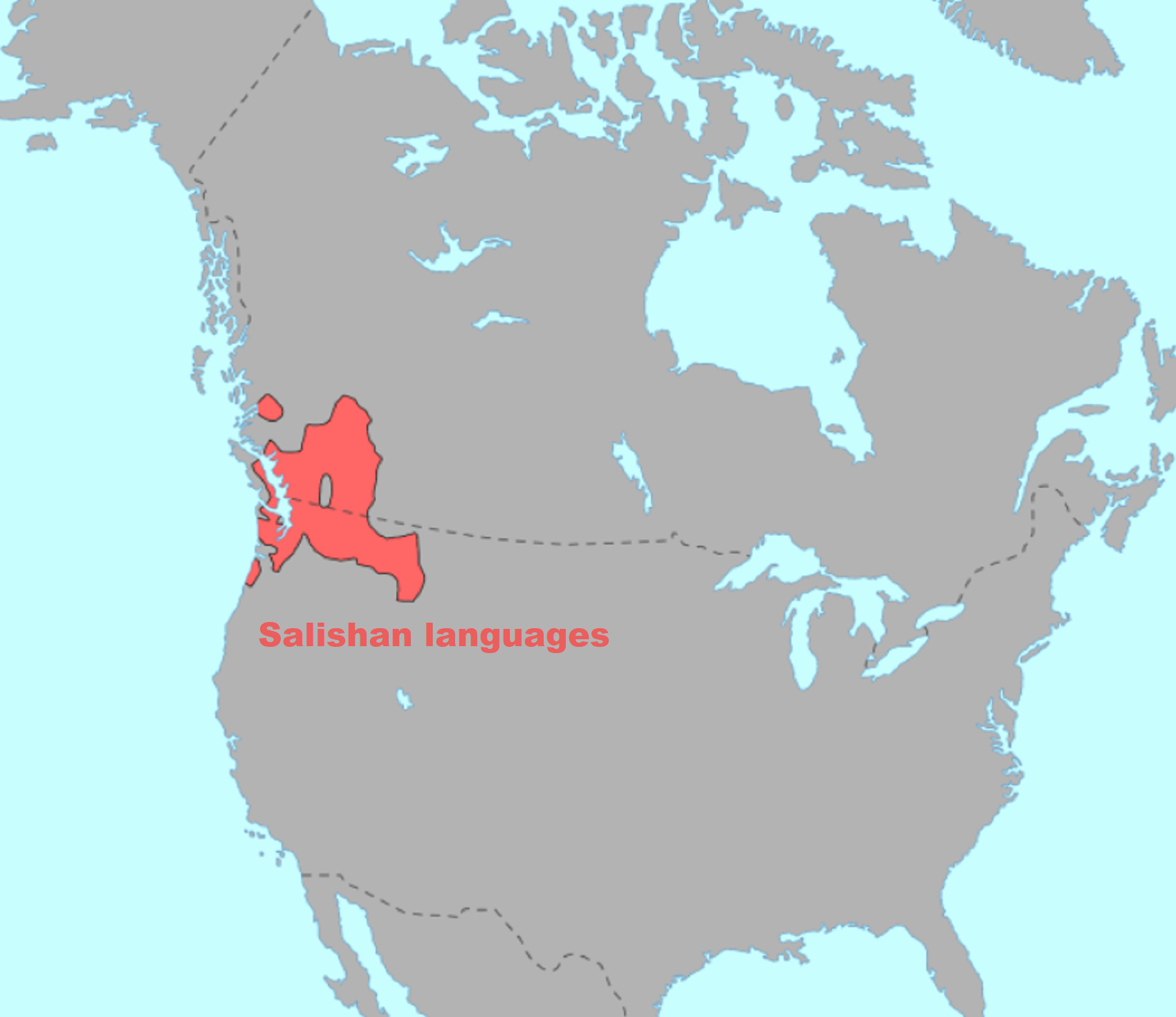
“Salish (or Salishan) people are in four major groups: Bella Coola (Nuxalk), Coast Salish, Interior Salish, and Tsamosan, who each speak one of the Salishan languages. Totem poles were less common in Coast Salish culture than with neighboring non-Salish Pacific Northwest Coast peoples such as the Haida, Tsimshian, Tlingit, and Kwakiutl tribes. The three regions of Salish shared very similar religious myth, beliefs, and ceremonies. The class system of wealthy families holding the keys to the religious beliefs and practices was the foundation of Salish society. Belief in guardian spirits and transmutation between human and animal were widely shared in myriad forms. North Coast Shamans provided religious leadership. High status families performed elaborate mask dances of Raven, Thunderbird, Bear, and otherworldly entities representing spirits. Central Coast Mythical stories speak of ancient ancestors that were influenced by forces that could lure the spirit away. Shamans were needed to bring back the spirits.” ref, ref, ref
“AMOTKEN Salish Fatherly Creator God a solitary but kindly old gent, he lives alone in heaven. He once had five hairy daughters created from five hairs pulled from his head. After a bit of doting he asked what they wanted to be when they grew up. He would refuse them nothing.” ref
“Daughter number 1 chose to be Mother of Evil.
Number 2 : Mother of Good.
Number 3 : Mother of Earth.
Number 4 : Mother of Fire
Number 5 : Mother of Water.” ref
“To prevent any squabbling he decreed they should take it in turn to rule for a day and a night, starting with Number 1. Naturally, this is on a godly timescale — the blink of an eye for them is thousands of years to us. And so Number 1, the Mother of Evil, is still in charge. Meanwhile, Amotken is still wondering what to have for breakfast. He did let Coyote out for his morning run, to report on how earthly things are going, but he’s not expected back for some time.” ref
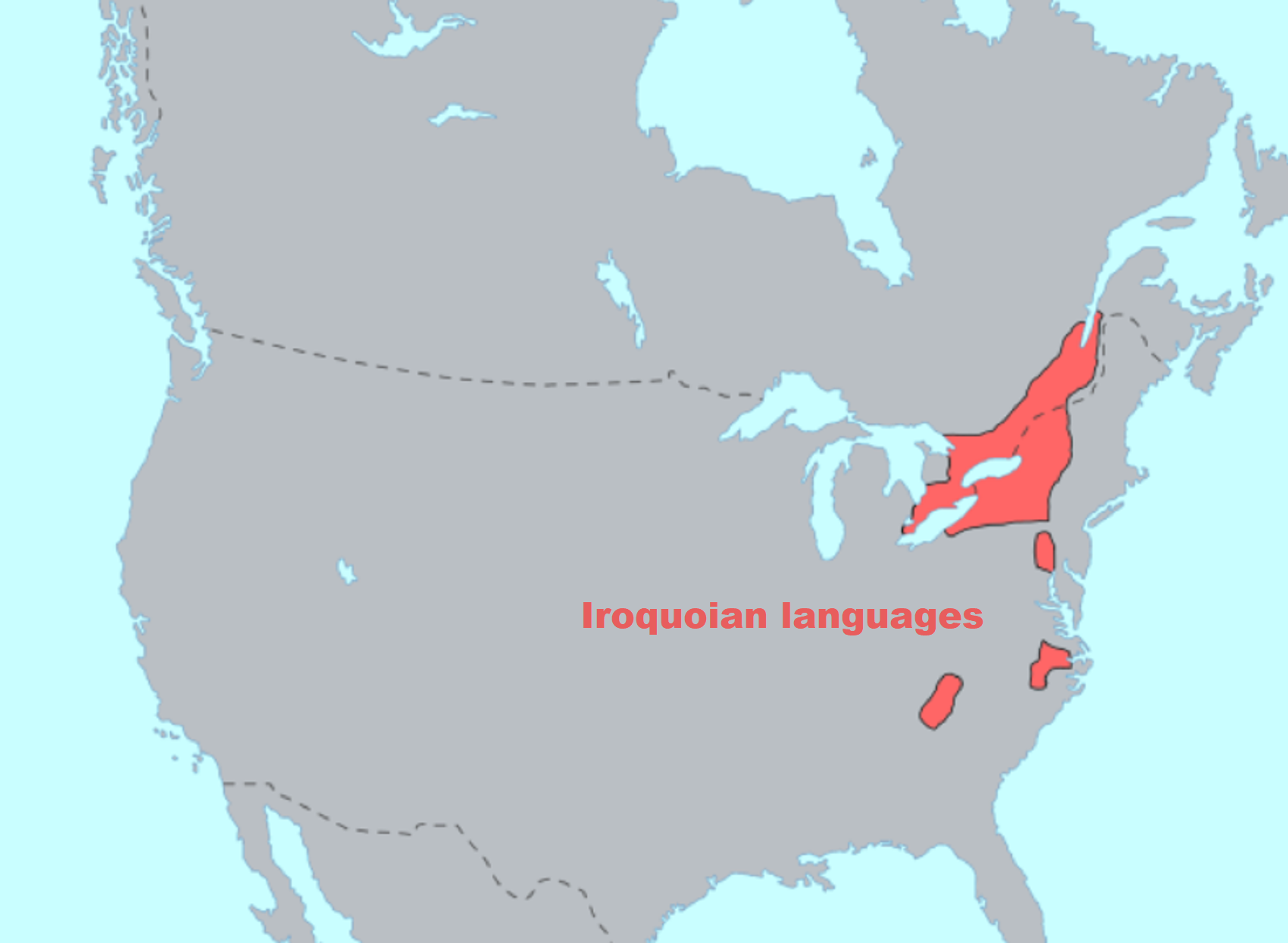
“Iroquoian languages, including Northern Iroquoian “Mohawk” and Southern Iroquoian “Cherokee.” Proto-Iroquoian implies 3,500 to 3,800 years for the split of North and South Iroquoian.” ref, ref
Iroquois mythology
“The earth was a thought in the mind of Hawëni:yo’ (transl. He Who Governs or The Ruler), the ruler of a great island floating above the clouds. The floating island is a place of calm where all needs are provided and there is no pain or death. The island’s inhabitants hold council under a great apple tree. Hawëni:yo’ says, “Let us make a new place where another people can grow. Under our council tree is a great sea of clouds which calls out for light.” He orders the uprooting of the council tree and he looks through the hole, down into the depths. He tells Awëöha’i’ (Mohawk:Atsi’tsaká:ion)[b] (transl. Sky Woman) to look down. Hearing the voice of the sea below calling, Hawëni:yo’ tells Awëöha’i’, who was pregnant, to bring it life. He wraps her in light and drops her down through the hole.” ref
“All the birds and animals who live in the great cloud sea are panicked. The Duck asks, “Where can it rest?” The Beaver replies, “Only the oeh-dah (transl. earth) from the bottom of our great sea can hold it. I will get some.” The Beaver dives down but never returns. Then, the Duck tries, but its dead body floats to the surface. Many of the other birds and animals try and fail. Finally, the Muskrat returns with some Oeh-dah in his paws. He says, “It’s heavy. Who can support it?” The Turtle volunteers and the oeh-dah is placed on top of his shell. The birds fly up and carry Awëöha’i’ on their wings to the Turtle’s back. This is how Hah-nu-nah, the Turtle, came to be the earth bearer. When he moves, the sea gets rough and the earth shakes.” ref
“Hahgwehdiyu (also called Ha-Wen-Neyu, Rawenniyo, or Hawenniyo) is the Iroquois god of goodness and light, as well as a creator god. He and his twin brother Hahgwehdaetgah, the god of evil, were children of Atahensic (or in some versions her daughter, the Earth Mother), whom Hahgwehdaetgah killed in childbirth. After the death of Sky Woman the island was shrouded in gloom. Hah-gweh-di-yu shaped the sky and created the sun from his mother’s face saying “you shall rule here where your face will shine forever.” Hä-qweh-da-ět-gǎh, however, set the great darkness in the west to drive down the sun. Hah-gweh-di-yu then took the Moon and Stars from his mother’s breast, and placed them, his sisters, to guard the night sky. He gave his mother’s body to the earth, the Great Mother from whom all life came.” ref
Hinon: Thunder god, nature spirit
“Related figures in other tribes: Thunderbird, Nimki, Thunderer. Hinon is usually described as an ally of the culture hero Sky-Holder, and in a few accounts, is a third brother of Sky-Holder and Flint. He is typically depicted as a winged man, although he is sometimes said to shapeshift in form between a human and a giant bird. In some stories, he has taken Iroquois women as wives and produced demigod children. Some Iroquois people, particularly the Senecas, refer to Hinon as “Grandfather,” and the high god Hahgwehdiyu may be one of his aspects.” ref
“The stories from the Iroquois tribes (which include the Oneida, Onondaga, Cayuga, Seneca, and Mohawk Indians), since the traditional stories of those tribes are very similar. Sky Holder (Tharuhyawa:ku, in Mohawk): The high god of Iroquois mythology, a benevolent teacher and caretaker of the world. In many Mohawk communities Sky-Holder is considered the same entity as Maple Sapling, while in others, they are considered to be distinct.” ref
“Sky Woman (Iotsitsisonh or Atsi’tsiaka:ion, in Mohawk): The mother goddess of the Iroquois tribes, said to have fallen through a hole in the sky. The Thunders: Powerful storm spirits who live in the sky and cause thunder and lightning. Although they are dangerous beings and their gaze can bring death to mortal men, they usually play a positive role in Mohawk legends and are typically portrayed as honorable and fair. The thunder god Hinon is their eldest brother and leader.” ref
Cherokee religion
“Cherokee is an Iroquoian language. Cherokee did not separate spiritual and physical realms but regarded them as one. Cherokee cosmology traditionally includes a conception of the universe being composed of three distinct but connected worlds: the Upper World and the Under World, which are the domains of the spirits, and This World, where humans live. The Cherokee revere the Great Spirit Unetlanvhi (“Creator”), who presides over all things and created the Earth. The Unetlanvhi is omnipotent, omnipresent, and omniscient, and is said to have made the earth to provide for its children, and should be of equal power to Dâyuni’sï, the Water Beetle. The Wahnenauhi Manuscript adds that God is Unahlahnauhi (“Maker of All Things”) and Kalvlvtiahi (“The One Who Lives Above”).” ref
“In most oral and written Cherokee theology the Great Spirit is not personified as having human characteristics or a physical human form. The first people were a brother and sister. Once, the brother hit his sister with a fish and told her to multiply. Following this, she gave birth to a child every seven days and soon there were too many people, so women were forced to have just one child every year. The Cherokee believe that there is the Great Thunder and his sons, the two Thunder Boys, who live in the land of the west above the sky vault. They dress in lightning and rainbows.” ref
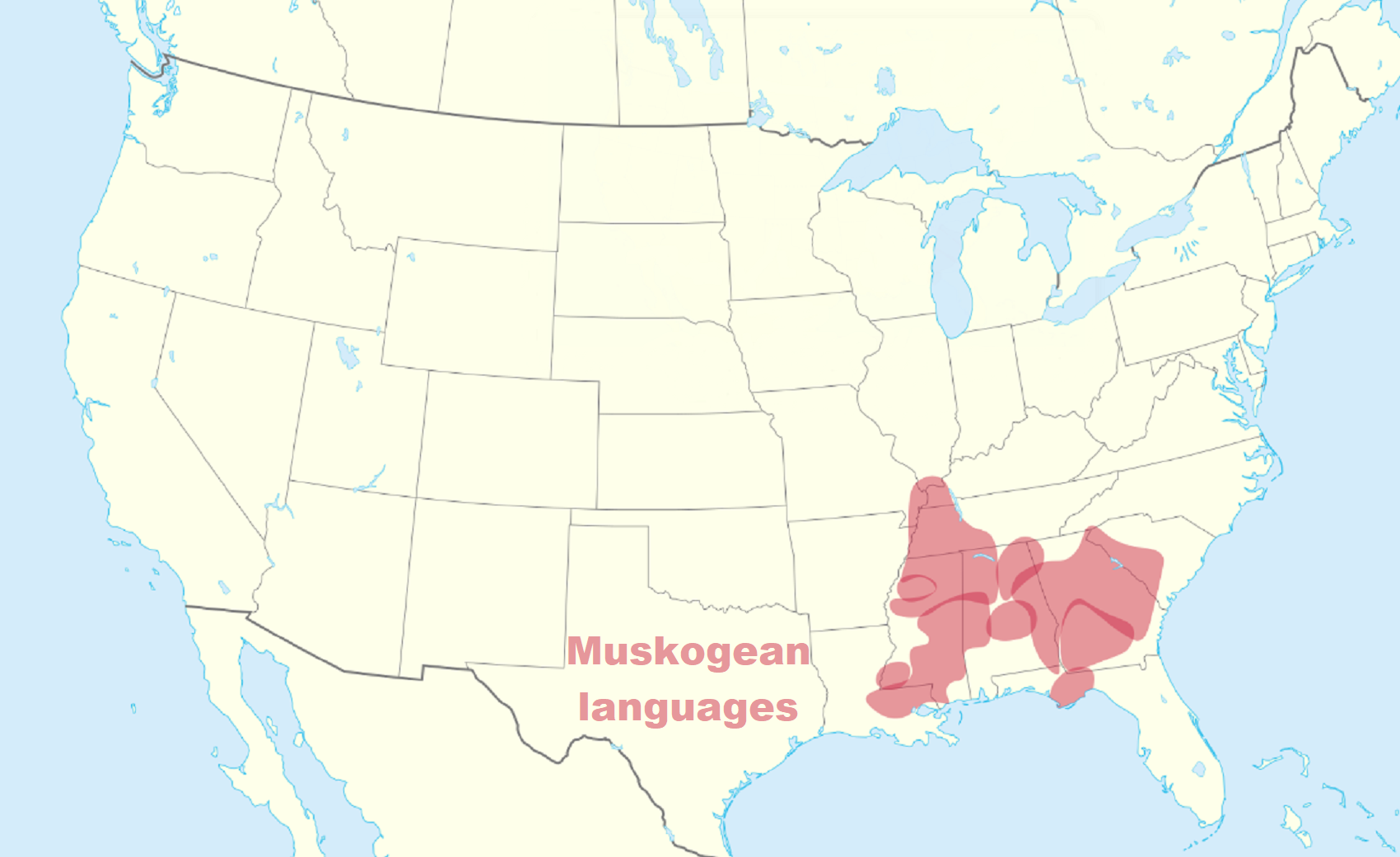
Muskogean religion
“The Muskogean family consists of six languages that are still spoken: Alabama, Chickasaw, Choctaw, Creek-Seminole, Koasati, and Mikasuki, as well as the now-extinct Apalachee, Houma, and Hitchiti. Creek mythology is related to a Muscogee tribe who are originally from the southeastern United States, also known by their original name Mvskoke (or Muskogee). The early historic Muscogee were probably descendants of the Mississippian culture peoples who lived along the Tennessee River, in what is now modern Tennessee and Alabama, and possibly related to the Utinahica of southern Georgia. The Muscogee believed that the world was originally entirely underwater. The only land was a hill called Nunne Chaha on which is the home of Hesaketvmese (meaning “master of breath”; pronounced Hisakita imisi), a solar deity also called Ibofanga (“the one who is sitting above (us)”). He created humanity from the clay on the hill. In the underworld, there was only chaos and odd creatures. Master of Breath created Brother Moon and Sister Sun, as well as the four directions to hold up the world. The Creek also venerated the Horned Serpent Sint Holo, who appeared to suitably wise young men. The first people were the offspring of Sister Sun and the Horned Serpent. These first two Creeks were Lucky Hunter and Corn Woman, denoting their respective roles in Creek Society.” ref, ref
THE TOP NINE DEITIES IN MUSCOGEE CREEK MYTHOLOGY
“For thousands of years, a diverse array of cultures around the world have included the idea of reincarnation in their spiritual belief systems. These cultures include the over 500 distinct tribes of Indigenous Peoples of North America.” ref

“1 central Eurasian Neolithic individual from Tajikistan (around 8,000 years ago) and approximately 8,200 years ago Yuzhniy Oleniy Ostrov group from Karelia in western Russia formed by 19 genomes affinity to Villabruna ancestry than all the other Eastern Hunter-Gatherer groups” https://www.nature.com/articles/s41586-023-05726-0
Eastern Hunter-Gatherer?
“In archaeogenetics, the term Eastern Hunter-Gatherer (EHG), sometimes East European Hunter-Gatherer, or Eastern European Hunter-Gatherer is the name given to a distinct ancestral component that represents descent from Mesolithic hunter-gatherers of Eastern Europe. The Eastern Hunter Gatherer genetic profile can be modeled as an admixture between a Siberian Paleolithic population called Ancient North Eurasians (ANE) with European Western Hunter-Gatherers (WHG), although the relationship between the ANE and EHG ancestral components is not yet well understood due to lack of samples that could bridge the spatiotemporal gap. During the Mesolithic, the EHGs inhabited an area stretching from the Baltic Sea to the Urals and downwards to the Pontic–Caspian steppe.” ref
“Along with Scandinavian Hunter-Gatherers (SHG) and Western Hunter-Gatherers (WHG), the EHGs constituted one of the three main genetic groups in the postglacial period of early Holocene Europe. The border between WHGs and EHGs ran roughly from the lower Danube, northward along the western forests of the Dnieper towards the western Baltic Sea. During the Neolithic and early Eneolithic, likely during the 4th millennium BC EHGs on the Pontic–Caspian steppe mixed with Caucasus hunter-gatherers (CHGs) with the resulting population, almost half-EHG and half-CHG, forming the genetic cluster known as Western Steppe Herder (WSH). WSH populations closely related to the people of the Yamnaya culture are supposed to have embarked on a massive migration leading to the spread of Indo-European languages throughout large parts of Eurasia.” ref
“Haak et al. (2015) identified the Eastern Hunter-Gatherers (EHG) as a distinct genetic cluster in two males only. The EHG male of Samara (dated to ca. 5650-5550 BCE) carried Y-haplogroup R1b1a1a* and mt-haplogroup U5a1d. The other EHG male, buried in Karelia (dated to ca. 5500-5000 BCE) carried Y-haplogroup R1a1 and mt-haplogoup C1g. The authors of the study also identified a Western Hunter-Gatherer (WHG) cluster and a Scandinavian Hunter-Gatherer (SHG) cluster, intermediate between WHG and EHG. Also, Lazaridis et al. (2016) confirmed SHGs to be a mix of EHGs and WHGs. They suggested that EHGs harbored mixed ancestry from Ancient North Eurasians (ANEs) and WHGs. The people of the Yamnaya culture were found to be a mix of EHG and a “Near Eastern related population”. During the 3rd millennium BC, the Yamnaya people embarked on a massive expansion throughout Europe, which significantly altered the genetic landscape of the continent. The expansion gave rise to cultures such as Corded Ware, and was possibly the source of the distribution of Indo-European languages in Europe.” ref
“EHGs may have mixed with “an Armenian-like Near Eastern source”, which formed the Yamnaya culture, as early as the Eneolithic (5200-4000 BCE). Researchers have found that EHGs may have derived different amounts of their ancestry from WHGs and ANEs. Their relationship to the WHG and ANE is not well clarified. The people of the Mesolithic Kunda culture and the Narva culture of the eastern Baltic were a mix of WHG and EHG, showing the closest affinity with WHG. Samples from the Ukrainian Mesolithic and Neolithic were found to cluster tightly together between WHG and EHG, suggesting genetic continuity in the Dnieper Rapids for a period of 4,000 years. The Ukrainian samples belonged exclusively to the maternal haplogroup U, which is found in around 80% of all European hunter-gatherer samples.” ref
“The people of the Pit–Comb Ware culture (PCW/CCC) of the eastern Baltic bear 65% EHG ancestry. This is in contrast to earlier hunter-gatherers in the area, who were more closely related to WHG. This was demonstrated using a sample of Y-DNA extracted from a Pit–Comb Ware individual. This belonged to R1a15-YP172. The four samples of mtDNA extracted constituted two samples of U5b1d1, one sample of U5a2d, and one sample of U4a. Günther et al. (2018) analyzed 13 SHGs and found all of them to be of EHG ancestry. Generally, SHGs from western and northern Scandinavia had more EHG ancestry (ca 49%) than individuals from eastern Scandinavia (ca. 38%). The authors suggested that the SHGs were a mix of WHGs who had migrated into Scandinavia from the south, and EHGs who had later migrated into Scandinavia from the northeast along the Norwegian coast. SHGs displayed higher frequencies of genetic variants that cause light skin (SLC45A2 and SLC24A5), and light eyes (OCA/Herc2), than WHGs and EHGs.” ref
“Members of the Kunda culture and Narva culture were also found to be more closely related with WHG, while the Pit–Comb Ware culture was more closely related to EHG. Northern and eastern areas of the eastern Baltic were found to be more closely related to EHG than southern areas. The study noted that EHGs, like SHGs and Baltic hunter-gatherers, carried high frequencies of the derived alleles for SLC24A5 and SLC45A2, which are codings for light skin. Mathieson et al. (2018) analyzed the genetics of a large number of skeletons of prehistoric Eastern Europe. Thirty-seven samples were from Mesolithic and Neolithic Ukraine (9500-6000 BC). These were classified as intermediate between EHG and SHG. The males belonged exclusively to R haplotypes (particularly subclades of R1b1 and R1a) and I haplotypes (particularly subclades of I2). Mitochondrial DNA belonged almost exclusively to U (particularly subclades of U5 and U4).” ref
“A large number of individuals from the Zvejnieki burial ground, which mostly belonged to the Kunda culture and Narva culture in the eastern Baltic, were analyzed. These individuals were mostly of WHG descent in the earlier phases, but over time EHG ancestry became predominant. The Y-DNA of this site belonged almost exclusively to haplotypes of haplogroup R1b1a1a and I2a1. The mtDNA belonged exclusively to haplogroup U (particularly subclades of U2, U4 and U5). Forty individuals from three sites of the Iron Gates Mesolithic in the Balkans were estimated to be of 85% WHG and 15% EHG descent. The males at these sites carried exclusively R1b1a and I (mostly subclades of I2a) haplotypes. mtDNA belonged mostly to U (particularly subclades of U5 and U4).” ref
“People of the Cucuteni–Trypillia culture were found to harbor about 20% hunter-gatherer ancestry, which was intermediate between EHG and WHG. Narasimshan et al. (2019) coined a new ancestral component, West Siberian Hunter-Gatherer (WSHG). WSHGs contained about 30% EHG ancestry, 50% ANE ancestry, and 20% East Asian ancestry. Unlike the Yamnaya culture, in the Dnieper–Donets culture no Caucasian Hunter-Gatherer (CHG) or Early European Farmer (EEF) ancestry has been detected. Dnieper-Donets males and Yamnaya males carry the same paternal haplogroups (R1b and I2a), suggesting that the CHG and EEF admixture among the Yamnaya came through EHG males mixing with EEF and CHG females. According to David W. Anthony, this suggests that the Indo-European languages were initially spoken by EHGs living in Eastern Europe.” ref
Yamnaya Western Steppe Herders
“According to Jones et al. (2015) and Haak et al. (2015), autosomal tests indicate that the Yamnaya people were the result of a genetic admixture between two different hunter-gatherer populations: distinctive “Eastern Hunter-Gatherers” (EHG), from Eastern Europe, with high affinity to the Mal’ta–Buret’ culture or other, closely related people from Siberia and a population of “Caucasus hunter-gatherers” (CHG) who probably arrived from the Caucasus or Iran. Each of those two populations contributed about half the Yamnaya DNA. This admixture is referred to in archaeogenetics as Western Steppe Herder (WSH) ancestry. Admixture between EHGs and CHGs is believed to have occurred on the eastern Pontic-Caspian steppe starting around 5,000 BCE, while admixture with Early European Farmers (EEF) happened in the southern parts of the Pontic-Caspian steppe sometime later. More recent genetic studies have found that the Yamnaya were a mixture of EHGs, CHGs, and to a lesser degree Anatolian farmers and Levantine farmers, but not EEFs from Europe due to lack of WHG DNA in the Yamnaya. This occurred in two distinct admixture events from West Asia into the Pontic-Caspian steppe.” ref
“Haplogroup R1b, especially subclades of R1b-M269, is the most common Y-DNA haplogroup found among both the Yamnaya and modern-day Western Europeans. Additionally, a minority are found to belong to haplogroup I2. They are found to belong to a wider variety of mtDNA haplogroups, including U, T, and haplogroups associated with Caucasus Hunter-Gatherers and Early European Farmers. People of the Yamnaya culture are believed to have had mostly brown eye colour, light to intermediate skin, and brown hair colour, with some variation. A 022 study by Lazaridis et al. found that the typical phenotype among the Yamnaya population was brown eyes, brown hair, and intermediate skin color. None of the Yamnaya samples were predicted to have either blue eyes or blonde hair. Some individuals are believed to have carried a mutation to the KITLG gene associated with blond hair, as several individuals with Steppe ancestry are later found to carry this mutation. The Ancient North Eurasian population, who contributed significant ancestry to Western Steppe Herders, are believed to be the source of this mutation. A study in 2015 found that Yamnaya had the highest ever calculated genetic selection for height of any of the ancient populations tested. It has been hypothesized that an allele associated with lactase persistence (conferring lactose tolerance into adulthood) was brought to Europe from the steppe by Yamnaya-related migrations.” ref
“The geneticist David Reich has argued that the genetic data supports the likelihood that the people of the Yamnaya culture were a “single, genetically coherent group” who were responsible for spreading many Indo-European languages. Reich’s group recently suggested that the source of Anatolian and Indo-European subfamilies of the Proto-Indo-European (PIE) language was in west Asia and the Yamna were responsible for the dissemination of the latter. Reich also argues that the genetic evidence shows that Yamnaya society was an oligarchy dominated by a small number of elite males. The genetic evidence for the extent of the role of the Yamnaya culture in the spread of Indo-European languages has however been questioned by Russian archaeologist Leo Klejn and Balanovsky et al., who note a lack of male haplogroup continuity between the people of the Yamnaya culture and the contemporary populations of Europe. Klejn has also suggested that the autosomal evidence does not support a Yamnaya migration, arguing that Western Steppe Herder ancestry in both contemporary and Bronze Age samples is lowest around the Danube in Hungary, near the western limits of the Yamnaya culture, and highest in Northern Europe, which Klejn argues is the opposite of what would be expected if the geneticists’ hypothesis is correct.” ref
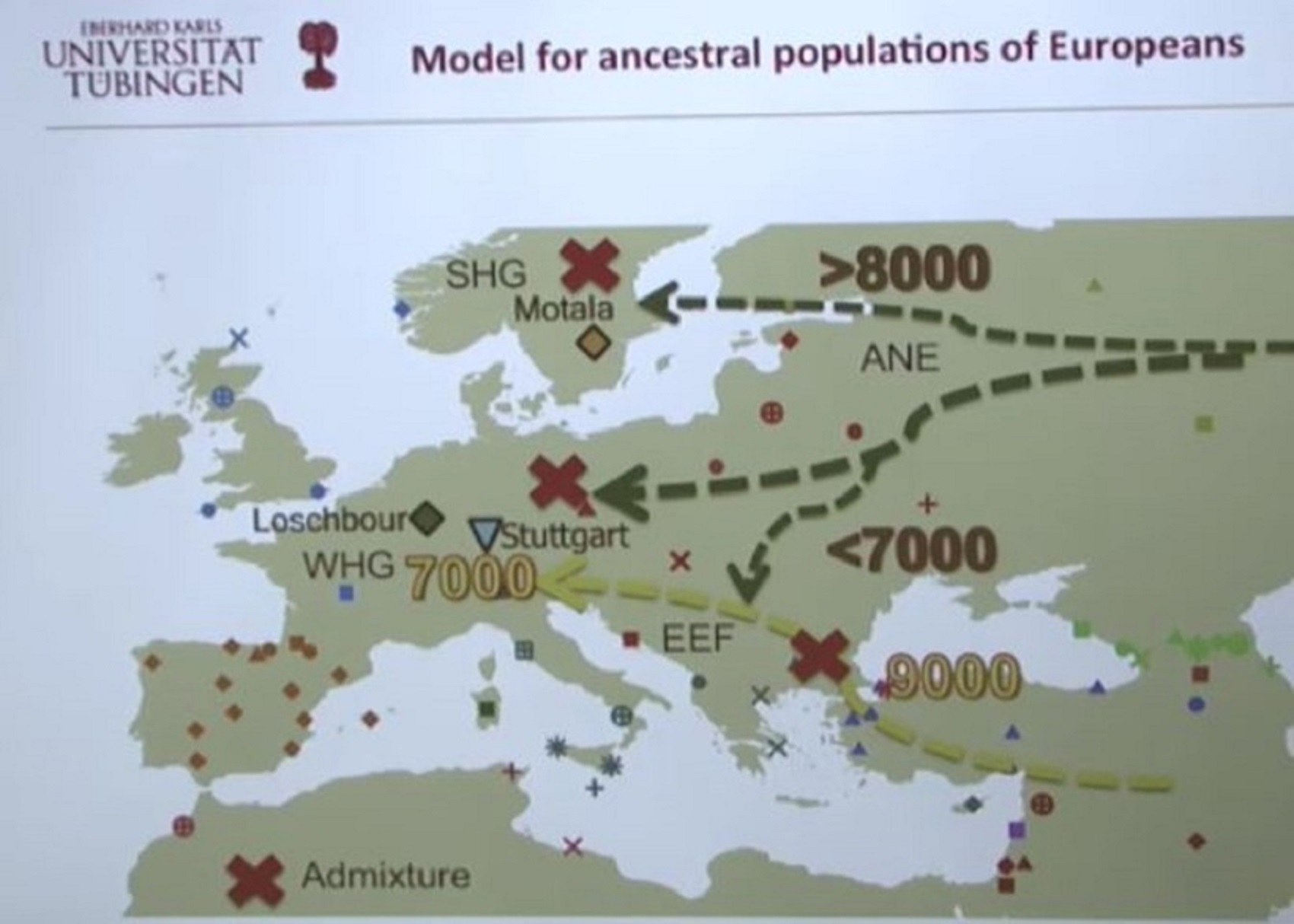
Pic ref
Ancient Human Genomes…Present-Day Europeans – Johannes Krause (Video)
Ancient North Eurasian (ANE)
Eastern Hunter-Gatherer (EHG)
Western Hunter-Gatherers (WHG)
Scandinavian Hunter-Gatherer (SHG)
Early European Farmers (EEF)
A quick look at the Genetic history of Europe
“The most significant recent dispersal of modern humans from Africa gave rise to an undifferentiated “non-African” lineage by some 70,000-50,000 years ago. By about 50–40 ka a basal West Eurasian lineage had emerged, as had a separate East Asian lineage. Both basal East and West Eurasians acquired Neanderthal admixture in Europe and Asia. European early modern humans (EEMH) lineages between 40,000-26,000 years ago (Aurignacian) were still part of a large Western Eurasian “meta-population”, related to Central and Western Asian populations. Divergence into genetically distinct sub-populations within Western Eurasia is a result of increased selection pressure and founder effects during the Last Glacial Maximum (LGM, Gravettian). By the end of the LGM, after 20,000 years ago, A Western European lineage, dubbed West European Hunter-Gatherer (WHG) emerges from the Solutrean refugium during the European Mesolithic. These Mesolithic hunter-gatherer cultures are substantially replaced in the Neolithic Revolution by the arrival of Early European Farmers (EEF) lineages derived from Mesolithic populations of West Asia (Anatolia and the Caucasus). In the European Bronze Age, there were again substantial population replacements in parts of Europe by the intrusion of Ancient North Eurasian (ANE) lineages from the Pontic–Caspian steppes. These Bronze Age population replacements are associated with the Beaker culture archaeologically and with the Indo-European expansion linguistically.” ref
“As a result of the population movements during the Mesolithic to Bronze Age, modern European populations are distinguished by differences in WHG, EEF, and ANE ancestry. Admixture rates varied geographically; in the late Neolithic, WHG ancestry in farmers in Hungary was at around 10%, in Germany around 25%, and in Iberia as high as 50%. The contribution of EEF is more significant in Mediterranean Europe, and declines towards northern and northeastern Europe, where WHG ancestry is stronger; the Sardinians are considered to be the closest European group to the population of the EEF. ANE ancestry is found throughout Europe, with a maximum of about 20% found in Baltic people and Finns. Ethnogenesis of the modern ethnic groups of Europe in the historical period is associated with numerous admixture events, primarily those associated with the Roman, Germanic, Norse, Slavic, Berber, Arab and Turkish expansions. Research into the genetic history of Europe became possible in the second half of the 20th century, but did not yield results with a high resolution before the 1990s. In the 1990s, preliminary results became possible, but they remained mostly limited to studies of mitochondrial and Y-chromosomal lineages. Autosomal DNA became more easily accessible in the 2000s, and since the mid-2010s, results of previously unattainable resolution, many of them based on full-genome analysis of ancient DNA, have been published at an accelerated pace.” ref

Ancient North Eurasian (ANE)
Ancient Beringian/Ancestral Native American (AB/ANA)
Eastern Hunter-Gatherer (EHG)
Western Hunter-Gatherers (WHG)
Western Steppe Herders (WSH)
Scandinavian Hunter-Gatherer (SHG)
Early European Farmers (EEF)
Jōmon people (Ainu people OF Hokkaido Island)
Neolithic Iranian farmers (Iran_N) (Iran Neolithic)
Haplogroup R possible time of origin about 27,000 years in Central Asia, South Asia, or Siberia:
- Mal’ta–Buret’ culture (24,000-15,000 years ago)
- Afontova Gora culture (21,000-12,000 years ago)
- Trialetian culture (16,000–8000 years ago)
- Samara culture (7,000-6,500 years ago)
- Khvalynsk culture (7,000-6,500 years ago)
- Afanasievo culture (5,300-4,500 years ago)
- Yamna/Yamnaya Culture (5,300-4,500 years ago)
- Andronovo culture (4,000–2,900 years ago) ref
Groups partially derived from the Ancient North Eurasians
“The ANE lineage is defined by association with the MA-1, or “Mal’ta boy”, remains of 24,000 years ago in central Siberia Mal’ta-Buret’ culture 24,000-15,000 years ago. The Ancient North Eurasians (ANE) samples (Afontova Gora 3, Mal’ta 1, and Yana-RHS) show evidence for minor gene flow from an East Asian-related group (simplified by the Amis, Han, or Tianyuan) but no evidence for ANE-related geneflow into East Asians (Amis, Han, Tianyuan), except the Ainu, of North Japan.” ref
“The ANE lineage is defined by association with the MA-1, or “Mal’ta boy”, remains of 24,000 years ago in central Siberia Mal’ta-Buret’ culture 24,000-15,000 years ago “basal to modern-day Europeans”. Some Ancient North Eurasians also carried East Asian populations, such as Tianyuan Man.” ref
“Bronze-age-steppe Yamnaya and Afanasevo cultures were ANE at around 50% and Eastern Hunter-Gatherer (EHG) at around 75% ANE. Karelia culture: Y-DNA R1a-M417 8,400 years ago, Y-DNA J, 7,200 years ago, and Samara, of Y-haplogroup R1b-P297 7,600 years ago is closely related to ANE from Afontova Gora, 18,000 years ago around the time of blond hair first seen there.” ref
Ancient North Eurasian
“In archaeogenetics, the term Ancient North Eurasian (often abbreviated as ANE) is the name given to an ancestral West Eurasian component that represents descent from the people similar to the Mal’ta–Buret’ culture and populations closely related to them, such as from Afontova Gora and the Yana Rhinoceros Horn Site. Significant ANE ancestry are found in some modern populations, including Europeans and Native Americans.” ref
“The ANE lineage is defined by association with the MA-1, or “Mal’ta boy“, the remains of an individual who lived during the Last Glacial Maximum, 24,000 years ago in central Siberia, Ancient North Eurasians are described as a lineage “which is deeply related to Paleolithic/Mesolithic hunter-gatherers in Europe,” meaning that they diverged from Paleolithic Europeans a long time ago.” ref
“The ANE population has also been described as having been “basal to modern-day Europeans” but not especially related to East Asians, and is suggested to have perhaps originated in Europe or Western Asia or the Eurasian Steppe of Central Asia. However, some samples associated with Ancient North Eurasians also carried ancestry from an ancient East Asian population, such as Tianyuan Man. Sikora et al. (2019) found that the Yana RHS sample (31,600 BP) in Northern Siberia “can be modeled as early West Eurasian with an approximately 22% contribution from early East Asians.” ref
“Populations genetically similar to MA-1 were an important genetic contributor to Native Americans, Europeans, Central Asians, South Asians, and some East Asian groups, in order of significance. Lazaridis et al. (2016:10) note “a cline of ANE ancestry across the east-west extent of Eurasia.” The ancient Bronze-age-steppe Yamnaya and Afanasevo cultures were found to have a noteworthy ANE component at ~50%.” ref
“According to Moreno-Mayar et al. 2018 between 14% and 38% of Native American ancestry may originate from gene flow from the Mal’ta–Buret’ people (ANE). This difference is caused by the penetration of posterior Siberian migrations into the Americas, with the lowest percentages of ANE ancestry found in Eskimos and Alaskan Natives, as these groups are the result of migrations into the Americas roughly 5,000 years ago.” ref
“Estimates for ANE ancestry among first wave Native Americans show higher percentages, such as 42% for those belonging to the Andean region in South America. The other gene flow in Native Americans (the remainder of their ancestry) was of East Asian origin. Gene sequencing of another south-central Siberian people (Afontova Gora-2) dating to approximately 17,000 years ago, revealed similar autosomal genetic signatures to that of Mal’ta boy-1, suggesting that the region was continuously occupied by humans throughout the Last Glacial Maximum.” ref
“The earliest known individual with a genetic mutation associated with blonde hair in modern Europeans is an Ancient North Eurasian female dating to around 16000 BCE from the Afontova Gora 3 site in Siberia. It has been suggested that their mythology may have included a narrative, found in both Indo-European and some Native American fables, in which a dog guards the path to the afterlife.” ref
“Genomic studies also indicate that the ANE component was introduced to Western Europe by people related to the Yamnaya culture, long after the Paleolithic. It is reported in modern-day Europeans (7%–25%), but not of Europeans before the Bronze Age. Additional ANE ancestry is found in European populations through paleolithic interactions with Eastern Hunter-Gatherers, which resulted in populations such as Scandinavian Hunter-Gatherers.” ref
“The Ancient North Eurasians (ANE) split from the ancestors of European peoples somewhere in the Middle East or South-central Asia, and used a northern dispersal route through Central Asia into Northern Asia and Siberia. Genetic analyses show that all ANE samples (Afontova Gora 3, Mal’ta 1, and Yana-RHS) show evidence for minor gene flow from an East Asian-related group (simplified by the Amis, Han, or Tianyuan). In contrast, no evidence for ANE-related geneflow into East Asians (Amis, Han, Tianyuan), except the Ainu, was found.” ref
“Genetic data suggests that the ANE formed during the Terminal Upper-Paleolithic (36+-1,5ka) period from a deeply European-related population, which was once widespread in Northern Eurasia, and from an early East Asian-related group, which migrated northwards into Central Asia and Siberia, merging with this deeply European-related population. These population dynamics and constant northwards geneflow of East Asian-related ancestry would later gave rise to the “Ancestral Native Americans” and Paleosiberians, which replaced the ANE as dominant population of Siberia.” ref
Groups partially derived from the Ancient North Eurasians
“Eastern Hunter-Gatherer (EHG) is a lineage derived predominantly (75%) from ANE. It is represented by two individuals from Karelia, one of Y-haplogroup R1a-M417, dated c. 8.4 kya, the other of Y-haplogroup J, dated c. 7.2 kya; and one individual from Samara, of Y-haplogroup R1b-P297, dated c. 7.6 kya. This lineage is closely related to the ANE sample from Afontova Gora, dated c. 18 kya. After the end of the Last Glacial Maximum, the Western Hunter-Gatherers (WHG) and EHG lineages merged in Eastern Europe, accounting for early presence of ANE-derived ancestry in Mesolithic Europe. Evidence suggests that as Ancient North Eurasians migrated West from Eastern Siberia, they absorbed Western Hunter-Gatherers and other West Eurasian populations as well.” ref
“Caucasian Hunter-Gatherer (CHG) is represented by the Satsurblia individual dated ~13 kya (from the Satsurblia cave in Georgia), and carried 36% ANE-derived admixture. While the rest of their ancestry is derived from the Dzudzuana cave individual dated ~26 kya, which lacked ANE-admixture, Dzudzuana affinity in the Caucasus decreased with the arrival of ANE at ~13 kya Satsurblia.” ref
“Scandinavian Hunter-Gatherer (SHG) is represented by several individuals buried at Motala, Sweden ca. 6000 BC. They were descended from Western Hunter-Gatherers who initially settled Scandinavia from the south, and later populations of EHG who entered Scandinavia from the north through the coast of Norway.” ref
“Iran Neolithic (Iran_N) individuals dated ~8.5 kya carried 50% ANE-derived admixture and 50% Dzudzuana-related admixture, marking them as different from other Near-Eastern and Anatolian Neolithics who didn’t have ANE admixture. Iran Neolithics were later replaced by Iran Chalcolithics, who were a mixture of Iran Neolithic and Near Eastern Levant Neolithic.” ref
“Ancient Beringian/Ancestral Native American are specific archaeogenetic lineages, based on the genome of an infant found at the Upward Sun River site (dubbed USR1), dated to 11,500 years ago. The AB lineage diverged from the Ancestral Native American (ANA) lineage about 20,000 years ago.” ref
“West Siberian Hunter-Gatherer (WSHG) are a specific archaeogenetic lineage, first reported in a genetic study published in Science in September 2019. WSGs were found to be of about 30% EHG ancestry, 50% ANE ancestry, and 20% to 38% East Asian ancestry.” ref
“Western Steppe Herders (WSH) is the name given to a distinct ancestral component that represents descent closely related to the Yamnaya culture of the Pontic–Caspian steppe. This ancestry is often referred to as Yamnaya ancestry or Steppe ancestry.” ref
“Late Upper Paeolithic Lake Baikal – Ust’Kyakhta-3 (UKY) 14,050-13,770 BP were mixture of 30% ANE ancestry and 70% East Asian ancestry.” ref
“Lake Baikal Holocene – Baikal Eneolithic (Baikal_EN) and Baikal Early Bronze Age (Baikal_EBA) derived 6.4% to 20.1% ancestry from ANE, while rest of their ancestry was derived from East Asians. Fofonovo_EN near by Lake Baikal were mixture of 12-17% ANE ancestry and 83-87% East Asian ancestry.” ref
“Hokkaido Jōmon people specifically refers to the Jōmon period population of Hokkaido in northernmost Japan. Though the Jōmon people themselves descended mainly from East Asian lineages, one study found an affinity between Hokkaido Jōmon with the Northern Eurasian Yana sample (an ANE-related group, related to Mal’ta), and suggest as an explanation the possibility of minor Yana gene flow into the Hokkaido Jōmon population (as well as other possibilities). A more recent study by Cooke et al. 2021, confirmed ANE-related geneflow among the Jōmon people, partially ancestral to the Ainu people. ANE ancestry among Jōmon people is estimated at 21%, however, there is a North to South cline within the Japanese archipelago, with the highest amount of ANE ancestry in Hokkaido and Tohoku.” ref
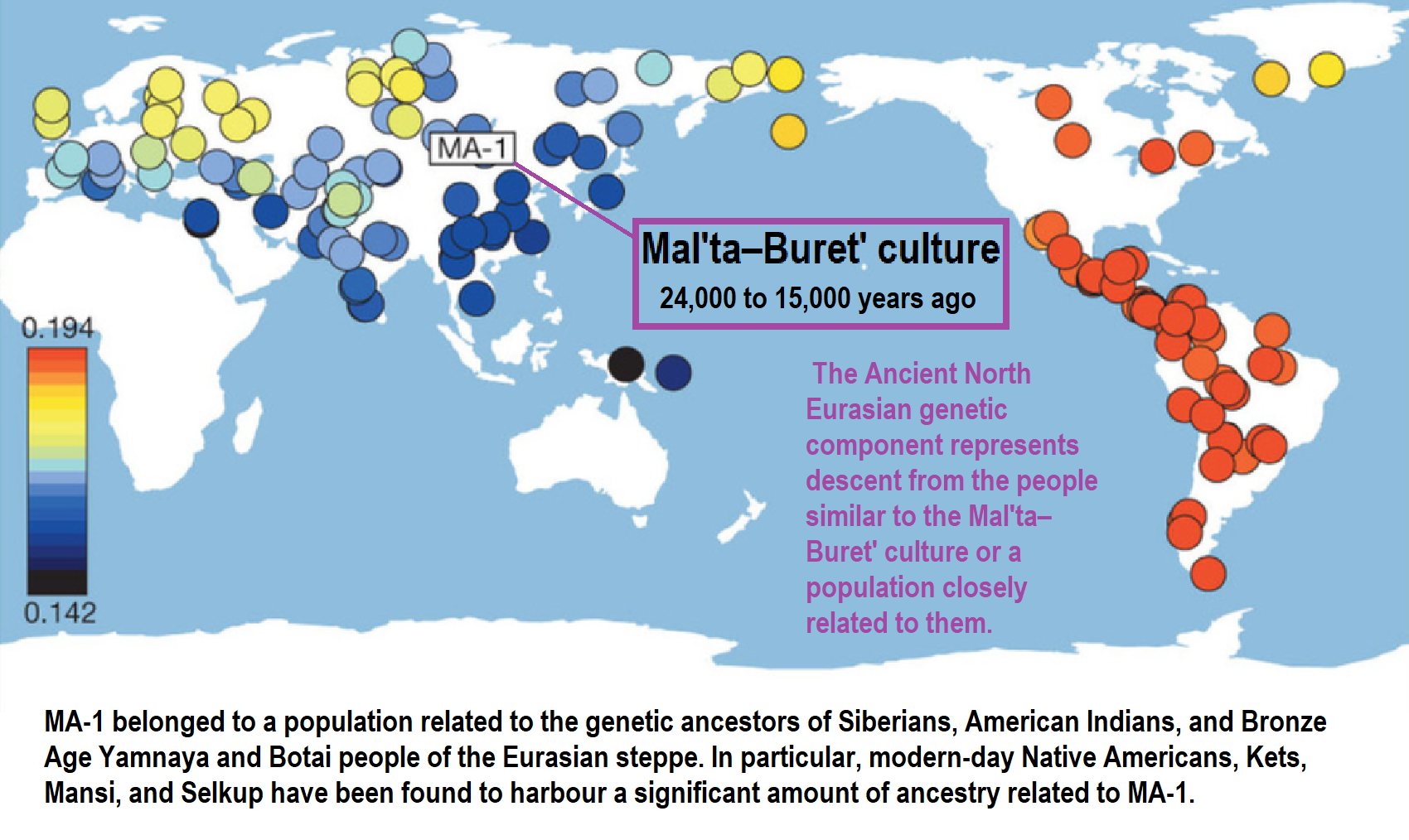
“MA-1 genetic affinities of Mal’ta–Buret’ culture.” ref
Mal’ta–Buret’ culture of Siberia near Lake Baikal
“The Mal’ta–Buret’ culture is an archaeological culture of c. 24,000 to 15,000 years ago in the Upper Paleolithic on the upper Angara River in the area west of Lake Baikal in the Irkutsk Oblast, Siberia, Russian Federation. The type sites are named for the villages of Mal’ta, Usolsky District, and Buret’, Bokhansky District (both in Irkutsk Oblast). And a buried boy whose remains were found near Mal’ta is usually known by the abbreviation MA-1, remains have been dated to 24,000 years ago. According to research published since 2013, MA-1 belonged to a population related to the genetic ancestors of Siberians, American Indians, and Bronze Age Yamnaya and Botai people of the Eurasian steppe. In particular, modern-day Native Americans, Kets, Mansi, and Selkup have been found to harbor a significant amount of ancestry related to MA-1.” ref
“MA-1 is the only known example of basal Y-DNA R* (R-M207*) – that is, the only member of haplogroup R* that did not belong to haplogroups R1, R2, or secondary subclades of these. The mitochondrial DNA of MA-1 belonged to an unresolved subclade of haplogroup U. The term Ancient North Eurasian (ANE) has been given in genetic literature to an ancestral component that represents descent from the people similar to the Mal’ta–Buret’ culture or a population closely related to them. A people similar to MA1 and Afontova Gora were important genetic contributors to Native Americans, Siberians, Northeastern Europeans, Caucasians, Central Asians, with smaller contributions to Middle Easterners and some East Asians. Lazaridis et al. (2016) notes “a cline of ANE ancestry across the east-west extent of Eurasia.” MA1 is also related to two older Upper Paleolithic Siberian individuals found at the Yana Rhinoceros Horn Site called Ancient North Siberians (ANS).” ref

“The genetic ancestry of hunter-gatherers dated between 14 ka and 5.2 ka modeled using qpAdm, with Oberkassel, Yuzhniy Oleniy Ostrov, Goyet Q-2 and Neolithic farmers from present-day Turkey (Barcın, Menteşe and Boncuklu sites) representing Oberkassel (WHG) (blue), Sidelkino (EHG) (red), GoyetQ2 (orange) and Anatolian Neolithic farmer (green) ancestries, respectively.” ref

C-M217 Na-Dene and Yeniseian Languages and Religion relatedness from Asia connecting to the Americas
- Dené–Yeniseian language, Old Copper Complex, and Pre-Columbian Mound Builders?
- 5th—4th millennium BCE Dnieper–Donets culture and East Eurasian lineages (of C haplogroup, like C4a related to Tungusic peoples of Siberia) in ancient mtDNA from the North Pontic Region
- Ritual, Religion, Elites, Language, and Civilization relating to Neolithic and Ancient China
- Haplogroup N and its related Uralic Languages and Cultures
- Ainu people, Sámi people, Native Americans, the Ancient North Eurasians, and Paganistic-Shamanism with Totemism
- Who were the Groups migrating and merging with the previous Groups of Europe 9,000 to 7,000 years ago?
- Thoughts on the Evolution of Religion: Animism, Totemism, Shamanism, Paganism, and Progressed Organized Religion
- My Thoughts on Possible Migrations of “R” DNA and Proto-Indo-European?
- The First Expression of the Male God around 7,000 years ago?
- When did “Religion” with Authority/Hierarchical structure emerge?
- Swing of the Mace: the rise of Elite, Forced Authority, and Inequality begin to Emerge 8,500 years ago?
- “Deities of war/violence” and/or “War Gods/Goddesses”
- Proto-Indo-European (PIE), ancestor of Indo-European languages: DNA, Society, Language, and Mythology

Pic ref
Ancient Women Found in a Russian Cave Turn Out to Be Closely Related to The Modern Population https://www.sciencealert.com/ancient-women-found-in-a-russian-cave-turn-out-to-be-closely-related-to-the-modern-population
Abstract
“Ancient genomes have revolutionized our understanding of Holocene prehistory and, particularly, the Neolithic transition in western Eurasia. In contrast, East Asia has so far received little attention, despite representing a core region at which the Neolithic transition took place independently ~3 millennia after its onset in the Near East. We report genome-wide data from two hunter-gatherers from Devil’s Gate, an early Neolithic cave site (dated to ~7.7 thousand years ago) located in East Asia, on the border between Russia and Korea. Both of these individuals are genetically most similar to geographically close modern populations from the Amur Basin, all speaking Tungusic languages, and, in particular, to the Ulchi. The similarity to nearby modern populations and the low levels of additional genetic material in the Ulchi imply a high level of genetic continuity in this region during the Holocene, a pattern that markedly contrasts with that reported for Europe.” ref
“Six of seven individuals whose remains have been recovered from the cave have been DNA tested. Originally, three of the specimens were thought to be adult males, two were thought to be adult females, one was thought to be a sub-adult of about 12-13 years of age, and one was thought to be a juvenile of about 6-7 years of age based on the skeletal morphology of the remains. Results of genetic analysis of the sub-adult individual have not yet been published. However, two specimens, NEO236 (Skull B, DevilsGate2) and NEO235 (Skull G), who had been presumed to be adult males according to a forensic morphological assessment of their remains, were discovered through genetic analysis to actually be females. The juvenile specimen also has been determined to be female through genetic analysis. Three of the specimens (including the only adult male plus NEO235/Skull G and another adult female, labeled as Skull Е, DevilsGate1, or NEO240, who has been genetically determined to be a first-degree relative of NEO235/Skull G) have been assigned to mtDNA haplogroup D4m; a previous genetic analysis of one of these adult female specimens determined her mtDNA haplogroup to be D4. Another three specimens (including the juvenile female, the DevilsGate2 specimen, and another adult female; both the juvenile female and the DevilsGate2 specimen have been determined to be first-degree relatives of the other adult female, and the juvenile female and the DevilsGate2 specimen also have been determined to be second-degree relatives of each other) have been assigned to haplogroup D4; a previous genetic analysis of the DevilsGate2 specimen determined her mtDNA haplogroup to be M. The only specimen from the cave who has been confirmed to be male through genetic analysis has been assigned to Y-DNA haplogroup C2b-F6273/Y6704/Y6708, equivalent to C2b-L1373, the northern (Central Asian, Siberian, and indigenous American) branch of haplogroup C2-M217.” ref
“The haplogroup C-M217 is now found at high frequencies among Central Asian peoples, indigenous Siberians, and some Native peoples of North America. Haplogroup C-M217 is the modal haplogroup among Mongolians and most indigenous populations of the Russian Far East, such as the Buryats, Northern Tungusic peoples, Nivkhs, Koryaks, and Itelmens. The subclade C-P39 is common among males of the indigenous North American peoples whose languages belong to the Na-Dené phylum. C2b1a1a P39 Canada,USA(Found in several indigenous peoples of North America, including some Na-Dené-,Algonquian-, orSiouan-speaking populations).” ref
“Males carrying C-M130 are believed to have migrated to the Americas some 6,000-8,000 years ago, and was carried by Na-Dené-speaking peoples into the northwest Pacific coast of North America. The distribution of Haplogroup C-M130 is generally limited to populations of Siberia, parts of East Asia, Oceania, and the Americas. Haplogroup C2 (M217) – the most numerous and widely dispersed C lineage – was once believed to have originated in Central Asia, spread from there into Northern Asia and the Americas while other theory it originated from East Asia. C-M217 stretches longitudinally from Central Europe and Turkey, to the Wayuu people of Colombia and Venezuela, and latitudinally from the Athabaskan peoples of Alaska to Vietnam to the Malay Archipelago. The highest frequencies of Haplogroup C-M217 are found among the populations of Mongolia and Far East Russia, where it is the modal haplogroup. Haplogroup C-M217 is the only variety of Haplogroup C-M130 to be found among Native Americans, among whom it reaches its highest frequency in Na-Dené populations.” ref
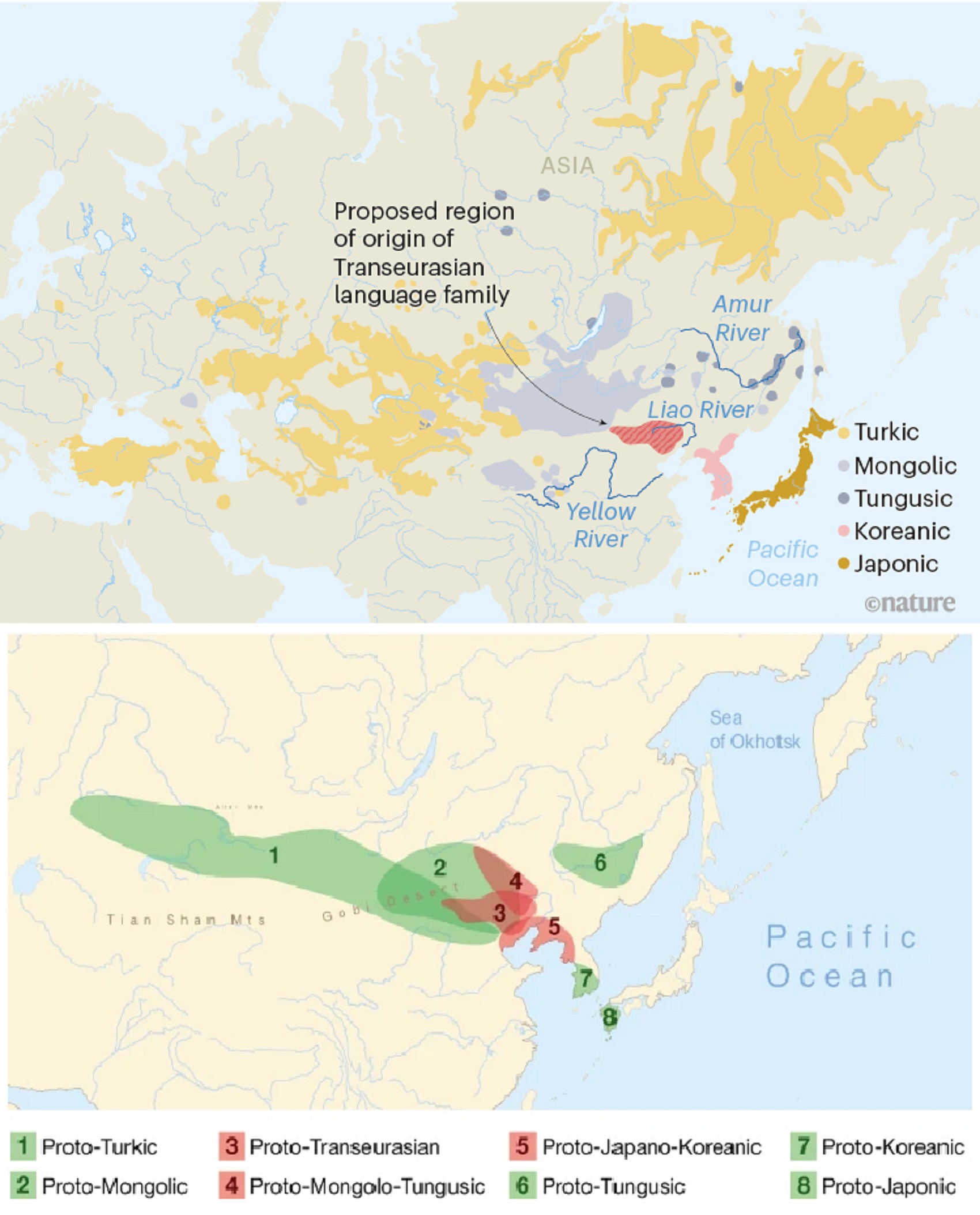
“A triangulation of linguistic, archaeological and genetic data suggests that the Transeurasian language family originated in a population of grain farmers in China around 9,000 years ago, and that agriculture underpinned its spread. The origin and early dispersal of speakers of Transeurasian languages—that is, Japanese, Korean, Tungusic, Mongolic and Turkic—is among the most disputed issues of Eurasian population history. A key problem is the relationship between linguistic dispersals, agricultural expansions, and population movements. Here we address this question by ‘triangulating’ genetics, archaeology, and linguistics in a unified perspective. We report wide-ranging datasets from these disciplines, including a comprehensive Transeurasian agropastoral and basic vocabulary; an archaeological database of 255 Neolithic–Bronze Age sites from Northeast Asia; and a collection of ancient genomes from Korea, the Ryukyu islands and early cereal farmers in Japan, complementing previously published genomes from East Asia. Challenging the traditional ‘pastoralist hypothesis’, we show that the common ancestry and primary dispersals of Transeurasian languages can be traced back to the first farmers moving across Northeast Asia from the Early Neolithic onwards, but that this shared heritage has been masked by extensive cultural interaction since the Bronze Age. As well as marking considerable progress in the three individual disciplines, by combining their converging evidence we show that the early spread of Transeurasian speakers was driven by agriculture.” ref, ref

Totemistic Warriors: sexism, male and female totems?
“Durkheim describes the contact bet male and female totems as a violation which “gives rise to actual bloo battles between men and women” https://www.jstor.org/stable/25002169
“The term “misogyny” is derived from the Ancient Greek word “mīsoguníā” which means hatred towards women. Misogyny has taken shape in multiple forms such as male privilege, patriarchy, gender discrimination, sexual harassment, belittling of women, violence against women, and sexual objectification. The roots of misogyny can be traced back to ancient Greek mythology. According to Hesiod before women came into existence, men were coexisting peacefully as companions to Gods until Prometheus decided to steal the secret of fire from the God which angered Zeus. Zeus punished mankind with an evil thing for their delight called Pandora, the first woman who carried a box which unleashed all evils such as labor, sickness, old age, and death.” https://www.ncbi.nlm.nih.gov/pmc/articles/PMC6058438/
“One of the most prominent examples of group totemism among the ancient Germanic peoples is that which occurs within the institutional framework of the initiatory military society. Many of these societies had a totem animal, usually the wolf or the bear, who would lend his ferocity and strength to the warriors.”
https://norse-mythology.org/concepts/totemism/

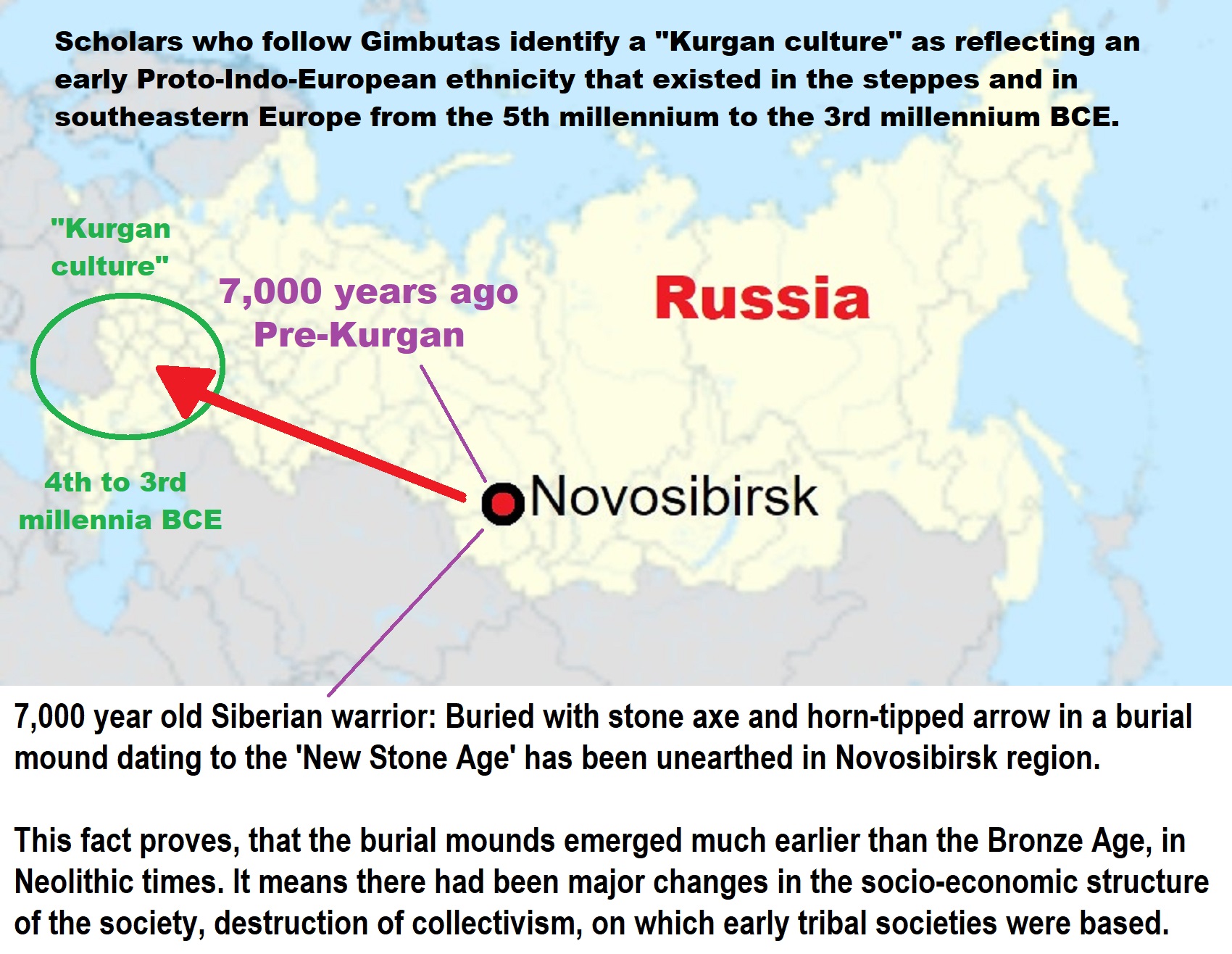
Kurgan Hypothesis
“The Kurgan hypothesis (also known as the Kurgan theory or Kurgan model) or Steppe theory is the most widely accepted proposal to identify the Proto-Indo-European homeland from which the Indo-European languages spread out throughout Europe and parts of Asia. It postulates that the people of a Kurgan culture in the Pontic steppe north of the Black Sea were the most likely speakers of the Proto-Indo-European language (PIE). The term is derived from the Russian kurgan (курга́н), meaning tumulus or burial mound. The Steppe theory was first formulated by Otto Schrader (1883) and V. Gordon Childe (1926), then systematized in the 1950s by Marija Gimbutas, who used the term to group various prehistoric cultures, including the Yamnaya (or Pit Grave) culture and its predecessors. In the 2000s, David Anthony instead used the core Yamnaya culture and its relationship with other cultures as a point of reference.” ref
“Gimbutas defined the Kurgan culture as composed of four successive periods, with the earliest (Kurgan I) including the Samara and Seroglazovo cultures of the Dnieper–Volga region in the Copper Age (early 4th millennium BCE). The people of these cultures were nomadic pastoralists, who, according to the model, by the early 3rd millennium BCE had expanded throughout the Pontic–Caspian steppe and into Eastern Europe. Recent genetics studies have demonstrated that populations bearing specific Y-DNA haplogroups and a distinct genetic signature expanded into Europe and South Asia from the Pontic-Caspian steppe during the third and second millennia BCE. These migrations provide a plausible explanation for the spread of at least some of the Indo-European languages, and suggest that the alternative Anatolian hypothesis, which places the Proto-Indo-European homeland in Neolithic Anatolia, is less likely to be correct.” ref
“Cultures that Gimbutas considered as part of the “Kurgan culture”:
- Bug–Dniester (6th millennium)
- Samara (5th millennium)
- Khvalynsk (5th millennium)
- Dnieper–Donets (5th to 4th millennia)
- Sredny Stog (mid-5th to mid-4th millennia)
- Maikop–Dereivka (mid-4th to mid-3rd millennia)
- Yamnaya (Pit Grave): This is itself a varied cultural horizon, spanning the entire Pontic–Caspian steppe from the mid-4th to the 3rd millennium.
- Usatovo culture (late 4th millennium)” ref
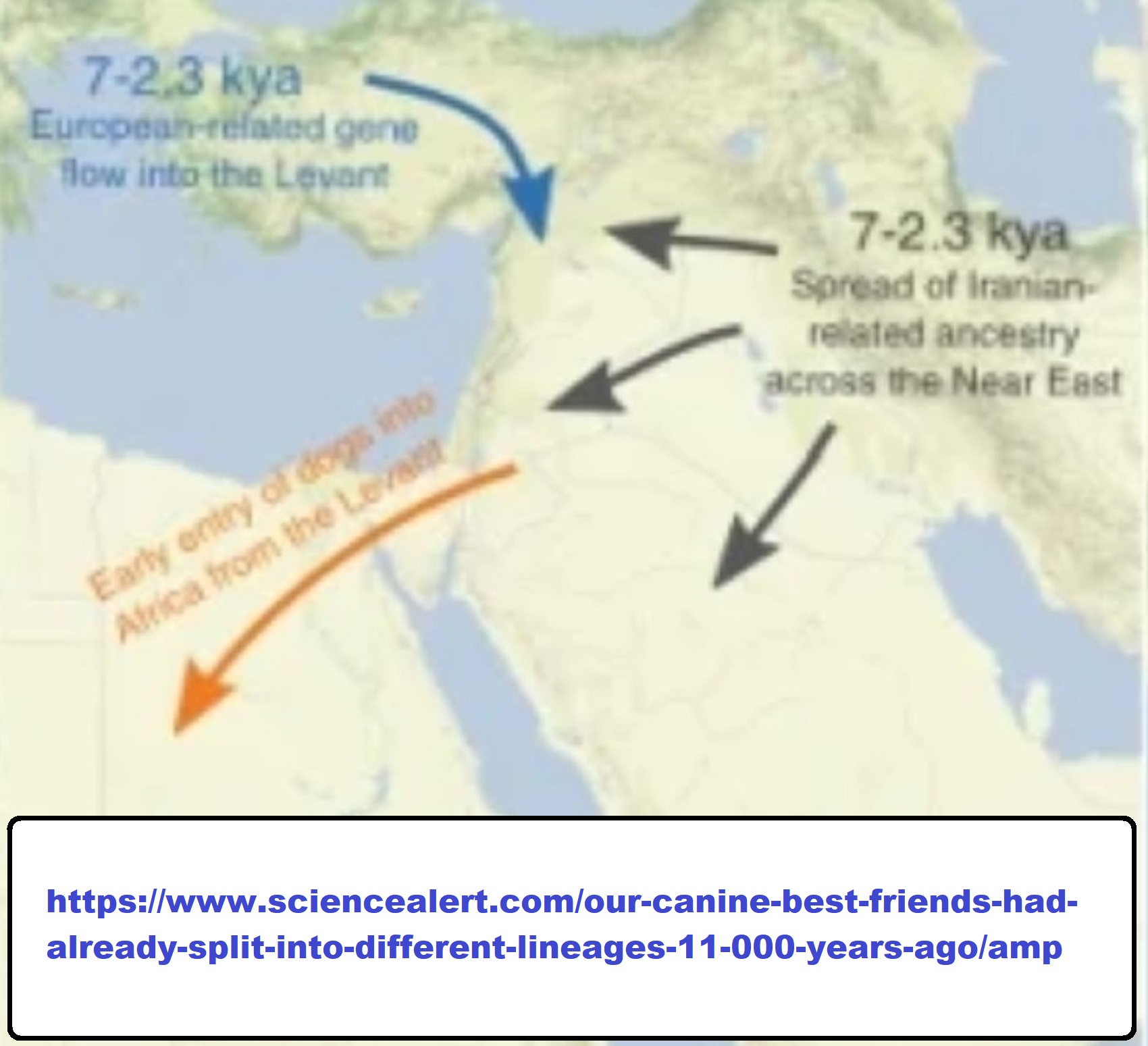
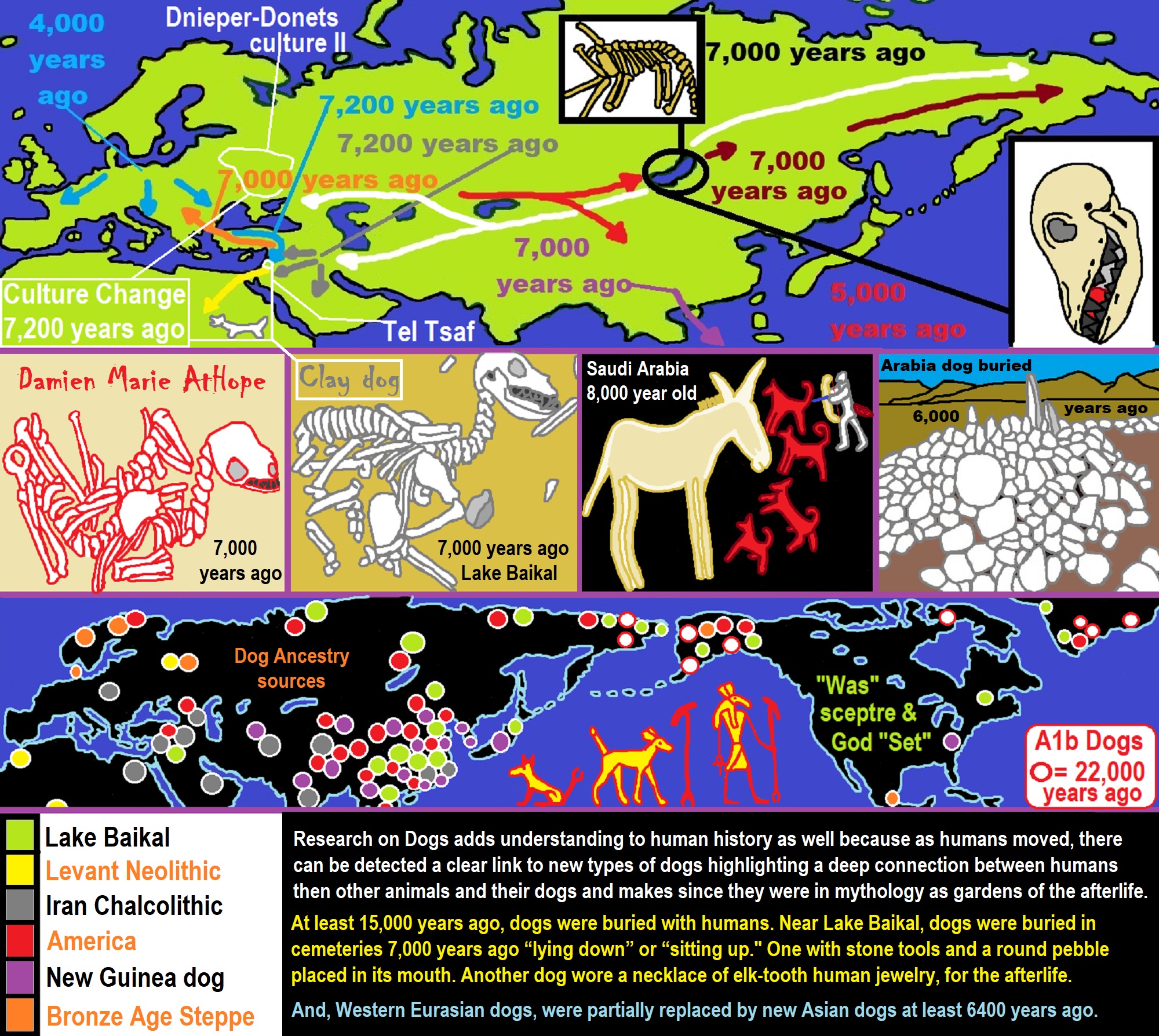
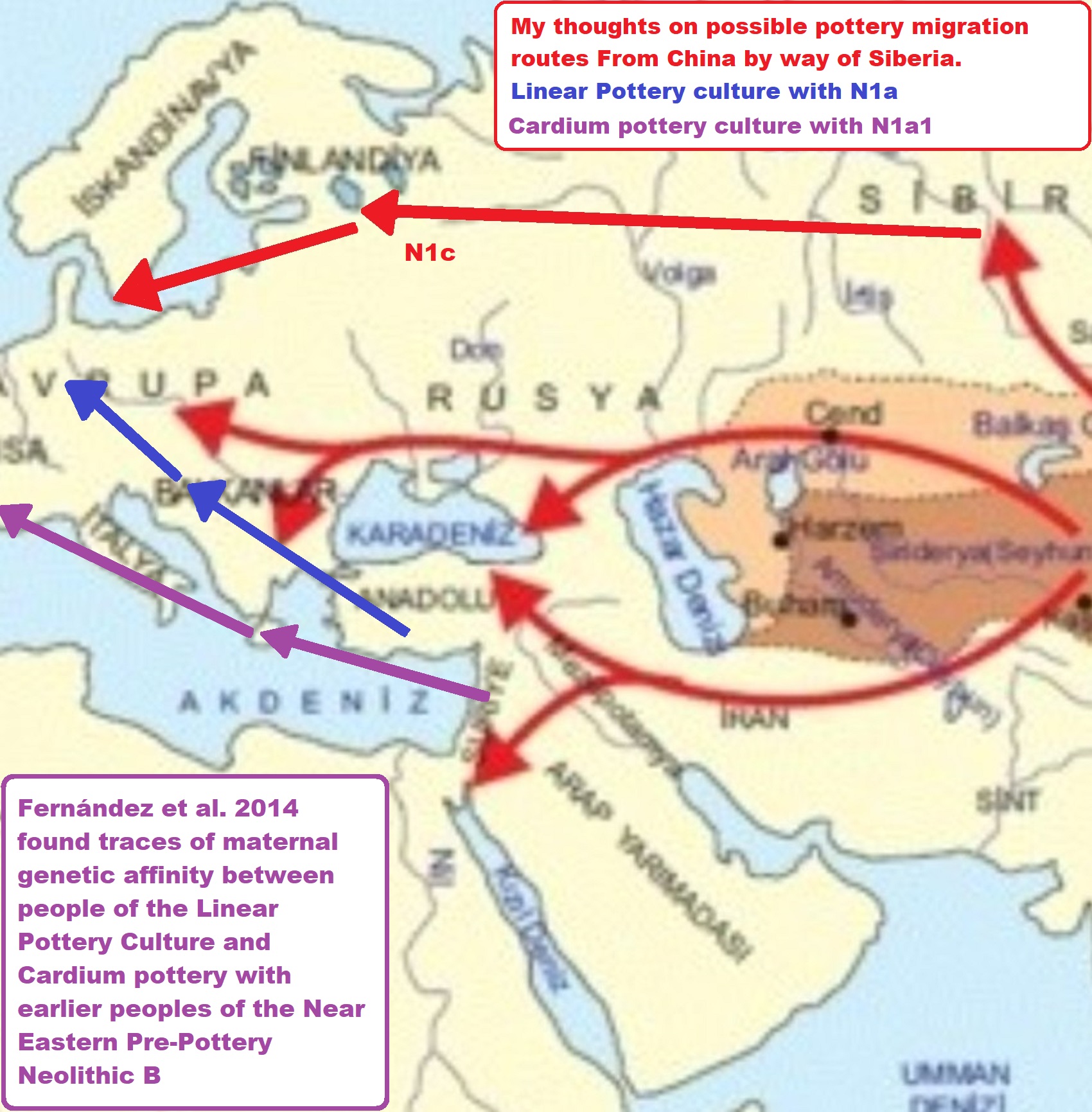

ref, ref, ref, ref, ref, ref, ref, ref, ref, ref, ref, ref, ref, ref, ref, ref, ref
“The shaman is, above all, a connecting figure, bridging several worlds for his people, traveling between this world, the underworld, and the heavens. He transforms himself into an animal and talks with ghosts, the dead, the deities, and the ancestors. He dies and revives. He brings back knowledge from the shadow realm, thus linking his people to the spirits and places which were once mythically accessible to all.–anthropologist Barbara Meyerhoff” ref
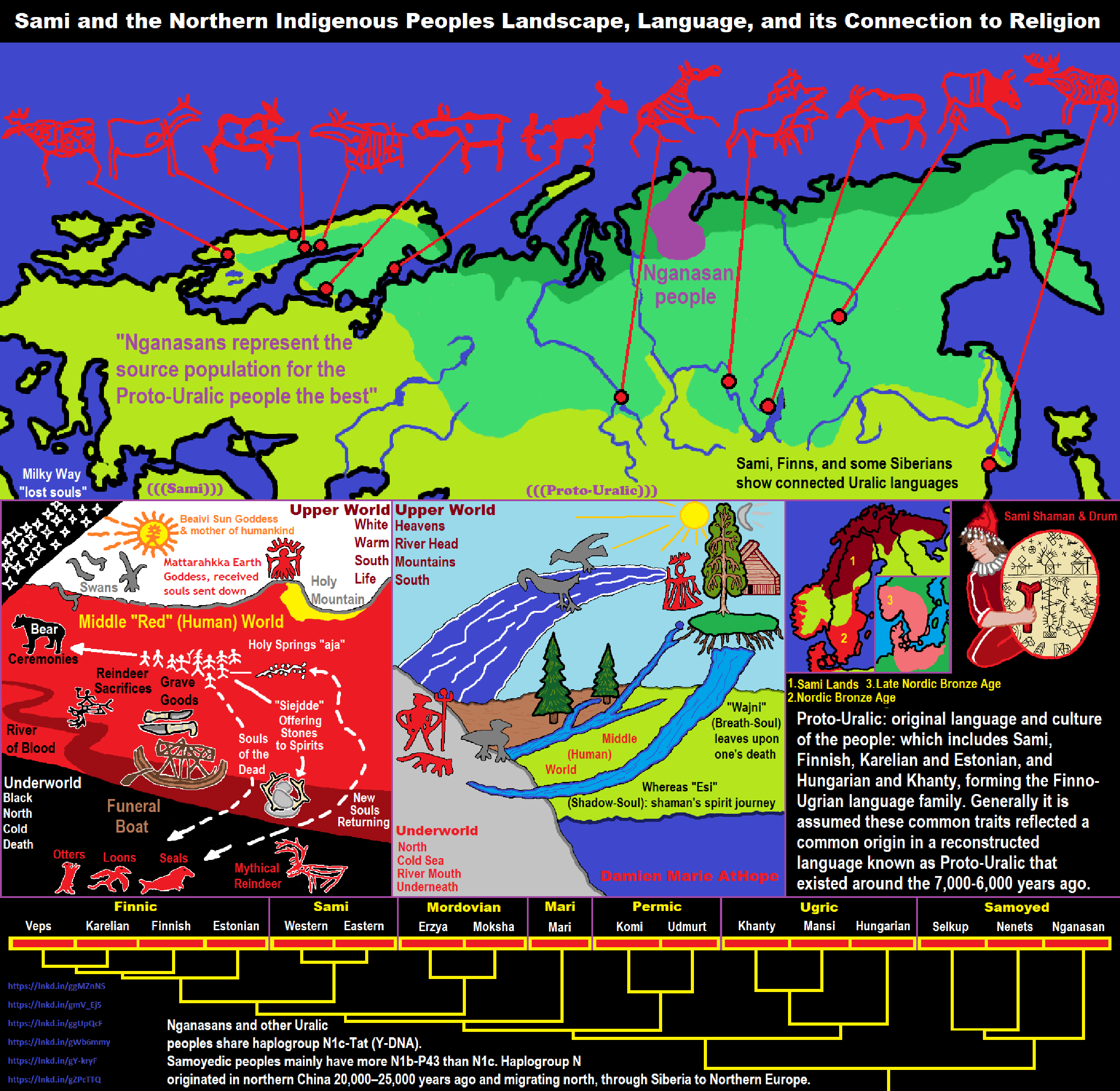
Finnish paganism
“Finnish paganism shows many similarities with the religious practices of related cultures, such as Estonian, Mordvin, Mari, Sami, and other Eurasian paganism. It shares some features with its neighboring Baltic, Norse, and Germanic paganisms. It was a polytheistic religion, worshipping a number of different deities. The principal god was the god of thunder and the sky, Ukko; other important gods included Jumo (Jumala), Ahti, and Tapio. Jumala was a sky god; today, the word “Jumala” refers to all gods in general. Ahti was a god of the sea, waters, and fish. Tapio was the god of forests and hunting.” ref
“The Finnish pagans were polytheistic, believing in a number of different deities. Most of the deities ruled over a specific aspect of nature; for instance, Ukko was the god of the sky and thunder (ukkonen and ukonilma (“Ukko’s air”) are still used in modern Finnish as terms for thunderstorms). These deities were often pan-Finnic, being worshipped by many different tribes in different regions. The Finnish pagans were also animists, worshipping local nature deities at site-specific shrines to that particular deity. These shrines are thought to be mainly “tree-gods”: wooden statues or carvings done in trees or treestumps, depicting human figures, and have been scarcely preserved. One confirmed Stone Age wooden statue has been found in Pohjankuru, and folklore about worshipping tree-gods has been documented.” ref
Major deities
“Several key deities were venerated across nearly all of Finland and Karelia. These pan-Finnic deities controlled many aspects of nature.
- The chief god was Ukko (also (thought to be) known as Perkele), who was the ruler over the sky and thunder. A corresponding figure is known in countless other cultures of the world.
- Another deity that appeared very significant to the Finnish pagans, but about whom modern scholars know very little, was Jumi, whose name is related to “Jumala“, the modern Finnish language word for a monotheist God.
- There were many other important deities who ruled over a specific aspect of the natural world, and who have been referred to as “kings”[citation needed]. The king of water was often called Ahti, and the king of the forest was Tapio.
- Other major deities included Äkräs, the god of fertility; Mielikki, the goddess of the forests and the hunt; Kuu, the goddess of the moon; and Lempo, the god of wilderness and archery.
- Great heroes, who had, in mythology, once been human, such as Väinämöinen and Ilmarinen, were also objects of worship, in a way similar to the Greek pagans‘ worship of mythical human heroes like Herakles.” ref
“Finnish mythology/Finnish paganism has many features shared with Estonian and other Finnic mythologies, but also shares some similarities with neighboring Baltic, Slavic, and to a lesser extent, Norse mythologies.” ref
Ukko, the God of sky and thunder
“Ukko (“old man”) was a god of the sky, weather, and the crops. The Finnish word for thunder, “ukkonen” (little Ukko) or “ukonilma” (Ukko’s weather), is derived from his name. In the Kalevala he is also called “ylijumala” (overgod, Supreme God), as he is the god of things of the sky. He makes all his appearances in myths solely by natural effects when invoked. Ukko’s origins are probably in Baltic Perkons and the older Finnish sky god Ilmarinen. While Ukko took Ilmarinen’s position as the Sky God, Ilmarinen’s destiny was to turn into a smith-hero, or the god of the rock. In the epic poetry of the Kalevala, Ilmarinen is credited with forging the stars on the dome of the sky and the magic mill of plenty, the Sampo.” ref
“Ukko’s weapon was a hammer, axe or sword, by which he struck lightning. While Ukko and his wife Akka (“old woman”) mated, there was a thunderstorm. He created thunderstorms also by driving with his chariot in clouds. The original weapon of Ukko was probably the boat-shaped stone-axe of battle axe culture. Ukko’s hammer, the Vasara (means merely “hammer”), probably meant originally the same thing as the boat-shaped stone axe. When stone tools were abandoned in the metal ages, the origins of stone-weapons became a mystery. They were believed to be weapons of Ukko, stone-heads of striking lightnings. Shamans collected and held stone-axes because they were believed to hold many powers to heal and to damage.” ref
Sámi gods and goddesses
“The words in different Sami languages are marked with:
NS – North Sámi language/dialect.
SS – South Sámi language/dialect.
LS – Lule Sámi language/dialect.
GS – Gildin Sámi language/dialect.” ref
“Beaivi (ns) / Biejvve (ls) / Biejjie (ss): Sun. Sun worship is important in the Sami belief system. Radius kieddi (gs) / Raediegiedtie (ss): Raedieaehtjies son. Radius-acce / -tattje (gs) / Raedieaehtjie (ss): The highest god, the primordial father, the highest. Ipmel / Ibmil / Jubmel / Jupmele (gs): Some shamans believed that Raedieaehtjie and Raediegiedtie were the same, namely Ipmel / Ibmil. He is considered the highest god. Serge-edni (gs): Raedieaehtjie or Ipmel’s wife. The one who creates the human spirit and leads it to Matharáhkku when children are created. Maadteraahkas (ss) / Mahtaráhkku (ns / ls): «Mother earth, Gaia» or “great-grandmother”. Mother of the three goddesses Sáráhkku, Juksáhkku and Uksáhkku. Has a part in the creation of children.Tiermes (gs) / Dierpmis (ns) / Bajánolmmái (ns) / Aijeke (gs) / Atjek (ls) / Horagálles (gs) / Hovrengaellies (ss) / Thor: Various names for the thunder god.” ref
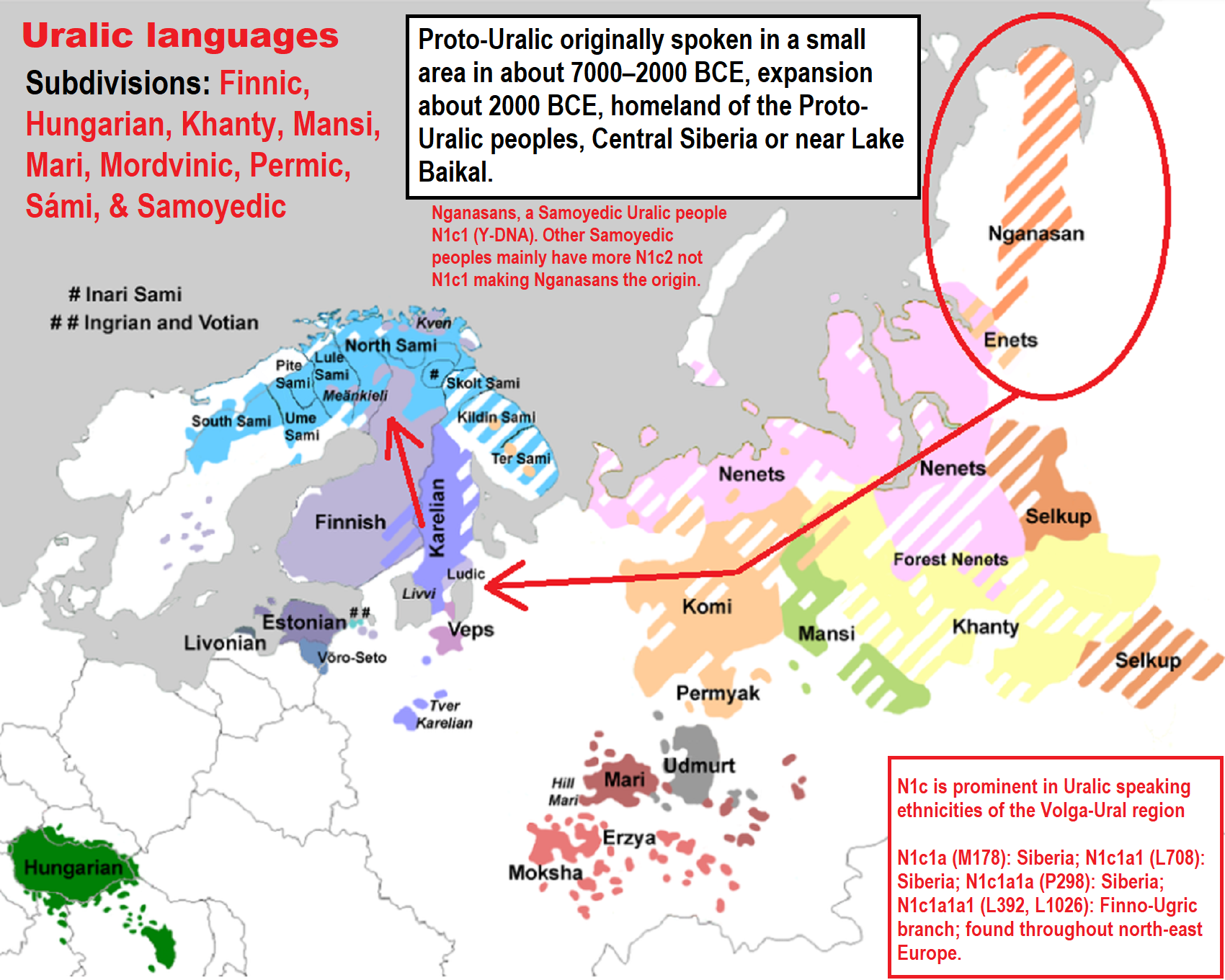
Uralic languages
“The characteristic genetic marker of the Nganasans and some other Eastern Siberians is haplogroup N1c1-Tat (Y-DNA). Other Samoyedic peoples mainly have more N1с2-P43, rather than N1c1, suggesting a bottleneck event. Haplogroup N originated in the northern part of China in 20,000–25,000 years ago and spread to north Eurasia, through Siberia to Northern Europe through drift and bottleneck events. Subgroup N1c1 is frequently seen in non-Samoyedic peoples, N1c2 in Samoyedic peoples. In addition, haplogroup Z (mtDNA), found with low frequency in Saami, Finns, and Siberians, is related to the migration of people speaking Uralic languages.” ref, ref, ref, ref, ref

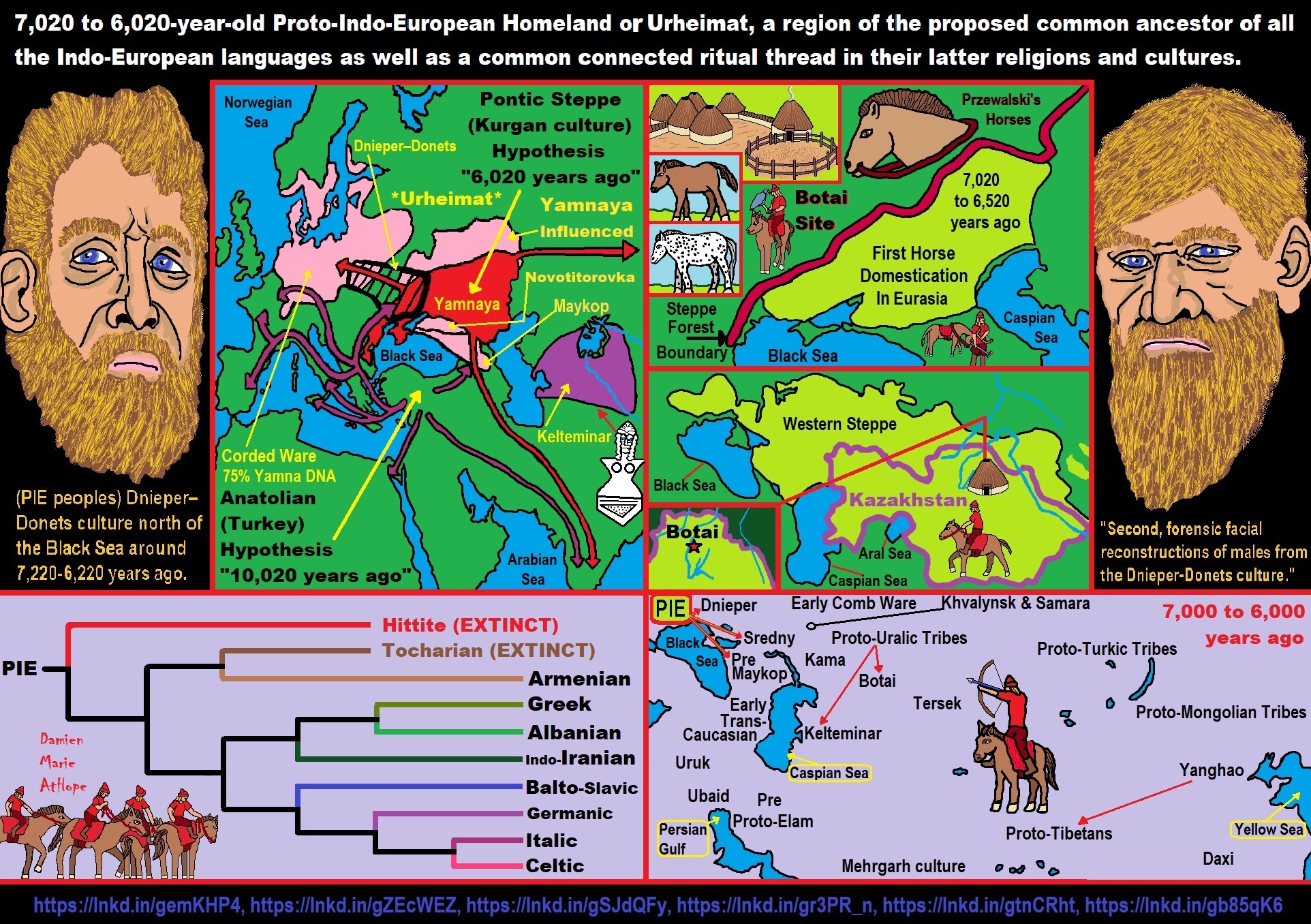

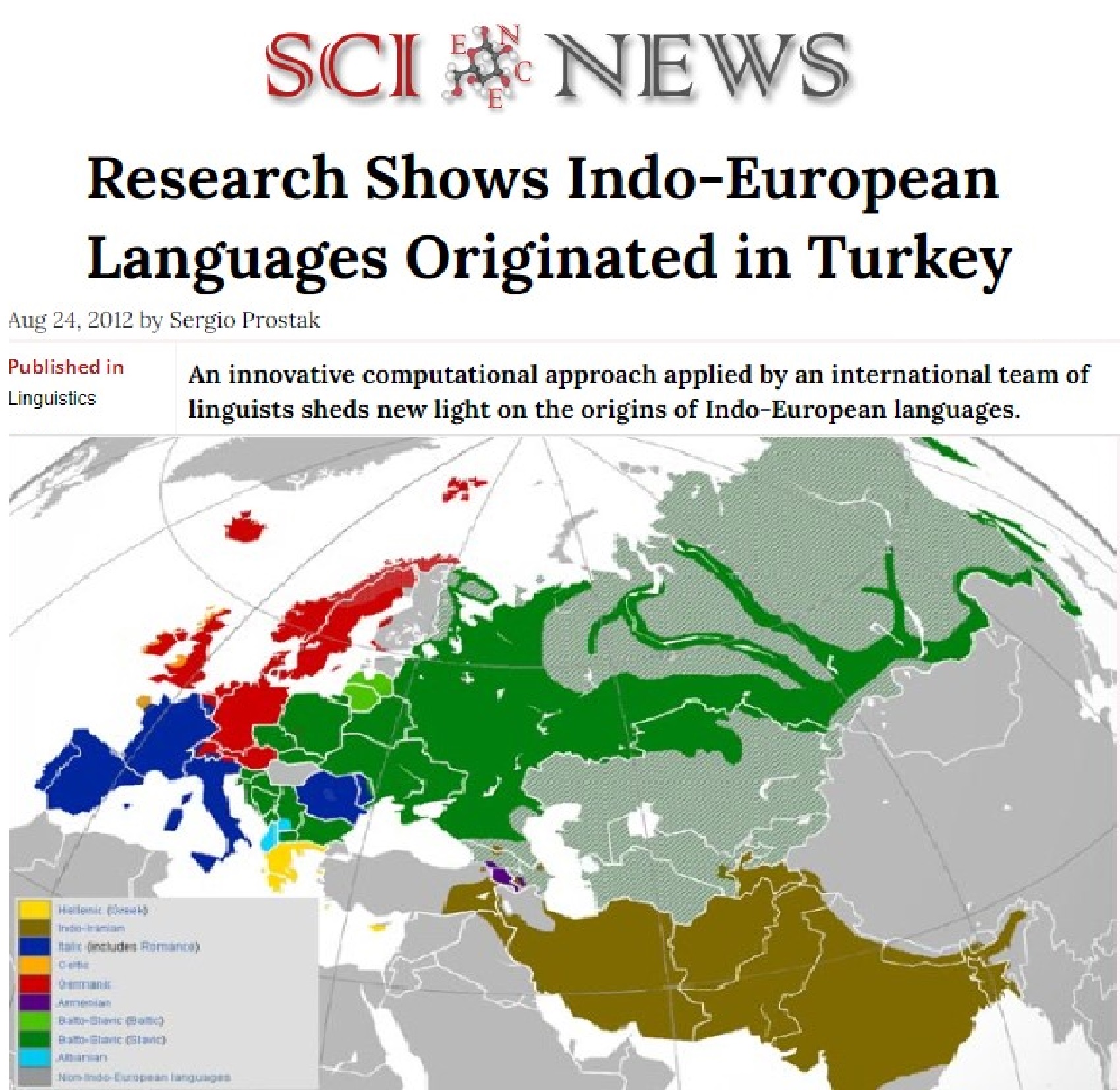
Research Shows Indo-European Languages Originated in Turkey (2012)
“The Indo-European languages belong to one of the widest spread language families of the world. For the last two millennia, many of these languages have been written, and their history is relatively clear. But controversy remains about the time and place of the origins of the family. The majority view in historical linguistics is that the homeland of Indo-European is located in the Pontic steppes – present-day Ukraine – around 6,000 years ago. The evidence for this comes from linguistic paleontology: in particular, certain words to do with the technology of wheeled vehicles are arguably present across all the branches of the Indo-European family; and archaeology tells us that wheeled vehicles arose no earlier than this date. The minority view links the origins of Indo-European with the spread of farming from Anatolia 8,000-9,500 years ago. The team’s innovative Bayesian phylogeographic analysis of Indo-European linguistic and spatial data, including basic vocabulary data from 103 ancient and contemporary Indo-European languages, decisively supports this theory. The linguists report their results in a paper in the journal Science.” ref

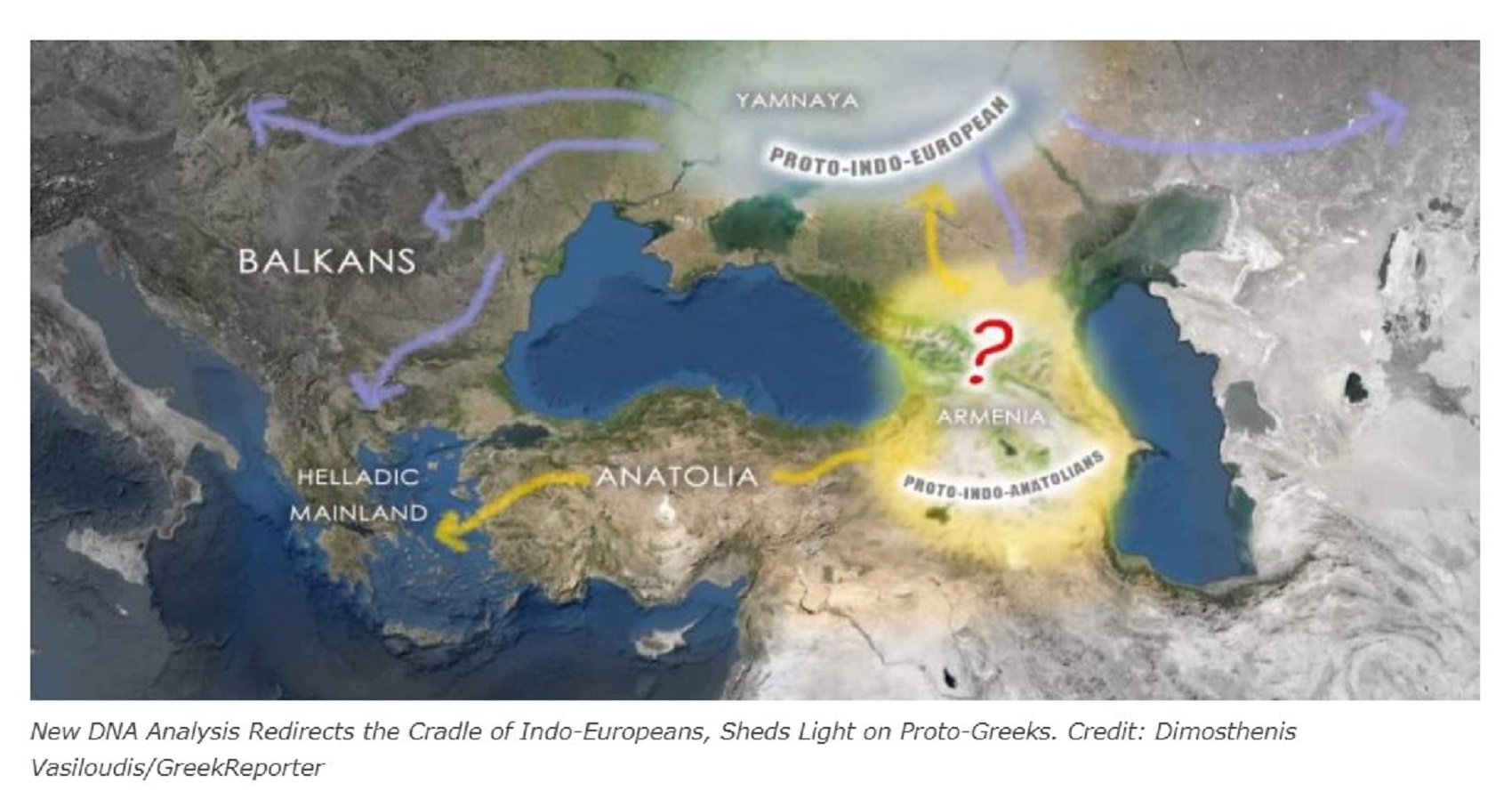
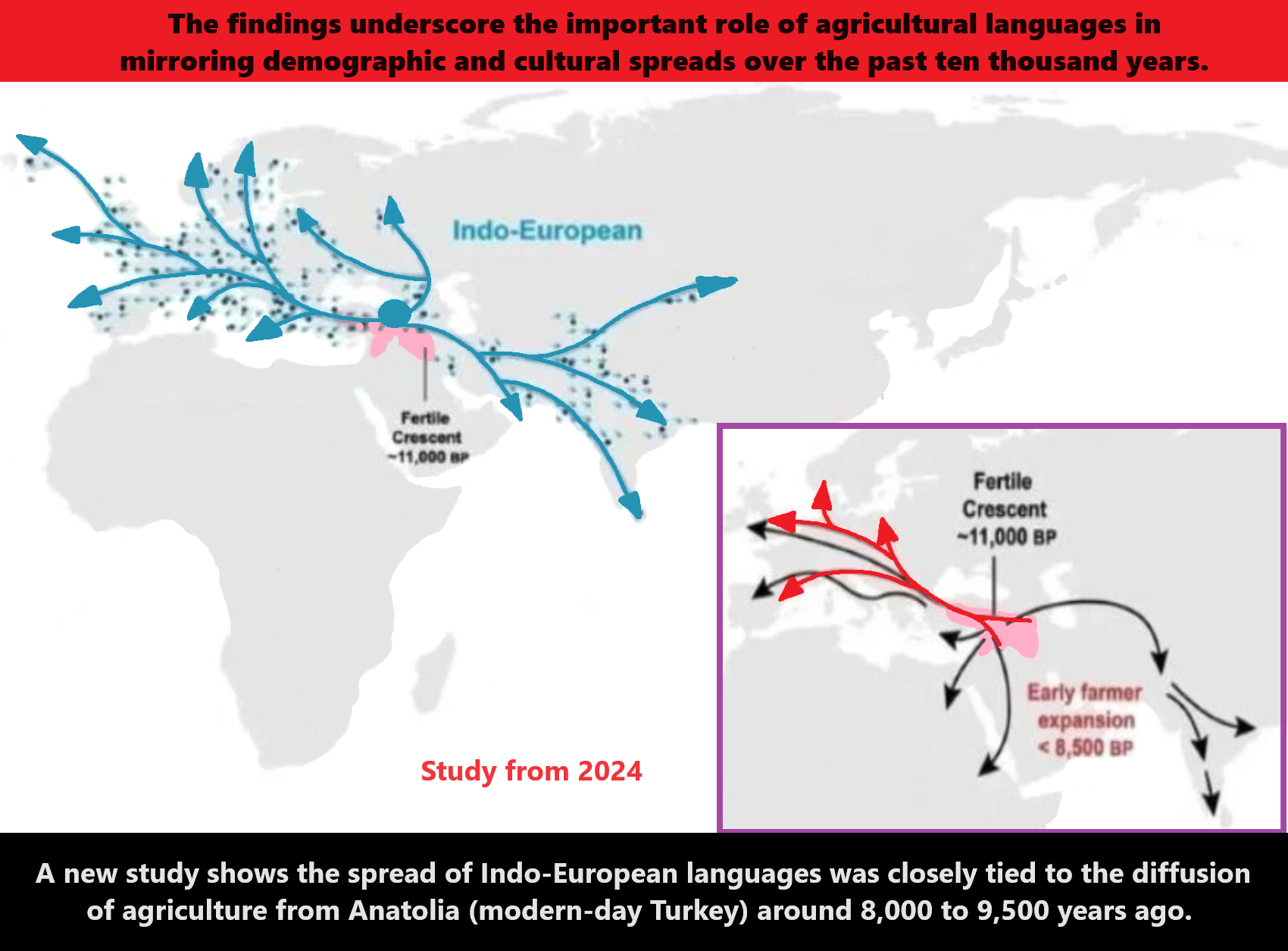

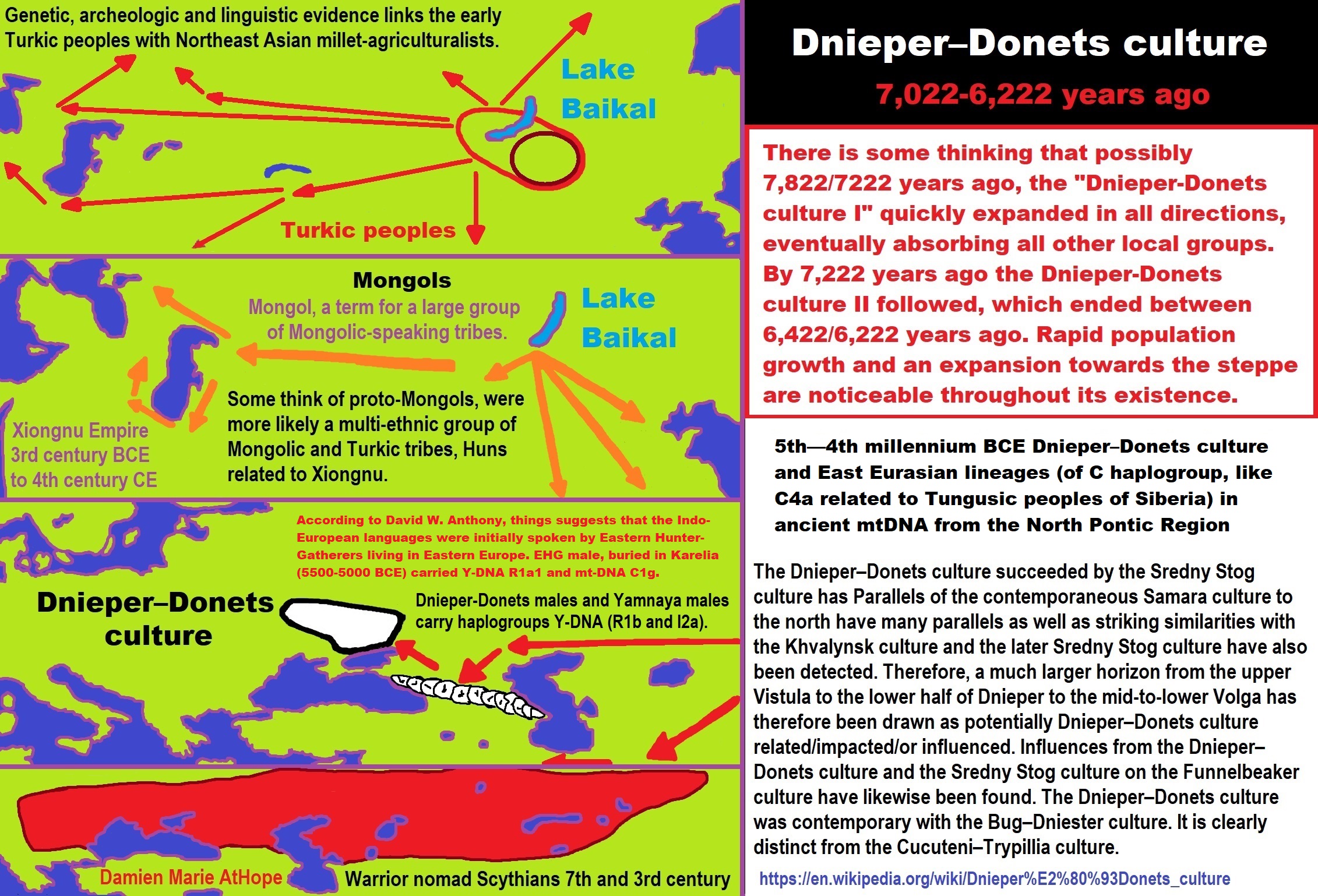
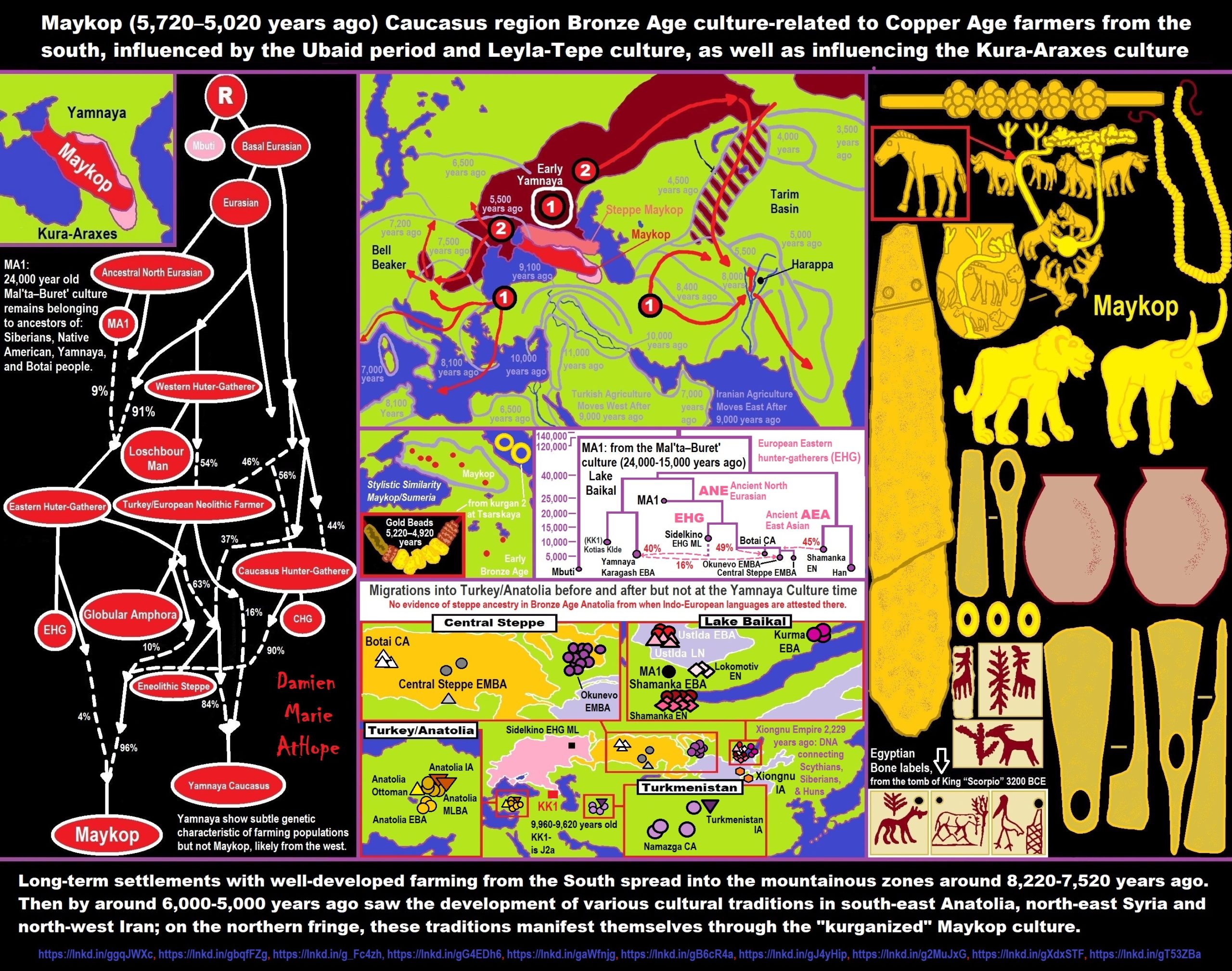
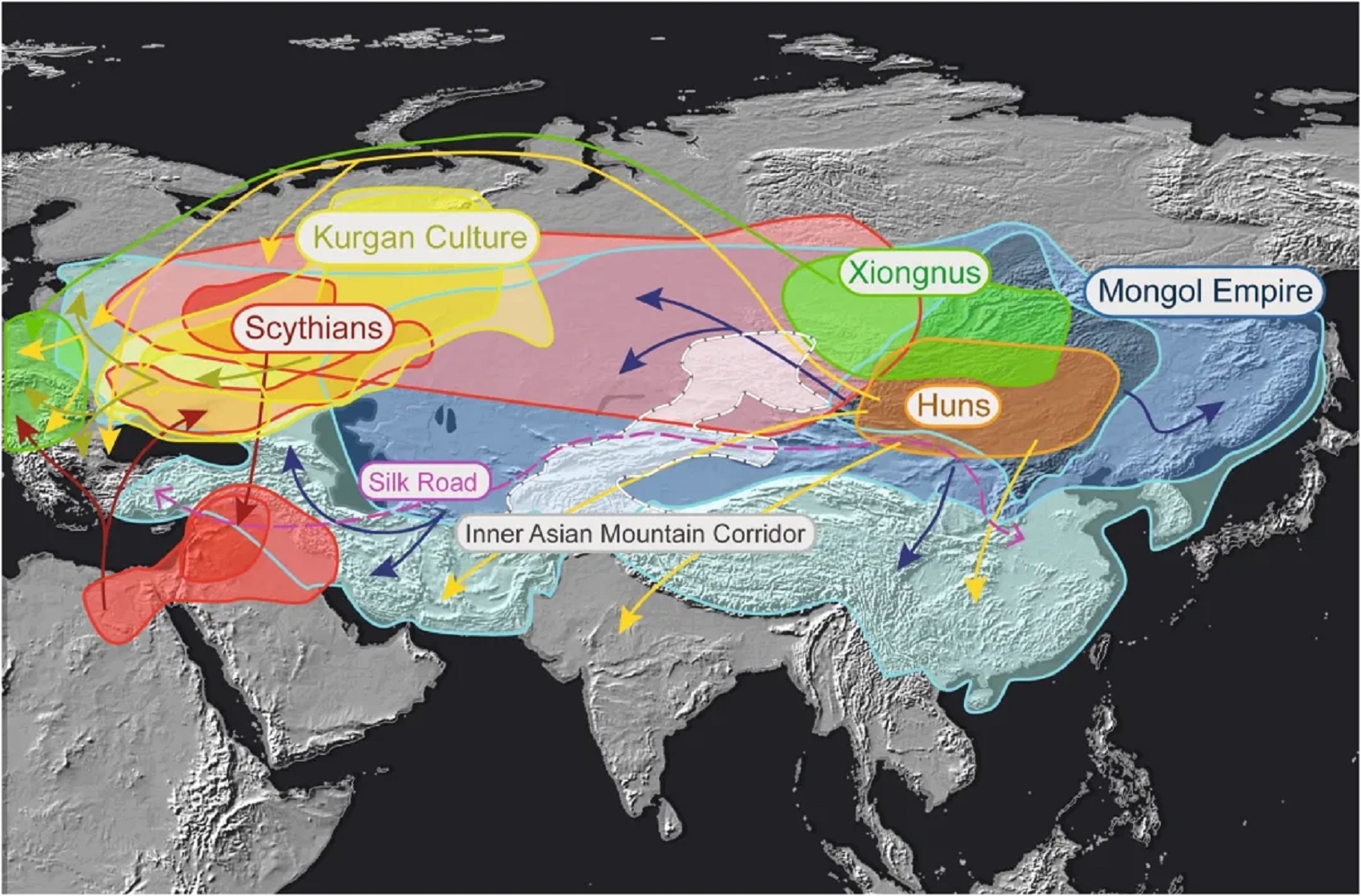
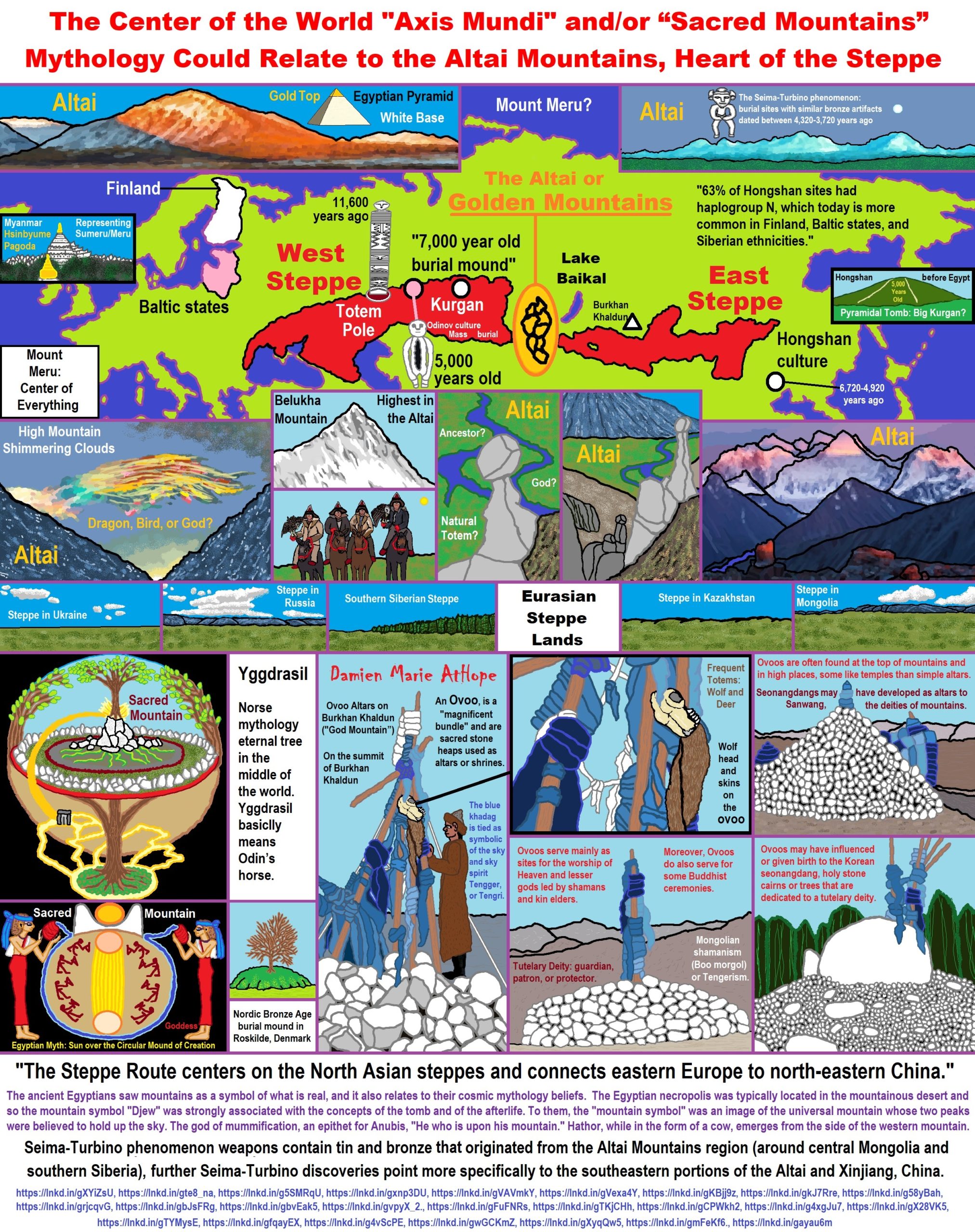
Axis Mundi?
“In astronomy, axis mundi is the Latin term for the axis of Earth between the celestial poles. In a geocentric coordinate system, this is the axis of rotation of the celestial sphere. Consequently, in ancient Greco-Roman astronomy, the axis mundi is the axis of rotation of the planetary spheres within the classical geocentric model of the cosmos. In 20th-century comparative mythology, the term axis mundi — also called the cosmic axis, world axis, world pillar, center of the world, or world tree — has been greatly extended to refer to any mythological concept representing “the connection between Heaven and Earth” or the “higher and lower realms.” Mircea Eliade introduced the concept in the 1950s. Axis mundi closely relates to the mythological concept of the omphalos (navel) of the world or cosmos. Items adduced as examples of the axis mundi by comparative mythologists include plants (notably a tree but also other types of plants such as a vine or stalk), a mountain, a column of smoke or fire, or a product of human manufacture (such as a staff, a tower, a ladder, a staircase, a maypole, a cross, a steeple, a rope, a totem pole, a pillar, a spire). Its proximity to heaven may carry implications that are chiefly religious (pagoda, temple mount, minaret, church) or secular (obelisk, lighthouse, rocket, skyscraper). The image appears in religious and secular contexts. The axis mundi symbol may be found in cultures utilizing shamanic practices or animist belief systems, in major world religions, and in technologically advanced “urban centers.” In Mircea Eliade‘s opinion: “Every Microcosm, every inhabited region, has a Centre; that is to say, a place that is sacred above all.” ref
“There are multiple interpretations about the origin of the concept of the axis mundi. One psychological and sociological interpretation suggests that the symbol originates in a natural and universal psychological perception — i.e., that the particular spot that one occupies stands at “the center of the world.” This space serves as a microcosm of order because it is known and settled. Outside the boundaries of the microcosm lie foreign realms that — because they are unfamiliar or not ordered — represent chaos, death, or night. From the center, one may still venture in any of the four cardinal directions, make discoveries, and establish new centers as new realms become known and settled. The name of China — meaning “Middle Nation” (中国 pinyin: Zhōngguó) — is often interpreted as an expression of an ancient perception that the Chinese polity (or group of polities) occupied the center of the world, with other lands lying in various directions relative to it.” ref
“A second interpretation suggests that ancient symbols such as the axis mundi lie in a particular philosophical or metaphysical representation of a common and culturally shared philosophical concept, which is that of a natural reflection of the macrocosm (or existence at grand scale) in the microcosm (which consists of either an individual, community, or local environment that shares the same principles and structures as the macrocosm). In this metaphysical representation of the universe, mankind is placed into an existence that serves as a microcosm of the universe or the entire cosmic existence, and who — in order to achieve higher states of existence or liberation into the macrocosm — must gain necessary insights into universal principles that can be represented by his life or environment in the microcosm.” ref
“In many religious and philosophical traditions around the world, mankind is seen as a sort of bridge between either: two worlds, the earthly and the heavenly (as in Hindu, and Taoist philosophical and theological systems); or three worlds, namely the earthly, heavenly, and the “sub-earthly” or “infra-earthly” (e.g., the underworld, as in the Ancient Greek, Incan, Mayan, and Ancient Egyptian religious systems). Spanning these philosophical systems is the belief that man traverses a sort of axis, or path, which can lead from man’s current central position in the intermediate realms into heavenly or sub-earthly realms. Thus, in this view, symbolic representations of a vertical axis represent a path of “ascent” or “descent” into other spiritual or material realms, and often capture a philosophy that considers human life to be a quest in which one develops insights or perfections in order to move beyond this current microcosmic realm and to engage with the grand macrocosmic order.” ref
“In other interpretations, an axis mundi is more broadly defined as a place of connection between heavenly and the earthly realms — often a mountain or other elevated site. Tall mountains are often regarded as sacred and some have shrines erected at the summit or base. Mount Kunlun fills a similar role in China. Mount Kailash is holy to Hinduism and several religions in Tibet. The Pitjantjatjara people in central Australia consider Uluru to be central to both their world and culture. The Teide volcano was for the Canarian aborigines (Guanches) a kind of axis mundi. In ancient Mesopotamia, the cultures of ancient Sumer and Babylon built tall platforms, or ziggurats, to elevate temples on the flat river plain. Hindu temples in India are often situated on high mountains — e.g., Amarnath, Tirupati, Vaishno Devi, etc. The pre-Columbian residents of Teotihuacán in Mexico erected huge pyramids, featuring staircases leading to heaven. These Amerindian temples were often placed on top of caves or subterranean springs, which were thought to be openings to the underworld. Jacob’s Ladder is an axis mundi image, as is the Temple Mount. For Christians, the Cross on Mount Calvary expresses this symbol. The Middle Kingdom, China, had a central mountain, Kunlun, known in Taoist literature as “the mountain at the middle of the world.” To “go into the mountains” meant to dedicate oneself to a spiritual life.” ref
“As the abstract concept of axis mundi is present in many cultural traditions and religious beliefs, it can be thought to exist in any number of locales at once. Mount Hermon was regarded as the axis mundi in Canaanite tradition, from where the sons of God are introduced descending in 1 Enoch (1En6:6). The ancient Armenians had a number of holy sites, the most important of which was Mount Ararat, which was thought to be the home of the gods as well as the center of the universe. Likewise, the ancient Greeks regarded several sites as places of Earth’s omphalos (navel) stone, notably the oracle at Delphi, while still maintaining a belief in a cosmic world tree and in Mount Olympus as the abode of the gods. Judaism has the Temple Mount; Christianity has the Mount of Olives and Calvary; and Islam has the Ka’aba (said to be the first building on Earth), as well as the Temple Mount (Dome of the Rock). In Hinduism, Mount Kailash is identified with the mythical Mount Meru and regarded as the home of Shiva; in Vajrayana Buddhism, Mount Kailash is recognized as the most sacred place where all the dragon currents converge and is regarded as the gateway to Shambhala. In Shinto, the Ise Shrine is the omphalos.” ref
“Sacred places can constitute world centers (omphalos), with an altar or place of prayer as the axis. Altars, incense sticks, candles, and torches form the axis by sending a column of smoke, and prayer, toward heaven. It has been suggested by Romanian religious historian Mircea Eliade that architecture of sacred places often reflects this role:”Every temple or palace — and by extension, every sacred city or royal residence — is a Sacred Mountain, thus becoming a Centre.” Pagoda structures in Asian temples take the form of a stairway linking earth and heaven. A steeple in a church or a minaret in a mosque also serve as connections of earth and heaven. Structures such as the maypole, derived from the Saxons‘ Irminsul, and the totem pole among indigenous peoples of the Americas also represent world axes. The calumet, or sacred pipe, represents a column of smoke (the soul) rising from a world center. A mandala creates a world center within the boundaries of its two-dimensional space analogous to that created in three-dimensional space by a shrine.” ref
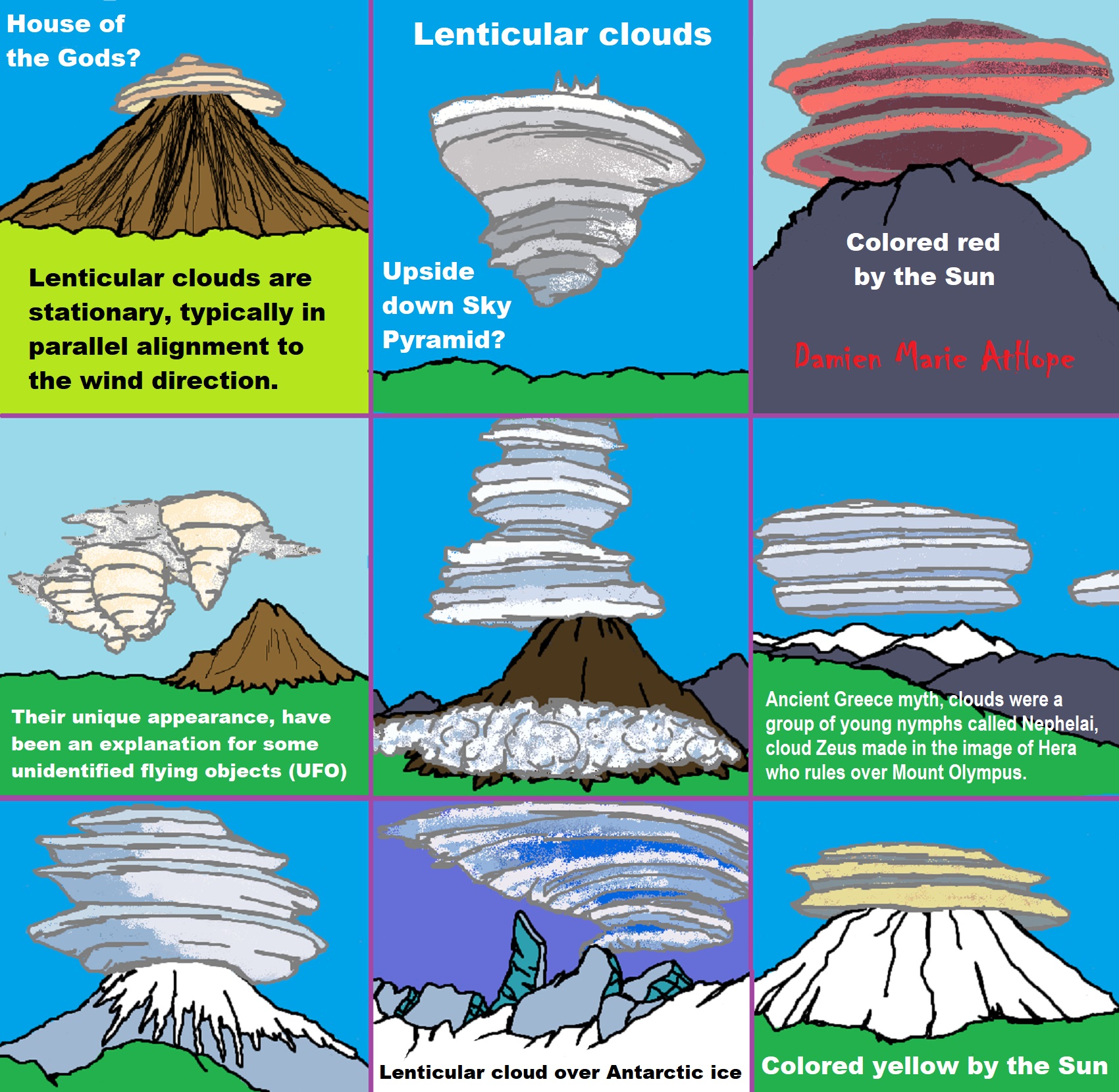
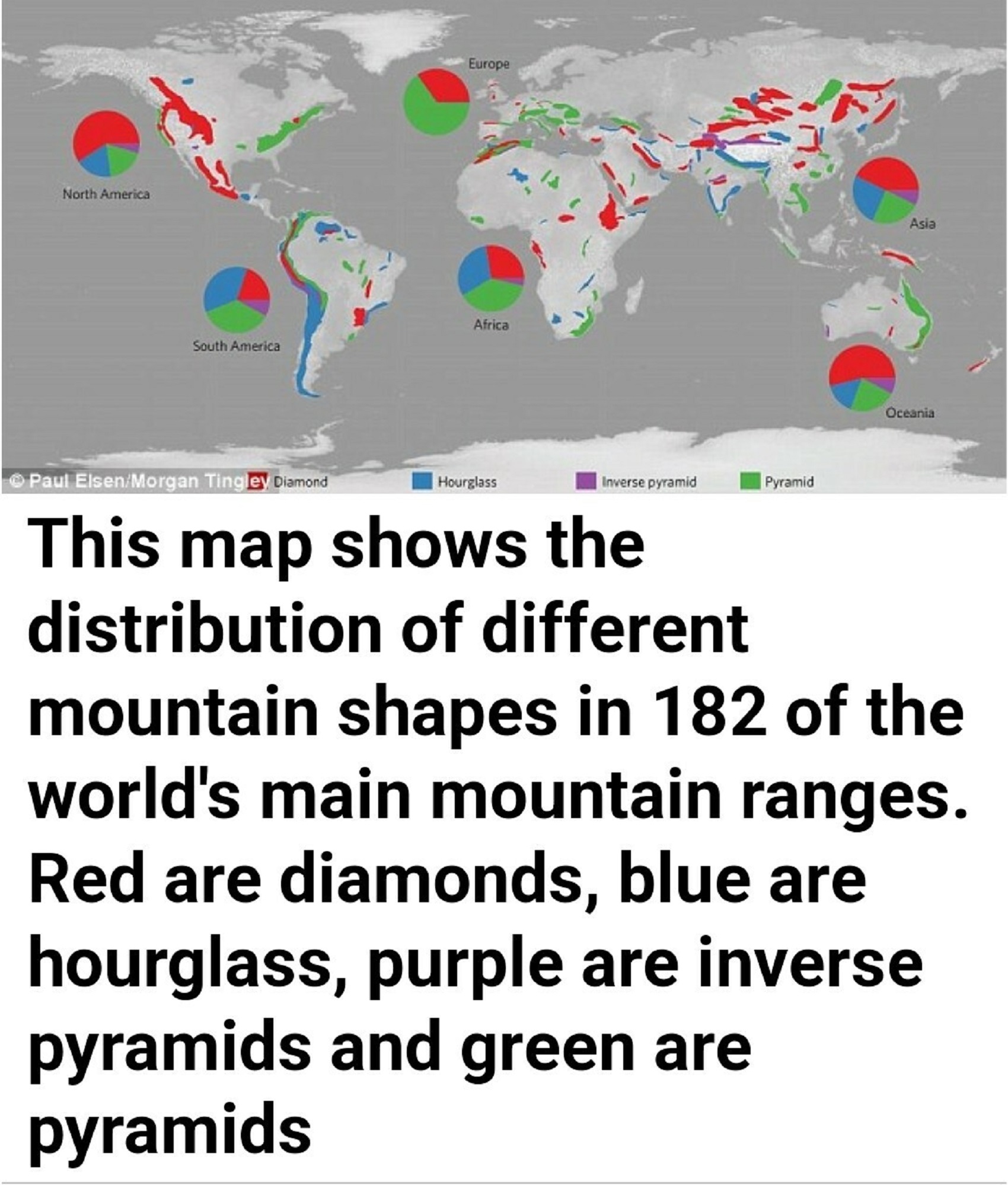
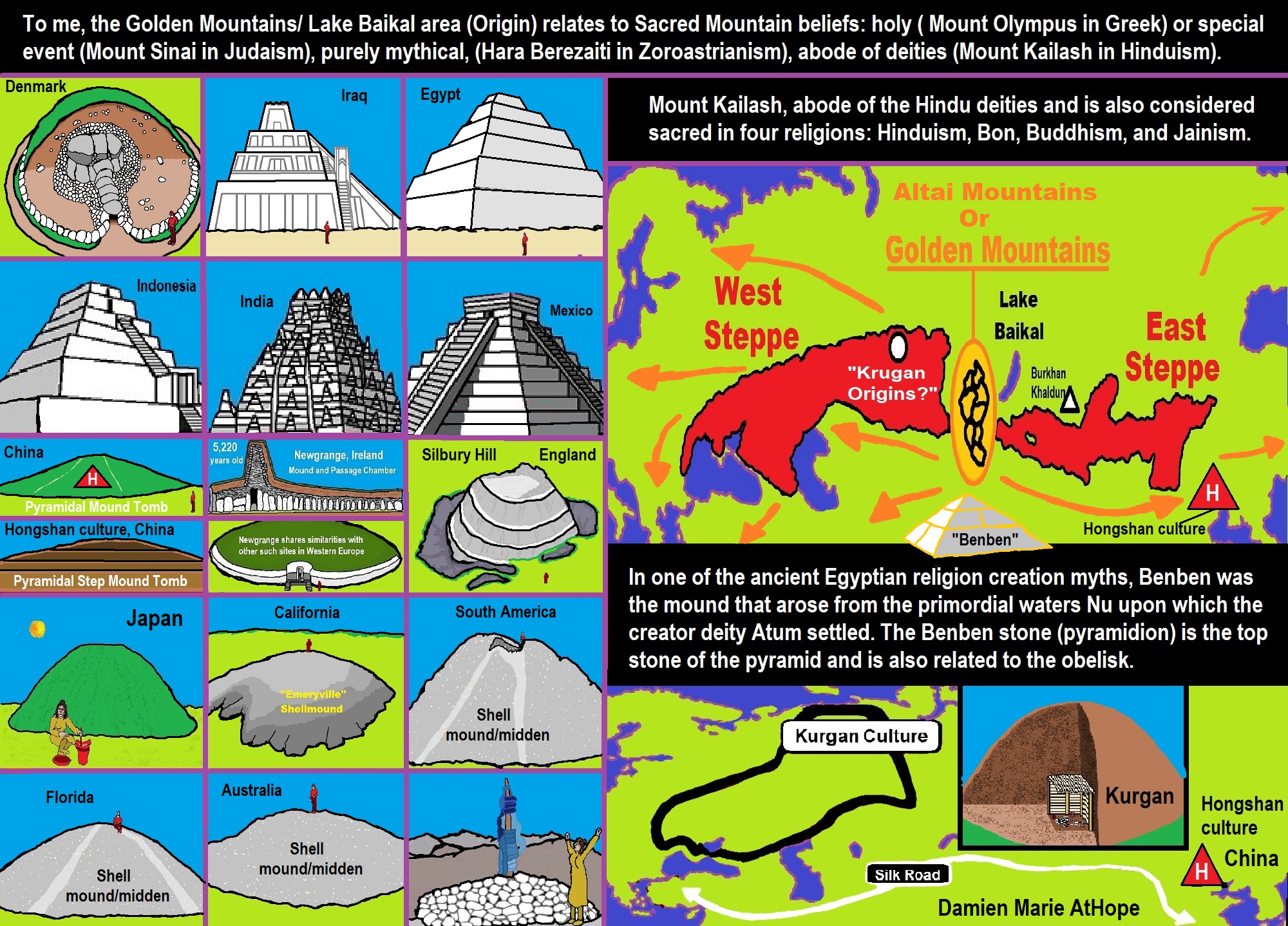
ref, ref, ref, ref, ref, ref, ref, ref, ref, ref, ref, ref, ref, ref, ref, ref, ref, ref, ref, ref, ref, ref, ref, ref
Sacred Mounds, Mountains, Kurgans, and Pyramids may hold deep Mythology connections?
My Speculations are in Comparative Mythologies?
For instance, the mytheme of an ancient belief that is seemingly shared though changed and adapted, a fundamental generic unit of narrative structure seems to be shared a common relation with mountains/ancestors/gods or sacred animals with Sacred Mounds, Mountains, Kurgans, and Pyramids.
In my prehistory art in this blog, I offer my speculations relating to art with possible religious/supernatural thinking which I think are justified or reasoned speculations/conjectures.
My thoughts on speculations/conjectures:
Unreasoned speculations/conjectures
Wild speculations/conjectures
Loose speculations/conjectures
Justified speculations/conjectures
Reasoned speculations/conjectures
Sound/proven speculations/conjectures
“My speculation is that Sacred Mountain Mythology all may relate to beliefs relating to the Altai Mountains.”
“The Altai Mountains, also spelled Altay Mountains, are a mountain range in Central and East Asia, where Russia, China, Mongolia, and Kazakhstan converge. The Altai Mountains have been identified as being the point of origin of a cultural enigma termed the Seima-Turbino Phenomenon which arose during the Bronze Age around the start of the 2nd millennium BCE and led to a rapid and massive migration of peoples from the region into distant parts of Europe and Asia. The Altaic language family takes its name from this mountain range. Altaic (also called Transeurasian) may include Turkic languages, Mongolic languages, Tungusic languages, Koreanic languages, Japonic languages, and Ainu languages. The research on their supposedly common linguistics origin has inspired various comparative studies on the folklore and mythology among the Turks, Proto-Mongols and Tungus people.” ref, ref
“The Seima-Turbino phenomenon is a pattern of burial sites with similar bronze artifacts dated to ca. 2300-1700 BCE (2017 dated from 2100 BCE to 1900 BCE, 2007 dated to 1650 BCE onwards) found across northern Eurasia, particularly Siberia and Central Asia, maybe from Fennoscandia to Mongolia, Northeast China, Russian Far East, Korea, and Japan. The homeland is considered to be the Altai Mountains. These findings have suggested a common point of cultural origin, possession of advanced metalworking technology, and unexplained rapid migration. The buried were nomadic warriors and metal-workers, traveling on horseback or two-wheeled carts.” ref
“Phylogenetic analyses of STR variation within haplogroups C and Q traced both lineages to a probable ancestral homeland in the vicinity of the Altai Mountains in Southwest Siberia. Divergence dates between the Altai plus North Asians versus the Native American population system ranged from 10,100 to 17,200 years for all lineages, precluding a very early entry into the Americas. The geographic source of Native American Y chromosomes, shown as a circle that included the following territory: Lake Baikal (eastward to the Trans-Baikal and southward into northern Mongolia), the Lena River headwaters, the Angara and Yenisey river basins, the Altai Mountain foothills, and the region south of the Sayan Mountains (including Tuva and western Mongolia). The Native American sample, included 588 individuals from 18 populations allocated three major Native American language families as follows: 342 Amerind speakers, 186 Na-Dene speakers, and 60 Aleut-Eskimo speakers. Native American linguistic affiliations, C lineage network for Asia and the Americas, noting the position of the C-P39 ancestral node leading to C-P39 has haplotype (15–13–13–29–24–9–11–13–11–11) and was present in 2 Altai. This ancestral node is also connected to a one-step neighbor (DYS19 = 16) below it in the network that was found in 11 Altai. The first node after the C-P39 mutation differs from the ancestral node only at DYS390 (23 versus 24 repeats) and was found in a single Cheyenne individual. The one-step neighbor (DYS393 = 12) to the left of this node leads to a mixed Amerind and Na-Dene lineage, whereas the two-step neighbor (DYS389II = 28; DYS391 = 10) below it leads to an exclusively southwestern Na-Dene branch present in 14 Apache and 1 Navajo. The haplotype for the 2 Wayu (15–13–13–30–25–10–11–13–11–11) exhibited 6 mutational step differences from the C-P39 modal haplotype (15–13–13–28–23–9–11–12–11–11), reflecting its marked divergence from the predominant Native American C-haplogroup. Haplogroup C has a much more patchy distribution, with most of the C-P39 chromosomes in our sample concentrated in the three Na-Dene populations. Both Native American founder haplogroups are present at moderately high frequencies in our sample of 98 southern Altai (Q = 17%; C = 22%); however, it is the STR data that proved to be of critical import for narrowing down the presumptive Asian source region. The ancestral nodes leading to both Q-M3 and C-P39, the two Native American–specific haplogroups, were present in the southern Altai individuals. Although the Kets and Sekups currently inhabit the eastern part of Western Siberia and the Yenisey River Valley, according to Russian ethnographers, their ancient homelands are thought to lie farther south, on the slopes of the Sayan and Altai mountains. Thus, our present data support the hypothesis that the Altai Mountain region is the principal candidate for the geographic source of the founding Native American Y chromosomes. As far as we are aware, only the Altai region possesses all of the major Native American Y chromosome and mtDNA founding haplogroups, thereby making it the best available candidate for the ancestral source region for the Native American population system.” https://academic.oup.com/mbe/article/21/1/164/1114763
High mobility of ancient hunter-gatherers 7,500 years ago,
Indicated by genetic data from the Altai
“Research has identified a previously unknown hunter-gatherer population in the Altai some 7,500 years ago which illustrates the high mobility between populations in Siberia and elsewhere in North Asia. Furthermore, the Altai hunter-gatherer group contributed genetically to many contemporaneous and subsequent populations across North Asia, showing how great the mobility of those foraging communities was. The Altai region (Altai Mountains) is widely known as the place where an archaic hominin group, the Denisovans, was first discovered. Yet this region is also highly important for the demographic history of our own species, says Cosimo Posth. “Its geographic location makes the Altai an important crossroads for population movements between northern Siberia, Central Asia, and East Asia over millennia.” ref
“The genetic data from the Altai show that East Eurasia harbor highly connected gene pools since at least the Early Holocene, some 10,000 years ago. “Such connection across long geographic distances is remarkable. This suggests that human migrations and admixtures were the norm and not the exception also for ancient hunter-gatherer societies. Moreover, a burial in the region in the same period as the other Altai hunter-gatherers had a completely different genetic profile, carrying genetic affinities to populations located in the Russian Far East. This man, known as the Nizhnetytkesken individual, was found in a cave containing rich burial goods and with a costume and objects interpreted as a possible representation of shamanism.” ref
“These 6,500-year-old remains discovered in Nizhnetytkesken Cave in the Altai Mountains had genetic ties to a group living about 900 miles away. “This implies that individuals with very different [genetic] profiles were living in the same region, and with belongings indicate that this person may have been a shaman. His ancestral group may have inhabited a larger area than previously thought, or he may have been a traveling healer. Therefore, it seems that mixing between ancient hunter-gatherer groups probably occurred more frequently than previously believed.” ref
“This shows that people with very different genetic profiles were living in the area. It is not clear if the Nizhnetytkesken individual came from far away or the population from which he originated was living close by. “However, his grave goods appear different from other archeological sites, implying movements of both culturally and genetically diverse individuals into the Altai region,” says Wang. This study also reports data from a 7,000-year-old individual from the Russian Far East which show genetic links with hunter-gatherer groups from the Japanese Archipelago.” ref
“Furthermore, newly generated ancient genomes from the Kamchatka Peninsula reveal multiple phases of North America-related gene flow to northeastern Asia over the last multiple millennia. These results raise the question to what extend genetic profiles and archaeological cultures were correlated in Siberian forager groups. There are still large temporal gaps across this huge geographic region to fill with more interdisciplinary archeological and ancient DNA research, according to Posth. “We need more archaeogenetic studies focusing on North Asia to find out which demographic processes were involved in the formation of distinct hunter-gatherer gene-pools, and how these were possibly linked with different cultural practices,” he says.” ref
“And the study of 10 sets of human remains in North Asia dating back as many as 7,500 years ago suggests that hunter-gatherers traveled far and wide, including back and forth across the Bering Land Bridge, according to a Live Science report. Genes from groups in North America were also detected in remains in central Siberia and on Russia’s Kamchatka Peninsula. The researchers suggest that genes flowed back and forth between North America and Asia for about 5,000 years.” ref
Genetics Reveal Movements of Ancient Siberians
“DNA reveals the previously unknown degree of mixture between Japan, North America, and the Eurasian mainland. Ancient DNA preserved in the icy climate of Siberia has revealed new insights about how ancient humans migrated five to seven thousand years ago.” ref
“In a study published recently in Current Biology, the researchers examined the DNA from 10 different ancient humans, which is quite a lot considering most of them date from 5,500 to 7,500 years old. These remains came from three locations in Siberia — the Altai Mountains, the Kamchatka Peninsula, and the Russian Far East.” ref
Altai Mountains meetings and Shamanism?
“Researchers were surprised to discover a previously unknown population with mixed genetics in the Altai Mountains in southern Siberia. At some point during the last Ice Age, a group of ancient north Eurasians mixed with a population from northeastern Siberia. The corresponding mixture is one that researchers haven’t seen before, the head researcher explained. It’s also not clear where these two groups first met and intermingled since the people were mostly nomadic at the time. It’s possible they met in the region where the remains are found, though, which may have provided a good passage between mountains to the north and the desert to the south. “It’s a perfect meeting point for groups, geographically speaking,” the head researcher explained.” ref
“Five of the Altai Mountains remains — all males — had very similar DNA, despite dating from different times between 7,500 and 5,500 years ago. But the sixth male, which dates to about 6,500 years ago, comes from farther east. The DNA shows this, but so does the archaeological context. The individual was buried with rich burial goods and a costume that the head researcher explained could indicate some sort of shamanism. Moreover, the head researcher explained it’s unclear whether this man is representative of a larger migration between the Altai Mountains and people farther east. But it shows that a degree of movement was occurring between different people at the time.” ref
Japanese Connection?
“Nest, one of the analyzed individuals was found in the Russian Far East. This male isn’t that remarkable at first glance, for the DNA resembles that of other similarly aged people that have been previously analyzed. Or at least three-quarters of the DNA is similar. The other quarter of this man’s genome appears to be Japanese. This discovery is surprising. This man dates back to about 7,000 years ago, but Japan was settled much earlier — possibly 30,000 years ago. This means that people from Japan were traveling back to the mainland and mixing with other humans there. “These hunter-gatherers were also able to cross bodies of water and interact among each other,” the head researcher explained. Overall, these results show how fluid ancient people were in Eurasia and even North America. “These foraging communities were in close contact with each other, they were highly mobile with each other and were admixing,” the head researcher also explained. “We are really talking about large-distance mobility.” ref
Crossing the water to and from the Americas?
“Two males and one female from Kamchatka lived relatively recently — only 500 years ago. The reason it’s interesting is that researchers haven’t previously published any ancient genome information from this region. All three of the remains the head researcher and his colleagues analyzed contained small portions of ancestry from Indigenous Americans. The presence of these markers suggests that Indigenous Americans were also crossing back to Russia prior to the period these individuals were alive. “This probably happened over a long period of time,” the head researcher explained. While researchers had previously known there was gene flow back and forth across the Bering Sea — perhaps for 5,000 years — this finding stretches that area of gene flow further south into the Kamchatka Peninsula.” ref
Here are other supporting articles:
- Americans’ Journeys to Asia Thousands of Years Ago Analysis of ten Eurasian individuals, up to 7,500 years old, gives a new picture of movement across continents
- Genomic study of the Ket: A Paleo-Eskimo-related ethnic group with significant ancient North Eurasian ancestry
- Paleolithic to Bronze Age Siberians Reveal Connections with First Americans and across Eurasia
- The genetic history of admixture across inner Eurasia. The indigenous populations of inner Eurasia, a huge geographic region covering the central Eurasian steppe and the northern Eurasian taiga and tundra, harbor tremendous diversity in their genes, cultures, and languages. In this study, we report novel genome-wide data for 763 individuals from Armenia, Georgia, Kazakhstan, Moldova, Mongolia, Russia, Tajikistan, Ukraine, and Uzbekistan.
- Genetic analysis reveals Europeans descended from at least three ancient groups. Almost all present-day Europeans descend from the mixing of Ancient North Eurasians and two other populations, earlier hunter-gatherers, and ancient Near Eastern farmers. Ancient North Eurasian DNA wasn’t found in either the hunter-gatherers or the early farmers, suggesting the Ancient North Eurasians arrived in the area later, he said. This group appears to have contributed DNA to present-day Europeans as well as to the people who traveled across the Bering Strait into the Americas more than 15,000 years ago.
“Volcanos and Mountains in the Mesoamerican Highlands’ Mythology” by Juan Carlos Barrientos-García
“The Mesoamericans are the hombres delmaíz, the “Men of corn” (Christenson, 2003). Mountains were also regarded as the depositaries of water, therefore becoming sanctuaries of water worship. Evidence of the mountains being considered as natural temple structures where the water gods were venerated remains in the name of several locations throughout modern Honduras, Nicaragua, El Salvador, and Guatemala. Many mountain places bear the name Azacualpa, which literally means the “water-worshipping place”, from the Nahuatl atl-“water”, -zacualli “temple pyramid” and – pa “place” (Incer, 1985). It is interesting to mention that Nahuatl (the language of the Mexica) had become before the arrival of the Spanish, the lingua franca spoken by the Mesoamericans due to the sway of powerful polities in Mexico which culturally and economically influenced the greater Mesoamerican area. Several place names in the region have their origins in this language (Carmack, 1981).In essence, volcanoes and mountains represented for ancient Mesoamericans portal to the spiritual world. The imposition of their massive presence in the scenery made them into natural temples enclosing riches and the vital waters people needed for sustenance. Volcanoes were producers of life and holders of the primordial fire of life, home to powerful spirits, and were also high altars for worshipping the heavens. They were unequivocally the backdrop for the myths and the materialization of the powers of the spirits that inhabited within their midst.” ref
Animism in Altai Mountain Area?
“Worship of nature, the three worlds in Altai mythology, Altai shamanism, Altai epic myths, Altai annual communal ceremonies marking the season cycles, sacred fire mythology, Prayers/Blessings, Altai magic (tarmalga), afterlife/soul belief, and Shamanistic Healing.”
“The Republic of Altai, (the mountainous Altai), is a republic of Russia located in southern Siberia, and is part of the Russian Federation. The Republic is located about 500km South of Novosibirsk, bordering China, Mongolia, and Kazakhstan. The Altai people, in total, number 76,000, and are made of 6 different groups; Telengit, Altai Kizhi, Tubular, Kumandin, Shor, and Chalkan. This research paper will focus on the 65,000 Altai (Telengit and Altai Kizhi) people who speak Southern Altai fluently. The language is used in arts, media, in education and in everyday life. The majority of the Altai are also fairly fluent in Russian, with the exception of those living in remote villages. I am interested in researching their animistic and shamanistic worldview and practices more thoroughly in order to have increased insight into their culture.” ref
Worship of nature?
“The Altai religious beliefs are based on animism. The Altai worship gods in nature, in trees, rivers, and mountains. In Altai, a wise person is one who knows and observes the laws of nature and who respects and lives in harmony with the forces of nature, which are all dependent on the energy from the sky, fire, and water spirits. There is a higher power (Ulgen), angels, spirits of the mountains, rivers, and springs, spirits of the home, and the ruler of the lower earth (Erlik). Altai’s mountains are sacred places to the clans of the Altai people. Mountains protect clans from evil spirits and facilitate prosperity and well-being. Each clan (seok) has a sacred mountain (yiyk tuu). Each valley, each mountain peak, and each spring has its own spirits, or masters, known in Altai as ‘eezi’.” ref
“The Altai tradition of worshipping mountain, river, and mountain-pass spirits has deep roots and still plays a significant role in the people’s worldview. Mountain spirits often occur in epics, myths, legends, and stories. There are specific rituals undertaken today, through which a particular clan worships at their mountain. The Altai try to pacify nature by bringing presents for the mountains, such as bright-colored ribbons to attach to trees and the sprinkling of alcohol and milk on the top of mountain passes to thank the gods for safe passage. The mountains in turn help people in trouble, and each mountain has its own name and legend. Previously, each traveler, knowing where he was going, and which mountain passes he would cross, would prepare his ribbons and take them with him. Through the tying of the ribbons, the traveler is asking a blessing, but also promising to keep the local traditions and preserve the Altai nature. The tying of the ribbons shows love and loyalty to the Altai spirit. The ribbons are normally white, but yellow ribbons symbolize the sun, blue the sky, red is fire and green symbolizes grass. This tradition is continued today.” ref
Three Worlds?
“There are three worlds in Altai mythology, with the ‘eternal poplar’ which symbolizes a world tree marking the center of the world. The road to the higher and lower levels of the world runs up and down this tree, which unites all the worlds by passing through the middle world where humans dwell. Good white substances rise up to the sky in blessings, and heavy black substances flow down towards the lower world, the realm of Erlik, and his evil forces. The middle world where humans dwell is divided into two; visible and invisible. The flat territory, such as plains and valleys, is the visible realm of man, and the mountains and rivers are the domains of the spirits, where man is a guest and must observe certain rules. These three worlds are interconnected and express the Altai understanding of God through nature.” ref
Shamans?
“Shamans are the link between the world of the living and that of the spirits. In Altai today, there are no official shamans who still use the dark force and worship Erlik. However, shamanistic rituals have played a large role in the history and the culture of the Altai people, and so these still play a large part in making up people’s worldview. Unofficially there are prophets (jarlikchi) who operate privately and use white energies in their rituals. There is a movement within Altai to revive the animistic and shamanist beliefs and practices.” ref
“Altai shamanism is oral in nature and there is no written statement of rules and regulations. The function of the shaman is healing, controlling the weather, exorcism, searching for lost objects and the sending of the spirits of the dead into the next world. The shaman in Altai is called the ‘kam’, who is a mediator between the world of the dead and humans. The shaman communicates with the spirits, using a drum, and is able to send his ‘double’ to different places in the universe. The shaman can also ask the spirits of nature to assist him. The ‘kam’ ability is inherited, and the man predestined to become a shaman, will fall ill in childhood and into a frenzy or trance. Black shamanism involves the worship of Erlik (the demonic Lord of the underworld) and travels to the spirit underworld.” ref
“The drum or tambourine is a special gift given by the gods to the shaman, as evidence that he is qualified. The ceremony of manufacturing and presenting the tambourine goes on for several days watched by a large crowd. The tambourine is played with a special rhythm while the shaman appeals to the gods. If the tambourine skin breaks during the ritual, it means spirits have come to punish the shaman and he will die soon. Other than the tambourine, the other sacred Altai object of worship is the shaman costume. When the shaman strikes the tambourine, the spirits rush towards him, and some settle in his garments and some in the tambourine. The most important spirits go into the shaman himself, with a large intake of breath from the shaman. The shaman clothes include braids, pendants, tissue, animal skins, and parts, as well as images of snakes and monsters.” ref
White Shamanism?
“White shamanism experienced a revival in the early 20th century and a movement was founded called the ‘White Faith’ (‘Ak Jang’). The followers of the ‘White Faith’ excluded contact with the dark spirits and underworld, and only worshipped the white guardians. The highest deity was called ‘Altai-Kudai’ in place of Ulgen. The ‘spirits of place’ were re-named ‘burkhans’ and that is why the ‘White Faith’ is also called ‘Burkhanism’ today. Blood sacrifice to the spirits using cattle was stopped, and so was the use of wine and tobacco in rituals. Their spirit messengers were re-named ‘jarlikchi’. The ‘White Faith’ movement is waiting for the return of the Oirot-khan as a national hero and Saviour. The White Faith group only communicates with the good white spirits and attempts to maintain harmony with nature and to bring blessing through their practices.” ref
Altai epic myths?
“The oral epic story tradition is of great importance to the Altai people, and traditionally these myths and legends were re-told through the medium of throat singing on the two-stringed lute (topshur). Originally, these throat singers were considered to have unusual abilities, as a result of their special relationship to the spirits. The ancient Altai epic myths show the life and history of the Altai people. They are oral masterpieces which been passed down from generation to generation. The epic “Altai Baatyrlar” (Altaian Bogatyrs or heroic warriors) was published in nine volumes (approximately 100,000 lines of poetry), and there are many other unpublished epic tales. The Altai myths also contain plots, heroes and characteristics from other people’s legends, such as the Kyrgyz or the Buryat. These epic stories are told through throat-singing (kay) and it can take a week to sing an epic of 7,000 lines.” ref
“The most famous Altai epic is called ‘Maadai-Kara’ by Elbek Kalkin. Khan Maadai-Kara is an old hero who has already lost his power. He sleeps for sixty days, but when he wakes up, he realizes that a hostile ruler is approaching to seize him, his property, and his people. When his wife gives birth to a son, Khan Maadai-Kara hides his son in the black mountain under the protection of the birch trees. This son is raised by the spirit-owner of Altai in the forests. When his parents are captured by Erlik, he eventually rescues them, and he returns the golden era to Altai. The epic stories are very similar in themes: wars with lords who attack Altai land and property; wars for brides when there are many candidates; or wars for stolen herds of animals. The characteristic of Altai legends is that all the heroes possess magic powers: the hero’s horse knows and sees everything; the wife of the hero can predict all things in advance; and the young girl knows beforehand whom she will marry.” ref
“The Altai also have legends which explain the creation of the world. According to these legends, there were three brothers in heaven who jointly created the world: Ulgen, Tayashi, and Erlik. However, after creating the world they argued amongst themselves about who had put the most effort into creating, and as a result of this argument they split the world into three parts: Ulgen stayed in the heavens, Tayashi came down to earth, and the youngest brother Erlik went to the under-world. From heaven, Ulgen rained down on earth cold, lightning, thunder, snow, and rain, and using this, Tayashi created on earth lakes and rivers, forests, and animals, and all the animals and birds that live in them. Under the earth, Erlik became angry and offended with his brothers, and decided to bring evil on all earth’s inhabitants, resulting in conflict and suffering to this day.” ref
Ceremonies?
“The Altai perform four major communal annual ceremonies, marking the season cycles of the year. They are Altai New Year in March (the ‘year-melt’), the rituals of spring (‘green leaves’), the rituals of autumn (‘yellow leaves’), and the New Year festival (‘white feast’). At the start of the summer, those conducting the ritual ask the higher powers for more livestock, a good harvest, and prosperity. In the autumn, they ask for the protection of livestock over the winter and a good end to a difficult period. These ceremonies are undergoing a period of revival in some Altai villages today.” ref
“During these festivals, milk and white food are cast into the fire, and white ribbons are hung on trees, in dedication to the local spirits and gods. The Altai are trying to gain the approval of the spirits and their blessing on the time ahead, and especially on the livestock, the hunting, and the harvest. There are also games, meals, and competitions organized along with these rituals. Once every two years, all of the Altai Republic gathers for the festival of El-Oyin, (‘nationwide games’) with the aim to maintain the customs and traditions of the Altai people, including sports, competitions, throat singing, and theatrical shows. I was present at the opening ceremony of this festival in 2017, when one of the epic Altai legends was acted out and sung.” ref
“Other ceremonies in Altai include the visitation of healing springs (arzhan) which involves a broad range of religious and healing rituals and procedures, including fasting and abstinence from smoking and alcohol. In order to visit the arzhan, one doesn’t have to be sick. On the contrary, it is considered best to conduct these rituals in order to support one’s life force.” ref
Fire?
“The Altai have a special relationship of respect to fire, and they call fire the ‘head of the family’. The home fire is sacred, so rubbish should not be thrown into it, it should never be extinguished, and gifts are made to the fire. The shaman will begin the ‘kam’ ritual celebrating and turning to the god of mother fire, and she can be asked for assistance in upcoming travels. If the Altai people do not fear fire, the fire will cause destructive fires in the home and in the village. During wedding preparations, while the bride’s hair is plaited, the groom lights a fire which represents the fire of their family life. If the fire burns well, they will have success as a family, and if the fire wanes or goes out, so will their family life. Every family must feed their own fire daily with food and milk offerings, and if a guest arrives with food, that food must first be offered also to the fire. If a family member becomes ill, they are placed on their back and cooled cinders from the hearth are placed on their stomach and rubbed in, while the house owner declares a blessing.” ref
Ails?
“Traditionally the Altai people lived in ails, which are hexagonal constructions made of timber with a conical roof. The door must be orientated towards the east, which is where the sun rises. It is only possible to move counterclockwise round the ail, and the honored guests are always seated in the place of honor near the fireplace. Today Altai families live in Russian houses, but they still use their ails as a summer house.” ref
Prayers and Blessings?
“A lot of the ancient Altai mythology is found in their prayers and blessing (alkysh). Communication with the good spirits of nature of the ‘excluded middle’ in the Altai spiritual worldview takes place by their prayers (ailatkysh) and blessings (alkysh). To read a blessing one needs to specify a certain intention or goal. Here is an example of an Altai blessing:
“Lord God Altai! Spirit of Altai! Precious elements! Give your blessing! May no dark substance curse my path with obstacles. Help me to fulfill my purpose. White substance, give your strength, pure substance, give the consciousness necessary in order to… (personal intention follows). May the spirit of kindness fill our hearts, God Altai, Spirit of Altai! Chok!” ref
“‘Chok’ means, ‘I worship, revere, and bow before you’. When making a blessing, the person should turn towards the East where the sun rises, and then to the peak of a sacred mountain and make a small bow. Men remove their hats and stroke their head several times from the crown to the forehead, and women stroke their hair forwards or push it behind their ears with both hands bending their head. Blessings are normally made at group gatherings, usually held at the new moon before mid-day in the morning sunlight. These blessings strengthen the energy of the soul and provide a way to influence one’s destiny for the better. They always take place outside and provide a link with nature, channeling the good energy of nature towards the person. Such blessings help to strengthen the energy of the soul.” ref
Magic?
“Altai magic (tarmalga) has existed for a very long time, and includes sorcery, wizardry, witchcraft, magic, superstitions, prediction, signs, omens, and incantations. Originally white and black magic existed together. The symbol for white magic in Altai is a leather milk vessel used for holding milk that is sprinkled during prayer. The sign for black magic is a mask, probably explained by the fact that the person loses their true identity when they practice black magic. There are various ritual objects now held in the National Museum in Altai that are covered in symbols and help explain some of the ancient magical practices. Cult signs can be found on flint stones. On the flint stones used in white magic, the morning star was shown, and on those used in black magic, either the evening star or two masks were depicted.” ref
“One of the most important actions of a sorcerer is the banishment of the spirit of illness or demons from a person’s soul. A demon may live in the center of a soul, and an illness can cause a person to be cruel and unkind, causing harm to those around him. Such a person has become a victim of dark energy which has come to live in his soul, banishing the white energy of kindness. If the sorcerer is not able to exorcise the illness, he may ask the assistance of the white shaman or prophet (jarlikchi). The healing rituals take place between the 8th and 15th day of the month when there is the whitest substance in the atmosphere. During the ritual the sorcerer or prophet will say a blessing or an incantation. The sick person may be given a protective amulet made by the prophet to be carried on his person for further protection from dark energies and influences.” ref
“During the ritual, the shaman uses a drum or tambourine, and a ritual object symbolizing images of the shaman’s ancestors on the maternal and paternal life for six generations. This would protect the shaman and his family from accidents, ill-spoken words, and the evil eye, and these objects were also used in divination. Every ritual object would have its own sphere of influence – over hunting, over sick people, over the health of children, over the cattle etc. There are currently no shamans in Altai serving the dark force as in the past. There are prophets (jarlikchi) who use white energies in the rituals and burn heather and juniper. The function of this interaction with the spirit world is protection over the evil dark forces, through incantations, amulets, and other ritual objects.” ref
Death?
In the very ancient Altai culture, death was considered a passage into another life, and a man’s possessions were buried with him. It was believed that a person goes into this life with a horse and goes out with it, so horses were buried with the rich. Nowadays, sometimes a ritual after death may be carried out by a spirit-seer in Altai, who makes offerings to the soul of the deceased. A spirit-seer is invited to the home of the deceased, and he is able to see the soul of the deceased. The soul communicates with the seer, expressing its last wishes before departing. On the seventh day the soul returns home to collect personal belongings needed in the next world and to have refreshments. The seer carries out a ritual to make offerings to the soul of the deceased, which takes place in the evening, with offerings made from an earthenware bowl. Food is placed in the bowl, alcohol is sprinkled on the ground and crockery is smashed.” ref
?On the seventh day the spirit of milk leaves the human body. The door should be kept ajar, and the home should be quiet and unlit. After the fortieth day the spirit of the deceased will never again return to the family home or pursue loved ones. The soul of the deceased may be sent to the underworld to be cleansed if the person has broken the laws of nature during their life. If the deceased appears in a relative’s dream, the prophet may be called to conduct another ritual, aiming to separate the deceased’s soul from the relative’s consciousness. The fire cleansing ritual is carried out in the relatives’ house and words of an incantation are spoken. The purpose of this communication with the soul of the dead is to provide protection for the living, and to allow the soul of the deceased to leave the body in a peaceful way.” ref
Healing?
“Healing has a special significance in the context of traditional Altai Shamanism. Every sickness is perceived as the work of evil, and so the need for healing by supernatural means is one of the crucial needs of the Altai people. An important part of the shaman’s work was healing, as the shamans would banish the spirit of illness or demons from the person’s soul. Now, despite the lack of official shamans, local folk doctors are sometimes preferred over medical doctors. Rituals for healing the sick are still carried out and the sick person may be given an amulet for protection from dark influences. Water is also believed by the Altai people to be a source of strength and healing. They believe that there are spirits who live in the rivers and lakes who are able to heal illness and give long-life.” ref
Blessing and Harmony?
“The gaining of favor and blessing from the good spirits in nature as a family and as a society is a key felt need of the Altai people. There are several important Altai festivals during the year, one of which is Chaga-Bairam, the Altai New Year. This is celebrated in February at the beginning of the new moon. It is an ancient festival which is designed to bring about the development of the Altai people and country, peace and favor to society, fullness and blessing in the family, and health to the cattle and crops to be planted later in the year. The festival begins early in the morning with a ritual to worship the sun of Altai. Sacrifices of milk products are brought on a special altar, ribbons are tied to trees and a fire is lit and fed. Later in the day there is a celebration, including skating on skates and furs, eating national food, and cultural and sport competitions. The Altai are celebrating the soon arrival of spring and the new cycle of the calendar year.” ref
“In June, while a full moon can be seen in the sky, the Altai people celebrated the holiday which was a symbol of the beginning of summer, called ‘Green leaves’. This was the time when the first leaves came out and everything was in blossom, so that people could graze their cattle again. During the holiday they thanked the spirits for a good winter. In autumn they celebrated ‘Yellow leaves’. This holiday is devoted to the master of Altai taiga forest. During this holiday people asked him for warm and ‘full of food’ winters. The Altai people need harmony with nature, good weather, and success in hunting, and these two festivals answered these felt needs. These Altai festivals have not been celebrated during the Soviet era, but currently, there is a revitalization of these rituals and in some places now in Altai these festivals are celebrated.” ref
Protection?
?The Altai people are searching for security and an ability to control basic life issues. They are looking for protection from potential dangers which are perceived to be linked to the spiritual world. One category of protection is from physical dangers: wild animals, weather conditions, road accidents, drowning, getting lost, and so on. These remain very important issues for hunters and professional drivers whose everyday life is endangered by harsh Siberian conditions. Another important category is protection from the influence of evil spirits. In the following paragraphs there is a description of different ways in which the Altai religion provides this protection, which is so eagerly sought.” ref
“In their houses, the Altai hang a protector of their house called a ‘jaik’. In order to set up the ‘jaik’ in the house, an unofficial shaman is invited. Then, each month, at the new moon, the spirit ‘jaik’ is presented with offerings of food. The ‘jaik’ is the defender and protector of the house and the heart of the family. The Altai also burn juniper and the smoke is considered a very valuable smell practically to kill bacteria, but also to cleanse the house and area around from evil spirits. It burns away black substance and strengthens the soul. The fire is also the heart of the family, providing protection, and traditionally was regularly fed to pacify and please the spirits. Moreover, any storm, illness or misfortune which occurs after the failure to observe the fire-feeding ritual may be interpreted as judgement from the spirits. The fire feeding is a way to influence everyday reality and avoid problems. Due to the high esteem shown to fire, the Altai people will never throw rubbish on a fire, spit on it or cross over it.” ref
“Another method to ward off unclean spirits, is the hanging of a bear’s paw over the door of the house. People believe that this paw can ward off unclean spirits. If a cow stops giving milk, it is believed that someone has given the cow the Evil Eye and that bad energy has affected the cow. At this point the owner of the house will take the paw of the bear and do a massage of the cow’s teats. The cow is relieved from stress and the milk will return. Whips are also hung over doors, connected to the belief that unclean spirits are afraid of the whip’s handle, since it is made from a thorny bush. Such a whip can also be used to exorcise unclean spirits from people.” ref
“After eating fatty food in the evening and before going outside, an Altai person will cleanse their mouth with a lit match or a hot branch from the fire. This is believed to stop an evil spirit licking the person’s lips. If they go to bed in an unknown house, they lie down with their head towards the door. Then, when an unclean spirit comes, it will fall on their legs instead of on their heads. In order to be protected from bad dreams at night, the Altai put a knife or match underneath their pillows.” ref
“Mothers also keep the umbilical cord of their children and make a guardian key-ring from it to protect their children. Previously this was sewn into the women’s Altai costume. The key-ring is four-cornered for a boy, and three-cornered for a girl. Above a newborn baby’s cot, Altai people also hang the claws of a wild beast and these will also protect the baby from unclean spirits. If someone kills a duck, above his tail there is a special part containing fat protected by the flapping of the duck’s wings. The hunter cuts off this fatty part and sews it into the clothes of a child, to ward off evil spirits. If some of the feathers, still attached to this fatty part of the duck, start to become fluffy like a dandelion, it is held that the child will grow up healthy.” ref
“A mother may sew small buttons and the claw of a rat into the fur coat of a child to protect it from the evil eye. These charms in Altai are connected often to animals and nature, and many can be obtained through hunting, which is an important part of Altai life and culture. The Altai hunters also have a special amulet that is the patron of their weapons. If the amulet is placed in a special pipe, tobacco is placed over it and it is smoked, then an unclean spirit cannot harm his hunter.” ref
Shamanism in Siberia?
“A large minority of people in North Asia, particularly in Siberia, follow the religio-cultural practices of shamanism. Some researchers regard Siberia as the heartland of shamanism. The people of Siberia comprise a variety of ethnic groups, many of whom continue to observe shamanistic practices in modern times. Many classical ethnographers recorded the sources of the idea of “shamanism” among Siberian peoples.” ref
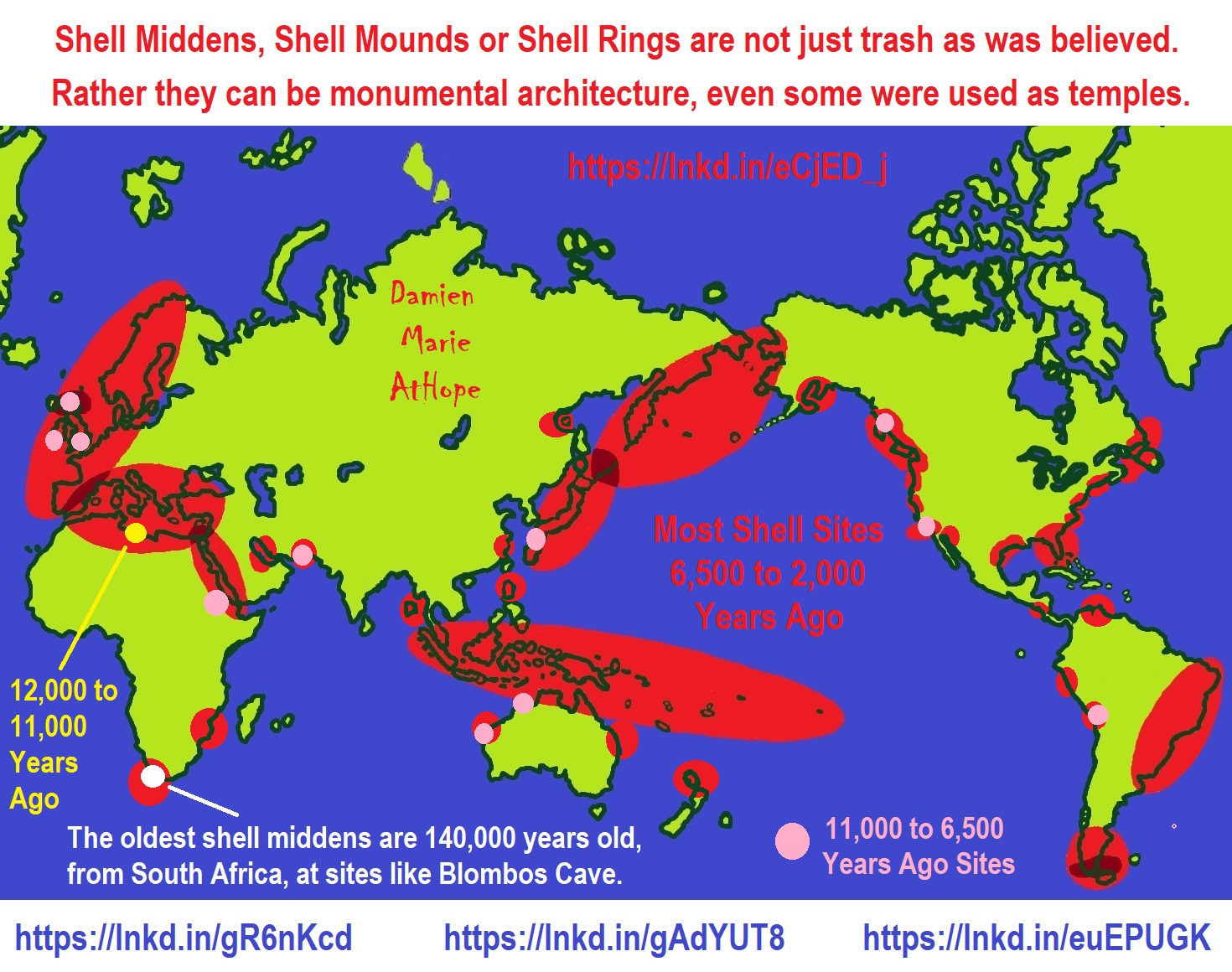
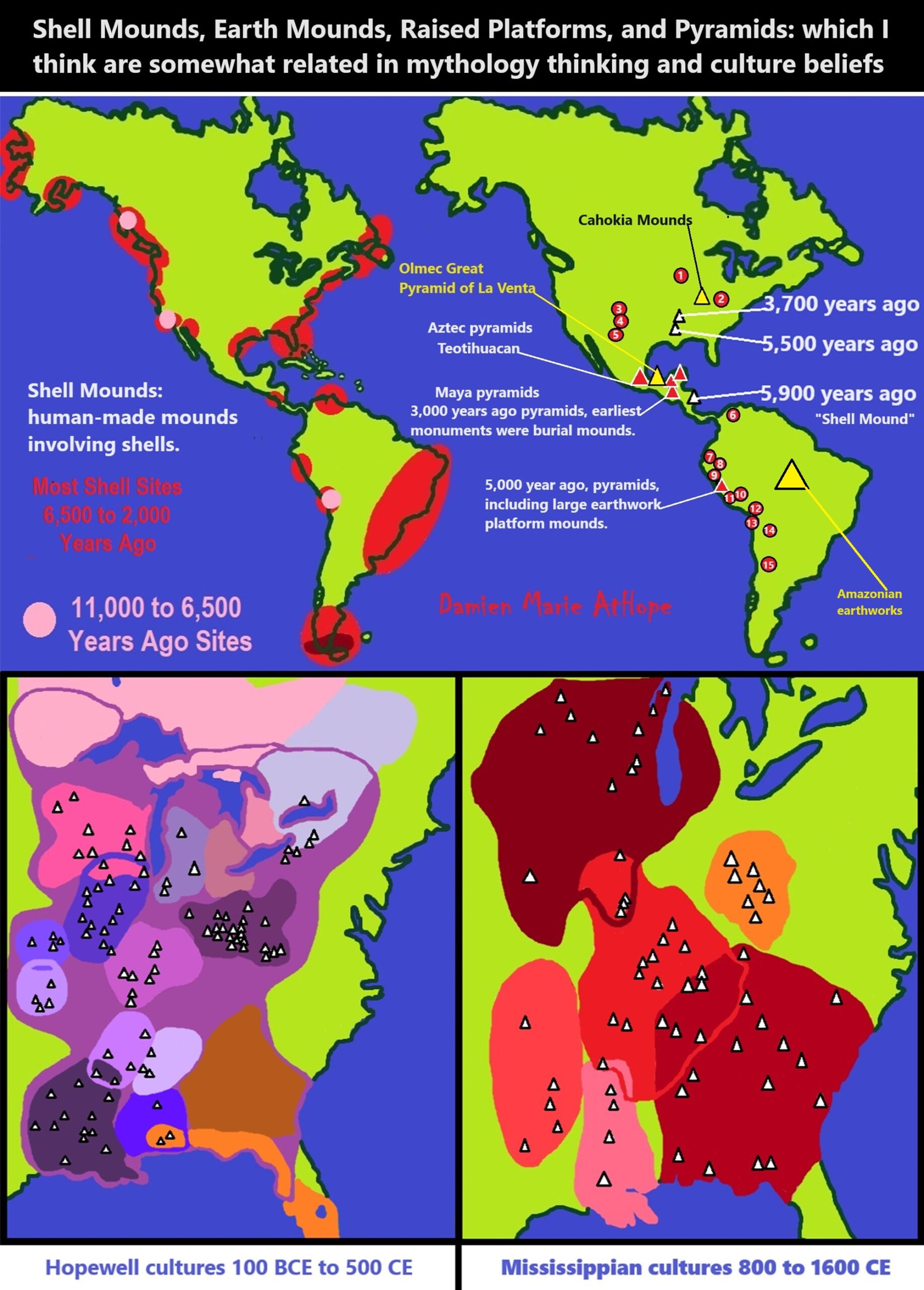
ref, ref, ref, ref, ref, ref, ref, ref, ref, ref, ref, ref, ref, ref, ref, ref, ref
- Medicine Wheel
- Serpent Mound
- Mesa Verde
- Chaco Canyon
- Casas Grandes/Paquime
- Ciudad Perdida“lost city”; Teyuna
- Ingapirca“Inca”
- Chavín de Huántar“pre-Inca”
- Sacred City of Caral-Supe*Caral culture developed between 3000 – 1800 BCE*
- Machu Picchu
- Nazca Lines
- Sacsayhuamán
- Tiwanaku/Tiahuanaco
- Atacama Giant/Lines
- Pucará de Tilcara“pre-Inca”
Eighth Millennium Pottery from a Prehistoric Shell Midden in the Brazilian Amazon
“The top layer was left by the Tupinamba people, who inhabited the region when European colonizers founded Sao Luis in 1612. Then comes a layer of artifacts typical of Amazon rainforest peoples, followed by a “sambaqui”: a mound of pottery, shells and bones used by some Indigenous groups to build their homes or bury their dead. Beneath that, about 6.5 feet below the surface, lies another layer, left by a group that made rudimentary ceramics and lived around 8,000 to 9,000 years ago, based on the depth of the find. Far older than the oldest documented “pre-sambaqui” settlement found so far in the region, which dates to 6,600 years ago.” ref
Sambaqui (Shell Mound) Societies of Coastal Brazil
“Sambaquis (the Brazilian term for shell mounds, derived from the Tupi language) are widely distributed along the shoreline of Brazil and were noted in European accounts as early as the sixteenth century. They typically occur in highly productive bay and lagoon ecotones where the mingling of salt and fresh waters supports mangrove vegetation and abundant shellfish, fish, and aquatic birds. More than one thousand sambaqui locations are recorded in Brazil’s national register of archaeological sites, but represent a fraction of the original number because colonial through modern settlements coincide with these favorable environments. Although sambaquis are of variable scale overall, massive shell mounds are characteristic of Brazil’s southern coast.” ref
“The term “sambaqui” is applied to cultural deposits of varying size and stratigraphy in which shell is a major constituent, undoubtedly encompassing accumulations with a range of functions and origins. Proportions of soil, sand, shell, and the kinds of cultural inclusions and features in sambaquis also are variable. Small sambaquis often consist of shell layers over sandy substrates or sequences of shell and sand layers, with or without signs of burning or significant numbers of artifacts. Larger shell mounds typically have horizontally and vertically complex stratigraphy, including alternating sequences of shell deposits, narrower and darker layers of charcoal and burned bone that mark occupation surfaces, and clusters of burials, hearths, and postholes descending from these surfaces.” ref
Mound cultures are some of the most amazing things in North America and so-called “Americans” don’t care, think it’s Aliens, or believe some mythical white people from the minds of bigots. All Americans should have to learn about Indigenous American history.
“Many pre-Columbian cultures in North America were collectively termed “Mound Builders” ref
Bleera Kaanu-Shell Mound Nicaragua 5,900 years ago human-made shell mound
Watson Brake Louisiana 5,500 years ago human-made mounds
Caral culture 5,000 years ago pyramids, large earthwork platform mounds, and sunken circular plazas
“Archaeological evidence suggests use of textile technology and, possibly, the worship of common deity symbols, both of which recur in pre-Columbian Andean cultures. A sophisticated government is presumed to have been required to manage the ancient Caral.” ref, ref
“The alternative name, Caral–Supe, is derived from the city of Caral in the Supe Valley, a large and well-studied Caral–Supe civilization site. Complex society in the Caral–Supe arose a millennium after Sumer in Mesopotamia, was contemporaneous with the Egyptian pyramids, and predated the Mesoamerican Olmec by nearly two millennia. In archaeological nomenclature, Caral–Supe is a pre-ceramic culture of the pre-Columbian Late Archaic; it completely lacked ceramics and no evidence of visual art has survived. The most impressive achievement of the civilization was its monumental architecture, including large earthwork platform mounds and sunken circular plazas.” ref
Poverty Point Louisiana 3,700 years ago human-made mounds
Olmec La Venta Great pyramid 2,394 years ago human-made earth and clay mound
“Olmecs can be divided into the Early Formative (1800-900 BCE), Middle Formative (900-400 BCE), and Late Formative (400 BCE-200 CE). Olmecs are known as the “mother culture” of Mesoamerica, meaning that the Olmec civilization was the first culture that spread and influenced Mesoamerica. The spread of Olmec culture eventually led to cultural features found throughout all Mesoamerican societies. Rising from the sedentary agriculturalists of the Gulf Lowlands as early as 1600 BCE in the Early Formative period, the Olmecs held sway in the Olmec heartland, an area on the southern Gulf of Mexico coastal plain, in Veracruz and Tabasco. Prior to the site of La Venta, the first Olmec site of San Lorenzo dominated the modern day state of Veracruz (1200-900 BCE).” ref
“Unlike later Maya or Aztec cities, La Venta was built from earth and clay—there was little locally abundant stone for the construction. Large basalt stones were brought in from the Tuxtla Mountains, but these were used nearly exclusively for monuments including the colossal heads, the “altars” (actually thrones), and various stelae. For example, the basalt columns that surround Complex A were quarried from Punta Roca Partida, on the Gulf coast north of the San Andres Tuxtla volcano. “Little more than half of the ancient city survived modern disturbances enough to map accurately.” Today, the entire southern end of the site is covered by a petroleum refinery and has been largely demolished, making excavations difficult or impossible. Many of the site’s monuments are now on display in the archaeological museum and park in the city of Villahermosa, Tabasco.” ref
“Complex C, “The Great Pyramid,” is the central building in the city layout, is constructed almost entirely out of clay, and is visible from a distance. The structure is built on top of a closed-in platform—this is where Blom and La Farge discovered Altars 2 and 3, thereby discovering La Venta and the Olmec civilization. A carbon sample from a burned area of the Structure C-1’s surface resulted in the date of 394 ± 30 BCE.” ref
“One of the earliest pyramids known in Mesoamerica, the Great Pyramid is 110 ft (34 m) high and contains an estimated 100,000 cubic meters of earth fill. The current conical shape of the pyramid was once thought to represent nearby volcanoes or mountains, but recent work by Rebecca Gonzalez Lauck has shown that the pyramid was in fact a rectangular pyramid with stepped sides and inset corners, and the current shape is most likely due to 2,500 years of erosion. The pyramid itself has never been excavated, but a magnetometer survey in 1967 found an anomaly high on the south side of the pyramid. Speculation ranges from a section of burned clay to a cache of buried offerings to a tomb.” ref
“Complex A is a mound and plaza group located just to the north of the Great Pyramid (Complex C). The centerline of Complex A originally oriented to Polaris (true north) which indicates the Olmec had some knowledge of astronomy. Surrounded by a series of basalt columns, which likely restricted access to the elite, it was erected in a period of four construction phases that span over four centuries (1000 – 600 BCE). Beneath the mounds and plazas were found a vast array of offerings and other buried objects, more than 50 separate caches by one count, including buried jade, polished mirrors made of iron-ores, and five large “Massive Offerings” of serpentine blocks. It is estimated that Massive Offering 3 contains 50 tons of carefully finished serpentine blocks, covered by 4,000 tons of clay fill.” ref
“Also unearthed in Complex A were three rectangular mosaics (also known as “Pavements”) each roughly 4.5 by 6 metres (15 by 20 feet) and each consisting of up to 485 blocks of serpentine. These blocks were arranged horizontally to form what has been variously interpreted as an ornate Olmec bar-and-four-dots motif, the Olmec Dragon, a very abstract jaguar mask, a cosmogram, or a symbolic map of La Venta and environs. Not intended for display, soon after completion these pavements were covered over with colored clay and then many feet of earth.” ref
“Five formal tombs were discovered within Complex A, one with a sandstone sarcophagus carved with what seemed to be an crocodilian earth monster. Diehl states that these tombs “are so elaborate and so integrated to the architecture that it seems clear that Complex A really was a mortuary complex dedicated to the spirits of deceased rulers.” ref
Maya 3,000 years ago mounds, raised platforms, pyramids
“The Maya are a people of southern Mexico and northern Central America (Guatemala, Belize, western Honduras, and El Salvador) (1000 BCE, approximately 3,000 years ago) they were building pyramidal-plaza ceremonial architecture. The earliest monuments consisted of simple burial mounds, the precursors to the spectacular stepped pyramids from the Terminal Pre-classic period and beyond. These pyramids relied on intricate carved stone in order to create a stair-stepped design. Many of these structures featured a top platform upon which a smaller dedicatory building was constructed, associated with a particular Maya deity. Maya pyramid-like structures were also erected to serve as a place of interment for powerful rulers. Maya pyramidal structures occur in a great variety of forms and functions, bounded by regional and periodical differences.” ref
“Hopewell mtDNA, showed clear links between Adena culture, and earlier Glacial Kame culture, confirming Hopewell culture as the descendants of Adena culture (circa 800 BCE to CE 1) who were, in turn, descended from Archaic cultures (circa 3000-500 BCE).” ref
“The Glacial Kame culture was a culture of Archaic people in North America that occupied southern Ontario, Michigan, Ohio, and Indiana from around 8000 to 1000 BCE. The name of this culture derives from its members’ practice of burying their dead atop glacier-deposited gravel hills. Among the most common types of artifacts found at Glacial Kame sites are shells of marine animals and goods manufactured from a copper ore, known as float copper. Other regional cultures include the Maple Creek Culture of southwestern Ohio, Red Ocher Culture and Old Copper Culture of Wisconsin.” ref
“Glacial Kame culture produced ceramics, as seen in the discovery of basic pottery at the Zimmerman site near Roundhead, Ohio. Excavation of Glacial Kame sites frequently yields few projectile points — some of the most important sites have yielded no projectile points at all — and their few points that have been found are of diverse styles. For this reason, it appears that different groups of Glacial Kame peoples independently developed different methods of manufacturing their projectile points. This diversity appears even in the culture’s heartland in Champaign, Hardin, and Logan counties in western Ohio; one large Logan County site yielded just three points, each of which was significantly different from the other two.” ref
“Glacial Kame Culture, Late Archaic cultural grouping found around Michigan, Ohio, Indiana, and southern Ontario in the period c.1500–1000 BCE. Characterized by mortuary rituals which involved interring the dead in natural hills of glacial gravel. Grave goods of copper ornaments and marine shells were sometimes included and attested to long‐distance trade links.” ref
“The Adena “mound-building” culture was a Pre-Columbian Native American culture that existed from 500 BCE to 100 CE, in a time known as the Early Woodland period. The Adena culture refers to what were probably a number of related Native American societies sharing a burial complex and ceremonial system. The Adena culture was centered on the location of the modern state of Ohio, but also extended into contiguous areas of northern Kentucky, eastern Indiana, West Virginia, and parts of extreme western Pennsylvania. The culture is the most prominently known of a number of similar cultures in eastern North America that began mound building ceremonialism at the end of the Archaic period.” ref
Amazonian Earthworks
“More than 1,100 ancient Amazonian earthworks, with over 1,050 geoglyphs and zanjas plus over 50 mound villages documented in both the Excel file and the KML placemarks file linked above. Almost all earthworks are outlined, along with highlighting of 1,000 lines, visible ancient roads and embankments. Hundreds of Geoglyphs Discovered in the Amazon.” ref
“Cahokia Mounds were involved in the largest and most influential urban settlement of the Mississippian culture, which developed advanced societies across much of what is now the Central and the Southeastern United States, beginning more than 1,000 years before European contact.” ref
“In the Americas, middens are represented by radiocarbon dates of 5000–2000 BCE from Panama and eastern North America. Middens of South America and California probably antedate 2000 BCE.” ref
“The oldest pottery of northern Europe, eastern North America, and Central America occurs in shell mounds.” ref
A 5,000-year-old Earth Pyramid a human-made earth mound is found in North China as well. I actually think the thinking that leads to pyramid/Step Platform mounds is all related to North Asia, Southern Siberia/North China area. To me there are shared ideas related to the people’s movements that spread ideas including mounds/pyramids/step platform mounds. Platform Mounds/Pyramids, to me, relate to several kinds of mythology, creation myths, deity beliefs, heaven/spirits/afterlife/stars/moon/sun, etc. Along with power/elites/inequality/hierarchy.
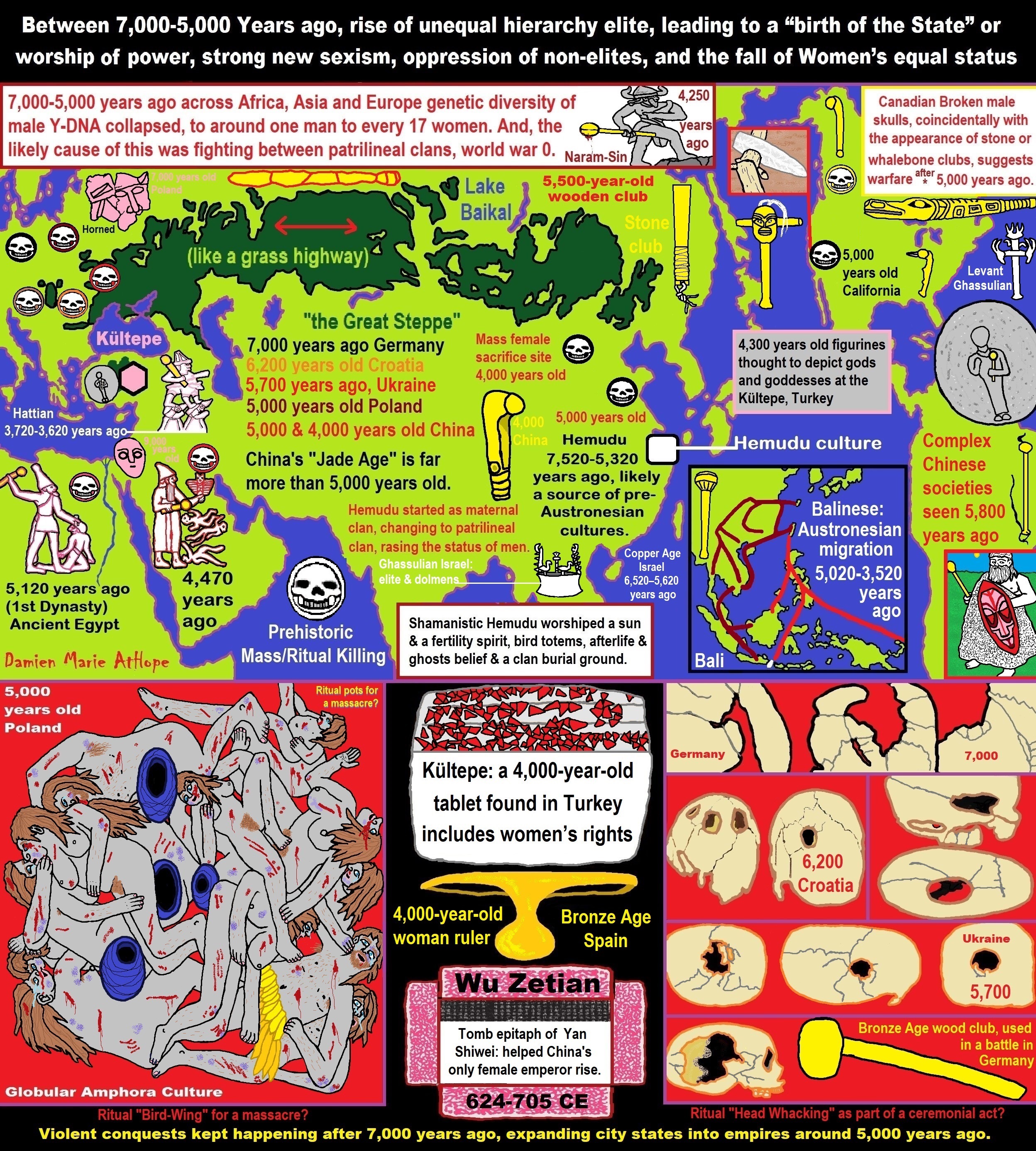
ref, ref, ref, ref, ref, ref, ref, ref, ref, ref, ref, ref, ref, ref, ref, ref, ref, ref, ref, ref, ref, ref, ref, ref, ref, ref, ref, ref, ref, ref, ref, ref, ref, ref, ref, ref, ref, ref, ref, ref, ref, ref, ref, ref, ref, ref, ref, ref, ref, ref, ref, ref, ref, ref, ref, ref, ref, ref, ref, ref, ref, ref, ref, ref, ref, ref, ref, ref, ref, ref, ref, ref, ref, ref, ref, ref, ref, ref, ref, ref, ref, ref, ref, ref, ref, ref, ref, ref, ref, ref
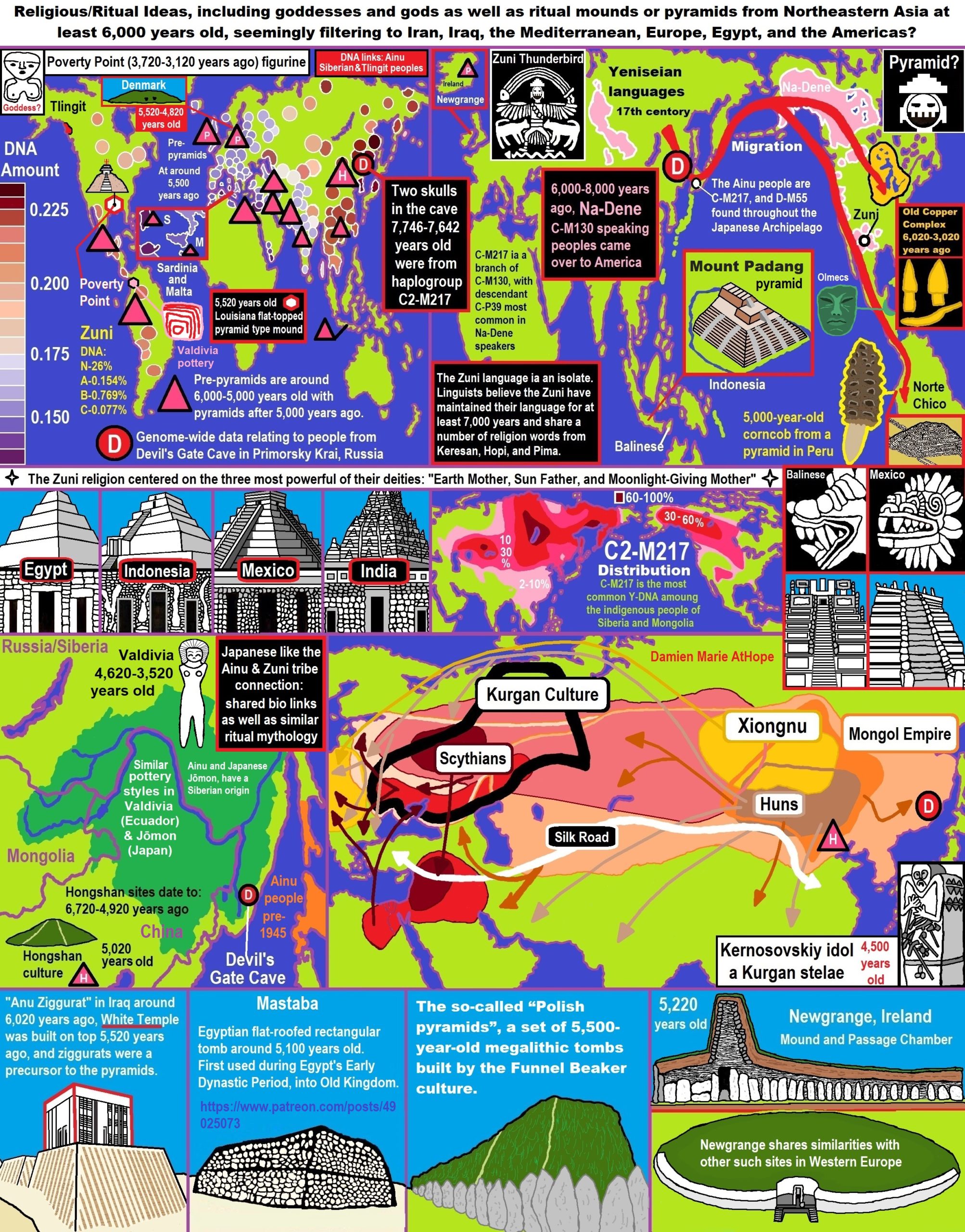
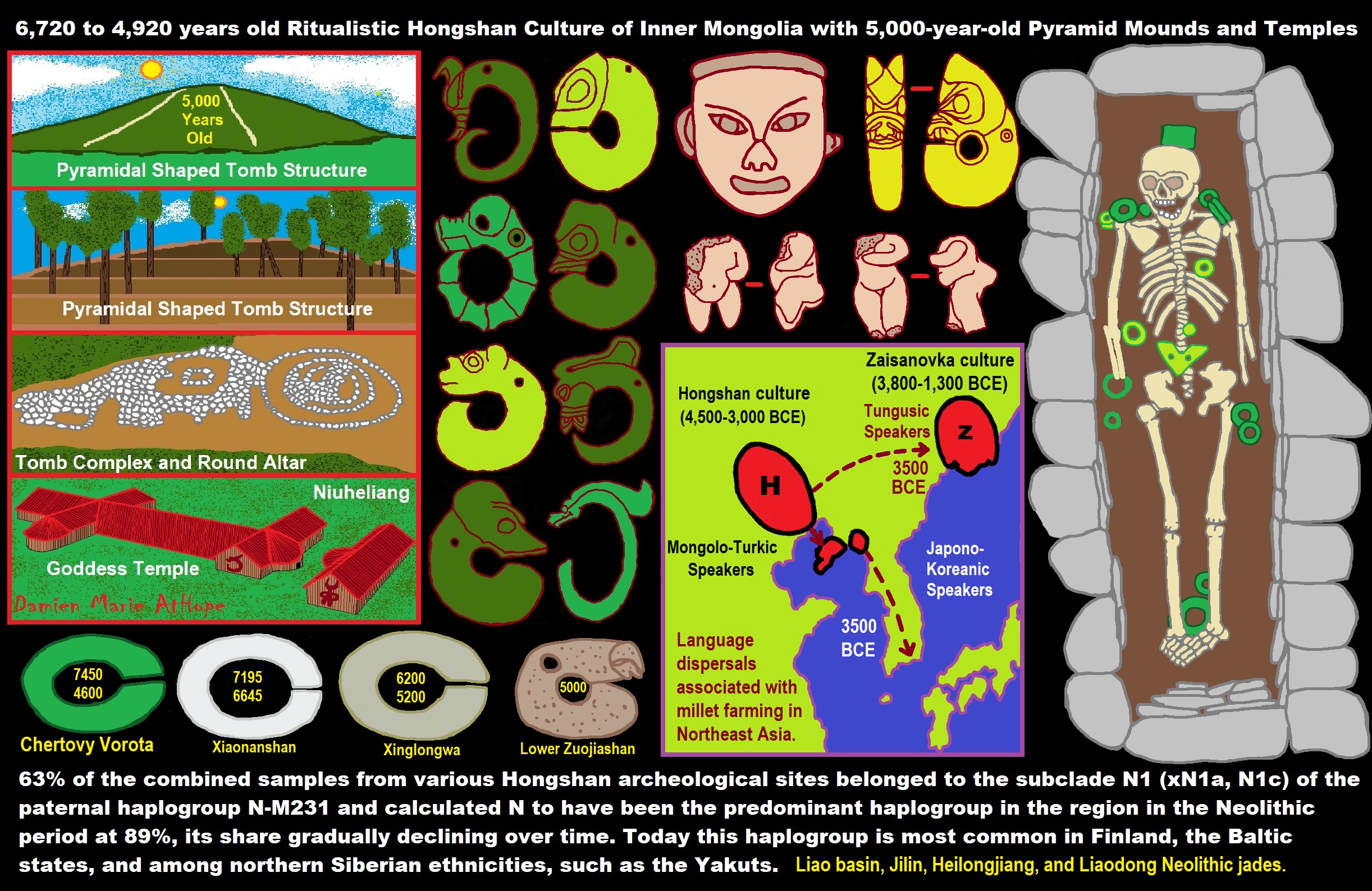
ref, ref, ref, ref, ref, ref, ref, ref, ref, ref, ref, ref, ref, ref, ref, ref, ref
- Millet agriculture dispersed from Northeast China to the Russian Far East: Integrating archaeology, genetics, and linguistics
- Language dispersals associated with millet farming in Neolithic Northeast Asia: “Hongshan Neolithic Culture”
- The Development of Complexity in Prehistoric Northern China: “Hongshan Neolithic Culture”
- Hongshan Neolithic Culture of China
- 5,000-year-old “Pyramid” Found in Inner Mongolia
The Hongshan Culture
“As an important part of the Neolithic Age in Northern China, the Hongshan Culture covers an area from the Wuerjimulun River valley of Chifeng, Inner Mongolia in the north to Chaoyang, Lingyuan and the northern part of Hebei Province in the south, and extends eastward to cover Tongliao and Jinzhou. Hongshan Culture is characterized primarily by the ancient painted potteries, the “Z”-stripped potteries, and the unique digging tools-stone spades and laurel leave-shaped two-holed stone knives. The potteries of Hongshan Culture fall into two types-clay potteries and sand-mixed potteries, both manually made. The clay potteries are mostly red, usually in the forms of bowl, basin, jar, and pots, etc., most of which are containers with small flat bottoms. Most of the clay potteries are decorated with black or purple stripes arranged mainly in parallel lines, triangles, scale-shaped patterns, and occasionally in “Z”-shaped pressed stripes. The stoneware of Hongshan Culture is made by grinding with the blades of stone knives finely ground and the edges and backs in curved symmetry, indicating a fairly developed agricultural economy of the culture. Within the area of Hongshan Culture, bones of oxen, lambs, pigs, deer, and river deer have been unearthed, though in small numbers. The oxen, lambs, and pigs, which are presumably domestic animals, vaguely indicate that the early inhabitants of Hongshan Culture lived a settled life supplemented by animal husbandry, fishery, and hunting.” ref
“More than 20 cirrus-shaped jade articles have been unearthed at the site of Hongshan Culture, and each of them represents two fundamental themes-cirrus-shaped angles and minor convexities. A combination of cirrus-shaped angles and minor convexities in different ways constitute the various patterns and designs of the cirrus-shaped jade articles of Hongshan Culture, which is best demonstrated by the enormous blackish-green jade dragon unearthed at Sanxingtala Township of Wengniute Banner. The dragon is 26 cm in height with the head of a swine and the body of a serpent, coiling like cirrus. Similar dragons were found later in Balin Right Banner and the Antiques Store of Liaoning Province. These cirrus-shaped jade articles can be classified into four types by analyzing their patterns and designs: decorative articles, tools, animals, and special ones, of which the hoop-shaped articles are among the typical pieces of the jade ware of Hongshan Culture. The association of the shapes of these jade articles with their cultural context indicates that the special articles and the tools were made to meet the needs of religious ceremonies. The discovery of cirrus-shaped jade dragon at Hongshan Culture strongly suggests Inner Mongolia as one of the essential sites to trace the worship for dragons by the Chinese people.” ref
“From religious relics of Hongshan Culture like the “Goddess Temple” and stone-pile tombs have been found at Dongshanzui of Kazuo County and Niuheliang at the juncture of Lingyuan County and Jianping County of Liaoning Province. The central part of Dongshanzui relics is the foundation of a large-scaled square structure built of stone. The overall layout of the bilateral symmetry of the foundation to a south-north axis, which is characteristic of the traditional Chinese architectural style, is the first of its kind ever discovered at the site of Neolithic Age. The pottery figures unearthed at the relics indicate that the sites used to be places for sacrificial ceremonies or similar activities. In the first place, archeological studies show that Hongshan Culture was developed on the basis of Xinglongwa Culture and Zhaobaogou Culture, and the inheritance and development in religious traditions between the three cultures are evident. No sites devoted exclusively to sacrificial rites have been found so far in Xinglongwa Culture and Zhaobaogou Culture. The discovery of Niulianghe Relics indicates that large-scaled centers for sacrificial rites had shown up by the end of Hongshan Culture. This is not only a breakthrough in the study of Hongshan Culture but a discovery of great significance to the exploration of the origin of the Chinese civilization.” ref
“Secondly, Hongshan Culture is credited with remarkable achievements in architecture, pottery-making, jade-carving, and pottery sculptures which are at higher levels than those of Xinglongwa Culture and Zhaobaogou Culture. The duet of square pottery molds unearthed at the relics of a house of Hongshan Culture at Xitai, Aohan Banner, which is the earliest mold for metal casting, shows that the early people of Hongshan Culture had mastered the technology of bronze casting. Next, hunting was in the dominant position in Xinglongwa Culture and Zhaobaogou Culture, while by contrast, agriculture played an essential role in the economy of Hongshan Culture. Judging from the position of Hongshan Culture in the archeological culture of ancient Northern China and China in the Neolithic Age, we can well assume that Hongshan Culture is one of the most advanced cultures among the ranks of its peers in both southern and northern China at that time when the smelting of bronze had made appearance, the earliest cities surrounded by ditches had shown up, and the division between urban and rural areas had taken shape. Religious activities characterized by worshiping dragon and jade and respecting the ancestors were in vogue. The conflicts among social groups and the subsequent fights for the unification of religious beliefs had become the fundamental social issue. This is another proof to the assumption that the people of Hongshan Culture had marched from the clan society into the historical phase of ancient kingdoms. Therefore, we can say that by laying a foundation for the development of the Chinese civilization of five thousand years and formulating and influencing the layout of the origin and the progress of the protocol-dominating culture of China, Hongshan Culture plays an extremely essential role in the evolution of the Chinese civilization.” ref
“The archaeological site at Niuheliang is a unique ritual complex associated with the Hongshan culture. Excavators have discovered an underground temple complex—which included an altar—and also cairns in Niuheliang. The temple was constructed of stone platforms, with painted walls. Archaeologists have given it the name Goddess Temple due to the discovery of a clay female head with jade inlaid eyes. It was an underground structure, 1m deep. Included on its walls are mural paintings. Housed inside the Goddess Temple are clay figurines as large as three times the size of real-life humans. The exceedingly large figurines are possibly deities, but for a religion not reflective in any other Chinese culture. The existence of complex trading networks and monumental architecture (such as pyramids and the Goddess Temple) point to the existence of a “chiefdom“ in these prehistoric communities.” ref
“Painted pottery was also discovered within the temple. Over 60 nearby tombs have been unearthed, all constructed of stone and covered by stone mounds, frequently including jade artifacts. Cairns were discovered atop two nearby two hills, with either round or square stepped tombs, made of piled limestone. Entombed inside were sculptures of dragons and tortoises. It has been suggested that religious sacrifice might have been performed within the Hongshan culture.” ref
“Niuheliang is a Neolithic archaeological site in Liaoning Province, Northeast China, along the middle and upper reaches of the Laoha River and the Yingjin River (presently on the border of Chaoyang and Jianping County). The Niuheliang site belongs to the Hongshan culture (4,700 – 2,900 BC 6,720 to 4,9320 years ago). It includes evidence of religion, such as a temple, an altar, and a cairn. Niuheliang is a large burial site scattered over hilltops over a 50 square kilometer area. The altitude of Niuheliang ranges between 550 meters and 680 meters above sea level. Niuheliang dates to 3,500-3,000 BCE. It was a burial and sacrificial center in the late Hongshan period. No residential settlements have been discovered here so far. The site features a unique temple on a loam platform, with an altar and cairn complex, covering an area of around 5 km². The altar at Niuheliang was made of stone platforms, supported by painted, clay cylinders. A north-south axis connects this temple complex with a central peak of the Zhushan mountains, otherwise known as “Pig Mountain”. The subterranean ritual complex was built on a ridge and decorated with painted walls, referred to by Chinese archaeologists as the Goddess Temple, due to the discovery of a clay female head with jade inlaid eyes. Pig dragons and large, nude, clay figurines were also found at Niuheliang. Some of the figurines are up to three times the size of real-life humans; the interior of the figurines was structured from wood and straw. Six groups of cairns were discovered nearby, south, and west of the temple site. The primary burial goods accompanying the graves were jade artifacts, although most of the excavated graves had already been looted.” ref
Interpretations?
“According to the excavator of this site, Guo Dashun, there are in fact two varieties of animals represented in the jades. One is a boar with narrow eyes and flat snout; the other is a bear, represented by round eyes and short perky ears. He also found similar boar and bear symbolism in the vessels found at Xiaoheyan site. The bear has been widely worshipped in Northeast Asia, such as by the Ainu in northern Japan, and in Siberia. Thus, Guo Dashun sees this site in the wider Northeast Asian context. Some similarities with Xinglongwa culture (6200-5400 BC) of northeastern China have also been pointed out.” ref
Pyramidal structure?
“One year after the temple-cairns complex was discovered nearby a pyramidal structure “disguised” as a hill known as Zhuanshanzi, which was included during the Han dynasty (-206~220) in a section of the Great Wall. Built with earth and imported stone, its structure is more elaborate than the cairns. This site contains some of the essential elements, temples, cairns, and platforms, present in later ancestor worship of the Chinese such as the Ming tombs 5000 years later.” ref
“63% of the combined samples from various Hongshan archeological sites belonged to the subclade N1 (xN1a, N1c) of the paternal haplogroup N-M231 and calculated N to have been the predominant haplogroup in the region in the Neolithic period at 89%, its share gradually declining over time. Today this haplogroup is most common in Finland, the Baltic states, and among northern Siberian ethnicities, such as the Yakuts.” ref
“Chinese archaeologists discovered a pyramid-shaped building, dating back more than 5,000 years ago, in the Inner Mongolia Autonomous Region, in north China. The “pyramid”, located on a mountain ridge one kilometer north of Sijiazi Township in the Aohan Banner (county), is a three-storied stone building, with the bottom layer being more than 30 meters long and 15 meters wide. The “pyramid” belongs to the Hongshan Culture period of 5,000 to 6,000 years ago, according to Guo Dashun, a famous Chinese archaeologist who works in Liaoning Archaeological Research Institute. Seven tombs and ruins of an altar were found on the top of the “pyramid.” ref
“At the site of the altar, there are many fragments of broken pottery carved with the Chinese character “mi” (rice). Archaeologists said that the character “mi” may have something to do with people’s understanding of astrology in ancient times. In one of the tombs, archaeologists found a bone flute and a stone ring, and they unearthed a stone sculpture of a goddess the size of a human body in another tomb. Archaeologists were surprised to find a stone-carved linga on the wall of a tomb and a small stone statue of a goddess below the linga in the same tomb.” ref
“Archaeologist Guo said that many of the relics were first-time discoveries and they are of great significance in studying the burial customs, religious and sacrifice rituals, and the social structure of the Hongshan Culture. He pointed out, the discovery of the “pyramid” is also of great significance in exploring the origin of the Chinese civilization. The Hongshan Culture, belonging to the Neolithic culture, is mainly distributed in the juncture area between Inner Mongolia, Liaoning and Hebei provinces.” ref
“In northeast China, Hongshan culture was preceded by Xinglongwa culture (6200–5400 BC), Xinle culture (5300–4800 BC), and Zhaobaogou culture, which may be contemporary with Xinle and a little later. Moreover, the Yangshao culture was in the larger area and contemporary with Hongshan culture. These two cultures interacted with each other.” ref
Pyramids in China (pyramidal shaped tomb structures: 5,000 years old)
In the Inner Mongolia Autonomous Region in northern China, Chinese archeologists have discovered a pyramid which they have dated to be more than 5,000 years old. Archaeologist Guo Dashun stated that the three-stepped pyramid belongs to the Hongshan culture period of 5,000 to 6,000 years ago, during the Stone Age. At the top of the pyramid, the archeologists found seven tombs and the ruins of an altar. Also found were many fragments of broken pottery carved with the Chinese character mi (rice). They also discovered a bone flute, a stone ring, and a life-sized sculpture of a goddess. The term Chinese pyramids refers to pyramidal shaped structures in China, most of which are ancient mausoleums and burial mounds built to house the remains of several early emperors of China and their imperial relatives. About 38 of them are located around 16 to 22 mi) north-west of Xi’an, on the Guanzhong Plains in Shaanxi Province. The most famous is the Mausoleum of the First Qin Emperor, northeast of Xi’an and 1.7 km west of where the Terracotta Warriors were found. The earliest tombs in China are found just north of Beijing in the Inner Mongolia Autonomous Region and in Liaoning. They belong to the Neolithic Hongshan culture (6,700 to 2,900 years ago) a culture in northeastern China. The site of Niuheliang in Liaoning contains a pyramidal structure.culture in northeastern China. Hongshan burial artifacts include some of the earliest known examples of jade working. The Hongshan culture is known for its jade pig dragons and embryo dragons. Clay figurines, including figurines of pregnant women, are also found throughout Hongshan sites. Small copper rings were also excavated. Origin of the mysterious Yin-Shang bronzes in China indicate they contain lead with puzzlingly highly radiogenic isotopic compositions appeared suddenly in the alluvial plain of the Yellow River around 3,400 years ago. Excavators have discovered an underground temple complex—which included an altar—and also cairns in Niuheliang. The temple was constructed of stone platforms, with painted walls. Archaeologists have given it the name Goddess Temple due to the discovery of a clay female head with jade inlaid eyes. It was an underground structure, 1m deep. Included on its walls are mural paintings. Housed inside the Goddess Temple are clay figurines as large as three times the size of real-life humans. The exceedingly large figurines are possibly deities, but for a religion not reflective in any other Chinese culture. The existence of complex trading networks and monumental architecture (such as pyramids and the Goddess Temple) point to the existence of a “chiefdom“ in these prehistoric communities. Painted pottery was also discovered within the temple. Over 60 nearby tombs have been unearthed, all constructed of stone and covered by stone mounds, frequently including jade artifacts. Cairns were discovered atop two nearby two hills, with either round or square stepped tombs, made of piled limestone. Entombed inside were sculptures of dragons and tortoises. It has been suggested that religious sacrifice might have been performed within the Hongshan culture. In northeast China, Hongshan culture was preceded by Xinglongwa culture (6200–5400 BC), Xinle culture (5300–4800 BC), and Zhaobaogou culture, which may be contemporary with Xinle and a little later. Yangshao culture was in the larger area and contemporary with Hongshan culture (see map). These two cultures interacted with each other. Just as suggested by evidence found at early Yangshao culture sites, Hongshan culture sites also provide the earliest evidence for feng shui. The presence of both round and square shapes at Hongshan culture ceremonial centers suggests an early presence of the gaitian cosmography (“round heaven, square earth”). ref, ref, ref, ref, ref, ref, ref, ref, ref, ref, ref, ref
“China’s mysterious 8,000-year-old structure, a giant pyramid approximately 1,000 feet tall and nearly twice that size in length, surrounded by a number of smaller pyramids. A “pure white” structure said to be twice the size of the Great Pyramid of Egypt. More than 100km outside the ancient city of Xi’an, among the overgrown forests, rise scores of pyramid-shaped mounds that have been shrouded in mystery for thousands of years. Today, Google Earth will show anyone with the right coordinates evidence of not just one, but around 40 known pyramids, but not all are easily distinguishable to the human eye. They are covered with trees and grass, and many date back 8,000 years. This region, in essence, is China’s version of both Egypt’s Giza and the Valley of the Kings in one, particularly because there is a huge amount of royalty rumored to be beneath the surface that no one has disturbed.” ref
“Siberia, a burial mound (7,000 years ago) dating to the ‘New Stone Age’ has been unearthed in Novosibirsk region. In the pre-kurgan burial mound were nine people, including women and children. And a 7,000-year-old Siberian warrior: more advanced than we would have supposed. Buried with stone axe and horn-tipped arrow, ancient human remains have archeologists reshaping their assumptions.” ref
“The earliest tombs in China are found just north of Beijing in the Inner Mongolia Autonomous Region and in Liaoning. They belong to the Neolithic Hongshan culture (4700 to 2900 BCE). The site of Niuheliang in Liaoning contains a pyramidal structure. The Niuheliang site contains a pyramidal structure in north-eastern China dating to 3,500–3,000 BCE. Niuheliang was a burial and sacrificial center in the late Hongshan period. No residential settlements were discovered.” ref, ref
“The Neolithic ceremonial complex at Niuheliang and wider Hongshan landscapes in North-eastern China.” ref
Archaic Chinese Jade
“Archaic Chinese jade from the Neolithic period is represented by figures of birds, cicada, and the zhulong, a dragon-shaped pendant created during the Hongshan culture (4500-3000 BCE). They are symbols of regeneration and the vital force or qi. The cong (a cylinder with square sections) and the bi (a round disc with a hole in the center) were the creation of the Liangzhu culture (3200-2200 BCE). Unlike the bi, the cong is decorated on its four corners with zoomorphic and anthropomorphic designs, the iconography of which is still subject to conjecture. These ritual objects appear to have been monopolized by shamans.” ref
“All the pyramids all over the Earth were built for different reasons at different times by different cultures with radically different designs. It’s hard to believe that in 2023 there are still people who don’t understand this.” – John Hoopes https://twitter.com/KUHoopes/status/1632039393119576065
My response, And the differences aside it was commonly religious beliefs related reason that was associated with pyramids and mounds from houses of gods, to connections with ancestors, even kings and honored heroes or leaders, had religious beliefs connected and inspiring mountain-like works.
“There are several reasons why prominent people build pyramids. Among these are: 1) To be seen by everyone, and 2) To see everyone. Pyramids are good for display and surveillance.” – John Hoopes https://twitter.com/KUHoopes/status/1632045706696425475
Andreas Hvid – Climbing the Great Pyramid of Giza: Video
My response, That is a good reason “to be seen” and it is not removed from the religious beliefs that relate either. Both are true or are reasonable and not contradictory. Pyramids are impressive. However, beyond the amazing construction impressiveness I don’t think that much about pyramids, they are of minor importance in my thoughts on the evolution of religion.
“Mesoamerican pyramids have decorated them copiously with stories about the Hero Twins, the feathered serpent Quetzalcoatl, Mesoamerican creation myths, ritualistic sacrifice, etc. written in hieroglyphs on the rises of the steps of the pyramids.” ref
“Archaeological study of 24 ancient Mexican cities reveals that collective forms of governance, infrastructural investments, and collaboration all help societies last longer.” ref
Chinese shamanism in the Hongshan culture
“Chinese shamanism, alternatively called Wuism (Chinese: 巫教; pinyin: wū jiào; lit. ‘wu religion’, ‘shamanism‘, ‘witchcraft‘; alternatively 巫觋宗教 wū xí zōngjiào), refers to the shamanic religious tradition of China. Its features are especially connected to the ancient Neolithic cultures such as the Hongshan culture, dated from about 4700 to 2900 BCE or 6,700 to 4,900 years ago. Chinese shamanic traditions are intrinsic to Chinese folk religion.” ref
“The Chinese word wu 巫 “shaman, wizard”, indicating a person who can mediate with the powers generating things (the etymological meaning of “spirit”, “god”, or nomen agentis, virtus, energeia), was first recorded during the Shang dynasty (ca. 1600-1046 BCE), when a wu could be either sex. The Chinese religion from the Shang dynasty onwards developed around ancestral worship. The main gods from this period are not forces of nature in the Sumerian way, but deified virtuous men. The ancestors of the emperors were called di (帝), and the greatest of them was called Shangdi (上帝, “the Highest Lord”). He is identified with the dragon (Kui 夔), symbol of the universal power (qi). Cosmic powers dominate nature: the Sun, the Moon, stars, winds and clouds were considered informed by divine energies. The earth god is She (社) or Tu (土). The Shang period had two methods to enter in contact with divine ancestors: the first is the numinous-mystical wu (巫) practice, involving dances and trances; and the second is the method of the oracle bones, a rational way.” ref
“The Zhou dynasty, succeeding the Shang, was more rooted in an agricultural worldview. They opposed the ancestor-gods of the Shang, and gods of nature became dominant. The utmost power in this period was named Tian (天, “heaven”). With Di (地, “earth”) he forms the whole cosmos in a complementary duality. During the late Zhou dynasty (1045-256 BCE) wu was used to specify “female shaman; sorceress” as opposed to xi 覡 “male shaman; sorcerer” (which first appears in the 4th century BCE Guoyu). Other sex-differentiated shaman names include nanwu 男巫 for “male shaman; sorcerer; wizard”; and nüwu 女巫, wunü 巫女, wupo 巫婆, and wuyu 巫嫗 for “female shaman; sorceress; witch”. The word tongji 童乩 (lit. “youth diviner”) “shaman; spirit-medium” is a near-synonym of wu. Modern Chinese distinguishes native wu from “Siberian shaman“: saman 薩滿 or saman 薩蠻; and from Indian Shramana “wandering monk; ascetic”: shamen 沙門, sangmen 桑門, or sangmen 喪門. ” ref
“Berthold Laufer (1917:370) proposed an etymological relation between Mongolian bügä “shaman”, Turkic bögü “shaman”, Chinese bu, wu (shaman), buk, puk (to divine), and Tibetan aba (pronounced ba, sorcerer). Coblin (1986:107) puts forward a Sino-Tibetan root *mjaɣ “magician; sorcerer” for Chinese wu < mju < *mjag 巫 “magician; shaman” and Written Tibetan ‘ba’-po “sorcerer” and ‘ba’-mo “sorcereress” (of the Bön religion). Further connections are to the bu-mo priests of Zhuang Shigongism and the bi-mo priests of Bimoism, the Yi indigenous faith. Also Korean mu 무 (of Muism) is cognate to Chinese wu 巫. Schuessler lists some etymologies: wu could be cognate with wu 舞 “to dance”; wu could also be cognate with mu 母 “mother” since wu, as opposed to xi 覡, were typically female; wu could be a loanword from Iranian *maghu or *maguš “magi; magician”, meaning an “able one; specialist in ritual”. Mair (1990) provides archaeological and linguistic evidence that Chinese wu < *myag 巫 “shaman; witch, wizard; magician” was maybe a loanword from Old Persian *maguš “magician; magi“. Mair connects the nearly identical Chinese Bronze script for wu and Western heraldic cross potent ☩, an ancient symbol of a magus or magician.” ref
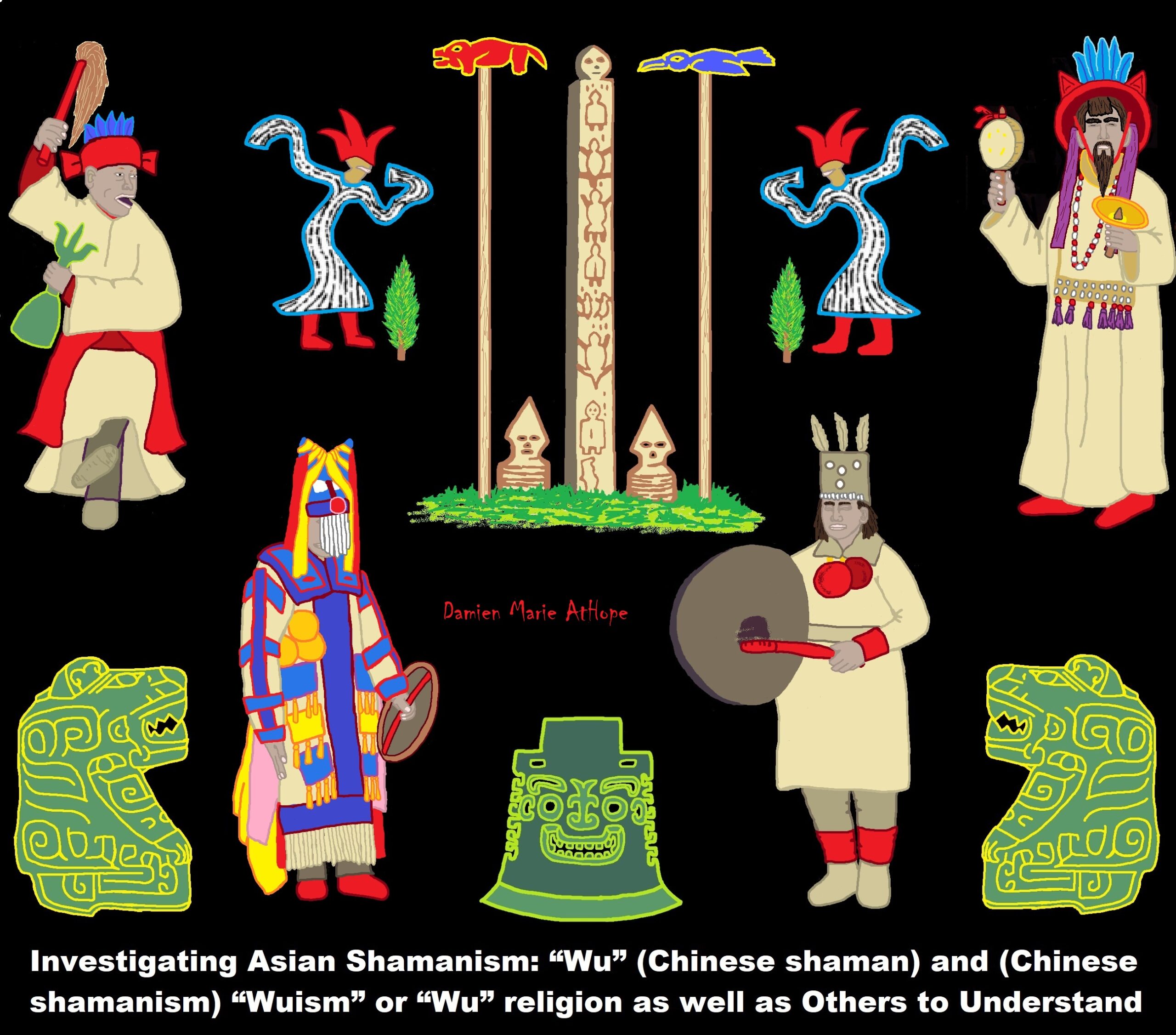

“In Nahuatl, Teotihuacán means The City of the Gods, or Where Men Become Gods. The plazas, avenues, and great pyramids of the city of Teotihuacán were laid out as a symbolic sacred landscape of artificial foothills and mountains (cf. Mountains and the Sacred). The complex of approximately 600 pyramids of various sizes is dominated by the great Pyramid of the Sun which, was built over a natural cave with four chambers (cf. Sacred Caves). Mesoamerican belief saw caves as gateways to the spiritual world (called Xibalba by the Maya). The cave contained remains of offerings and may have been a focus for shamanistic rituals from a much earlier period. There can be no doubt that the Pyramid of the Sun was deliberately built over the sacred cave. Both the idea of the cave and the artificial mountain constructed over it (or containing it) is also seen among the Ancient Egyptians in their pyramids.” ref
The sacred Pyramids, Ziggurats, and Mountains-their purposes and why they were built?
“Births of pyramids, Ziggurats (that now lie in ruins), temples, and sacred mountains were the human creations to reach the sky or heaven, where God and divinities were assumed to reside. At top of these structures they created, they can hear and see the human prayers, recitals, and offerings and grant their wishes. We find these constructions and their presence throughout the world.” ref
“Prehistoric Austronesian megalithic culture in Indonesia had constructed several earth mounds and stone step pyramid structures, based on native beliefs that mountains and high places are the abode of ancestral spirits or hyangs.” ref
High gods and High places, the realm of big birds like a raven/thunderbird?
“Overall, the Alaskan Eyak beliefs are animistic in nature, as “all animate and inanimate things have souls or spirit ‘owners.’” “In the old days the Sun was worshiped…thunder was supposed to be caused by a big bird like a raven…the thunderbird makes earthquakes when it moves” ref
“In particular, though these legends come from the Eyak, the traditional stories of related tribes like the Ahtna and Tlingit are very similar. Raven: Raven (or Crow) is the creator god of the Eyak and other Alaskan Athabaskan tribes. He is a revered and benevolent transformer figure who helps the people and shapes their world for them, but at the same time, he is also a trickster character, and many Eyak stories about Raven have to do with his frivolous or poorly thought out behavior getting him into trouble.” ref
“Legends come from the Ahtna tribe, the traditional stories of related tribes like the Gwich’in and Tanaina are very similar. Raven (Saghani Ggaay in the Ahtna language): Raven is the culture hero of the Ahtna and other Alaskan Athabaskan tribes. He is a revered and benevolent transformer god who helps the people and shapes their world for them, but at the same time, he is also a trickster character and many Ahtna Indian stories about Raven have to do with his frivolous or poorly thought-out behavior getting him into trouble. The Ahtna name sounds similar to sah-gah-nee guy.” ref
“In the Ahtna language, modifiers usually go after the noun they modify. Examples of this include the name of the deity or trickster figure Saghani Ggaay, where saghani is the noun “raven” and ggaay the adjective “little, small” or in the term nen ten “permafrost”, a combination of nen “land, ground” and ten “frozen”. This word order is also seen in place names such as Dghelaay Ce’e “Denali/Mount McKinley”, literally “Biggest Mountain”, and Ben Ce’e “Lake Susitna”, literally “Big Lake”. Some words are also borrowed from the Alaskan Tlingit and Alutiiq native people. The Ahtna language comes from the proto-Athabaskan language possibly evolving 5,000 to 10,000 years ago when humans migrated from Eurasia to The New World over the Bering Sea floor (Beringia) when it was dried up and exposed creating a natural land bridge. Many indigenous Native American languages are to have derived from this proto-Athabaskan language, Navajo is one language derived from this early language and consequently Ahtna and Navajo have many similarities.” ref
“Denaʼina is one of eleven Alaska Athabascan languages. Denaʼina Northern Athabascan group had regional bands had several villages or qayeh, each containing multi-family dwellings called Nichił. Each Nichił was led by a qeshqa (“rich man” or “leader”) who Russia and American traders and religious referred to as “Chiefs.” Men and women in villages belong to their mother’s clan. The clans were grouped into two sides or “moieties.” Villagers could only marry outside of their own clan and moiety, maintaining diversity in the gene pool and strength in the village lineage.” ref
“Dena’ina Religion, Habitas, and Spirituality, Powerful, not inherently bad, and potentially good, Mother of Everything: Kunkda Jelen” ref
“The Deg Xitʼan’s neighbors are other Athabaskan-speaking and Yupik Eskimo peoples: Yup’ik (west and south), Holikachuk (north), Upper Kuskokwim (north and east), and Dena’ina (south).” ref
“Deg Xinag people, a group of Athabaskan peoples in Alaska, were much given to games and sports, ceremonies, and potlatches. The centre of village life was a large semisubterranean lodge called a kashim. The kashim served many functions, mostly for men, providing a venue for sweat baths, council meetings, entertainment, funerals, and shamanic rituals. Although traditional Deg Xinag religion included a creator, a devil, and other worlds beyond the living, it was more concerned with a kind of supernatural spirit that pervaded all things animate and inanimate in the world. There were several ceremonies, taboos, and superstitions relating to animals and the hunt and to the care of tools and other economic items; as with other societies that practiced animism, the Deg Xinag believed that survival and success required good relations with the things of nature.” ref
Iñupiat are a group of indigenous Alaskans
“Prior to colonization, the Iñupiat exercised sovereignty based on complex social structures and order. Inuit are the Native inhabitants of Northern Alaska, Canada, and Greenland. Along with other Inuit groups, the Iñupiaq originate from the Thule culture. Circa 300 B.C., the Thule migrated from islands in the Bering Sea to what now is Alaska.” ref
“Inuit languages are part of the Eskimo–Aleut languages, also known as Inuit-Yupik-Unangan, and also as Eskaleut. Inuit are the descendants of what anthropologists call the Thule people, who emerged from western Alaska around 1000 CE. They had split from the related Aleut group about 4000 years ago and from northeastern Siberian migrants. They spread eastward across the Arctic. They displaced the related Dorset culture, called the Tuniit in Inuktitut, which was the last major Paleo-Eskimo culture.” ref
“Inuit religion is the shared spiritual beliefs and practices of the Inuit, an indigenous people from Alaska, northern Canada, parts of Siberia, and Greenland. Their religion shares many similarities with some Alaska Native religions. Traditional Inuit religious practices include animism and shamanism, in which spiritual healers mediate with spirits. The Inuit cosmos is ruled by no one. There are no divine mother and father figures. There are no wind gods and solar creators.” ref
Here is an incomplete list of Inuit deities believed to hold power over some specific part of the Inuit world:
- Agloolik: evil god of the sea who can flip boats over; spirit which lives under the ice and helps wanderers in hunting and fishing
- Akna: mother goddess of fertility
- Amaguq/Amarok: wolf god who takes those foolish enough to hunt alone at night
- Anguta: gatherer of the dead; he carries them into the underworld, where they must sleep for a year.
- Nanook: (Nanuqor Nanuk in the modern spelling) the master of polar bears
- Pinga: the goddess of strength, the hunt, fertility, and medicine
- Qailertetang: weather spirit, guardian of animals, and matron of fishers and hunters. Qailertetang is the companion of Sedna.
- Sedna: the mistress of sea animals and mother of the sea. Sedna (Sannain modern Inuktitut spelling) is known under many names, including Nerrivik, Arnapkapfaaluk, Arnakuagsak, and Nuliajuk.
- Silap Inuaor Sila: personification of the air
- Tekkeitsertok: the master of caribou.
- Pukkeenegak: Goddess of domestic life, including sewing and cooking.” ref
Netsilik Inuit
“The homelands of the Netsilik Inuit (Netsilingmiut meaning “People of the Seal”) have extremely long winters and stormy springs. Nuliajuk, the Sea Woman, was described as “the lubricous one”. If the people breached certain taboos, she held marine animals in the basin of her qulliq an oil lamp that burns seal fat. When this happened the angakkuq had to visit her to beg for game. In Netsilik oral history, she was originally an orphan girl mistreated by her community. Moon Man, another cosmic being, is benevolent towards humans and their souls as they arrived in celestial places. This belief differs from that of the Greenlandic Inuit, in which the Moon’s wrath could be invoked by breaking taboos.” ref
Caribou Inuit
“Caribou Inuit is a collective name for several groups of inland Inuit (the Krenermiut, Aonarktormiut, Harvaktormiut, Padlermiut, and Ahearmiut) living in an area bordered by the tree line and the west shore of Hudson Bay. They do not form a political unit and maintain only loose contact, but they share an inland lifestyle and some cultural unity. Because of their inland lifestyle, the Caribou have no belief concerning a Sea Woman. Other cosmic beings, named Sila or Pinga, control the caribou, as opposed to marine animals. Some groups have made a distinction between the two figures, while others have considered them the same.” ref
Copper Inuit
“Spiritual beliefs and practices among Inuit are diverse, just like the cultures themselves. Similar remarks apply for other beliefs: term silap inua / sila, hillap inua / hilla (among Inuit), ellam yua / ella (among Yup’ik) has been used with some diversity among the groups. In many instances it refers to “outer space”, “intellect”, “weather”, “sky”, “universe”: there may be some correspondence with the presocratic concept of logos. In some other groups, this concept was more personified ([sɬam juɣwa] among Siberian Yupik). Among Copper Inuit, this “Wind Indweller” concept is related to spiritual practice: angakkuit were believed to obtain their power from this indweller, moreover, even their helping spirits were termed as silap inue.” ref
“The Inuit believed that all things have a form of spirit or soul (in Inuktitut: anirniq meaning “breath”; plural anirniit), just like humans. These spirits are held to persist after death—a common belief present in most human societies. However, the belief in the pervasiveness of spirits—the root of Inuit worldview—has consequences. According to a customary Inuit saying, “The great peril of our existence lies in the fact that our diet consists entirely of souls.” Since all beings possess souls like those of humans, killing an animal is little different from killing a person. Once the anirniq of the dead animal or human is liberated, it is free to take revenge. The spirit of the dead can only be placated by obedience to custom, avoiding taboos, and performing the right rituals. The root word: anirnisiaq means angel and God is rendered as anirnialuk, the great spirit. Humans were a complex of three main parts: two souls (iñuusiq and iḷitqusiq: perhaps “life force” and “personal spirit”) and a name soul (atiq). After death, the iñuusiq departed for the east, but the other soul components could be reborn. Some spirits have never been connected to physical bodies.” ref
“These are called tuurngait (also tornait, tornat, tornrait, singular tuurngaq, torngak, tornrak, tarngek) and “are often described as a shaman’s helping spirits, whose nature depends on the respective angakkuq”. Helpful spirits can be called upon in times of need and “[…] are there to help people,” explains Inuit elder Victor Tungilik. Some tuurngait are evil, monstrous, and responsible for bad hunts and broken tools. They can possess humans, as recounted in the story of Atanarjuat. An angakkuq with good intentions can use them to heal sickness and find animals to hunt and feed the community. They can fight or exorcise bad tuurngait, or they can be held at bay by rituals; However, an angakkuq with harmful intentions can also use tuurngait for their own personal gain, or to attack other people and their tuurngait.” ref
“The five Apache languages are Apachean languages, which in turn belong to the Athabaskan branch of the Eyak-Athabaskan language family. Apache are a group of culturally related Native American tribes in the Southwestern United States. Distant cousins of the Apache are the Navajo, with whom they share the Southern Athabaskan languages. The most widely accepted origin theory suggests Apache was borrowed and transliterated from the Zuni word ʔa·paču meaning “Navajos” (the plural of paču “Navajo”).” ref
“Anthropological evidence suggests that the Apache and Navajo peoples lived in these same northern locales before migrating to the Southwest sometime between CE 1200 and 1500. Some Athabaskan speakers, perhaps including the Southern Athabaskan, adapted many of their neighbors’ technology and practices in their own cultures. Apache religious stories relate to two culture heroes (one of the Sun/fire:”Killer-Of-Enemies/Monster Slayer”, and one of Water/Moon/thunder: “Child-Of-The-Water/Born For Water”) who destroy several creatures harmful to humankind.” ref
“Another story is of a hidden ball game, where good and evil animals decide whether or not the world should be forever dark. Coyote, the trickster, is an important being that often has inappropriate behavior (such as marrying his own daughter, etc.) in which he overturns social convention. The Navajo, Western Apache, Jicarilla, and Lipan have an emergence or Creation Story, while this is lacking in the Chiricahua and Mescalero.” ref
“Most Southern Athabascan gods are personified natural forces that run through the universe. They may be used for human purposes through ritual ceremonies. The following is a formulation by the anthropologist Keith Basso of the Western Apache’s concept of diyí’: The term diyí’ refers to one or all of a set of abstract and invisible forces which are said to derive from certain classes of animals, plants, minerals, meteorological phenomena, and mythological figures within the Western Apache universe.” ref
Chiricahua Apache Origin Beliefs
“The chief deity of the Chiricahua Apache was Ussen, whose will governed all. Ussen existed before the creation of the universe. He created the first Mother with no parents who sang four times, a sacred number to the Chiricahua Apache. Her singing began the creation of the universe. Ussen also created the first Boy and Sun God who shook hands. The sweat from this handshake created the Earth. The Earth was small at first, so they kicked it around and it gained mass like a snowball rolling down a hill, getting larger and larger. Ussen also created Tarantula, who increased the Earth’s size even more by pulling on it with four cords of web which he spun. Ussen then created the first people and fire and then he left. Ussen continues to watch events unfold from afar and still intercedes from time to time.” ref
Dené–Yeniseian = Yeniseian – Ket (in Siberia) and then Na-Dené (in the Americas) = Athabaskan = Northern Athabaskan, Pacific Coast Athabaskan, and Southern Athabaskan = Apache and Navajo
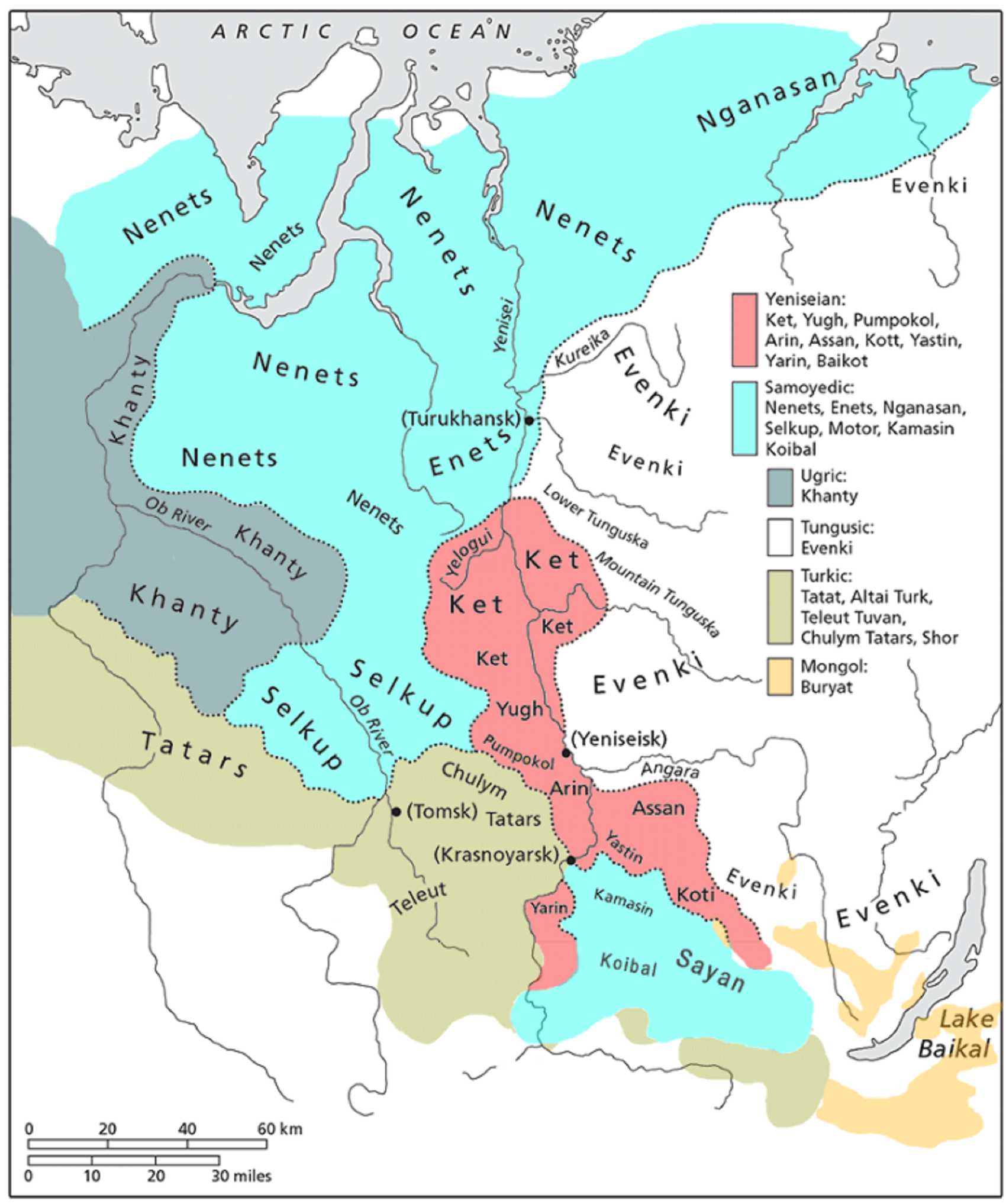
“Na-Dene in an expanded Dene-Yeniseian language would be represented by an even earlier Neolithic community, but also to a more restricted homeland area for both, closer to Lake Baikal.” ref
“Yeniseian shows almost exclusive contacts with Siberian Turkic: the earliest layer stemming from contacts with Yenisei Turkic, but most loanwords belonging to a later layer, corresponding to Altai Turkic. A few early Turkic etyma support the described evolution proper of Common Yeniseian; cf. Kott kulʲuk ‘brave’ ← Turkic *külük ← *kǖlüg, or Kott kajax ~ kajag ‘butter’ ← Turkic *qayaq, cf. OT kańak (Khabtagaeva 2015b). Morover, a small number of these corresponds to intermediate loanwords of Mongolian origin, such as Kott šugur ‘one-eyed’ ← Turkic *sogur ← Mongolic *soqor, or Kott keršo ← Turkic *kärsǟ ← Mongolic *kersegü (Khabtagaeva 2015a). These Mongolic terms were also borrowed into other Eurasian languages (such as *soqor into Tundra Yukaghir soquor ‘blind’, Udmurt sukir ‘blind’ ← Tatar suqâr ‘blind’), which points to their role as possible Wanderwörter in the wider Siberian cultural context (Piispanen 2019).” ref
“Modern Yeniseian (Ket) varieties show what seems like an intricate relatively recent structural hybridization, a typological accommodation of the original Yeniseic prefixing structure to neighboring Samoyedic and Turkic languages, mimicking their morphological and phonological patterns, not paralleled by grammatical borrowings.” ref
“The Evenki viewed the universe as consisting of three worlds: upper, middle (earth), and lower. Beneficent spirits inhabited the upper world, including Seveki, the guardian of the plant and animal world. The lower world was populated by both deceased ancestors, who there lived a life similar to that on earth, and, on another level, evil spirits. Although the average person could not travel to either the upper or lower world, such sojourns were in fact made by shamans during their rituals. Assisted by spirits, including those of shaman ancestors, the shamans protected clan members from the spirits of hostile shamans and acted as brokers between the Evenki and the spirits that helped or hindered their activities.” ref
EVENKI AND EVEN Siberian religion
“Evenki speak a Tungus-Manchu language, which is related to Chinese, and look like Mongolians. The ancestors of the Evens and Evenki were closely related to the Turkic-speaking Yakut. Until around a century ago, no distinction was made between the Even and Evenki—ethnic minorities that are recognized as different today. The two groups are more alike than they are different. Their lifestyles, Tungus-Manchu, Altaic language, and traditional religions are similar. The main difference is that the Even live mainly in northeast Russia and the Evenki live in the southeast and north-central areas of Siberia. The two groups have been physically separated from each other long enough that some different characteristics have emerged.” ref
“The Evenki have traditionally practiced ancestor worship and animism, worshiping many natural elements, including a wind god, mountain god, and fire god. Their universe is divided into three realms: upper, inhabited by benevolent spirits, middle (earth) and lower inhabited by deceased ancestors. Bears and some birds were revered and prayed to for good weather and hunting. Whenever they ate bear meat they conducted the same rituals they did for their own dead.” ref
“Evenki have developed strict guidelines and Indigenous customary law systems for their relationship with the forest and cosmos. These include for example rules on how to be with nature, how to travel on Evenki land, and how hunters should behave when they receive certain animals. ” ref
“Vladimir Kolesov explained some of the Evenki principles on these issues: the Evenki say: Earth mother. If we go past large rivers, we hang a piece of cloth there. Close to the mountains we do that too. We hang a piece of cloth there. You are not allowed to leave pieces of firewood lying around. It is not allowed to cut more wood than what is needed.” ref
“When you are someplace, for example hunting, don’t leave pieces of wood crosswise. Everything needs to be in order. Don’t throw bones around. I make a shelter, and all bones are put there. So that nothing is out of order. It is also because the reindeer come and bite the bones and suffocate. Clean and safe. To keep the reindeer from harm. You fish only as much as you need. If the next day you need more, then you go fishing again. If no one would buy the sable skins, it would not be hunted as much. If you need a hat, it is only then you’re allowed to hunt. If there was no need, it would not be killed. This goes for all of the animals, I think. And trees too. If you need wood for sleds, then you take but otherwise, no. If there is no need, nothing will be cut.” ref
“Galina I. Varlamova, or “Keptuke” as she is known to the Evenki, is the daughter of a spiritual leader. All her life she has written and researched as well as practiced the Evenki traditions related to nature. According to her, the functioning principles of Evenki civilization are based on enforcing the moral system of what the Evenki call Ity through odjo: a set of principles of taboos and rules of human behavior: In every part of life, be it material or cultural, there are reflections of relationship between the Evenki and nature. This relationship that was formed and reformed across centuries was a basis for general understanding for justice, traditions, and moral guidelines.” ref
“These are reflected in the system for ecological law, Ity. They are also reflected in the prohibition-taboos, named Odjo. Evenki oral tradition is not just folklore and traditional poetry but includes many other cultural texts that offer teachings for life in nature and in the family and tribal system. Traditions, fixed rituals, and ancient rites that have survived to this time have all been subordinate to experience of living in nature, which is Evenki homeland and Buga – Mother god (literally: Universe, Sky-mother, World). Evenki place nature at the highest level.” ref
“These rules and human lives operate in the universe of Buga, God. The most important role and significance in the Evenki universe in placed in nature. Evenki see nature as highest god, Buga. Everything is created by Buga/nature.” ref
Buga is a creator god and omnipotent highest power in the mythology of the Tungusic peoples. For the eastern Tungus buga is a remote figure whom they have no description of, and nor do their shamans connect with it/him. Furthermore, bugady are a tribe’s sacred places. Equivalent names for a supreme deity are Es (Ket language), Nga (Enc language), and Turum or Torym (Ostyak language). The Tungus term ‘buga’ is similar to the Mongolian term bogdo (holy), Old Persian language baga (god), and the Kassite language bugas (god).
The Even language term for the highest deity (the creator) is/was Nalban Omgo Ogyn Buga, the proper name in the same language is Hovky-Sovky; in the Evenk language the god’s name is Shavaky-Savaky. The “upper” and “lower” worlds in those people’s shamanic worldview are also referred to as Dulyn Buga and Harpy Buga.” Ref https://en.wikipedia.org/wiki/Buga_(deity)
Siberian Goddesses
Aba-khatun – Baikal/Siberian sea goddess.
Ajysyt- The mother goddess of the Yakuts of Siberia
Almoshi – Goddess of animals.
Ama – Baikal/Siberian goddess of the dark and of the underworld.
Amagandar – In Tungus myth, they are female spirits of protection.
Anapel – Koryak/Siberian – “Little Grandmother,” goddess of birth and reincarnation.
Bugady Musun – Evenki/Siberian goddess, mother of all animals.
Cinei-new – (Chukchi/Siberia) A sea goddess and wife of Peruten, god of the sea.
Dunne Enin – Tungus/Siberian – important goddess ruled over the clan territory.
Hotogov Mailgan – Buriat/Siberian – Goddess of heaven at night.
Ja-neb’a – Samoyd/Siberian – a benevolent earth goddess.
Kaltes – Vogul/Siberian – Goddess of birth.
Miti – Mother Goddess of the Chukchi. She gave the secret of magic to humans.
Ynakhsyt – Yakut/Siberian – Goddess of cattle.
Zonget – Khanty/Siberian – ancient goddess of hunting among the Mansi and Khanty peoples of Siberia. She ruled all bird and animal life, as well as those who hunted them. At her command, birds and animals would either come to the snare or leave it empty. To mortals she had the appearance of a greyhen (an arctic bird).” ref
Religion of the Quechua (central Andes)
“Quechuas believe in a God more organizer then creator, a god that gives, but that punishes as well. This god organized the world in three eras divided into five periods. The three eras are the eras of the father, of the son and of the holy spirit. In the first era god organizes the earth and the first people who lived there, the “Ñaupa Machulas. Unhappy with the first era, he created the second era whose span was from the Inca empire to the present time. The third is yet to come.” ref
“According to the Quechua, the Pachamama has a physical and a spiritual reality, it is the earth that nurtures men, therefore, it is important to offer her a payment. Another important rite is the death rite, where they bury with the dead some of his/her belongings, believing that these belongings might be used in the other life. The soul can go to God if the person had led a good life, or become an animal, or a bad women if the person committed serious offenses such as incest and witchcraft.” ref
“The aboriginal Tupi people of Brazil, some Tupians had patrilineal clans. Tupian-speaking peoples were widespread south of the Amazon. The similarity between dialects suggests that their scattering was fairly recent. On the lower Amazon and the coast, palisaded multi-house villages of several thousand persons occurred. These villages warred incessantly, capturing, torturing, and eating their victims. Religion was largely shamanistic with little village ceremonialism. Tupã or Tupan (also Tupave or Tenondete) is the word for God in the Tupi and Guarani languages, including the Guarani creation myth. Tupã is considered to be the creator of the universe, of humanity, and of the spirits of good and evil in Guarani mythology referred to as Angatupyry and Tau respectively. Tupã is more specifically considered the creator of light and his residence is the Sun.” ref, ref
The Tupi-Guarani mythology
“The primary figure in most Guarani creation legends is Tupã, the supreme god of all creation. With the help of the moon goddess Arasy, Tupã descended upon the Earth in a location specified as a hill in the region of Areguá, and from that location created all that is found upon the face of the earth, including the ocean, forests, and the animals. It is also said that the stars were placed in the sky at this point.” ref
“The seven sons of Tau and Kerana are, in order of their births: Teju Jagua, god or spirit of caverns and fruits; Mbói Tu’ĩ, god of waterways and aquatic creatures; Moñái, god of the open fields. He was defeated by the sacrifice of Porâsý; Jasy Jatere, god of the yerba mate plant and also of the siesta, only of the seven to not appear as a monster; Kurupi, god of sexuality and fertility; Ao Ao, god of hills and mountains; Luison (or Luisõ), god of death and all things related to it.” ref
“Other gods or important figures: Angatupyry, spirit or personification of good, opposite to Tau; Pytajovái, god of war; Pombero, a popular spirit of mischief; Abaangui, a god credited with the creation of the moon; may only figure as an adaptation of outlying Guarani tribes; Jurupari, a god limited to worship by men, generally limited to isolated tribes in Brazil; Jande Jari, “our grandmother”, spirit of the river Parapetí in Bolivia; Mala Visiõ, According to one version of the legend, Mala Vision was a beautiful woman maddened by jealousy, that one night she murdered her husband and dumped his body in a cave by covering it with burning coals to cremate his body totally believing that he was maintaining relationships with other women. On the seventh night after the event, with lightning, throwing sparks, the corpse of her husband stood before the woman who dropped dead of fright. Since that day the lost soul of the woman goes through canyons and hills on stormy nights, crying plaintive and eerie.” ref
“Mala Vision is presented as the spirit of a beautiful woman dressed in white, tall, and deformed shrouded in transparent fumes.; Plata Yvyguy, (Buried Treasure), many treasures were buried during the Paraguayan War, it’s a tradition that if someone is to see a headless white dog that disappears and re-appears all the time in their own house, it means that Plata Yvyguy is buried under it.; The Celestial Jaguar, According to a version of the legend, the mother of the heavenly twins, known as Sun and Moon, was killed by the Celestial Jaguars. The twins were raised by the jaguars until a bird told them how their mother had been killed. The twins went on a rampage, killing all jaguars except one which was pregnant and the mother of today’s primitive jaguars. Now, jaguars are a wild beast that are to be feared by the Guarani. It is common for the animal to be part of the beginning and end of a persons life. The meat will be eaten by a child’s mother while she is pregnant and the jaguars themselves represent the souls of the dead in temples. Those that are sick, elderly, and slow-moving have also been known to have been left behind to the jaguars.” ref
“Aymara people are a significant South American Native tribe that live on the Altiplano. Traditionally, the Aymara worship the Pachamama, who is the mother earth, and the Tata-Inti, who is the solar deity.” ref
“Aymara/Incan gods”
“Inti: he is the ancient Incan sun god. Worshiped as a patron deity of the Inca Empire, Pachacuti is often linked to the origin and expansion of the Inca Sun Cult. The word inti is not of Quechua origin but a loanword from Puquina. Borrowing from Puquina explains why historically unrelated languages such as Quechua, Aymara, and Mapuche have similar words for the Sun. Similitudes are not only linguistic but also symbolically as in Mapuche and Central Andean cosmology the Sun (Inti/Antu) and the Moon (Quilla/Cuyen) are spouses. In a different myth, Inti is the son of the Earth goddess Pachamama and the sky god. Viracocha was worshipped as god of the sun and of storms. He was represented as wearing the sun for a crown, with thunderbolts in his hands, and tears descending from his eyes as rain.” ref, ref
Nenets of northern Arctic Russian Far North. Are related to Uralic languages: Nenets, Nganasans, Enets, Selkups. They have a shamanistic and animistic belief system which stresses respect for the land and its resources. During migrations, the Nenets placed sacred items like bear skins, religious figures, coins, and more on a holy sleigh. The contents of this sacred sleigh are only unpacked during special occasions or for religious rituals (like sacrifices). However, only esteemed elders are allowed to unpack the sacred sleigh. They had a clan-based social structure. The Nenets shaman is called a Tadibya.” ref
“Seima-Turbino (ST) weapons contain tin bronze ore originating from the Altai Mountains region (central Mongolia and southern Siberia), with further ST discoveries pointing more specifically to the southeastern portions of the Altai and Xinjiang. The culture spread from these mountains to the west and to the east. Findings have suggested a common point of cultural origin, possession of advanced metal working technology, and unexplained rapid migration. The buried were nomadic warriors and metal-workers, traveling on horseback or two-wheeled carts.” ref
“The same authors conjectured that the same migrations spread the Uralic languages across Europe and Asia. The existence of Uralic Samoyedic and Ob-Ugrian groups like the Nenets, the Mansi people, and the Khanty, anchor the Uralic languages in Asia. Notable is the similarity between the range of haplogroup N3a3’6, especially in the western part of Eurasia, and the distribution of the Seima-Turbino trans-cultural phenomenon during the interval of 4.2–3.7 kya. Carriers of N3a1-B211, the early branch of N3a, could have migrated to the eastern fringes of Europe by the same Seima-Turbino groups. However, earlier migrations cannot be ruled out either; a study of ancient DNA revealed a 7,500-year-old influx from Siberia to northeast Europe.” ref
“Another subclade of Y-haplogroup N, N1a2b-P43 (TMRCA 4,700 [95% CI 3,800 <-> 5,600] year ago), reaches some of its highest frequencies among the Uralic-speaking Nenets, Nganasan, Khanty, and Mansi peoples in western Siberia. Haplogroup N1a2b-P43 is also often observed among the members of many Uralic- or Turkic-speaking ethnic minorities of European Russia, but it is very rare among the Baltic Finnic and Samic peoples of Northern Europe. Estimated to be approximately 4,700 years old, N1b spread north and westwards from its original locus in Southern Siberia, exactly as Seima-Turbino migration did.” ref
“Num-Torum (Numi-Torem or Numi-Turum) is the supreme god or father god of the Ugrian peoples. He is the father of the hero Mir-Susne-Hum, six other sons, including Postajankt-iki, and one daughter. His siblings are Hotel-Ekva (Sun), Etposzojka (Moon), Naj-Ekva (fire), Kuly-Otir (underworld), and his wife, Kaltes-Ekwa. According to the Khanty people, he lives on the highest level of heaven, which means that it is difficult for people to talk to him, thus the children of Num-Torum are consulted on his behalf. He and his seven sons lived in a house of gold and silver.” ref
“In Ugrian mythology, Kaltes-Ekwa (Khanty, Kaltes Ankw) was the mother of the hero Mir-Susne-Hum and the wife of the god Num-Torum, who defeated her in heaven. She was also a goddess of the moon associated with the month April; a birth giving goddess (she is called upon by women in child-birth); goddess of fate; goddess of dawn and a shape-shifter, often shown manifested as a hare.” ref
“An animal sacred to her, the hare appearance shows her lunar nature, for the hare is a lunar creature; many cultures, when looking at the moon see the outline of the hare, who lives in the moon. The hare is often seen as an intermediary between lunar deities and humans, so the appearance of Kaltes in this form indicates her accessibility to her people. Kaltes is known as a fertility goddess and a goddess of rejuvenation. She is called upon by women in childbirth, for she is especially venerated as a promoter of the beginning of the life cycle. Although she is somewhat feared because she can determine people’s destinies, she is mostly revered for her gentle wisdom. She is a compassionate guide to the mysteries of life.” ref
“Maris people of the Russian Federation as well as in the area along the Vyatka river basin and eastwards to the Urals, belong to the Uralic language family. And have traditionally practiced a shamanistic faith that closely connected the individual with nature. The Mari native religion also possesses a pantheon of gods who reside in the heavens, the most important of whom is known as the Great White God (Ош Кугу Юмо, Osh Kugu Yumo). Other lesser gods include the god of fire (Тул Юмо, Tul Yumo) and the god of wind (Мардеж Юмо, Mardezh Yumo). The Mari also believe in a number of half-men, half-gods (керемет, keremet) who live on earth.” ref
“Currently, there are four regional Mari native religion organizations. Prayer meetings and mass prayers are held in accordance with the traditional calendar; it always takes into account the position of the Moon and Sun. Public prayers are held, usually in the sacred groves (küsoto). Ceremonies are held by a rank of priests. There is a significant discrepancy between the pantheons of the Lowlands Mari, who worship roughly 140 gods, and Highlands Mari, who worship about 70 gods. However, most of these deities are different forms of other gods. Nine deities are the most important ones, and these are often said to be hypostases of the high god Osh Kugu Jumo. The Mari native religion includes tree worship and animal sacrifices.” ref
“Many gods in Mari have counterparts in ancient Hinduism and European religions. Some gods and spirits in the Mari pantheon:
- Kugu Jumo, the main god, often seen as a monistic Also called Kugurak, the “Elder”. He is associated with a duck.
- Tul, god of fire, attribute of Kugu Jumo.
- Surt, spirit of the household, attribute of Kugu Jumo.
- Saksa, god of fertility, attribute of Kugu Jumo.
- Küdryrchö Jumo, god of thunder.
- Tutyra, god of fog, attribute of Kugu Jumo. And other attributes of the godhead.
- Püryshö, the god of fate, the caster and the creator of the future of all men. Cognate with Purush
- Azyren, the god of death.
- Shüdyr-Shamych, the god of the stars.
- Tylmache, worker of the divine will.
- Tylze, the god of the Moon. Also known as Tõlze.
- Uzhara, the god of the dawn. Cognate with Usha
- Mlande, the god of earth.
- Shochyn-Ava, the goddess of childbirth.
- Tünya, the god of the universe
- Keremet, evil spirit
Many of these gods, especially those controlling natural phenomena, have female counterparts, with the name ending in ava (“mother”), like Tul-Ava, goddess of fire, Mlande-Ava, goddess of earth, Kudurcho-Ava, goddess of thunder, etc.” ref
Intellectual honesty, obligation
“Burden of proof, obligation in a dispute to provide sufficient warrant for its position. Intellectual honesty, virtuous disposition to eschew deception when given an incentive for deception.” ref, ref

But is Atlantis real?
No. Atlantis (an allegory: “fake story” interpreted to reveal a hidden meaning) can’t be found any more than one can locate the Jolly Green Giant that is said to watch over frozen vegetables. Lol


May Reason Set You Free
There are a lot of truly great things said by anarchists in history, and also some deeply vile things, too, from not supporting Women’s rights to Anti-Semitism. There are those who also reject those supporting women’s rights as well as fight anti-Semitism. This is why I push reason as my only master, not anarchist thinking, though anarchism, to me, should see all humans everywhere as equal in dignity and rights.
We—Cory and Damien—are following the greatness that can be found in anarchist thinking.
As an Anarchist Educator, Damien strives to teach the plain truth. Damien does not support violence as my method to change. Rather, I choose education that builds Enlightenment and Empowerment. I champion Dignity and Equality. We rise by helping each other. What is the price of a tear? What is the cost of a smile? How can we see clearly when others pay the cost of our indifference and fear? We should help people in need. Why is that so hard for some people? Rich Ghouls must End. Damien wants “billionaires” to stop being a thing. Tax then into equality. To Damien, there is no debate, Capitalism is unethical. Moreover, as an Anarchist Educator, Damien knows violence is not the way to inspire lasting positive change. But we are not limited to violence, we have education, one of the most lasting and powerful ways to improve the world. We empower the world by championing Truth and its supporters.
Anarchism and Education
“Various alternatives to education and their problems have been proposed by anarchists which have gone from alternative education systems and environments, self-education, advocacy of youth and children rights, and freethought activism.” ref
“Historical accounts of anarchist educational experiments to explore how their pedagogical practices, organization, and content constituted a radical alternative to mainstream forms of educational provision in different historical periods.” ref
“The Ferrer school was an early 20th century libertarian school inspired by the anarchist pedagogy of Francisco Ferrer. He was a proponent of rationalist, secular education that emphasized reason, dignity, self-reliance, and scientific observation. The Ferrer movement’s philosophy had two distinct tendencies: non-didactic freedom from dogma and the more didactic fostering of counter-hegemonic beliefs. Towards non-didactic freedom from dogma, and fulfilled the child-centered tradition.” ref
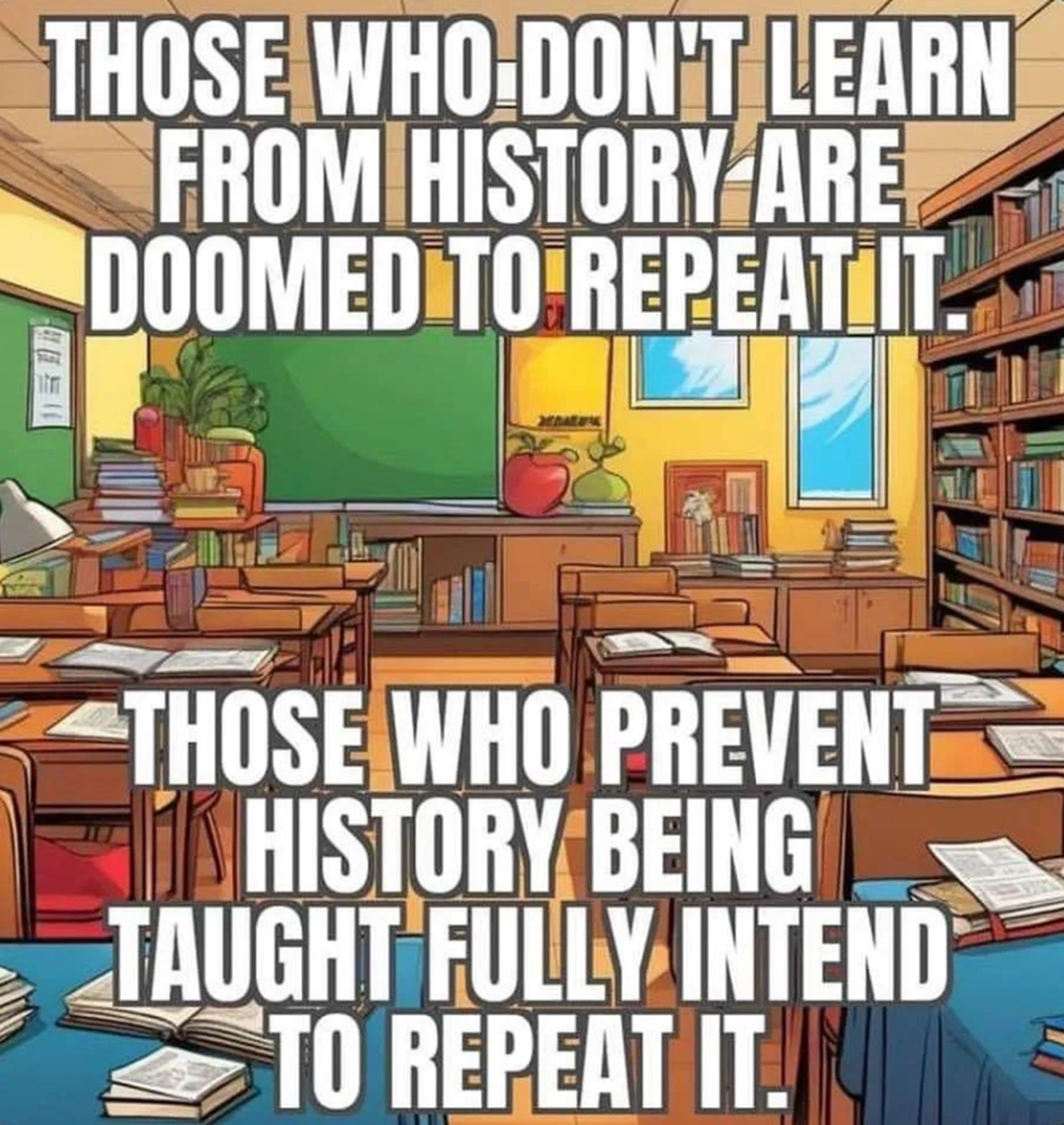
Teach Real History: all our lives depend on it.
Damien sees lies about history as crimes against humanity. And we all must help humanity by addressing “any and all” who make harmful lies about history.
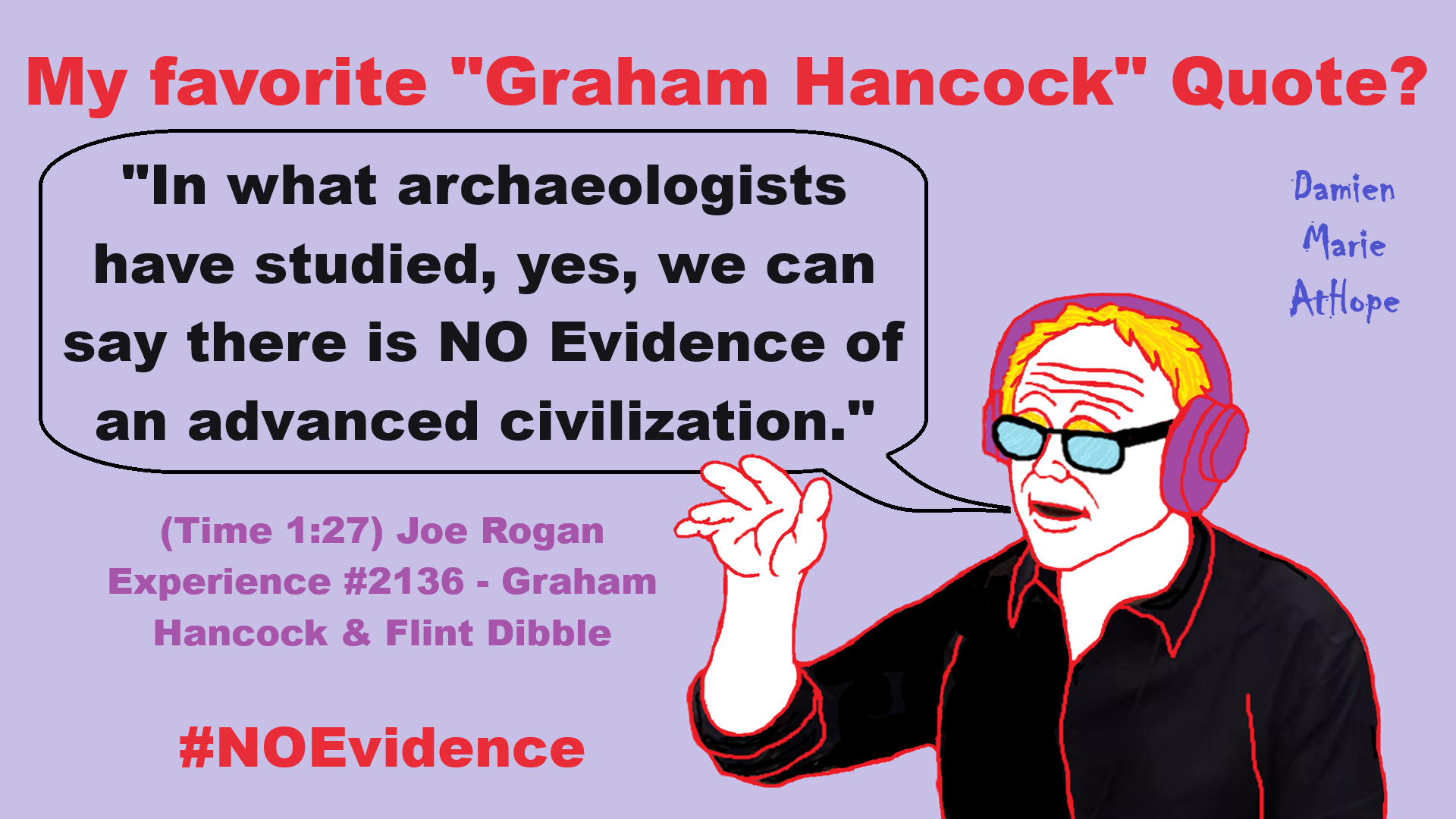
My favorite “Graham Hancock” Quote?
“In what archaeologists have studied, yes, we can say there is NO Evidence of an advanced civilization.” – (Time 1:27) Joe Rogan Experience #2136 – Graham Hancock & Flint Dibble

People don’t commonly teach religious history, even that of their own claimed religion. No, rather they teach a limited “pro their religion” history of their religion from a religious perspective favorable to the religion of choice.

Do you truly think “Religious Belief” is only a matter of some personal choice?
Do you not see how coercive one’s world of choice is limited to the obvious hereditary belief, in most religious choices available to the child of religious parents or caregivers? Religion is more commonly like a family, culture, society, etc. available belief that limits the belief choices of the child and that is when “Religious Belief” is not only a matter of some personal choice and when it becomes hereditary faith, not because of the quality of its alleged facts or proposed truths but because everyone else important to the child believes similarly so they do as well simply mimicking authority beliefs handed to them. Because children are raised in religion rather than being presented all possible choices but rather one limited dogmatic brand of “Religious Belief” where children only have a choice of following the belief as instructed, and then personally claim the faith hereditary belief seen in the confirming to the belief they have held themselves all their lives. This is obvious in statements asked and answered by children claiming a faith they barely understand but they do understand that their family believes “this or that” faith, so they feel obligated to believe it too. While I do agree that “Religious Belief” should only be a matter of some personal choice, it rarely is… End Hereditary Religion!

Animism: Respecting the Living World by Graham Harvey
“How have human cultures engaged with and thought about animals, plants, rocks, clouds, and other elements in their natural surroundings? Do animals and other natural objects have a spirit or soul? What is their relationship to humans? In this new study, Graham Harvey explores current and past animistic beliefs and practices of Native Americans, Maori, Aboriginal Australians, and eco-pagans. He considers the varieties of animism found in these cultures as well as their shared desire to live respectfully within larger natural communities. Drawing on his extensive casework, Harvey also considers the linguistic, performative, ecological, and activist implications of these different animisms.” ref

We are like believing machines we vacuum up ideas, like Velcro sticks to almost everything. We accumulate beliefs that we allow to negatively influence our lives, often without realizing it. Our willingness must be to alter skewed beliefs that impend our balance or reason, which allows us to achieve new positive thinking and accurate outcomes.

My thoughts on Religion Evolution with external links for more info:
- (Pre-Animism Africa mainly, but also Europe, and Asia at least 300,000 years ago), (Pre-Animism – Oxford Dictionaries)
- (Animism Africa around 100,000 years ago), (Animism – Britannica.com)
- (Totemism Europe around 50,000 years ago), (Totemism – Anthropology)
- (Shamanism Siberia around 30,000 years ago), (Shamanism – Britannica.com)
- (Paganism Turkey around 12,000 years ago), (Paganism – BBC Religion)
- (Progressed Organized Religion “Institutional Religion” Egypt around 5,000 years ago), (Ancient Egyptian Religion – Britannica.com)
- (CURRENT “World” RELIGIONS after 4,000 years ago) (Origin of Major Religions – Sacred Texts)
- (Early Atheistic Doubting at least by 2,600 years ago) (History of Atheism – Wikipedia)
“Religion is an Evolved Product” and Yes, Religion is Like Fear Given Wings…
Atheists talk about gods and religions for the same reason doctors talk about cancer, they are looking for a cure, or a firefighter talks about fires because they burn people and they care to stop them. We atheists too often feel a need to help the victims of mental slavery, held in the bondage that is the false beliefs of gods and the conspiracy theories of reality found in religions.
Understanding Religion Evolution:
- Pre-Animism (at least 300,000 years ago)
- Animism (Africa: 100,000 years ago)
- Totemism (Europe: 50,000 years ago)
- Shamanism (Siberia: 30,000 years ago)
- Paganism (Turkey: 12,000 years ago)
- Progressed organized religion (Egypt: 5,000 years ago), (Egypt, the First Dynasty 5,150 years ago)
- CURRENT “World” RELIGIONS (after 4,000 years ago)
- Early Atheistic Doubting (at least by 2,600 years ago)
“An Archaeological/Anthropological Understanding of Religion Evolution”
It seems ancient peoples had to survived amazing threats in a “dangerous universe (by superstition perceived as good and evil),” and human “immorality or imperfection of the soul” which was thought to affect the still living, leading to ancestor worship. This ancestor worship presumably led to the belief in supernatural beings, and then some of these were turned into the belief in gods. This feeble myth called gods were just a human conceived “made from nothing into something over and over, changing, again and again, taking on more as they evolve, all the while they are thought to be special,” but it is just supernatural animistic spirit-belief perceived as sacred.
Quick Evolution of Religion?
Pre-Animism (at least 300,000 years ago) pre-religion is a beginning that evolves into later Animism. So, Religion as we think of it, to me, all starts in a general way with Animism (Africa: 100,000 years ago) (theoretical belief in supernatural powers/spirits), then this is physically expressed in or with Totemism (Europe: 50,000 years ago) (theoretical belief in mythical relationship with powers/spirits through a totem item), which then enlists a full-time specific person to do this worship and believed interacting Shamanism (Siberia/Russia: 30,000 years ago) (theoretical belief in access and influence with spirits through ritual), and then there is the further employment of myths and gods added to all the above giving you Paganism (Turkey: 12,000 years ago) (often a lot more nature-based than most current top world religions, thus hinting to their close link to more ancient religious thinking it stems from). My hypothesis is expressed with an explanation of the building of a theatrical house (modern religions development). Progressed organized religion (Egypt: 5,000 years ago) with CURRENT “World” RELIGIONS (after 4,000 years ago).
Historically, in large city-state societies (such as Egypt or Iraq) starting around 5,000 years ago culminated to make religion something kind of new, a sociocultural-governmental-religious monarchy, where all or at least many of the people of such large city-state societies seem familiar with and committed to the existence of “religion” as the integrated life identity package of control dynamics with a fixed closed magical doctrine, but this juggernaut integrated religion identity package of Dogmatic-Propaganda certainly did not exist or if developed to an extent it was highly limited in most smaller prehistoric societies as they seem to lack most of the strong control dynamics with a fixed closed magical doctrine (magical beliefs could be at times be added or removed). Many people just want to see developed religious dynamics everywhere even if it is not. Instead, all that is found is largely fragments until the domestication of religion.
Religions, as we think of them today, are a new fad, even if they go back to around 6,000 years in the timeline of human existence, this amounts to almost nothing when seen in the long slow evolution of religion at least around 70,000 years ago with one of the oldest ritual worship. Stone Snake of South Africa: “first human worship” 70,000 years ago. This message of how religion and gods among them are clearly a man-made thing that was developed slowly as it was invented and then implemented peace by peace discrediting them all. Which seems to be a simple point some are just not grasping how devastating to any claims of truth when we can see the lie clearly in the archeological sites.
I wish people fought as hard for the actual values as they fight for the group/clan names political or otherwise they think support values. Every amount spent on war is theft to children in need of food or the homeless kept from shelter.
Here are several of my blog posts on history:
- To Find Truth You Must First Look
- (Magdalenian/Iberomaurusian) Connections to the First Paganists of the early Neolithic Near East Dating from around 17,000 to 12,000 Years Ago
- Natufians: an Ancient People at the Origins of Agriculture and Sedentary Life
- Possible Clan Leader/Special “MALE” Ancestor Totem Poles At Least 13,500 years ago?
- Jewish People with DNA at least 13,200 years old, Judaism, and the Origins of Some of its Ideas
- Baltic Reindeer Hunters: Swiderian, Lyngby, Ahrensburgian, and Krasnosillya cultures 12,020 to 11,020 years ago are evidence of powerful migratory waves during the last 13,000 years and a genetic link to Saami and the Finno-Ugric peoples.
- The Rise of Inequality: patriarchy and state hierarchy inequality
- Fertile Crescent 12,500 – 9,500 Years Ago: fertility and death cult belief system?
- 12,400 – 11,700 Years Ago – Kortik Tepe (Turkey) Pre/early-Agriculture Cultic Ritualism
- Ritualistic Bird Symbolism at Gobekli Tepe and its “Ancestor Cult”
- Male-Homosexual (female-like) / Trans-woman (female) Seated Figurine from Gobekli Tepe
- Could a 12,000-year-old Bull Geoglyph at Göbekli Tepe relate to older Bull and Female Art 25,000 years ago and Later Goddess and the Bull cults like Catal Huyuk?
- Sedentism and the Creation of goddesses around 12,000 years ago as well as male gods after 7,000 years ago.
- Alcohol, where Agriculture and Religion Become one? Such as Gobekli Tepe’s Ritualistic use of Grain as Food and Ritual Drink
- Neolithic Ritual Sites with T-Pillars and other Cultic Pillars
- Paganism: Goddesses around 12,000 years ago then Male Gods after 7,000 years ago
- First Patriarchy: Split of Women’s Status around 12,000 years ago & First Hierarchy: fall of Women’s Status around 5,000 years ago.
- Natufians: an Ancient People at the Origins of Agriculture and Sedentary Life
- J DNA and the Spread of Agricultural Religion (paganism)
- Paganism: an approximately 12,000-year-old belief system
- Paganism 12,000 years old: related to “Anarchism and Socialism” (Pre-Capitalism)
- Shaman burial in Israel 12,000 years ago and the Shamanism Phenomena
- Need to Mythicized: gods and goddesses
- 12,000 – 7,000 Years Ago – Paleo-Indian Culture (The Americas)
- 12,000 – 2,000 Years Ago – Indigenous-Scandinavians (Nordic)
- Norse did not wear helmets with horns?
- Pre-Pottery Neolithic Skull Cult around 11,500 to 8,400 Years Ago?
- 10,400 – 10,100 Years Ago, in Turkey the Nevail Cori Religious Settlement
- 9,000-6,500 Years Old Submerged Pre-Pottery/Pottery Neolithic Ritual Settlements off Israel’s Coast
- Catal Huyuk “first religious designed city” around 9,500 to 7,700 years ago (Turkey)
- Cultic Hunting at Catal Huyuk “first religious designed city”
- Special Items and Art as well as Special Elite Burials at Catal Huyuk
- New Rituals and Violence with the appearance of Pottery and People?
- Haplogroup N and its related Uralic Languages and Cultures
- Ainu people, Sámi people, Native Americans, the Ancient North Eurasians, and Paganistic-Shamanism with Totemism
- Ideas, Technology and People from Turkey, Europe, to China and Back again 9,000 to 5,000 years ago?
- First Pottery of Europe and the Related Cultures
- 9,000 years old Neolithic Artifacts Judean Desert and Hills Israel
- 9,000-7,000 years-old Sex and Death Rituals: Cult Sites in Israel, Jordan, and the Sinai
- 9,000-8500 year old Horned Female shaman Bad Dürrenberg Germany
- Neolithic Jewelry and the Spread of Farming in Europe Emerging out of West Turkey
- 8,600-year-old Tortoise Shells in Neolithic graves in central China have Early Writing and Shamanism
- Swing of the Mace: the rise of Elite, Forced Authority, and Inequality begin to Emerge 8,500 years ago?
- Migrations and Changing Europeans Beginning around 8,000 Years Ago
- My “Steppe-Anatolian-Kurgan hypothesis” 8,000/7,000 years ago
- Around 8,000-year-old Shared Idea of the Mistress of Animals, “Ritual” Motif
- Pre-Columbian Red-Paint (red ochre) Maritime Archaic Culture 8,000-3,000 years ago
- 7,522-6,522 years ago Linear Pottery culture which I think relates to Arcane Capitalism’s origins
- Arcane Capitalism: Primitive socialism, Primitive capital, Private ownership, Means of production, Market capitalism, Class discrimination, and Petite bourgeoisie (smaller capitalists)
- 7,500-4,750 years old Ritualistic Cucuteni-Trypillian culture of Moldova, Romania, and Ukraine
- Roots of a changing early society 7,200-6,700 years ago Jordan and Israel
- Agriculture religion (Paganism) with farming reached Britain between about 7,000 to 6,500 or so years ago and seemingly expressed in things like Western Europe’s Long Barrows
- My Thoughts on Possible Migrations of “R” DNA and Proto-Indo-European?
- “Millet” Spreading from China 7,022 years ago to Europe and related Language may have Spread with it leading to Proto-Indo-European
- Proto-Indo-European (PIE), ancestor of Indo-European languages: DNA, Society, Language, and Mythology
- The Dnieper–Donets culture and Asian varieties of Millet from China to the Black Sea region of Europe by 7,022 years ago
- Kurgan 6,000 years ago/dolmens 7,000 years ago: funeral, ritual, and other?
- 7,020 to 6,020-year-old Proto-Indo-European Homeland of Urheimat or proposed home of their Language and Religion
- Ancient Megaliths: Kurgan, Ziggurat, Pyramid, Menhir, Trilithon, Dolman, Kromlech, and Kromlech of Trilithons
- The Mytheme of Ancient North Eurasian Sacred-Dog belief and similar motifs are found in Indo-European, Native American, and Siberian comparative mythology
- Elite Power Accumulation: Ancient Trade, Tokens, Writing, Wealth, Merchants, and Priest-Kings
- Sacred Mounds, Mountains, Kurgans, and Pyramids may hold deep connections?
- Between 7,000-5,000 Years ago, rise of unequal hierarchy elite, leading to a “birth of the State” or worship of power, strong new sexism, oppression of non-elites, and the fall of Women’s equal status
- Paganism 7,000-5,000 years old: related to “Anarchism and Socialism” (Capitalism) (World War 0) Elite & their slaves
- Hell and Underworld mythologies starting maybe as far back as 7,000 to 5,000 years ago with the Proto-Indo-Europeans?
- The First Expression of the Male God around 7,000 years ago?
- White (light complexion skin) Bigotry and Sexism started 7,000 years ago?
- Around 7,000-year-old Shared Idea of the Divine Bird (Tutelary and/or Trickster spirit/deity), “Ritual” Motif
- Nekhbet an Ancient Egyptian Vulture Goddess and Tutelary Deity
- 6,720 to 4,920 years old Ritualistic Hongshan Culture of Inner Mongolia with 5,000-year-old Pyramid Mounds and Temples
- First proto-king in the Balkans, Varna culture around 6,500 years ago?
- 6,500–5,800 years ago in Israel Late Chalcolithic (Copper Age) Period in the Southern Levant Seems to Express Northern Levant Migrations, Cultural and Religious Transfer
- KING OF BEASTS: Master of Animals “Ritual” Motif, around 6,000 years old or older…
- Around 6000-year-old Shared Idea of the Solid Wheel & the Spoked Wheel-Shaped Ritual Motif
- “The Ghassulian Star,” a mysterious 6,000-year-old mural from Jordan; a Proto-Star of Ishtar, Star of Inanna or Star of Venus?
- Religious/Ritual Ideas, including goddesses and gods as well as ritual mounds or pyramids from Northeastern Asia at least 6,000 years old, seemingly filtering to Iran, Iraq, the Mediterranean, Europe, Egypt, and the Americas?
- Maykop (5,720–5,020 years ago) Caucasus region Bronze Age culture-related to Copper Age farmers from the south, influenced by the Ubaid period and Leyla-Tepe culture, as well as influencing the Kura-Araxes culture
- 5-600-year-old Tomb, Mummy, and First Bearded Male Figurine in a Grave
- Kura-Araxes Cultural 5,520 to 4,470 years old DNA traces to the Canaanites, Arabs, and Jews
- Minoan/Cretan (Keftiu) Civilization and Religion around 5,520 to 3,120 years ago
- Evolution Of Science at least by 5,500 years ago
- 5,500 Years old birth of the State, the rise of Hierarchy, and the fall of Women’s status
- “Jiroft culture” 5,100 – 4,200 years ago and the History of Iran
- Stonehenge: Paganistic Burial and Astrological Ritual Complex, England (5,100-3,600 years ago)
- Around 5,000-year-old Shared Idea of the “Tree of Life” Ritual Motif
- Complex rituals for elite, seen from China to Egypt, at least by 5,000 years ago
- Around 5,000 years ago: “Birth of the State” where Religion gets Military Power and Influence
- The Center of the World “Axis Mundi” and/or “Sacred Mountains” Mythology Could Relate to the Altai Mountains, Heart of the Steppe
- Progressed organized religion starts, an approximately 5,000-year-old belief system
- China’s Civilization between 5,000-3,000 years ago, was a time of war and class struggle, violent transition from free clans to a Slave or Elite society
- Origin of Logics is Naturalistic Observation at least by around 5,000 years ago.
- Paganism 5,000 years old: progressed organized religion and the state: related to “Anarchism and Socialism” (Kings and the Rise of the State)
- Ziggurats (multi-platform temples: 4,900 years old) to Pyramids (multi-platform tombs: 4,700 years old)
- Did a 4,520–4,420-year-old Volcano In Turkey Inspire the Bible God?
- Finland’s Horned Shaman and Pre-Horned-God at least 4,500 years ago?
- 4,000-year-Old Dolmens in Israel: A Connected Dolmen Religious Phenomenon?
- Creation myths: From chaos, Ex nihilo, Earth-diver, Emergence, World egg, and World parent
- Bronze Age “Ritual” connections of the Bell Beaker culture with the Corded Ware/Single Grave culture, which were related to the Yamnaya culture and Proto-Indo-European Languages/Religions
- Low Gods (Earth/ Tutelary deity), High Gods (Sky/Supreme deity), and Moralistic Gods (Deity enforcement/divine order)
- The exchange of people, ideas, and material-culture including, to me, the new god (Sky Father) and goddess (Earth Mother) religion between the Cucuteni-Trypillians and others which is then spread far and wide
- Koryaks: Indigenous People of the Russian Far East and Big Raven myths also found in Tlingit, Haida, Tsimshian, and other Indigenous People of North America
- 42 Principles Of Maat (Egyptian Goddess of the justice) around 4,400 years ago, 2000 Years Before Ten Commandments
- “Happy Easter” Well Happy Eostre/Ishter
- 4,320-3,820 years old “Shimao” (North China) site with Totemistic-Shamanistic Paganism and a Stepped Pyramid
- 4,250 to 3,400 Year old Stonehenge from Russia: Arkaim?
- 4,100-year-old beaker with medicinal & flowering plants in a grave of a woman in Scotland
- Early European Farmer ancestry, Kelif el Boroud people with the Cardial Ware culture, and the Bell Beaker culture Paganists too, spread into North Africa, then to the Canary Islands off West Africa
- Flood Accounts: Gilgamesh epic (4,100 years ago) Noah in Genesis (2,600 years ago)
- Paganism 4,000 years old: related to “Anarchism and Socialism” (First Moralistic gods, then the Origin time of Monotheism)
- When was the beginning: TIMELINE OF CURRENT RELIGIONS, which start around 4,000 years ago.
- Early Religions Thought to Express Proto-Monotheistic Systems around 4,000 years ago
- Kultepe? An archaeological site with a 4,000 years old women’s rights document.
- Single God Religions (Monotheism) = “Man-o-theism” started around 4,000 years ago with the Great Sky Spirit/God Tiān (天)?
- Confucianism’s Tiān (Shangdi god 4,000 years old): Supernaturalism, Pantheism or Theism?
- Yes, Your Male God is Ridiculous
- Mythology, a Lunar Deity is a Goddess or God of the Moon
- Sacred Land, Hills, and Mountains: Sami Mythology (Paganistic Shamanism)
- Horse Worship/Sacrifice: mythical union of Ruling Elite/Kingship and the Horse
- The Amorite/Amurru people’s God Amurru “Lord of the Steppe”, relates to the Origins of the Bible God?
- Bronze Age Exotic Trade Routes Spread Quite Far as well as Spread Religious Ideas with Them
- Sami and the Northern Indigenous Peoples Landscape, Language, and its Connection to Religion
- Prototype of Ancient Analemmatic Sundials around 3,900-3,150 years ago and a Possible Solar Connection to gods?
- Judaism is around 3,450 or 3,250 years old. (“Paleo-Hebrew” 3,000 years ago and Torah 2,500 years ago)
- The Weakening of Ancient Trade and the Strengthening of Religions around 3000 years ago?
- Are you aware that there are religions that worship women gods, explain now religion tears women down?
- Animistic, Totemistic, and Paganistic Superstition Origins of bible god and the bible’s Religion.
- Myths and Folklore: “Trickster gods and goddesses”
- Jews, Judaism, and the Origins of Some of its Ideas
- An Old Branch of Religion Still Giving Fruit: Sacred Trees
- Dating the BIBLE: naming names and telling times (written less than 3,000 years ago, provable to 2,200 years ago)
- Did a Volcano Inspire the bible god?
- Dené–Yeniseian language, Old Copper Complex, and Pre-Columbian Mound Builders?
- No “dinosaurs and humans didn’t exist together just because some think they are in the bible itself”
- Sacred Shit and Sacred Animals?
- Everyone Killed in the Bible Flood? “Nephilim” (giants)?
- Hey, Damien dude, I have a question for you regarding “the bible” Exodus.
- Archaeology Disproves the Bible
- Bible Battle, Just More, Bible Babble
- The Jericho Conquest lie?
- Canaanites and Israelites?
- Accurate Account on how did Christianity Began?
- Let’s talk about Christianity.
- So the 10 commandments isn’t anything to go by either right?
- Misinformed christian
- Debunking Jesus?
- Paulism vs Jesus
- Ok, you seem confused so let’s talk about Buddhism.
- Unacknowledged Buddhism: Gods, Savior, Demons, Rebirth, Heavens, Hells, and Terrorism
- His Foolishness The Dalai Lama
- Yin and Yang is sexist with an ORIGIN around 2,300 years ago?
- I Believe Archaeology, not Myths & Why Not, as the Religious Myths Already Violate Reason!
- Archaeological, Scientific, & Philosophic evidence shows the god myth is man-made nonsense.
- Aquatic Ape Theory/Hypothesis? As Always, Just Pseudoscience.
- Ancient Aliens Conspiracy Theorists are Pseudohistorians
- The Pseudohistoric and Pseudoscientific claims about “Bakoni Ruins” of South Africa
- Why do people think Religion is much more than supernaturalism and superstitionism?
- Religion is an Evolved Product
- Was the Value of Ancient Women Different?
- 1000 to 1100 CE, human sacrifice Cahokia Mounds a pre-Columbian Native American site
- Feminist atheists as far back as the 1800s?
- Promoting Religion as Real is Mentally Harmful to a Flourishing Humanity
- Screw All Religions and Their Toxic lies, they are all fraud
- Forget Religions’ Unfounded Myths, I Have Substantiated “Archaeology Facts.”
- Religion Dispersal throughout the World
- I Hate Religion Just as I Hate all Pseudoscience
- Exposing Scientology, Eckankar, Wicca and Other Nonsense?
- Main deity or religious belief systems
- Quit Trying to Invent Your God From the Scraps of Science.
- Archaeological, Scientific, & Philosophic evidence shows the god myth is man-made nonsense.
- Ancient Alien Conspiracy Theorists: Misunderstanding, Rhetoric, Misinformation, Fabrications, and Lies
- Misinformation, Distortion, and Pseudoscience in Talking with a Christian Creationist
- Judging the Lack of Goodness in Gods, Even the Norse God Odin
- Challenging the Belief in God-like Aliens and Gods in General
- A Challenge to Christian use of Torture Devices?
- Yes, Hinduism is a Religion
- Trump is One of the Most Reactionary Forces of Far-right Christian Extremism
- Was the Bull Head a Symbol of God? Yes!
- Primate Death Rituals
- Christian – “God and Christianity are objectively true”
- Australopithecus afarensis Death Ritual?
- You Claim Global Warming is a Hoax?
- Doubter of Science and Defamer of Atheists?
- I think that sounds like the Bible?
- History of the Antifa (“anti-fascist”) Movements
- Indianapolis Anti-Blasphemy Laws #Free Soheil Rally
- Damien, you repeat the golden rule in so many forms then you say religion is dogmatic?
- Science is a Trustable Methodology whereas Faith is not Trustable at all!
- Was I ever a believer, before I was an atheist?
- Atheists rise in reason
- Mistrust of science?
- Open to Talking About the Definition of ‘God’? But first, we address Faith.
- ‘United Monarchy’ full of splendor and power – Saul, David, and Solomon? Most likely not.
- Is there EXODUS ARCHAEOLOGY? The short answer is “no.”
- Lacking Proof of Bigfoots, Unicorns, and Gods is Just a Lack of Research?
- Religion and Politics: Faith Beliefs vs. Rational Thinking
- Hammer of Truth that lying pig RELIGION: challenged by an archaeologist
- “The Hammer of Truth” -ontology question- What do You Mean by That?
- Navigation of a bad argument: Ad Hominem vs. Attack
- Why is it Often Claimed that Gods have a Gender?
- Why are basically all monotheistic religions ones that have a male god?
- Shifting through the Claims in support of Faith
- Dear Mr. AtHope, The 20th Century is an Indictment of Secularism and a Failed Atheist Century
- An Understanding of the Worldwide Statistics and Dynamics of Terrorist Incidents and Suicide Attacks
- Intoxication and Evolution? Addressing and Assessing the “Stoned Ape” or “Drunken Monkey” Theories as Catalysts in Human Evolution
- Sacred Menstrual cloth? Inanna’s knot, Isis knot, and maybe Ma’at’s feather?
- Damien, why don’t the Hebrews accept the bible stories?
- Dealing with a Troll and Arguing Over Word Meaning
- Knowledge without Belief? Justified beliefs or disbeliefs worthy of Knowledge?
- Afrocentrism and African Religions
- Crecganford @crecganford offers history & stories of the people, places, gods, & culture
- Empiricism-Denier?
I am not an academic. I am a revolutionary that teaches in public, in places like social media, and in the streets. I am not a leader by some title given but from my commanding leadership style of simply to start teaching everywhere to everyone, all manner of positive education.



To me, Animism starts in Southern Africa, then to West Europe, and becomes Totemism. Another split goes near the Russia and Siberia border becoming Shamanism, which heads into Central Europe meeting up with Totemism, which also had moved there, mixing the two which then heads to Lake Baikal in Siberia. From there this Shamanism-Totemism heads to Turkey where it becomes Paganism.




Not all “Religions” or “Religious Persuasions” have a god(s) but
All can be said to believe in some imaginary beings or imaginary things like spirits, afterlives, etc.

Paganism 12,000-4,000 years old
12,000-7,000 years old: related to (Pre-Capitalism)
7,000-5,000 years old: related to (Capitalism) (World War 0) Elite and their slaves!
5,000 years old: related to (Kings and the Rise of the State)
4,000 years old: related to (First Moralistic gods, then the Origin time of Monotheism)

ref, ref, ref, ref, ref, ref, ref, ref, ref, ref, ref, ref, ref, ref, ref, ref, ref, ref, ref, ref, ref
Low Gods “Earth” or Tutelary deity and High Gods “Sky” or Supreme deity
“An Earth goddess is a deification of the Earth. Earth goddesses are often associated with the “chthonic” deities of the underworld. Ki and Ninhursag are Mesopotamian earth goddesses. In Greek mythology, the Earth is personified as Gaia, corresponding to Roman Terra, Indic Prithvi/Bhūmi, etc. traced to an “Earth Mother” complementary to the “Sky Father” in Proto-Indo-European religion. Egyptian mythology exceptionally has a sky goddess and an Earth god.” ref
“A mother goddess is a goddess who represents or is a personification of nature, motherhood, fertility, creation, destruction or who embodies the bounty of the Earth. When equated with the Earth or the natural world, such goddesses are sometimes referred to as Mother Earth or as the Earth Mother. In some religious traditions or movements, Heavenly Mother (also referred to as Mother in Heaven or Sky Mother) is the wife or feminine counterpart of the Sky father or God the Father.” ref
“Any masculine sky god is often also king of the gods, taking the position of patriarch within a pantheon. Such king gods are collectively categorized as “sky father” deities, with a polarity between sky and earth often being expressed by pairing a “sky father” god with an “earth mother” goddess (pairings of a sky mother with an earth father are less frequent). A main sky goddess is often the queen of the gods and may be an air/sky goddess in her own right, though she usually has other functions as well with “sky” not being her main. In antiquity, several sky goddesses in ancient Egypt, Mesopotamia, and the Near East were called Queen of Heaven. Neopagans often apply it with impunity to sky goddesses from other regions who were never associated with the term historically. The sky often has important religious significance. Many religions, both polytheistic and monotheistic, have deities associated with the sky.” ref
“In comparative mythology, sky father is a term for a recurring concept in polytheistic religions of a sky god who is addressed as a “father”, often the father of a pantheon and is often either a reigning or former King of the Gods. The concept of “sky father” may also be taken to include Sun gods with similar characteristics, such as Ra. The concept is complementary to an “earth mother“. “Sky Father” is a direct translation of the Vedic Dyaus Pita, etymologically descended from the same Proto-Indo-European deity name as the Greek Zeûs Pater and Roman Jupiter and Germanic Týr, Tir or Tiwaz, all of which are reflexes of the same Proto-Indo-European deity’s name, *Dyēus Ph₂tḗr. While there are numerous parallels adduced from outside of Indo-European mythology, there are exceptions (e.g. In Egyptian mythology, Nut is the sky mother and Geb is the earth father).” ref
Tutelary deity
“A tutelary (also tutelar) is a deity or spirit who is a guardian, patron, or protector of a particular place, geographic feature, person, lineage, nation, culture, or occupation. The etymology of “tutelary” expresses the concept of safety and thus of guardianship. In late Greek and Roman religion, one type of tutelary deity, the genius, functions as the personal deity or daimon of an individual from birth to death. Another form of personal tutelary spirit is the familiar spirit of European folklore.” ref
“A tutelary (also tutelar) in Korean shamanism, jangseung and sotdae were placed at the edge of villages to frighten off demons. They were also worshiped as deities. Seonangshin is the patron deity of the village in Korean tradition and was believed to embody the Seonangdang. In Philippine animism, Diwata or Lambana are deities or spirits that inhabit sacred places like mountains and mounds and serve as guardians. Such as: Maria Makiling is the deity who guards Mt. Makiling and Maria Cacao and Maria Sinukuan. In Shinto, the spirits, or kami, which give life to human bodies come from nature and return to it after death. Ancestors are therefore themselves tutelaries to be worshiped. And similarly, Native American beliefs such as Tonás, tutelary animal spirit among the Zapotec and Totems, familial or clan spirits among the Ojibwe, can be animals.” ref
“A tutelary (also tutelar) in Austronesian beliefs such as: Atua (gods and spirits of the Polynesian peoples such as the Māori or the Hawaiians), Hanitu (Bunun of Taiwan‘s term for spirit), Hyang (Kawi, Sundanese, Javanese, and Balinese Supreme Being, in ancient Java and Bali mythology and this spiritual entity, can be either divine or ancestral), Kaitiaki (New Zealand Māori term used for the concept of guardianship, for the sky, the sea, and the land), Kawas (mythology) (divided into 6 groups: gods, ancestors, souls of the living, spirits of living things, spirits of lifeless objects, and ghosts), Tiki (Māori mythology, Tiki is the first man created by either Tūmatauenga or Tāne and represents deified ancestors found in most Polynesian cultures). ” ref, ref, ref, ref, ref, ref, ref
Mesopotamian Tutelary Deities can be seen as ones related to City-States
“Historical city-states included Sumerian cities such as Uruk and Ur; Ancient Egyptian city-states, such as Thebes and Memphis; the Phoenician cities (such as Tyre and Sidon); the five Philistine city-states; the Berber city-states of the Garamantes; the city-states of ancient Greece (the poleis such as Athens, Sparta, Thebes, and Corinth); the Roman Republic (which grew from a city-state into a vast empire); the Italian city-states from the Middle Ages to the early modern period, such as Florence, Siena, Ferrara, Milan (which as they grew in power began to dominate neighboring cities) and Genoa and Venice, which became powerful thalassocracies; the Mayan and other cultures of pre-Columbian Mesoamerica (including cities such as Chichen Itza, Tikal, Copán and Monte Albán); the central Asian cities along the Silk Road; the city-states of the Swahili coast; Ragusa; states of the medieval Russian lands such as Novgorod and Pskov; and many others.” ref
“The Uruk period (ca. 4000 to 3100 BCE; also known as Protoliterate period) of Mesopotamia, named after the Sumerian city of Uruk, this period saw the emergence of urban life in Mesopotamia and the Sumerian civilization. City-States like Uruk and others had a patron tutelary City Deity along with a Priest-King.” ref
“Chinese folk religion, both past, and present, includes myriad tutelary deities. Exceptional individuals, highly cultivated sages, and prominent ancestors can be deified and honored after death. Lord Guan is the patron of military personnel and police, while Mazu is the patron of fishermen and sailors. Such as Tu Di Gong (Earth Deity) is the tutelary deity of a locality, and each individual locality has its own Earth Deity and Cheng Huang Gong (City God) is the guardian deity of an individual city, worshipped by local officials and locals since imperial times.” ref
“A tutelary (also tutelar) in Hinduism, personal tutelary deities are known as ishta-devata, while family tutelary deities are known as Kuladevata. Gramadevata are guardian deities of villages. Devas can also be seen as tutelary. Shiva is the patron of yogis and renunciants. City goddesses include: Mumbadevi (Mumbai), Sachchika (Osian); Kuladevis include: Ambika (Porwad), and Mahalakshmi. In NorthEast India Meitei mythology and religion (Sanamahism) of Manipur, there are various types of tutelary deities, among which Lam Lais are the most predominant ones. Tibetan Buddhism has Yidam as a tutelary deity. Dakini is the patron of those who seek knowledge.” ref
“A tutelary (also tutelar) The Greeks also thought deities guarded specific places: for instance, Athena was the patron goddess of the city of Athens. Socrates spoke of hearing the voice of his personal spirit or daimonion:
You have often heard me speak of an oracle or sign which comes to me … . This sign I have had ever since I was a child. The sign is a voice which comes to me and always forbids me to do something which I am going to do, but never commands me to do anything, and this is what stands in the way of my being a politician.” ref
“Tutelary deities who guard and preserve a place or a person are fundamental to ancient Roman religion. The tutelary deity of a man was his Genius, that of a woman her Juno. In the Imperial era, the Genius of the Emperor was a focus of Imperial cult. An emperor might also adopt a major deity as his personal patron or tutelary, as Augustus did Apollo. Precedents for claiming the personal protection of a deity were established in the Republican era, when for instance the Roman dictator Sulla advertised the goddess Victory as his tutelary by holding public games (ludi) in her honor.” ref
“Each town or city had one or more tutelary deities, whose protection was considered particularly vital in time of war and siege. Rome itself was protected by a goddess whose name was to be kept ritually secret on pain of death (for a supposed case, see Quintus Valerius Soranus). The Capitoline Triad of Juno, Jupiter, and Minerva were also tutelaries of Rome. The Italic towns had their own tutelary deities. Juno often had this function, as at the Latin town of Lanuvium and the Etruscan city of Veii, and was often housed in an especially grand temple on the arx (citadel) or other prominent or central location. The tutelary deity of Praeneste was Fortuna, whose oracle was renowned.” ref
“The Roman ritual of evocatio was premised on the belief that a town could be made vulnerable to military defeat if the power of its tutelary deity were diverted outside the city, perhaps by the offer of superior cult at Rome. The depiction of some goddesses such as the Magna Mater (Great Mother, or Cybele) as “tower-crowned” represents their capacity to preserve the city. A town in the provinces might adopt a deity from within the Roman religious sphere to serve as its guardian, or syncretize its own tutelary with such; for instance, a community within the civitas of the Remi in Gaul adopted Apollo as its tutelary, and at the capital of the Remi (present-day Rheims), the tutelary was Mars Camulus.” ref
Household deity (a kind of or related to a Tutelary deity)
“A household deity is a deity or spirit that protects the home, looking after the entire household or certain key members. It has been a common belief in paganism as well as in folklore across many parts of the world. Household deities fit into two types; firstly, a specific deity – typically a goddess – often referred to as a hearth goddess or domestic goddess who is associated with the home and hearth, such as the ancient Greek Hestia.” ref
“The second type of household deities are those that are not one singular deity, but a type, or species of animistic deity, who usually have lesser powers than major deities. This type was common in the religions of antiquity, such as the Lares of ancient Roman religion, the Gashin of Korean shamanism, and Cofgodas of Anglo-Saxon paganism. These survived Christianisation as fairy-like creatures existing in folklore, such as the Anglo-Scottish Brownie and Slavic Domovoy.” ref
“Household deities were usually worshipped not in temples but in the home, where they would be represented by small idols (such as the teraphim of the Bible, often translated as “household gods” in Genesis 31:19 for example), amulets, paintings, or reliefs. They could also be found on domestic objects, such as cosmetic articles in the case of Tawaret. The more prosperous houses might have a small shrine to the household god(s); the lararium served this purpose in the case of the Romans. The gods would be treated as members of the family and invited to join in meals, or be given offerings of food and drink.” ref
“In many religions, both ancient and modern, a god would preside over the home. Certain species, or types, of household deities, existed. An example of this was the Roman Lares. Many European cultures retained house spirits into the modern period. Some examples of these include:
- Brownie (Scotland and England) or Hob (England) / Kobold (Germany) / Goblin / Hobgoblin
- Domovoy (Slavic)
- Nisse (Norwegian or Danish) / Tomte (Swedish) / Tonttu (Finnish)
- Húsvættir (Norse)” ref
“Although the cosmic status of household deities was not as lofty as that of the Twelve Olympians or the Aesir, they were also jealous of their dignity and also had to be appeased with shrines and offerings, however humble. Because of their immediacy they had arguably more influence on the day-to-day affairs of men than the remote gods did. Vestiges of their worship persisted long after Christianity and other major religions extirpated nearly every trace of the major pagan pantheons. Elements of the practice can be seen even today, with Christian accretions, where statues to various saints (such as St. Francis) protect gardens and grottos. Even the gargoyles found on older churches, could be viewed as guardians partitioning a sacred space.” ref
“For centuries, Christianity fought a mop-up war against these lingering minor pagan deities, but they proved tenacious. For example, Martin Luther‘s Tischreden have numerous – quite serious – references to dealing with kobolds. Eventually, rationalism and the Industrial Revolution threatened to erase most of these minor deities, until the advent of romantic nationalism rehabilitated them and embellished them into objects of literary curiosity in the 19th century. Since the 20th century this literature has been mined for characters for role-playing games, video games, and other fantasy personae, not infrequently invested with invented traits and hierarchies somewhat different from their mythological and folkloric roots.” ref
“In contradistinction to both Herbert Spencer and Edward Burnett Tylor, who defended theories of animistic origins of ancestor worship, Émile Durkheim saw its origin in totemism. In reality, this distinction is somewhat academic, since totemism may be regarded as a particularized manifestation of animism, and something of a synthesis of the two positions was attempted by Sigmund Freud. In Freud’s Totem and Taboo, both totem and taboo are outward expressions or manifestations of the same psychological tendency, a concept which is complementary to, or which rather reconciles, the apparent conflict. Freud preferred to emphasize the psychoanalytic implications of the reification of metaphysical forces, but with particular emphasis on its familial nature. This emphasis underscores, rather than weakens, the ancestral component.” ref
“William Edward Hearn, a noted classicist, and jurist, traced the origin of domestic deities from the earliest stages as an expression of animism, a belief system thought to have existed also in the neolithic, and the forerunner of Indo-European religion. In his analysis of the Indo-European household, in Chapter II “The House Spirit”, Section 1, he states:
The belief which guided the conduct of our forefathers was … the spirit rule of dead ancestors.” ref
“In Section 2 he proceeds to elaborate:
It is thus certain that the worship of deceased ancestors is a vera causa, and not a mere hypothesis. …
In the other European nations, the Slavs, the Teutons, and the Kelts, the House Spirit appears with no less distinctness. … [T]he existence of that worship does not admit of doubt. … The House Spirits had a multitude of other names which it is needless here to enumerate, but all of which are more or less expressive of their friendly relations with man. … In [England] … [h]e is the Brownie. … In Scotland this same Brownie is well known. He is usually described as attached to particular families, with whom he has been known to reside for centuries, threshing the corn, cleaning the house, and performing similar household tasks. His favorite gratification was milk and honey.” ref

ref, ref, ref, ref, ref, ref, ref, ref, ref, ref, ref, ref, ref, ref, ref, ref, ref
“These ideas are my speculations from the evidence.”
I am still researching the “god‘s origins” all over the world. So you know, it is very complicated but I am smart and willing to look, DEEP, if necessary, which going very deep does seem to be needed here, when trying to actually understand the evolution of gods and goddesses. I am sure of a few things and less sure of others, but even in stuff I am not fully grasping I still am slowly figuring it out, to explain it to others. But as I research more I am understanding things a little better, though I am still working on understanding it all or something close and thus always figuring out more.
Sky Father/Sky God?
“Egyptian: (Nut) Sky Mother and (Geb) Earth Father” (Egypt is different but similar)
Turkic/Mongolic: (Tengri/Tenger Etseg) Sky Father and (Eje/Gazar Eej) Earth Mother *Transeurasian*
Hawaiian: (Wākea) Sky Father and (Papahānaumoku) Earth Mother *Austronesian*
New Zealand/ Māori: (Ranginui) Sky Father and (Papatūānuku) Earth Mother *Austronesian*
Proto-Indo-European: (Dyḗus/Dyḗus ph₂tḗr) Sky Father and (Dʰéǵʰōm/Pleth₂wih₁) Earth Mother
Indo-Aryan: (Dyaus Pita) Sky Father and (Prithvi Mata) Earth Mother *Indo-European*
Italic: (Jupiter) Sky Father and (Juno) Sky Mother *Indo-European*
Etruscan: (Tinia) Sky Father and (Uni) Sky Mother *Tyrsenian/Italy Pre–Indo-European*
Hellenic/Greek: (Zeus) Sky Father and (Hera) Sky Mother who started as an “Earth Goddess” *Indo-European*
Nordic: (Dagr) Sky Father and (Nótt) Sky Mother *Indo-European*
Slavic: (Perun) Sky Father and (Mokosh) Earth Mother *Indo-European*
Illyrian: (Deipaturos) Sky Father and (Messapic Damatura’s “earth-mother” maybe) Earth Mother *Indo-European*
Albanian: (Zojz) Sky Father and (?) *Indo-European*
Baltic: (Perkūnas) Sky Father and (Saulė) Sky Mother *Indo-European*
Germanic: (Týr) Sky Father and (?) *Indo-European*
Colombian-Muisca: (Bochica) Sky Father and (Huythaca) Sky Mother *Chibchan*
Aztec: (Quetzalcoatl) Sky Father and (Xochiquetzal) Sky Mother *Uto-Aztecan*
Incan: (Viracocha) Sky Father and (Mama Runtucaya) Sky Mother *Quechuan*
China: (Tian/Shangdi) Sky Father and (Dì) Earth Mother *Sino-Tibetan*
Sumerian, Assyrian and Babylonian: (An/Anu) Sky Father and (Ki) Earth Mother
Finnish: (Ukko) Sky Father and (Akka) Earth Mother *Finno-Ugric*
Sami: (Horagalles) Sky Father and (Ravdna) Earth Mother *Finno-Ugric*
Puebloan-Zuni: (Ápoyan Ta’chu) Sky Father and (Áwitelin Tsíta) Earth Mother
Puebloan-Hopi: (Tawa) Sky Father and (Kokyangwuti/Spider Woman/Grandmother) Earth Mother *Uto-Aztecan*
Puebloan-Navajo: (Tsohanoai) Sky Father and (Estsanatlehi) Earth Mother *Na-Dene*
ref, ref, ref, ref, ref, ref, ref, ref, ref, ref, ref, ref, ref, ref, ref, ref, ref, ref, ref, ref, ref, ref, ref, ref, ref, ref, ref

Hinduism around 3,700 to 3,500 years old. ref
Judaism around 3,450 or 3,250 years old. (The first writing in the bible was “Paleo-Hebrew” dated to around 3,000 years ago Khirbet Qeiyafa is the site of an ancient fortress city overlooking the Elah Valley. And many believe the religious Jewish texts were completed around 2,500) ref, ref
Judaism is around 3,450 or 3,250 years old. (“Paleo-Hebrew” 3,000 years ago and Torah 2,500 years ago)
“Judaism is an Abrahamic, its roots as an organized religion in the Middle East during the Bronze Age. Some scholars argue that modern Judaism evolved from Yahwism, the religion of ancient Israel and Judah, by the late 6th century BCE, and is thus considered to be one of the oldest monotheistic religions.” ref
“Yahwism is the name given by modern scholars to the religion of ancient Israel, essentially polytheistic, with a plethora of gods and goddesses. Heading the pantheon was Yahweh, the national god of the Israelite kingdoms of Israel and Judah, with his consort, the goddess Asherah; below them were second-tier gods and goddesses such as Baal, Shamash, Yarikh, Mot, and Astarte, all of whom had their own priests and prophets and numbered royalty among their devotees, and a third and fourth tier of minor divine beings, including the mal’ak, the messengers of the higher gods, who in later times became the angels of Judaism, Christianity and Islam. Yahweh, however, was not the ‘original’ god of Israel “Isra-El”; it is El, the head of the Canaanite pantheon, whose name forms the basis of the name “Israel”, and none of the Old Testament patriarchs, the tribes of Israel, the Judges, or the earliest monarchs, have a Yahwistic theophoric name (i.e., one incorporating the name of Yahweh).” ref
“El is a Northwest Semitic word meaning “god” or “deity“, or referring (as a proper name) to any one of multiple major ancient Near Eastern deities. A rarer form, ‘ila, represents the predicate form in Old Akkadian and in Amorite. The word is derived from the Proto-Semitic *ʔil-, meaning “god”. Specific deities known as ‘El or ‘Il include the supreme god of the ancient Canaanite religion and the supreme god of East Semitic speakers in Mesopotamia’s Early Dynastic Period. ʼĒl is listed at the head of many pantheons. In some Canaanite and Ugaritic sources, ʼĒl played a role as father of the gods, of creation, or both. For example, in the Ugaritic texts, ʾil mlk is understood to mean “ʼĒl the King” but ʾil hd as “the god Hadad“. The Semitic root ʾlh (Arabic ʾilāh, Aramaic ʾAlāh, ʾElāh, Hebrew ʾelōah) may be ʾl with a parasitic h, and ʾl may be an abbreviated form of ʾlh. In Ugaritic the plural form meaning “gods” is ʾilhm, equivalent to Hebrew ʾelōhîm “powers”. In the Hebrew texts this word is interpreted as being semantically singular for “god” by biblical commentators. However the documentary hypothesis for the Old Testament (corresponds to the Jewish Torah) developed originally in the 1870s, identifies these that different authors – the Jahwist, Elohist, Deuteronomist, and the Priestly source – were responsible for editing stories from a polytheistic religion into those of a monotheistic religion. Inconsistencies that arise between monotheism and polytheism in the texts are reflective of this hypothesis.” ref
Jainism around 2,599 – 2,527 years old. ref
Confucianism around 2,600 – 2,551 years old. ref
Buddhism around 2,563/2,480 – 2,483/2,400 years old. ref
Christianity around 2,o00 years old. ref
Shinto around 1,305 years old. ref
Islam around 1407–1385 years old. ref

Knowledge to Ponder:
Stars/Astrology:
- Possibly, around 30,000 years ago (in simpler form) to 6,000 years ago, Stars/Astrology are connected to Ancestors, Spirit Animals, and Deities.
- The star also seems to be a possible proto-star for Star of Ishtar, Star of Inanna, or Star of Venus.
- Around 7,000 to 6,000 years ago, Star Constellations/Astrology have connections to the “Kurgan phenomenon” of below-ground “mound” stone/wood burial structures and “Dolmen phenomenon” of above-ground stone burial structures.
- Around 6,500–5,800 years ago, The Northern Levant migrations into Jordon and Israel in the Southern Levant brought new cultural and religious transfer from Turkey and Iran.
- “The Ghassulian Star,” a mysterious 6,000-year-old mural from Jordan may have connections to the European paganstic kurgan/dolmens phenomenon.
“Astrology is a range of divinatory practices, recognized as pseudoscientific since the 18th century, that claim to discern information about human affairs and terrestrial events by studying the apparent positions of celestial objects. Different cultures have employed forms of astrology since at least the 2nd millennium BCE, these practices having originated in calendrical systems used to predict seasonal shifts and to interpret celestial cycles as signs of divine communications. Most, if not all, cultures have attached importance to what they observed in the sky, and some—such as the Hindus, Chinese, and the Maya—developed elaborate systems for predicting terrestrial events from celestial observations. Western astrology, one of the oldest astrological systems still in use, can trace its roots to 19th–17th century BCE Mesopotamia, from where it spread to Ancient Greece, Rome, the Islamicate world and eventually Central and Western Europe. Contemporary Western astrology is often associated with systems of horoscopes that purport to explain aspects of a person’s personality and predict significant events in their lives based on the positions of celestial objects; the majority of professional astrologers rely on such systems.” ref
Around 5,500 years ago, Science evolves, The first evidence of science was 5,500 years ago and was demonstrated by a body of empirical, theoretical, and practical knowledge about the natural world. ref
Around 5,000 years ago, Origin of Logics is a Naturalistic Observation (principles of valid reasoning, inference, & demonstration) ref
Around 4,150 to 4,000 years ago: The earliest surviving versions of the Sumerian Epic of Gilgamesh, which was originally titled “He who Saw the Deep” (Sha naqba īmuru) or “Surpassing All Other Kings” (Shūtur eli sharrī) were written. ref
Hinduism:
- 3,700 years ago or so, the oldest of the Hindu Vedas (scriptures), the Rig Veda was composed.
- 3,500 years ago or so, the Vedic Age began in India after the collapse of the Indus Valley Civilization.
Judaism:
- around 3,000 years ago, the first writing in the bible was “Paleo-Hebrew”
- around 2,500 years ago, many believe the religious Jewish texts were completed
Myths: The bible inspired religion is not just one religion or one myth but a grouping of several religions and myths
- Around 3,450 or 3,250 years ago, according to legend, is the traditionally accepted period in which the Israelite lawgiver, Moses, provided the Ten Commandments.
- Around 2,500 to 2,400 years ago, a collection of ancient religious writings by the Israelites based primarily upon the Hebrew Bible, Tanakh, or Old Testament is the first part of Christianity’s bible.
- Around 2,400 years ago, the most accepted hypothesis is that the canon was formed in stages, first the Pentateuch (Torah).
- Around 2,140 to 2,116 years ago, the Prophets was written during the Hasmonean dynasty, and finally the remaining books.
- Christians traditionally divide the Old Testament into four sections:
- The first five books or Pentateuch (Torah).
- The proposed history books telling the history of the Israelites from their conquest of Canaan to their defeat and exile in Babylon.
- The poetic and proposed “Wisdom books” dealing, in various forms, with questions of good and evil in the world.
- The books of the biblical prophets, warning of the consequences of turning away from God:
- Henotheism:
- Exodus 20:23 “You shall not make other gods besides Me (not saying there are no other gods just not to worship them); gods of silver or gods of gold, you shall not make for yourselves.”
- Polytheism:
- Judges 10:6 “Then the sons of Israel again did evil in the sight of the LORD, served the Baals and the Ashtaroth, the gods of Aram, the gods of Sidon, the gods of Moab, the gods of the sons of Ammon, and the gods of the Philistines; thus they forsook the LORD and did not serve Him.”
- 1 Corinthians 8:5 “For even if there are so-called gods whether in heaven or on earth, as indeed there are many gods and many lords.”
- Monotheism:
- Isaiah 43:10 “You are my witnesses,” declares the LORD, “and my servant whom I have chosen, so that you may know and believe me and understand that I am he. Before me no god was formed, nor will there be one after me.
Around 2,570 to 2,270 Years Ago, there is a confirmation of atheistic doubting as well as atheistic thinking, mainly by Greek philosophers. However, doubting gods is likely as old as the invention of gods and should destroy the thinking that belief in god(s) is the “default belief”. The Greek word is apistos (a “not” and pistos “faithful,”), thus not faithful or faithless because one is unpersuaded and unconvinced by a god(s) claim. Short Definition: unbelieving, unbeliever, or unbelief.

Expressions of Atheistic Thinking:
- Around 2,600 years ago, Ajita Kesakambali, ancient Indian philosopher, who is the first known proponent of Indian materialism. ref
- Around 2,535 to 2,475 years ago, Heraclitus, Greek pre-Socratic philosopher, a native of the Greek city Ephesus, Ionia, on the coast of Anatolia, also known as Asia Minor or modern Turkey. ref
- Around 2,500 to 2,400 years ago, according to The Story of Civilization book series certain African pygmy tribes have no identifiable gods, spirits, or religious beliefs or rituals, and even what burials accrue are without ceremony. ref
- Around 2,490 to 2,430 years ago, Empedocles, Greek pre-Socratic philosopher and a citizen of Agrigentum, a Greek city in Sicily. ref
- Around 2,460 to 2,370 years ago, Democritus, Greek pre-Socratic philosopher considered to be the “father of modern science” possibly had some disbelief amounting to atheism. ref
- Around 2,399 years ago or so, Socrates, a famous Greek philosopher was tried for sinfulness by teaching doubt of state gods. ref
- Around 2,341 to 2,270 years ago, Epicurus, a Greek philosopher known for composing atheistic critics and famously stated, “Is God willing to prevent evil, but not able? Then he is not omnipotent. Is he able, but not willing? Then he is malevolent. Is he both able and willing? Then whence cometh evil? Is he neither able nor willing? Then why call him god?” ref
This last expression by Epicurus, seems to be an expression of Axiological Atheism. To understand and utilize value or actually possess “Value Conscious/Consciousness” to both give a strong moral “axiological” argument (the problem of evil) as well as use it to fortify humanism and positive ethical persuasion of human helping and care responsibilities. Because value-blindness gives rise to sociopathic/psychopathic evil.

“Theists, there has to be a god, as something can not come from nothing.”
Well, thus something (unknown) happened and then there was something. This does not tell us what the something that may have been involved with something coming from nothing. A supposed first cause, thus something (unknown) happened and then there was something is not an open invitation to claim it as known, neither is it justified to call or label such an unknown as anything, especially an unsubstantiated magical thinking belief born of mythology and religious storytelling.


While hallucinogens are associated with shamanism, it is alcohol that is associated with paganism.
The Atheist-Humanist-Leftist Revolutionaries Shows in the prehistory series:
Show two: Pre-animism 300,000 years old and animism 100,000 years old: related to “Anarchism and Socialism”
Show tree: Totemism 50,000 years old: related to “Anarchism and Socialism”
Show four: Shamanism 30,000 years old: related to “Anarchism and Socialism”
Show five: Paganism 12,000 years old: related to “Anarchism and Socialism”
Show six: Emergence of hierarchy, sexism, slavery, and the new male god dominance: Paganism 7,000-5,000 years old: related to “Anarchism and Socialism” (Capitalism) (World War 0) Elite and their slaves!
Prehistory: related to “Anarchism and Socialism” the division of labor, power, rights, and recourses: VIDEO
Pre-animism 300,000 years old and animism 100,000 years old: related to “Anarchism and Socialism”: VIDEO
Totemism 50,000 years old: related to “Anarchism and Socialism”: VIDEO
Shamanism 30,000 years old: related to “Anarchism and Socialism”: VIDEO
Paganism 12,000 years old: related to “Anarchism and Socialism” (Pre-Capitalism): VIDEO
Paganism 7,000-5,000 years old: related to “Anarchism and Socialism” (Capitalism) (World War 0) Elite and their slaves: VIEDO
Paganism 5,000 years old: progressed organized religion and the state: related to “Anarchism and Socialism” (Kings and the Rise of the State): VIEDO
Paganism 4,000 years old: related to “Anarchism and Socialism” (First Moralistic gods, then the Origin time of Monotheism): VIEDO
I do not hate simply because I challenge and expose myths or lies any more than others being thought of as loving simply because of the protection and hiding from challenge their favored myths or lies.
The truth is best championed in the sunlight of challenge.
An archaeologist once said to me “Damien religion and culture are very different”
My response, So are you saying that was always that way, such as would you say Native Americans’ cultures are separate from their religions? And do you think it always was the way you believe?
I had said that religion was a cultural product. That is still how I see it and there are other archaeologists that think close to me as well. Gods too are the myths of cultures that did not understand science or the world around them, seeing magic/supernatural everywhere.
I personally think there is a goddess and not enough evidence to support a male god at Çatalhöyük but if there was both a male and female god and goddess then I know the kind of gods they were like Proto-Indo-European mythology.
This series idea was addressed in, Anarchist Teaching as Free Public Education or Free Education in the Public: VIDEO
Our 12 video series: Organized Oppression: Mesopotamian State Force and the Politics of power (9,000-4,000 years ago), is adapted from: The Complete and Concise History of the Sumerians and Early Bronze Age Mesopotamia (7000-2000 BC): https://www.youtube.com/watch?v=szFjxmY7jQA by “History with Cy“
Show #1: Mesopotamian State Force and the Politics of Power (Samarra, Halaf, Ubaid)
Show #2: Mesopotamian State Force and the Politics of Power
Show #3: Mesopotamian State Force and the Politics of Power (Uruk and the First Cities)
Show #4: Mesopotamian State Force and the Politics of Power (First Kings)
Show #5: Mesopotamian State Force and the Politics of Power (Early Dynastic Period)
Show #6: Mesopotamian State Force and the Politics of Power
Show #7: Mesopotamian State Force and the Politics of Power (Sargon and Akkadian Rule)
Show #9: Mesopotamian State Force and the Politics of Power (Gudea of Lagash and Utu-hegal)
Show #12: Mesopotamian State Force and the Politics of Power (Aftermath and Legacy of Sumer)

The “Atheist-Humanist-Leftist Revolutionaries”
Cory Johnston ☭ Ⓐ Atheist Leftist @Skepticallefty & I (Damien Marie AtHope) @AthopeMarie (my YouTube & related blog) are working jointly in atheist, antitheist, antireligionist, antifascist, anarchist, socialist, and humanist endeavors in our videos together, generally, every other Saturday.
Why Does Power Bring Responsibility?
Think, how often is it the powerless that start wars, oppress others, or commit genocide? So, I guess the question is to us all, to ask, how can power not carry responsibility in a humanity concept? I know I see the deep ethical responsibility that if there is power their must be a humanistic responsibility of ethical and empathic stewardship of that power. Will I be brave enough to be kind? Will I possess enough courage to be compassionate? Will my valor reach its height of empathy? I as everyone, earns our justified respect by our actions, that are good, ethical, just, protecting, and kind. Do I have enough self-respect to put my love for humanity’s flushing, over being brought down by some of its bad actors? May we all be the ones doing good actions in the world, to help human flourishing.
I create the world I want to live in, striving for flourishing. Which is not a place but a positive potential involvement and promotion; a life of humanist goal precision. To master oneself, also means mastering positive prosocial behaviors needed for human flourishing. I may have lost a god myth as an atheist, but I am happy to tell you, my friend, it is exactly because of that, leaving the mental terrorizer, god belief, that I truly regained my connected ethical as well as kind humanity.
Cory and I will talk about prehistory and theism, addressing the relevance to atheism, anarchism, and socialism.
At the same time as the rise of the male god, 7,000 years ago, there was also the very time there was the rise of violence, war, and clans to kingdoms, then empires, then states. It is all connected back to 7,000 years ago, and it moved across the world.
Cory Johnston: https://damienmarieathope.com/2021/04/cory-johnston-mind-of-a-skeptical-leftist/?v=32aec8db952d
The Mind of a Skeptical Leftist (YouTube)
Cory Johnston: Mind of a Skeptical Leftist @Skepticallefty
The Mind of a Skeptical Leftist By Cory Johnston: “Promoting critical thinking, social justice, and left-wing politics by covering current events and talking to a variety of people. Cory Johnston has been thoughtfully talking to people and attempting to promote critical thinking, social justice, and left-wing politics.” http://anchor.fm/skepticalleft
Cory needs our support. We rise by helping each other.
Cory Johnston ☭ Ⓐ @Skepticallefty Evidence-based atheist leftist (he/him) Producer, host, and co-host of 4 podcasts @skeptarchy @skpoliticspod and @AthopeMarie
Damien Marie AtHope (“At Hope”) Axiological Atheist, Anti-theist, Anti-religionist, Secular Humanist. Rationalist, Writer, Artist, Poet, Philosopher, Advocate, Activist, Psychology, and Armchair Archaeology/Anthropology/Historian.
Damien is interested in: Freedom, Liberty, Justice, Equality, Ethics, Humanism, Science, Atheism, Antiteism, Antireligionism, Ignosticism, Left-Libertarianism, Anarchism, Socialism, Mutualism, Axiology, Metaphysics, LGBTQI, Philosophy, Advocacy, Activism, Mental Health, Psychology, Archaeology, Social Work, Sexual Rights, Marriage Rights, Woman’s Rights, Gender Rights, Child Rights, Secular Rights, Race Equality, Ageism/Disability Equality, Etc. And a far-leftist, “Anarcho-Humanist.”
I am not a good fit in the atheist movement that is mostly pro-capitalist, I am anti-capitalist. Mostly pro-skeptic, I am a rationalist not valuing skepticism. Mostly pro-agnostic, I am anti-agnostic. Mostly limited to anti-Abrahamic religions, I am an anti-religionist.
To me, the “male god” seems to have either emerged or become prominent around 7,000 years ago, whereas the now favored monotheism “male god” is more like 4,000 years ago or so. To me, the “female goddess” seems to have either emerged or become prominent around 11,000-10,000 years ago or so, losing the majority of its once prominence around 2,000 years ago due largely to the now favored monotheism “male god” that grow in prominence after 4,000 years ago or so.
My Thought on the Evolution of Gods?
Animal protector deities from old totems/spirit animal beliefs come first to me, 13,000/12,000 years ago, then women as deities 11,000/10,000 years ago, then male gods around 7,000/8,000 years ago. Moralistic gods around 5,000/4,000 years ago, and monotheistic gods around 4,000/3,000 years ago.
To me, animal gods were likely first related to totemism animals around 13,000 to 12,000 years ago or older. Female as goddesses was next to me, 11,000 to 10,000 years ago or so with the emergence of agriculture. Then male gods come about 8,000 to 7,000 years ago with clan wars. Many monotheism-themed religions started in henotheism, emerging out of polytheism/paganism.


Damien Marie AtHope (Said as “At” “Hope”)/(Autodidact Polymath but not good at math):
Axiological Atheist, Anti-theist, Anti-religionist, Secular Humanist, Rationalist, Writer, Artist, Jeweler, Poet, “autodidact” Philosopher, schooled in Psychology, and “autodidact” Armchair Archaeology/Anthropology/Pre-Historian (Knowledgeable in the range of: 1 million to 5,000/4,000 years ago). I am an anarchist socialist politically. Reasons for or Types of Atheism
My Website, My Blog, & Short-writing or Quotes, My YouTube, Twitter: @AthopeMarie, and My Email: damien.marie.athope@gmail.com


